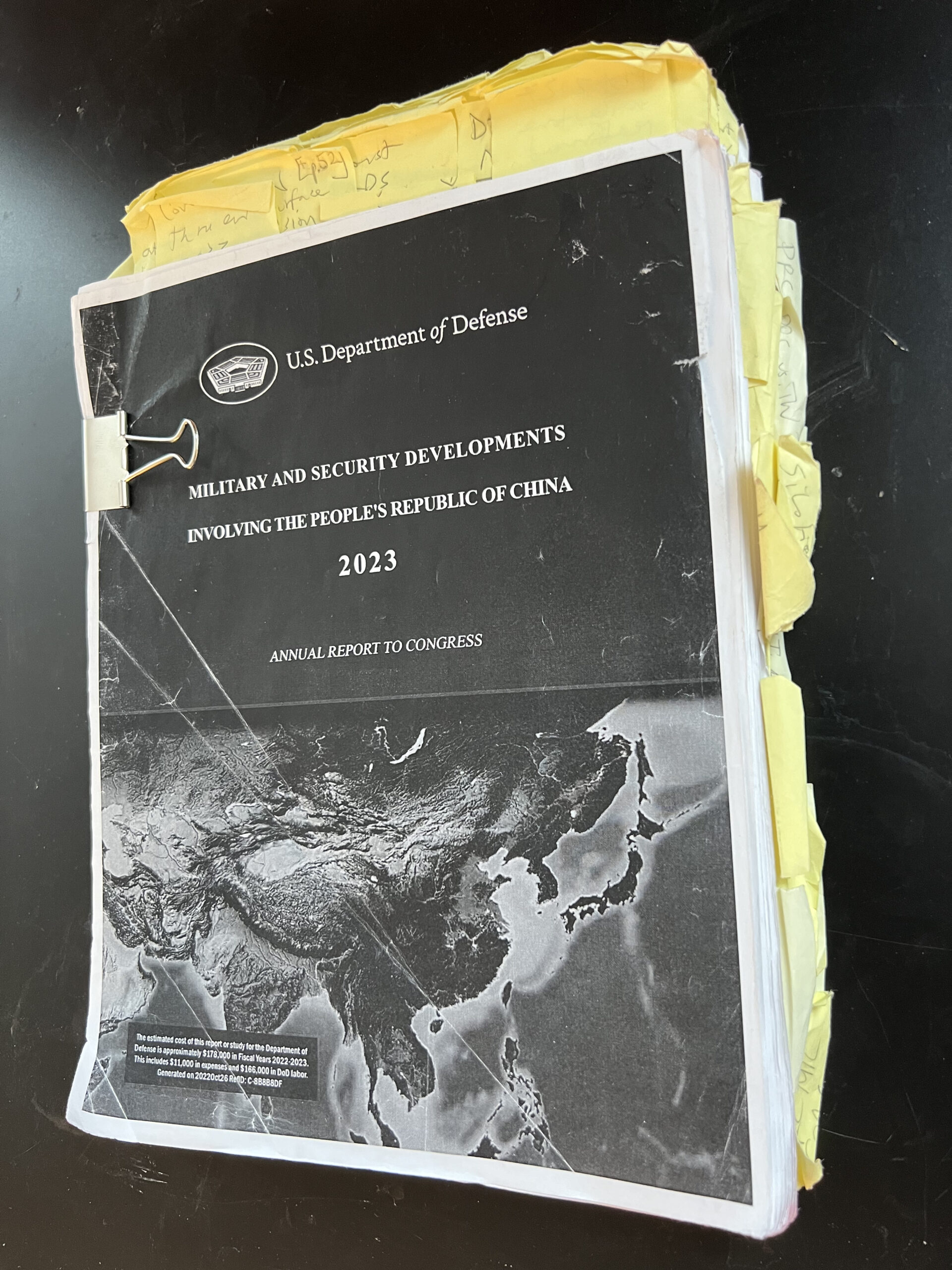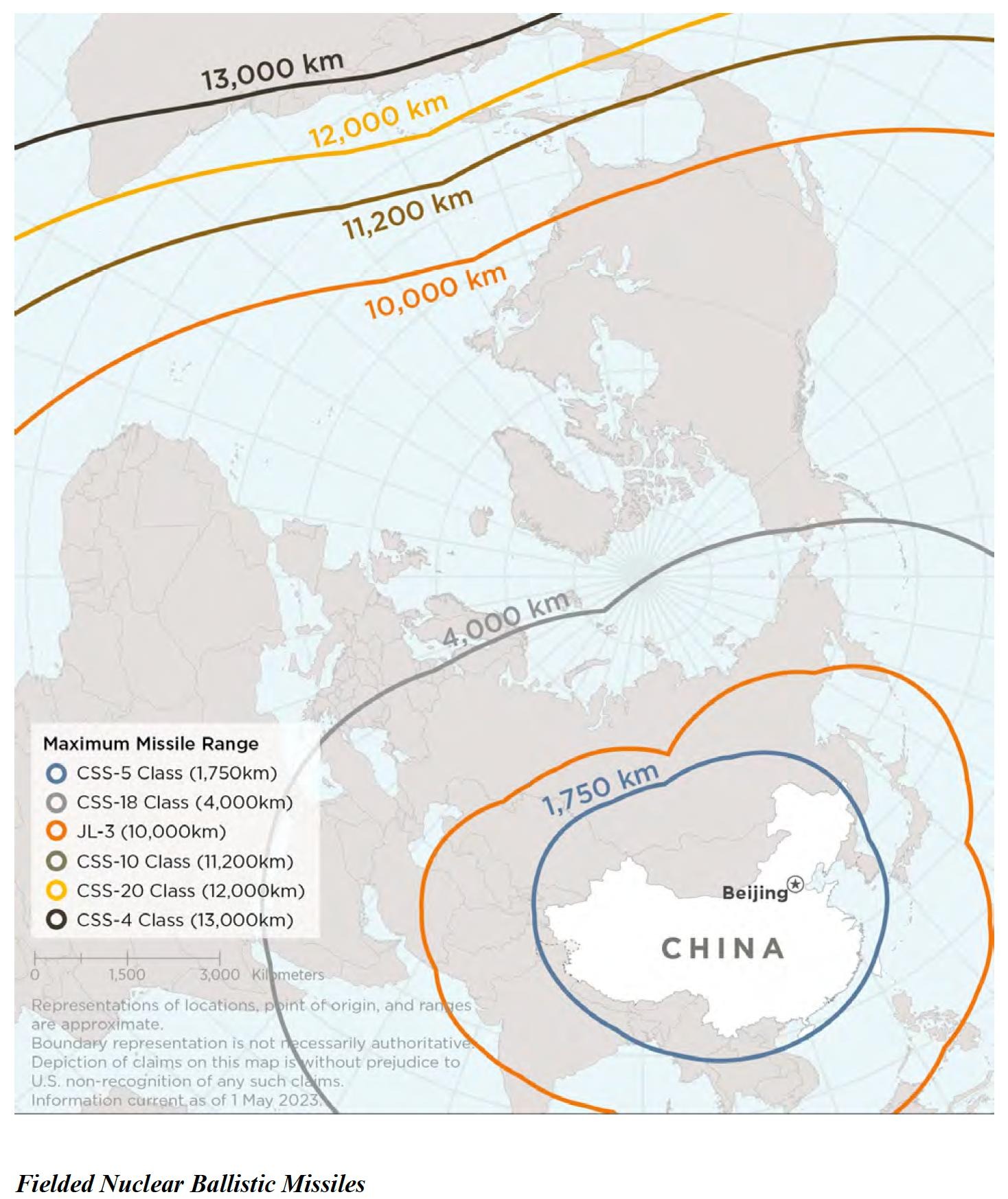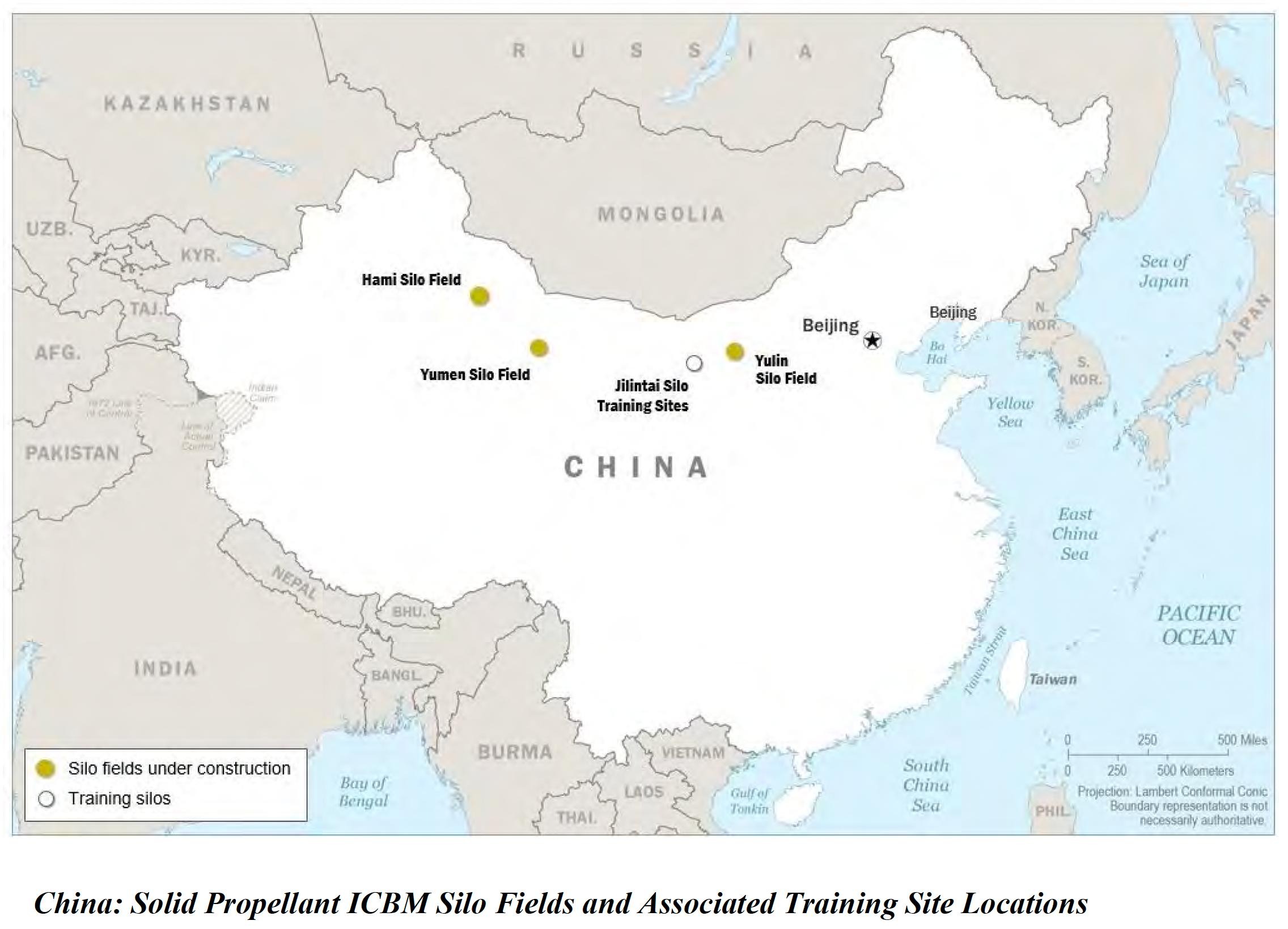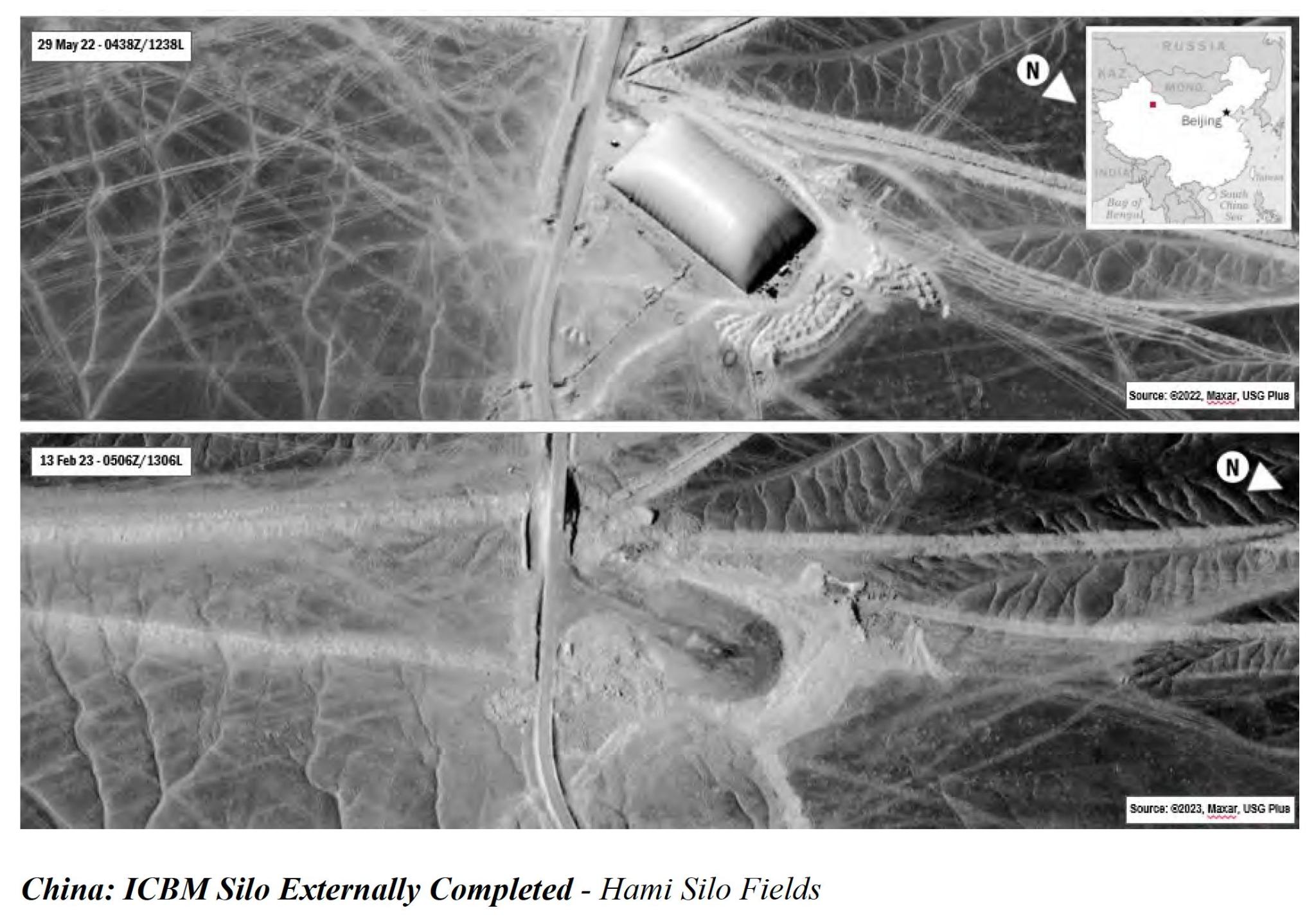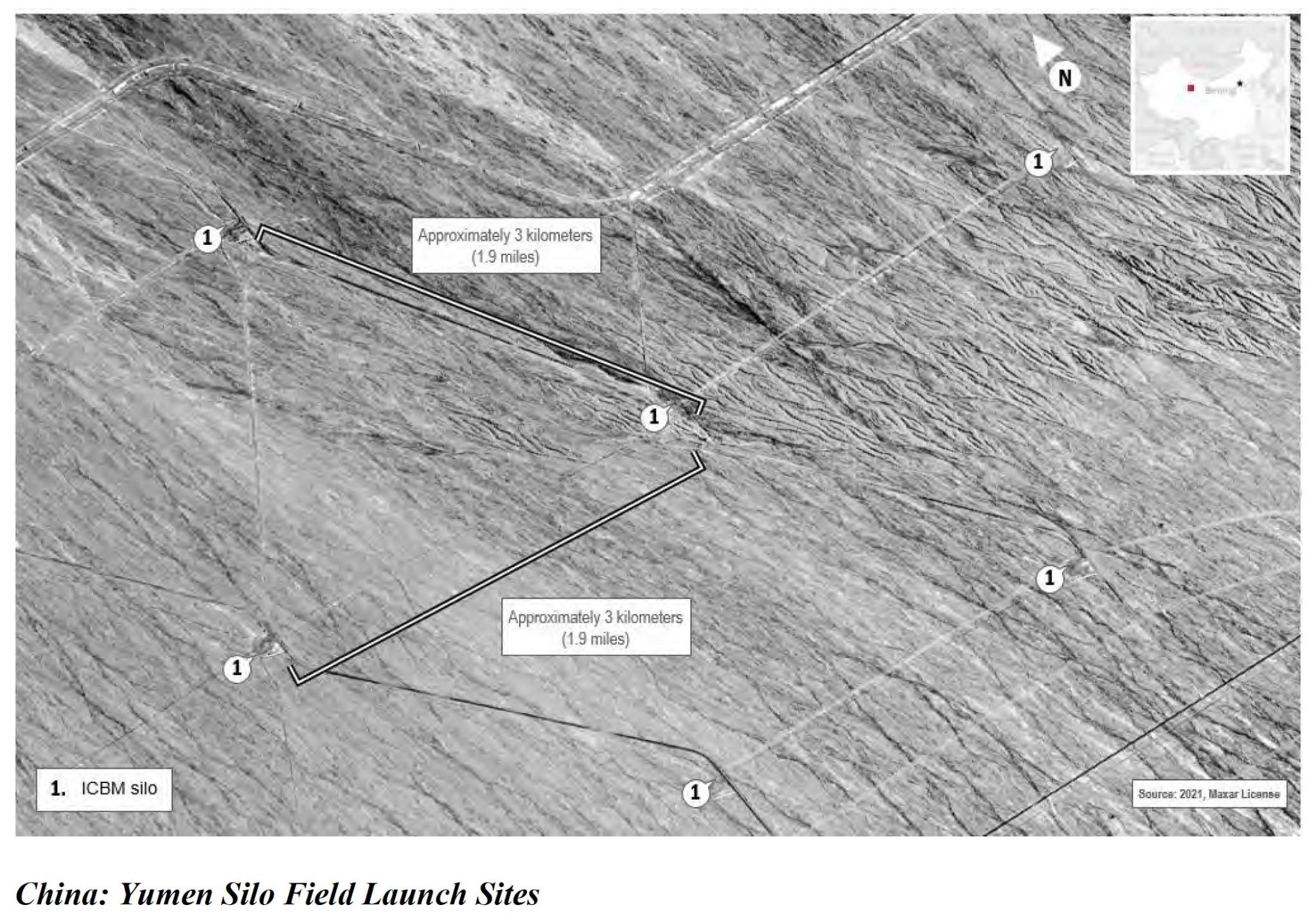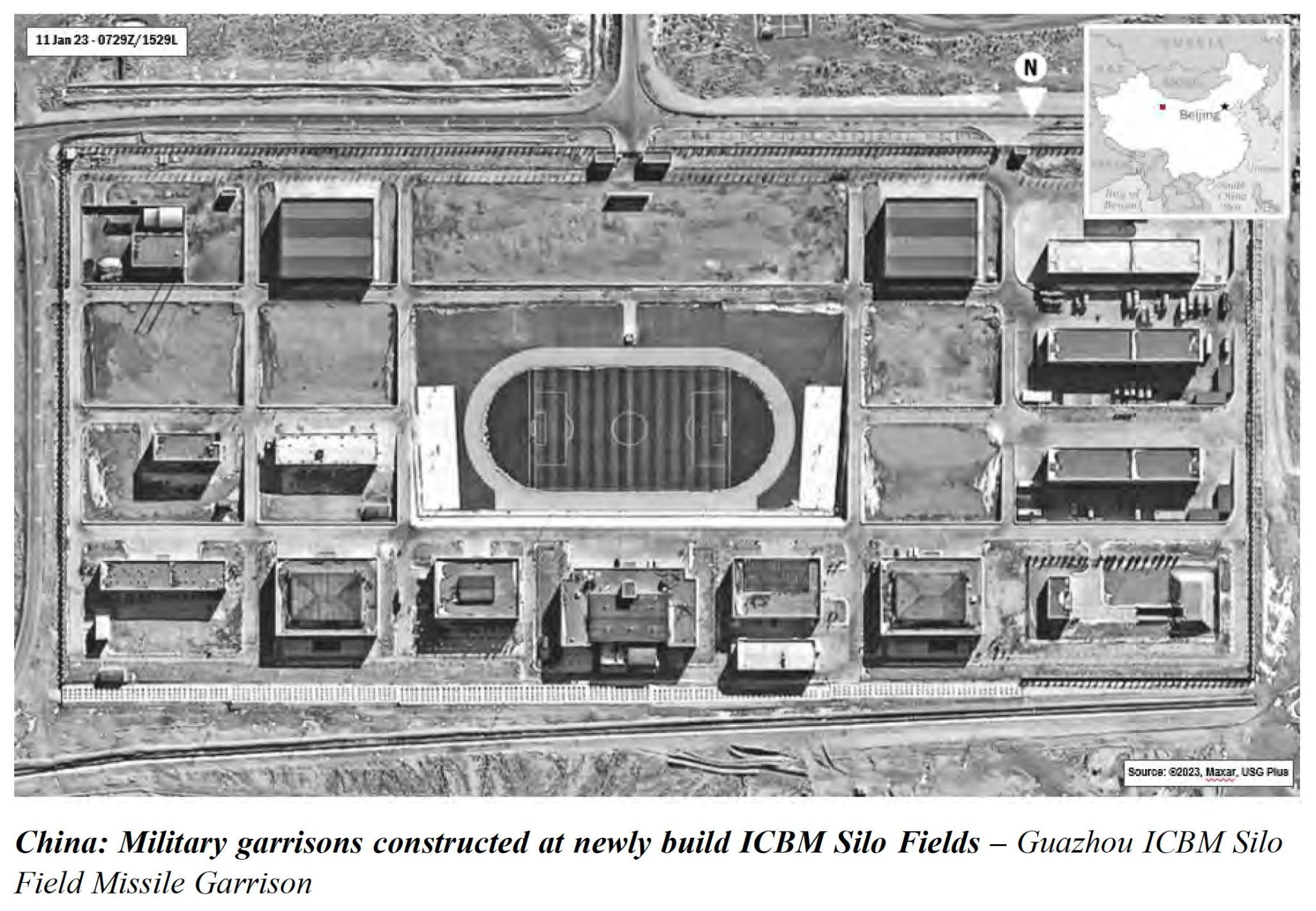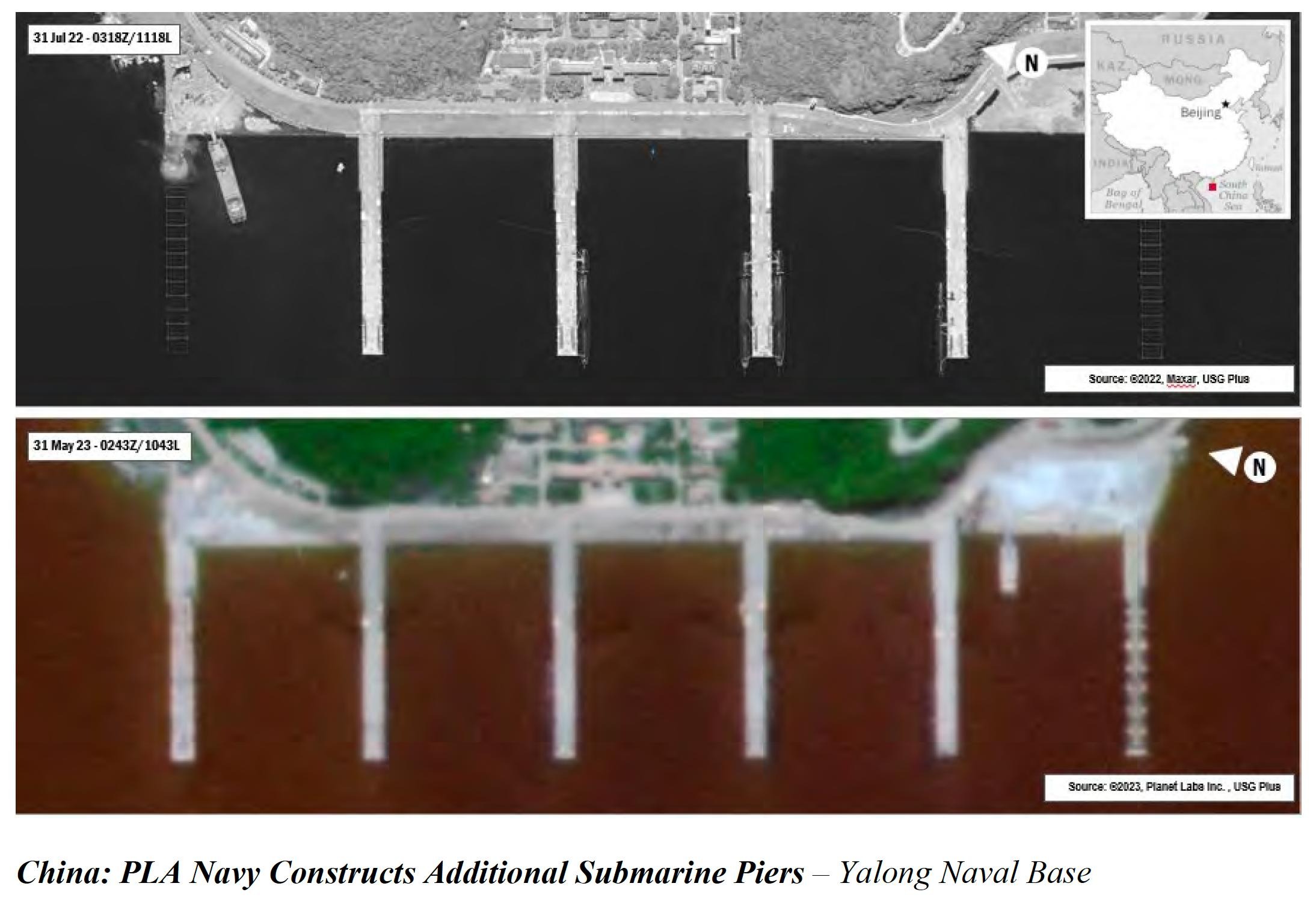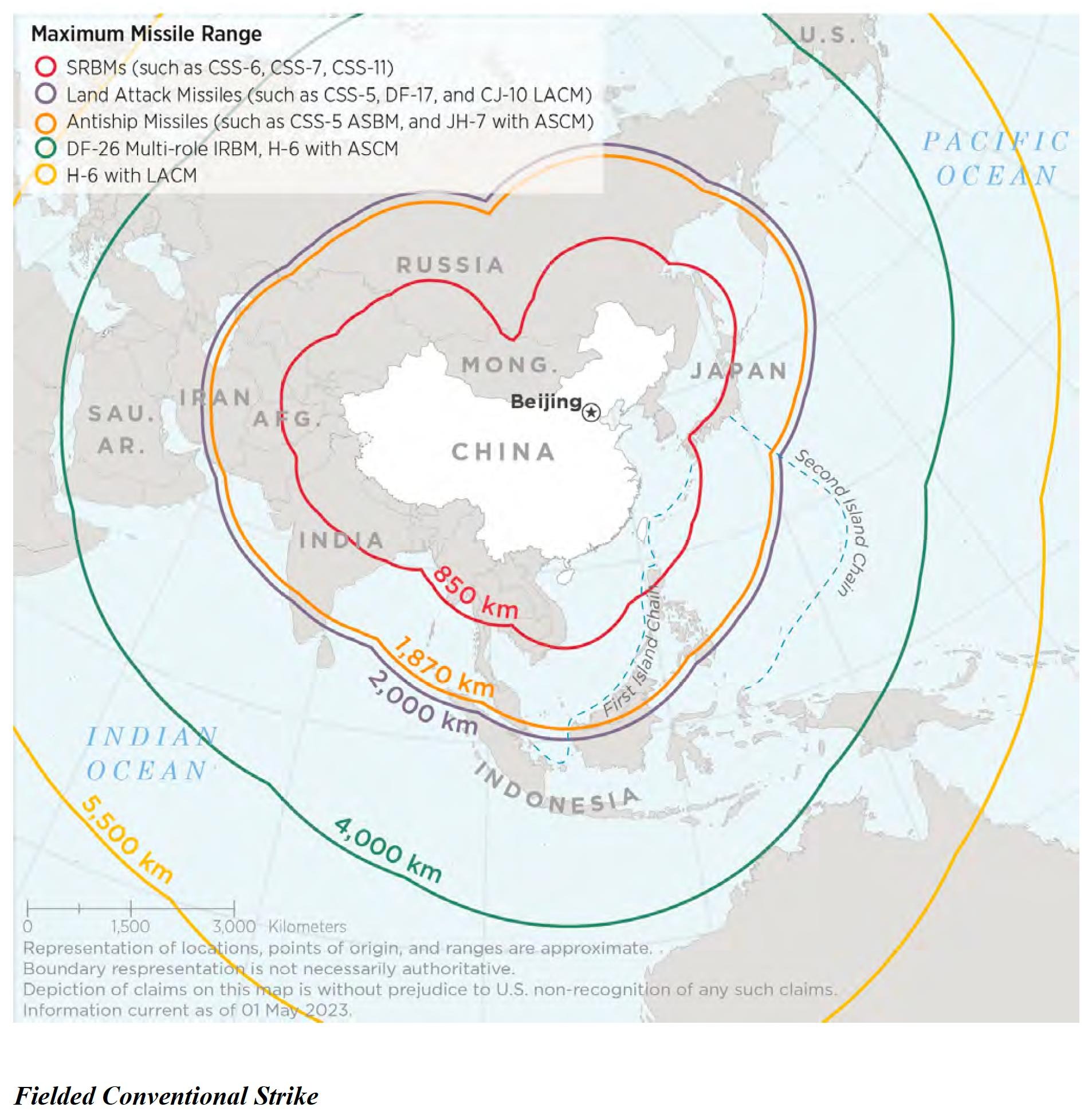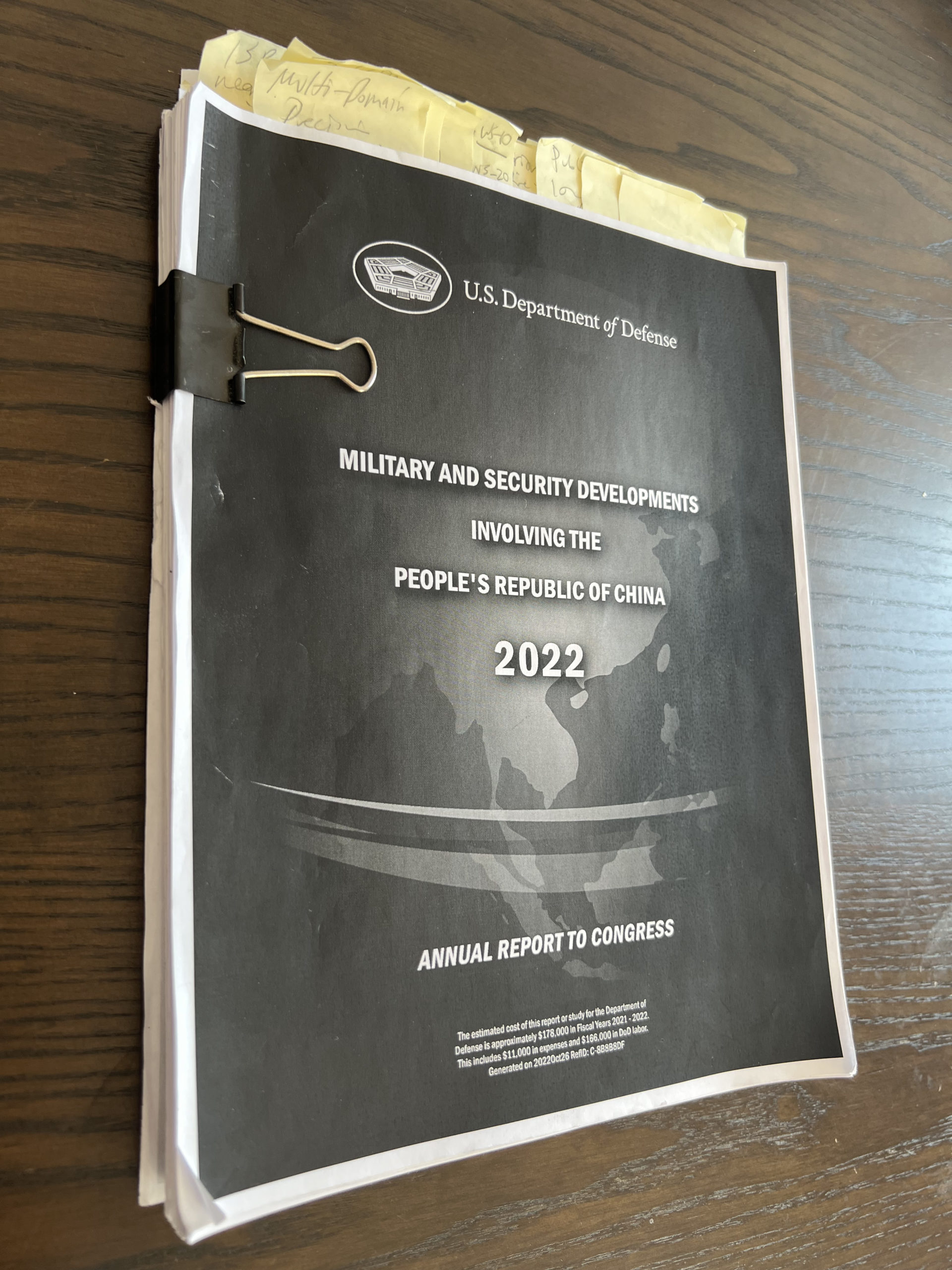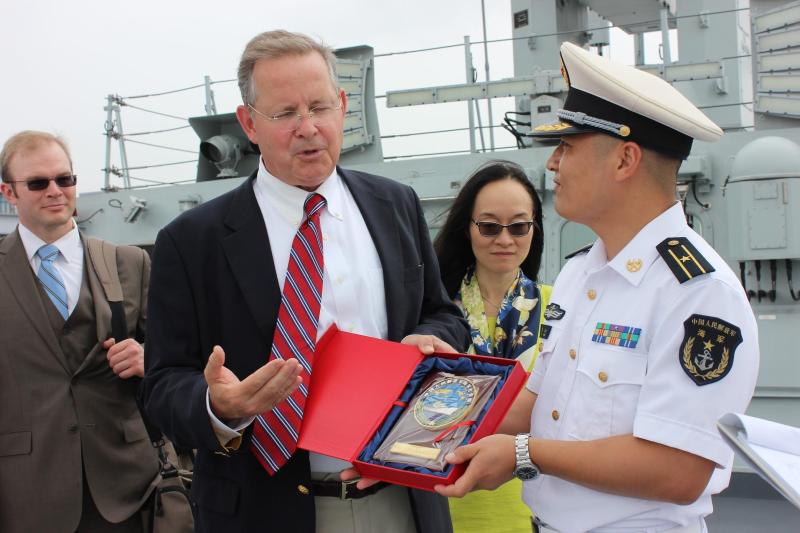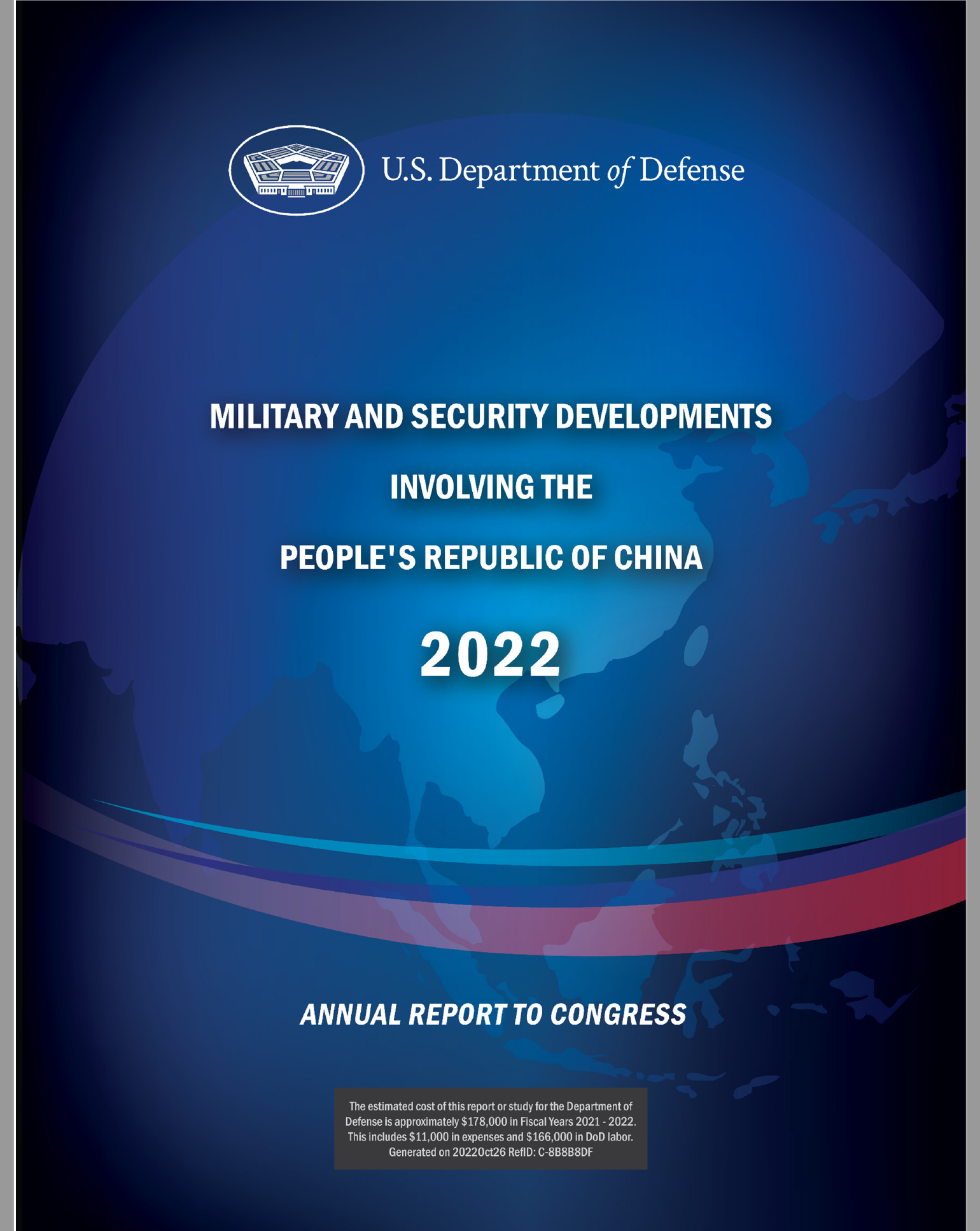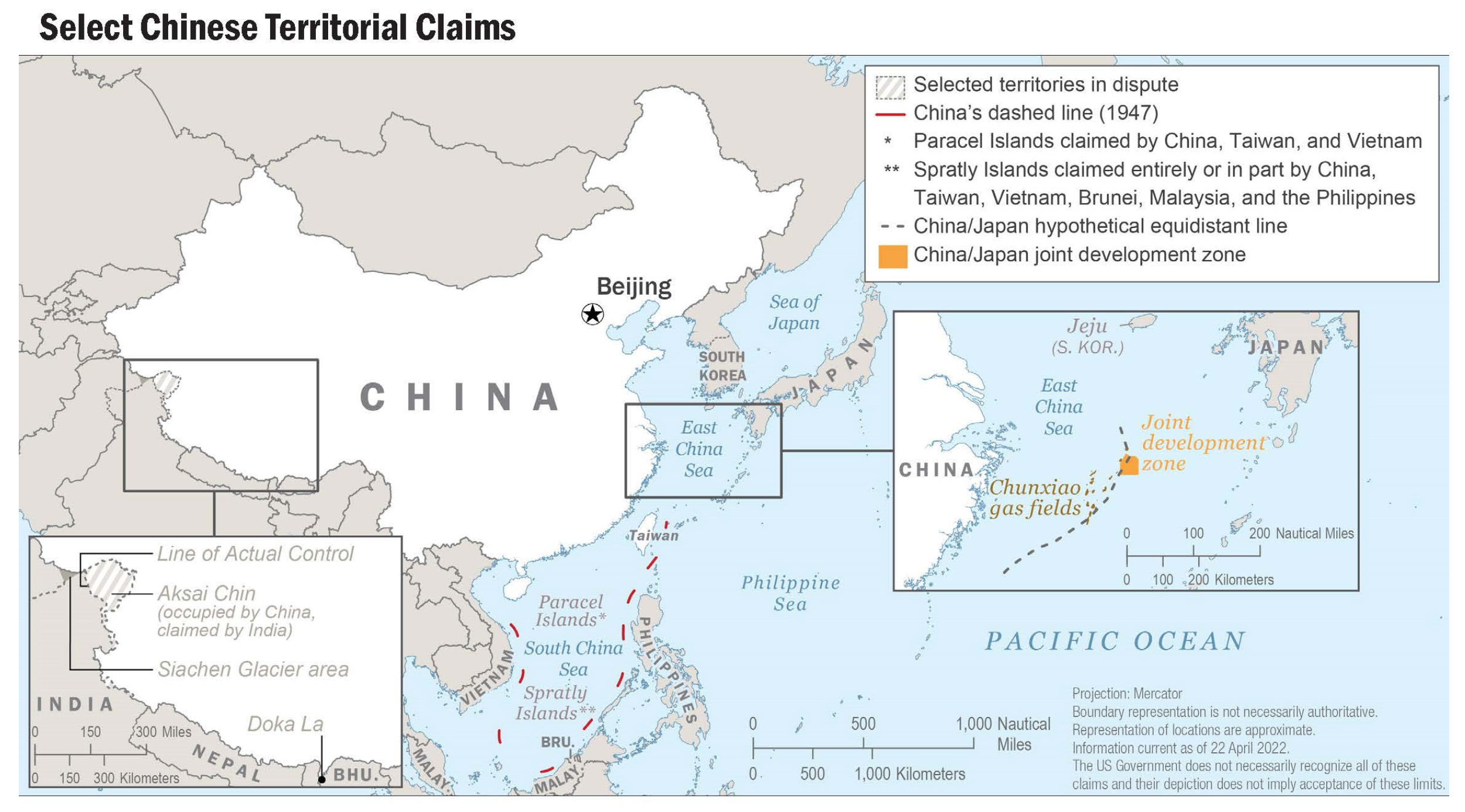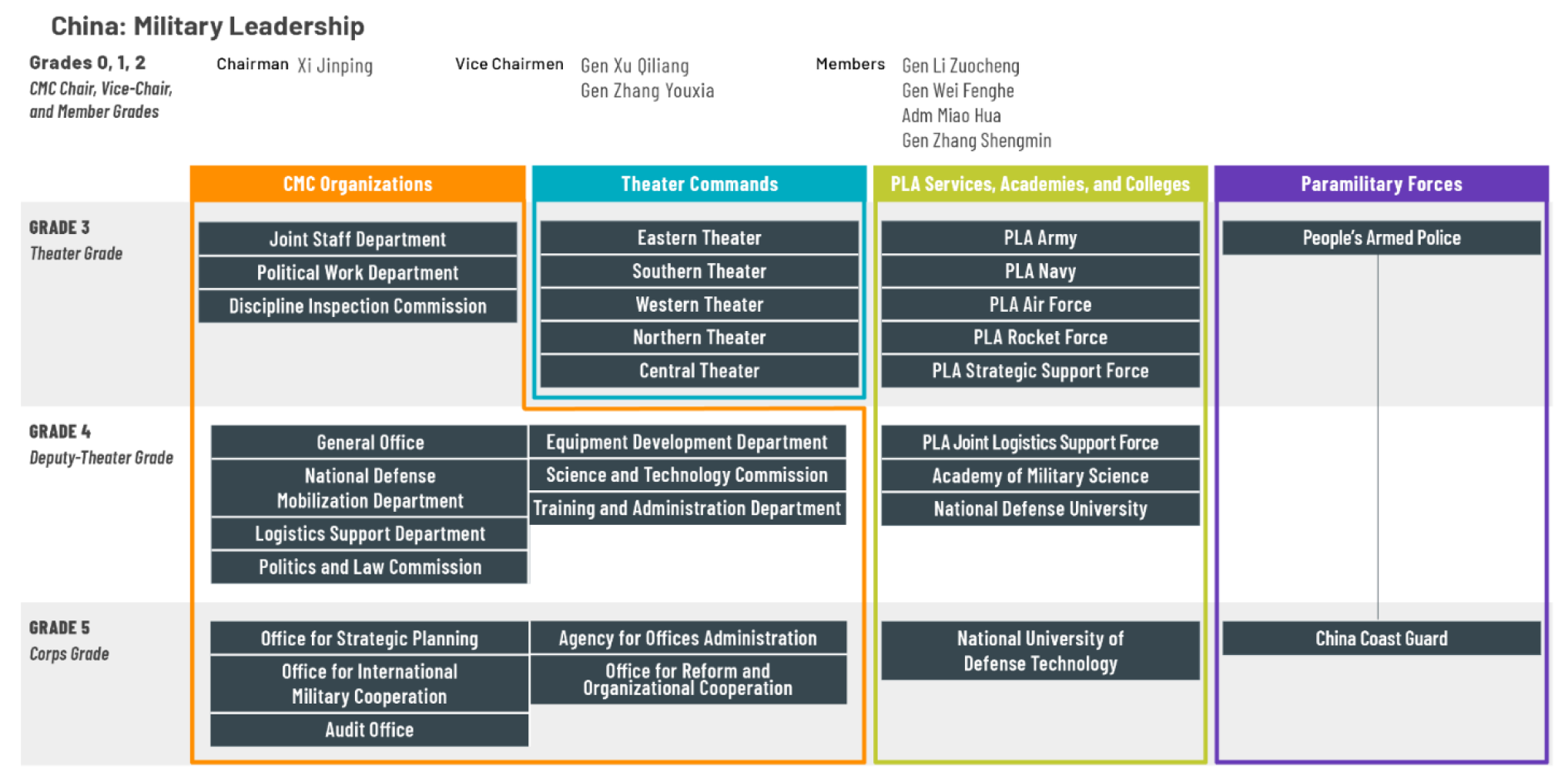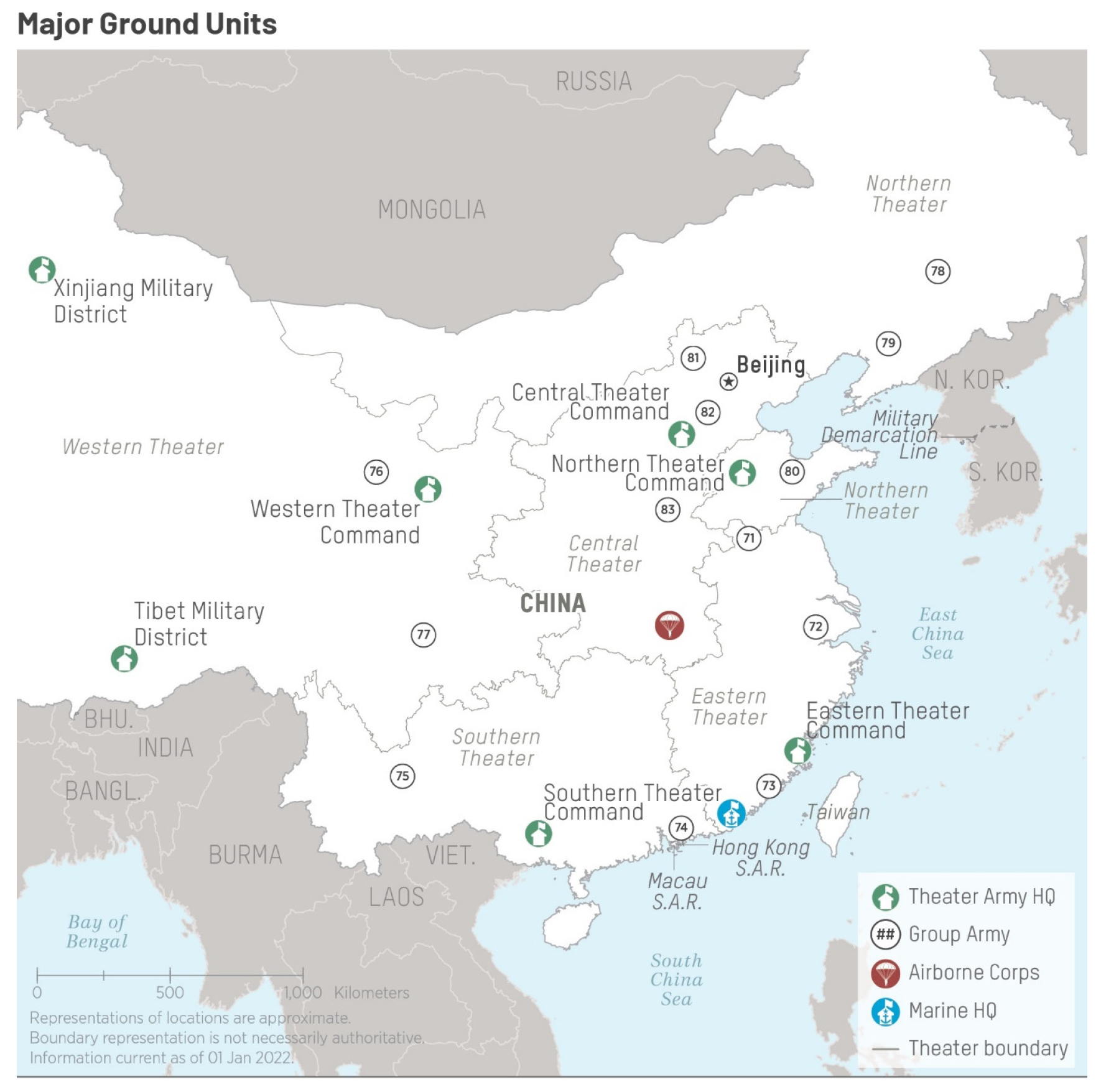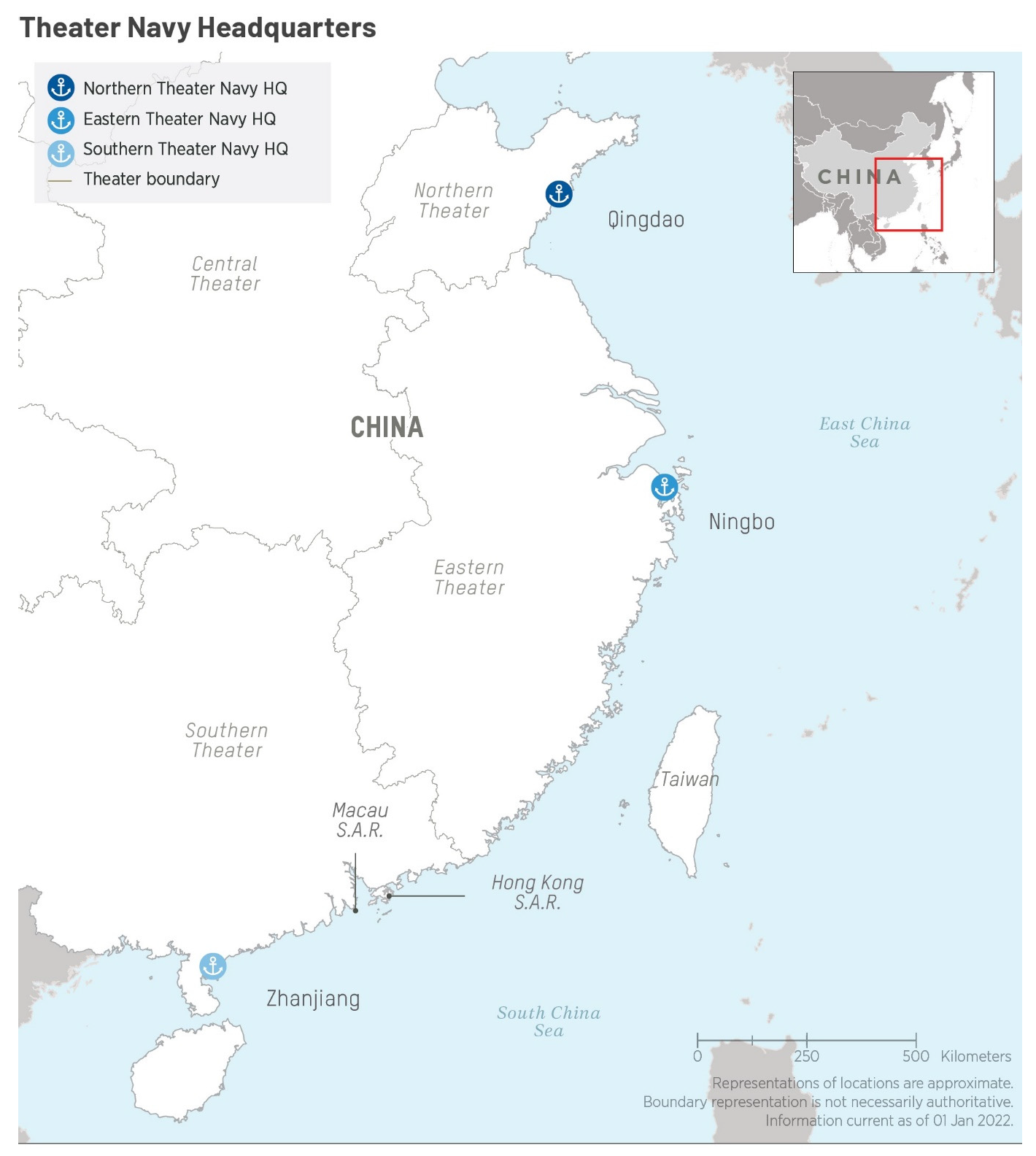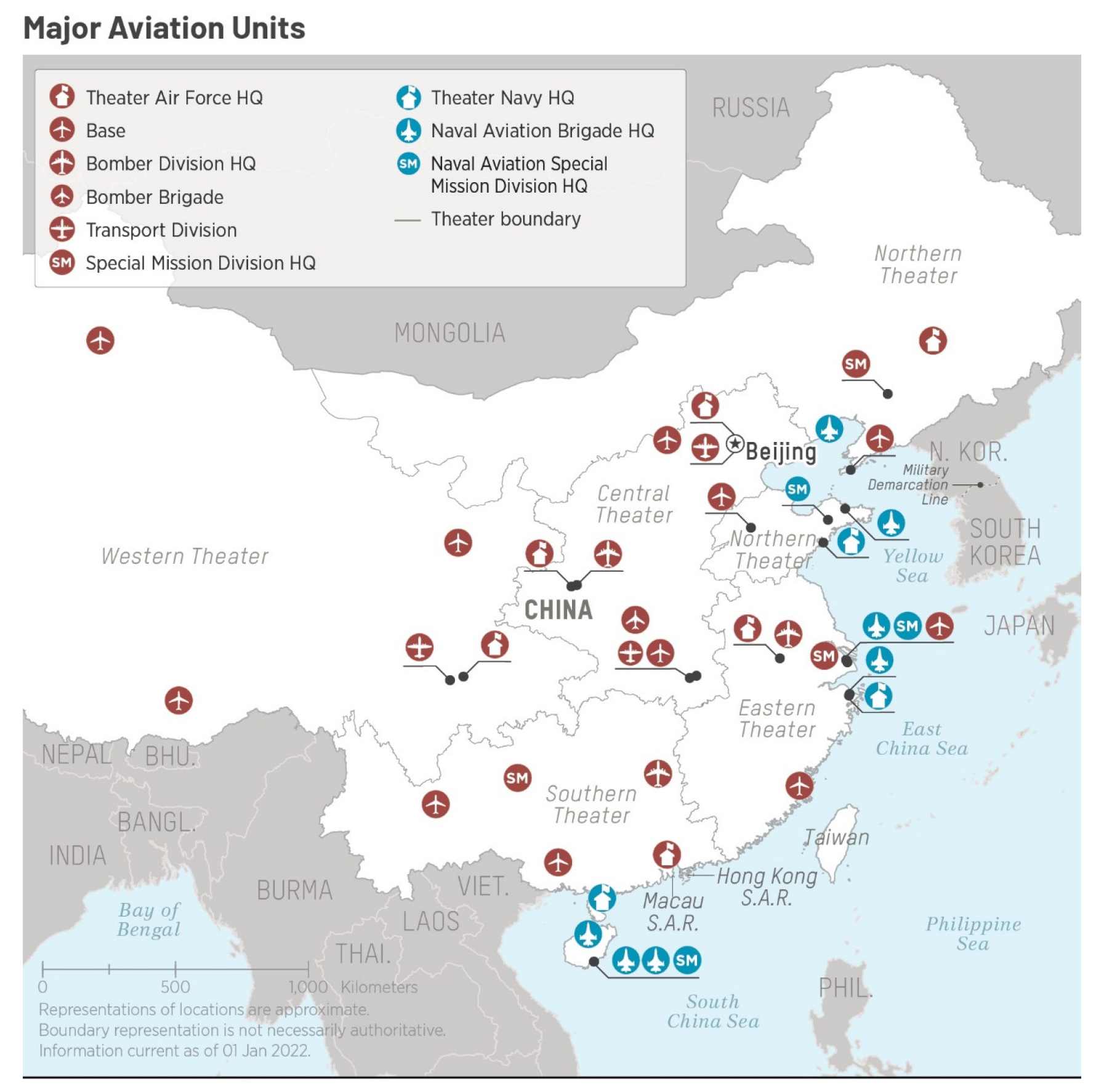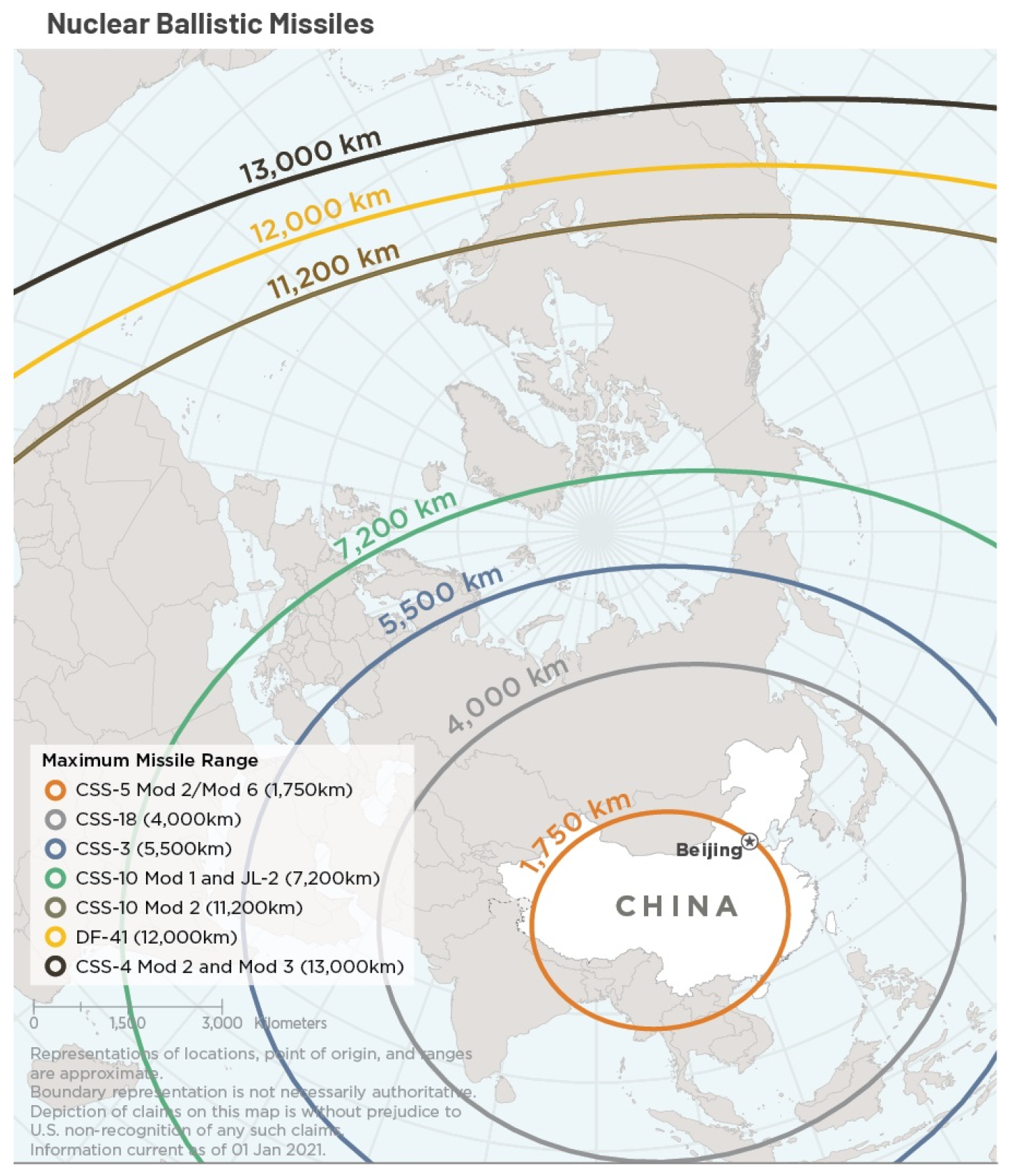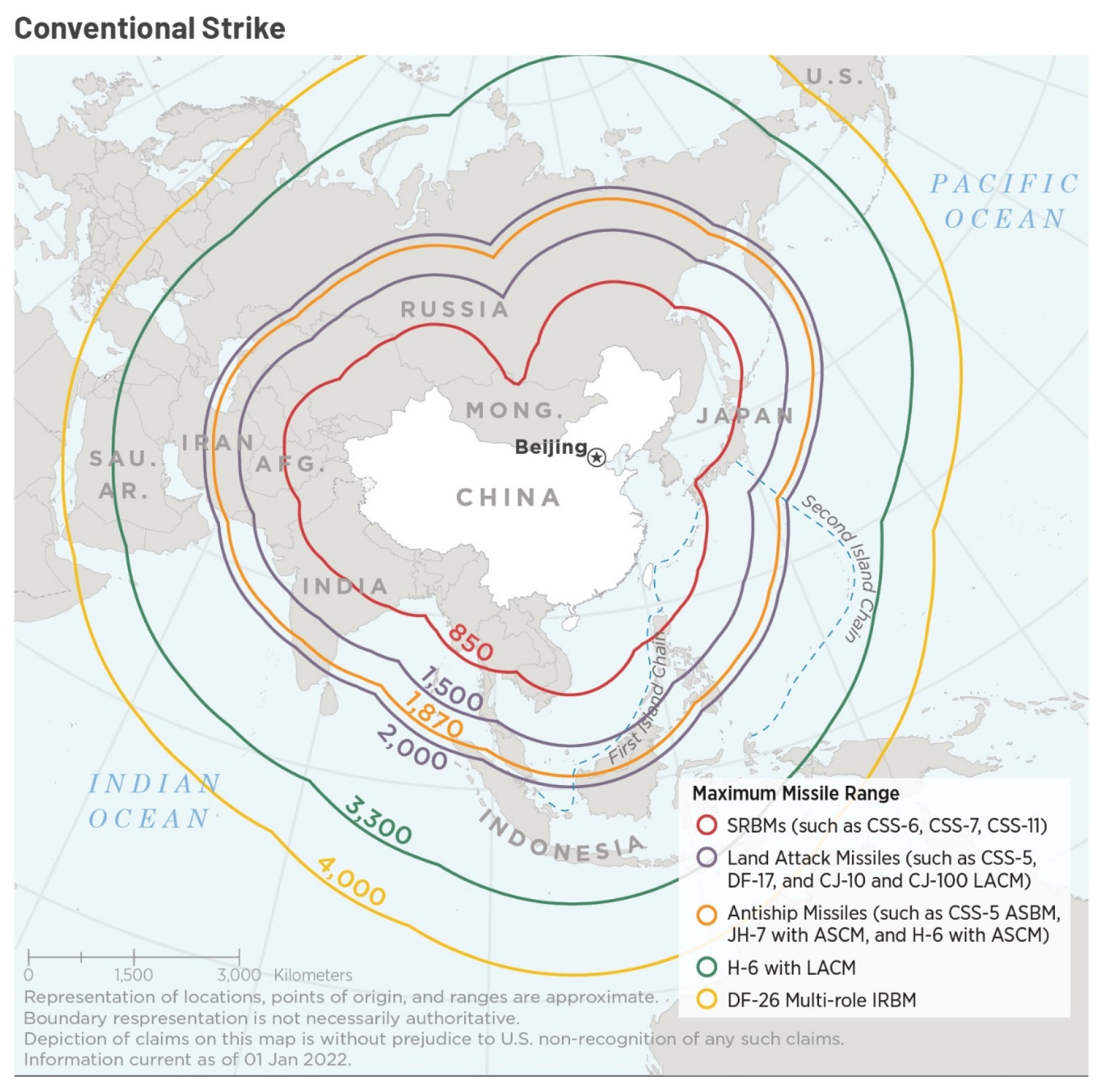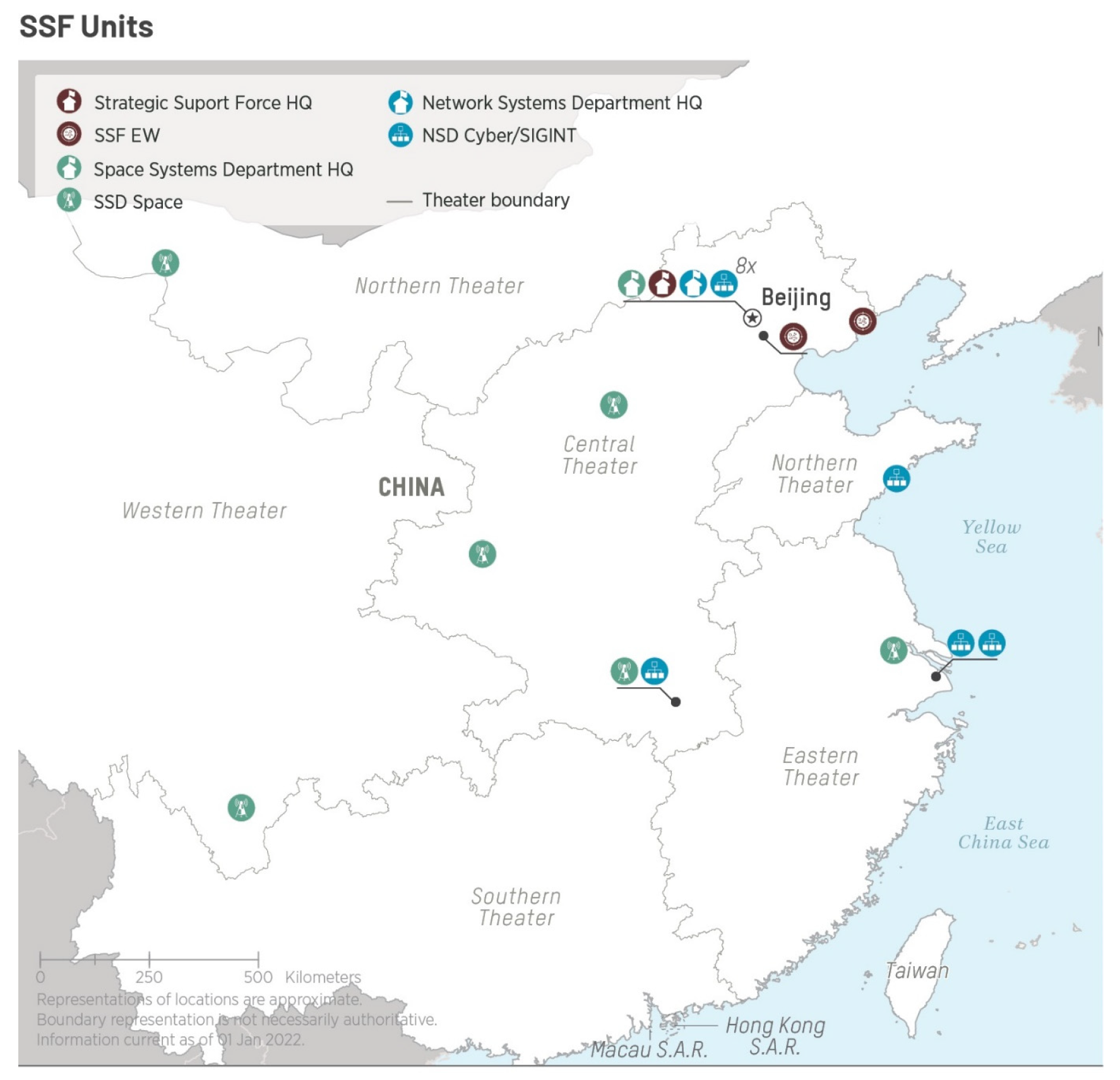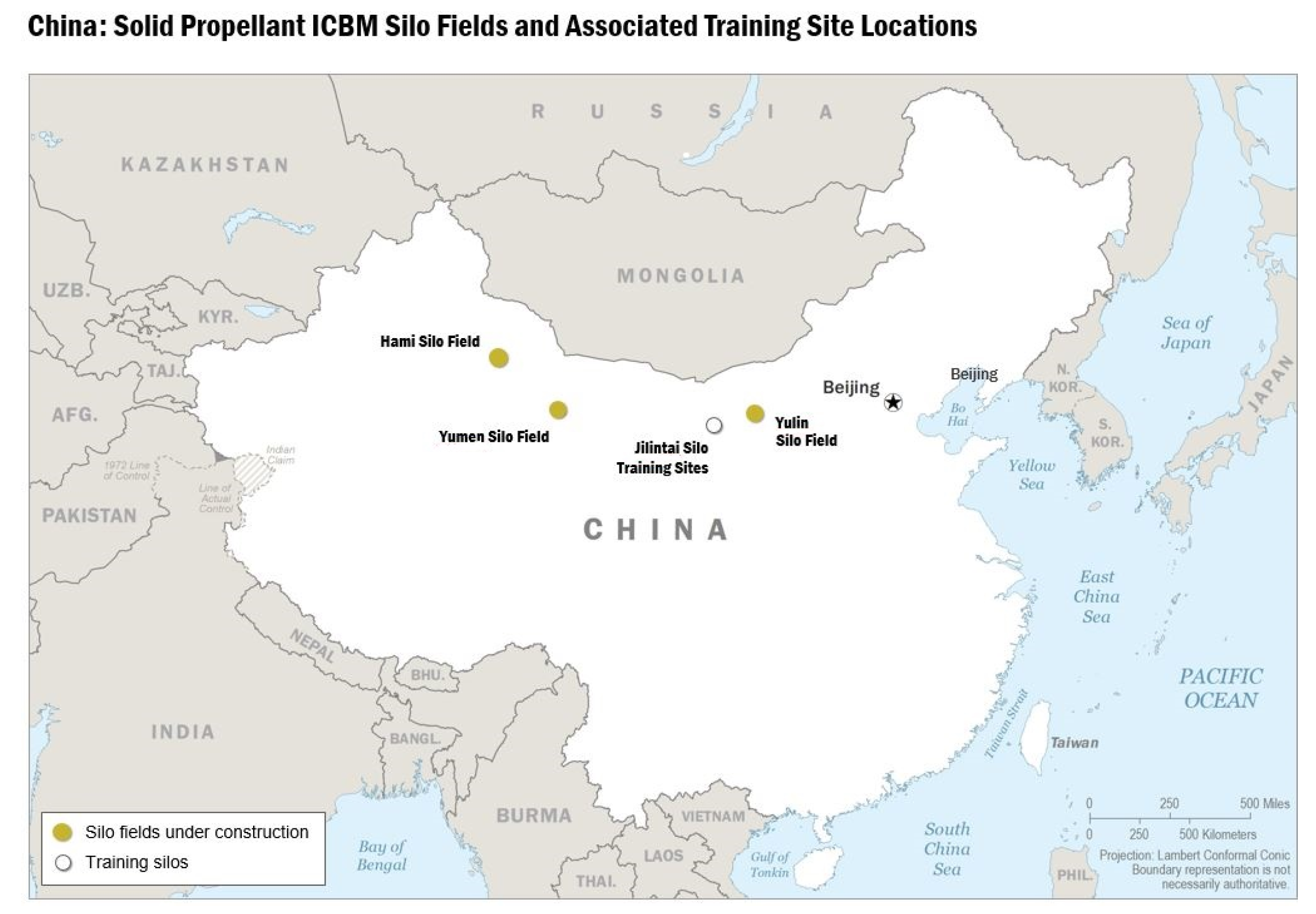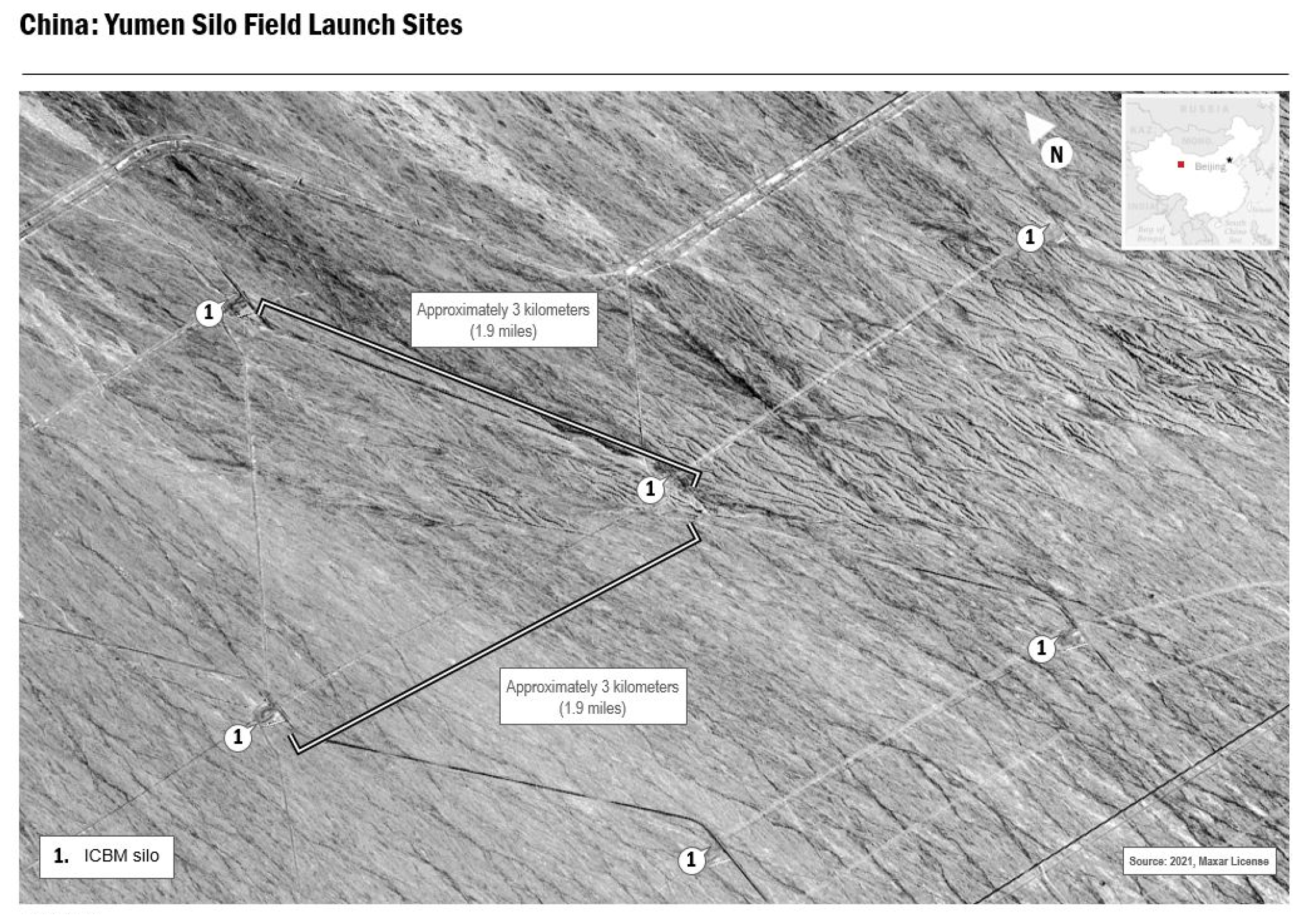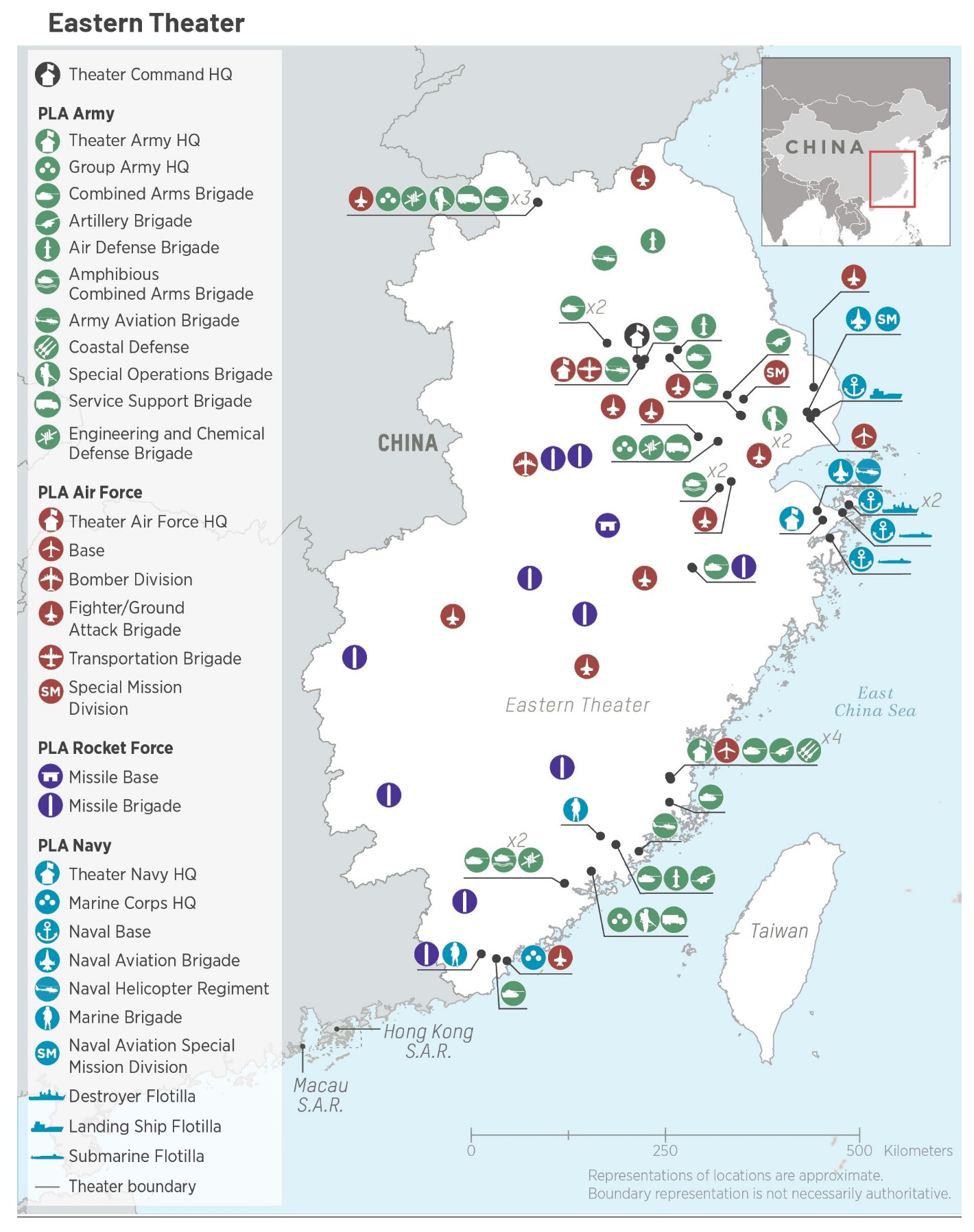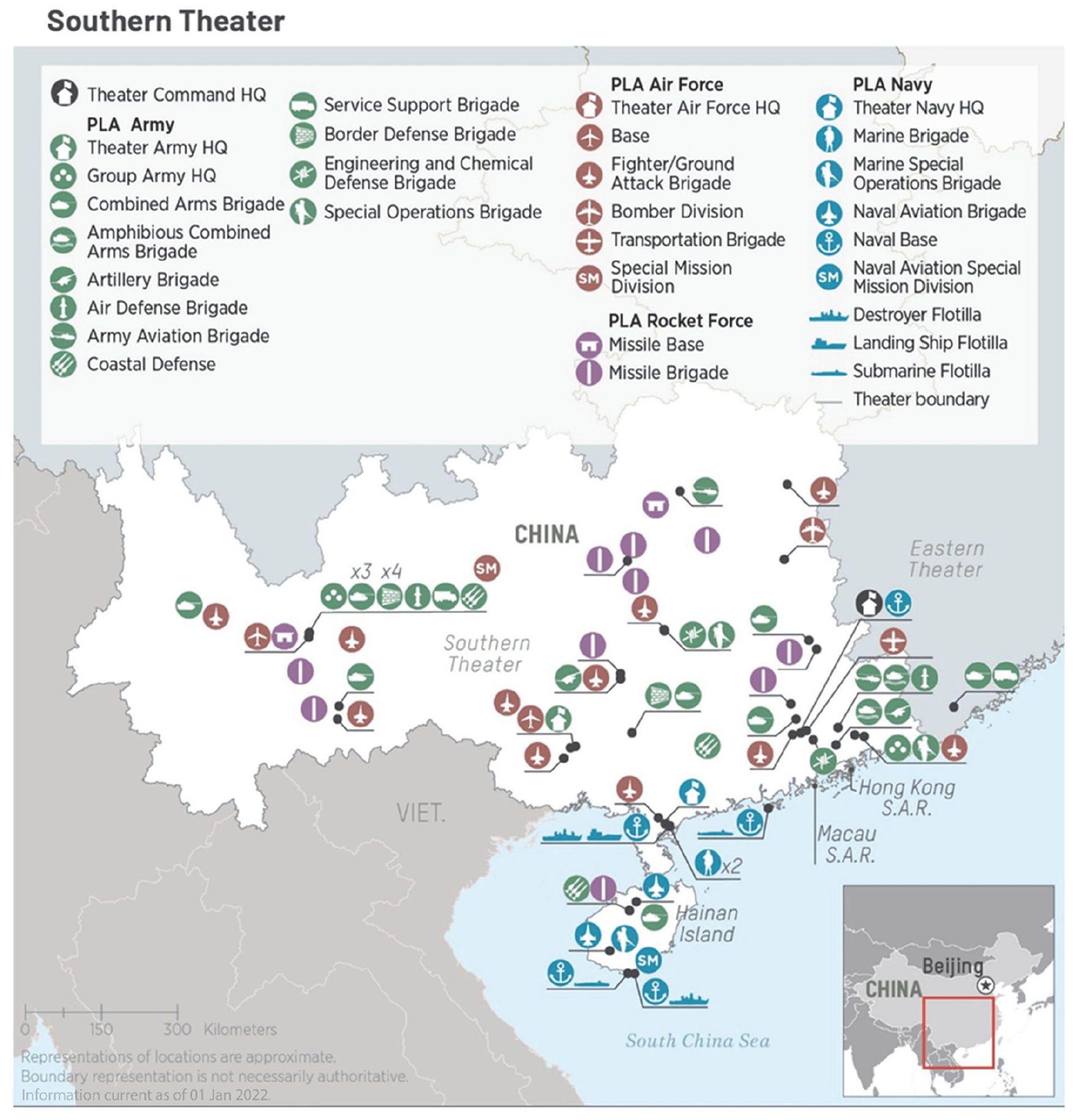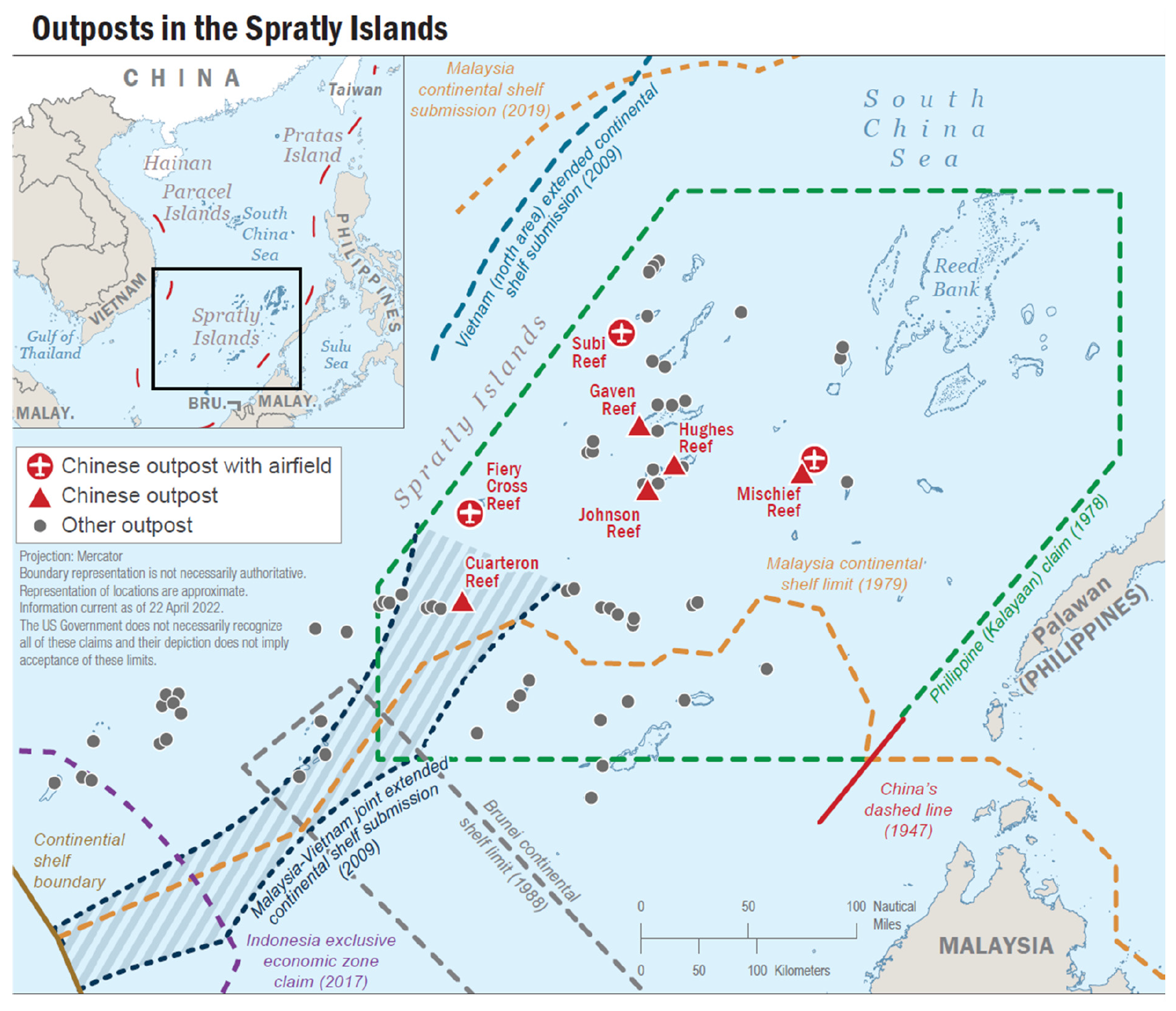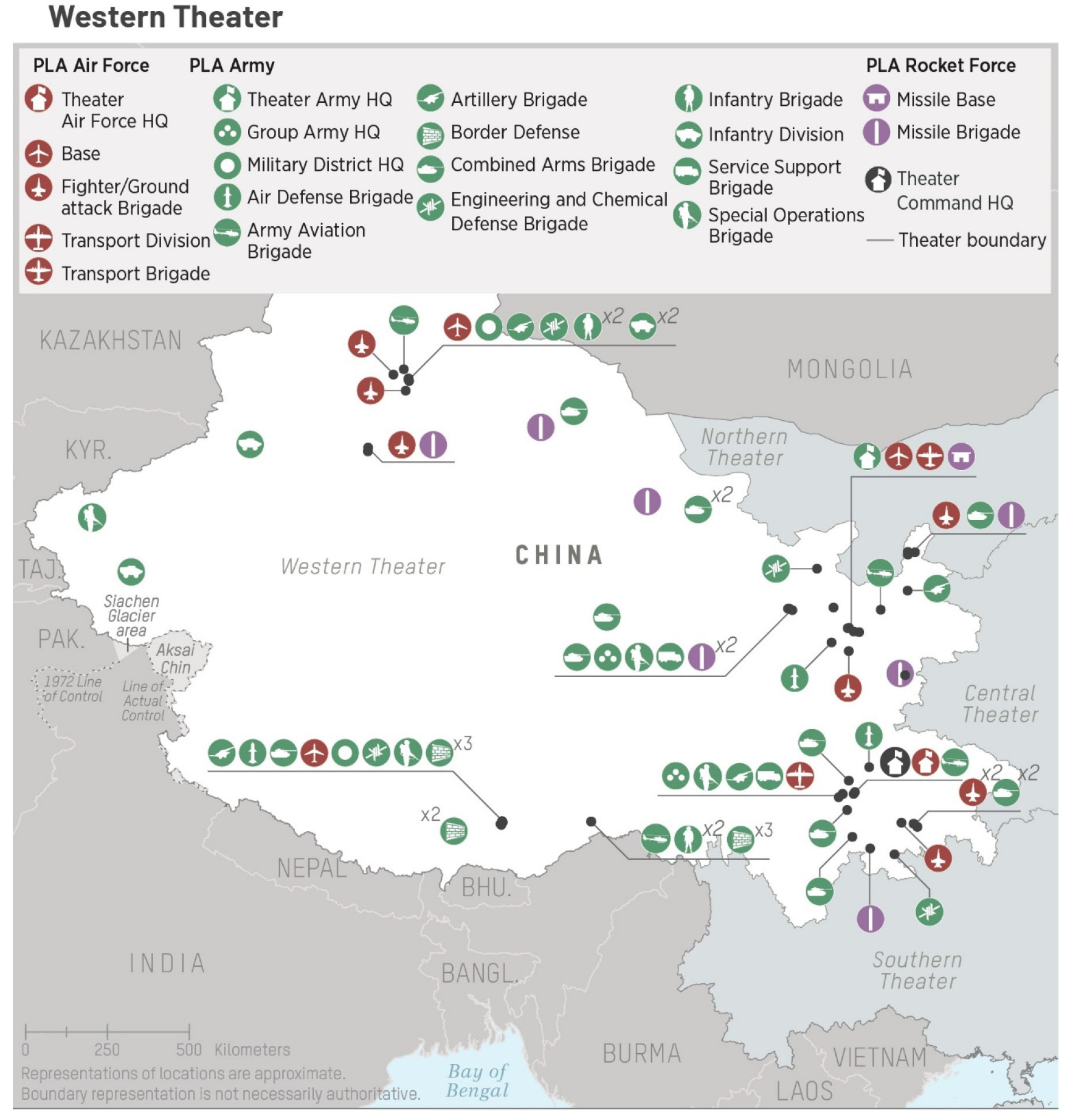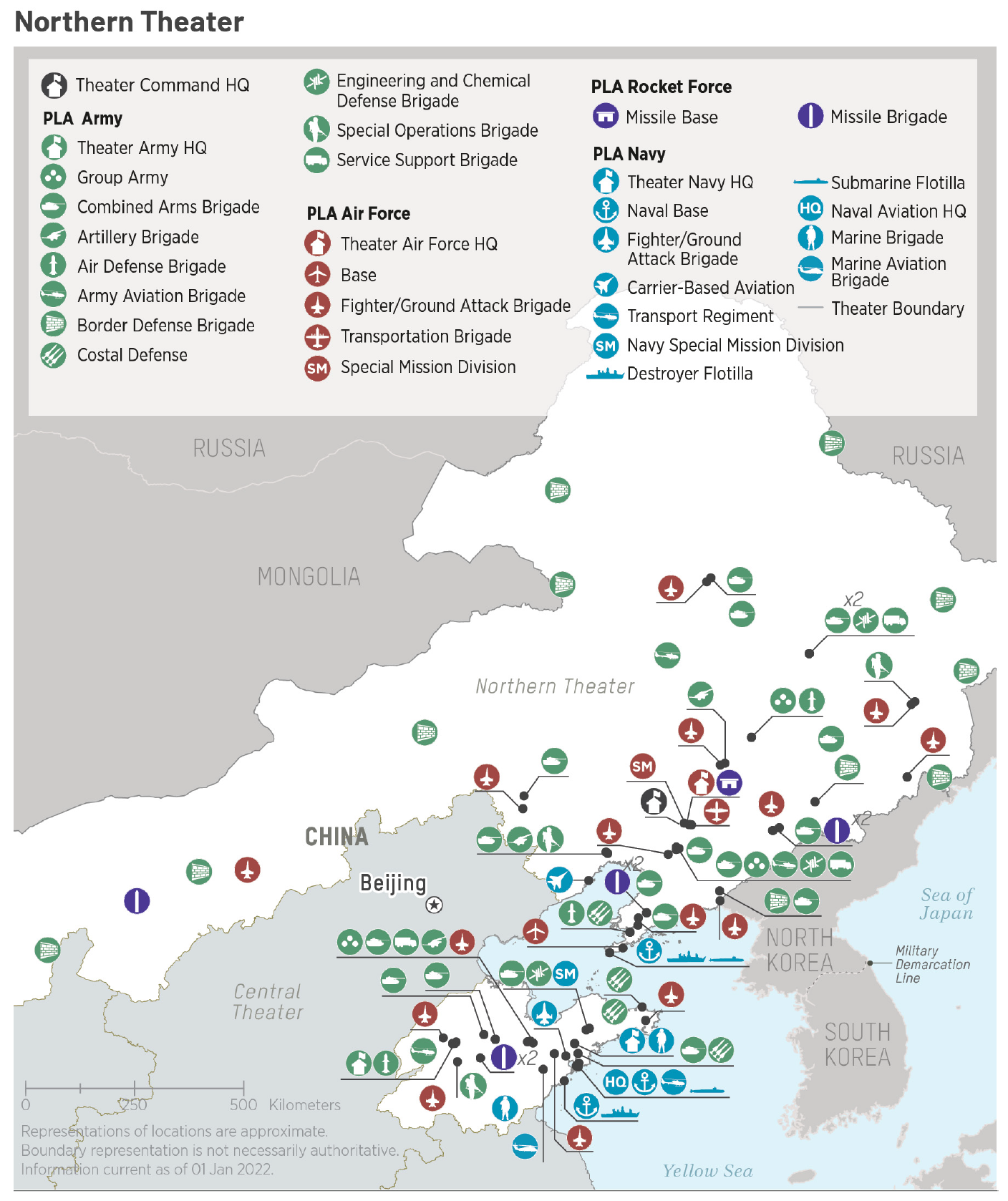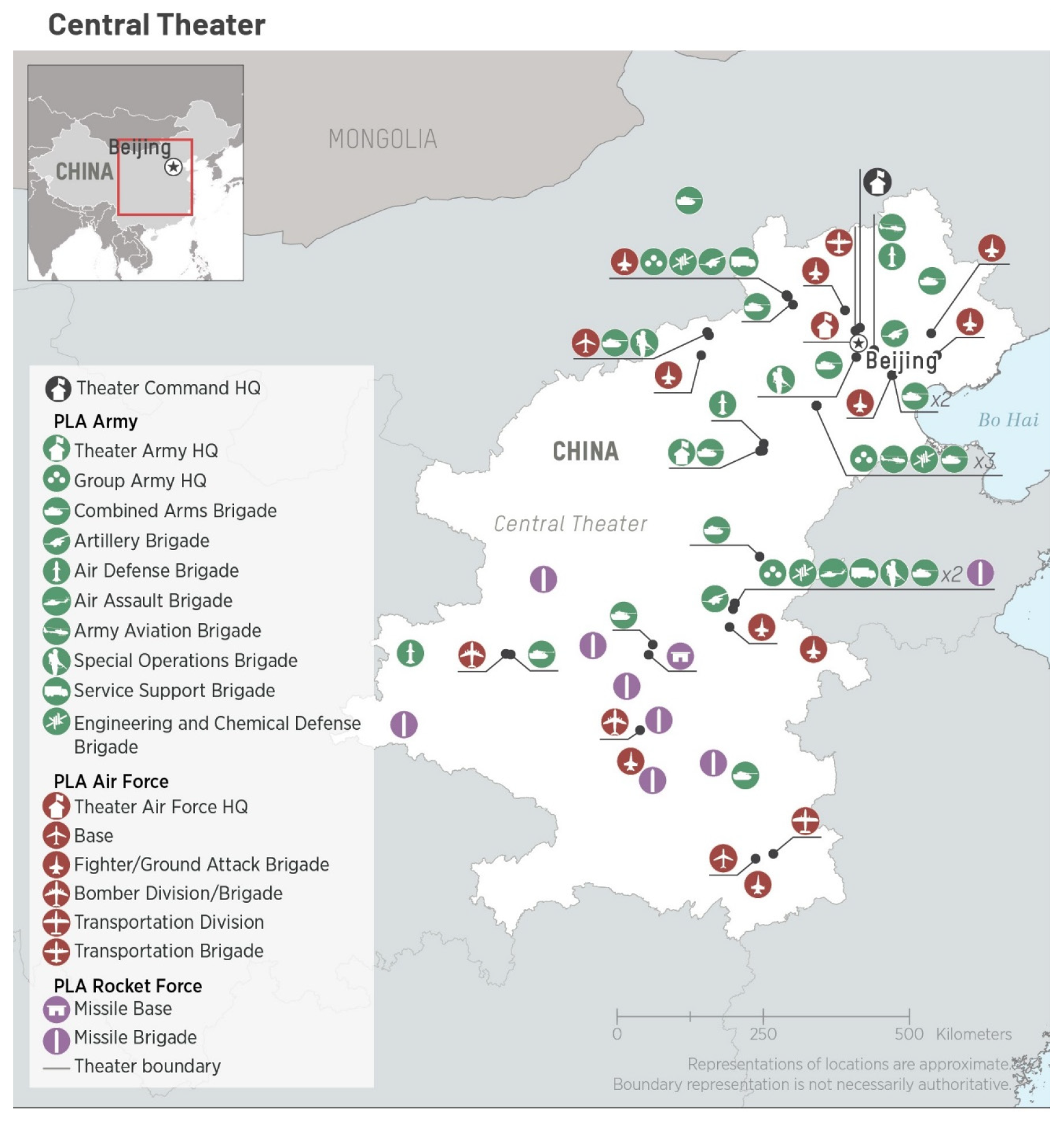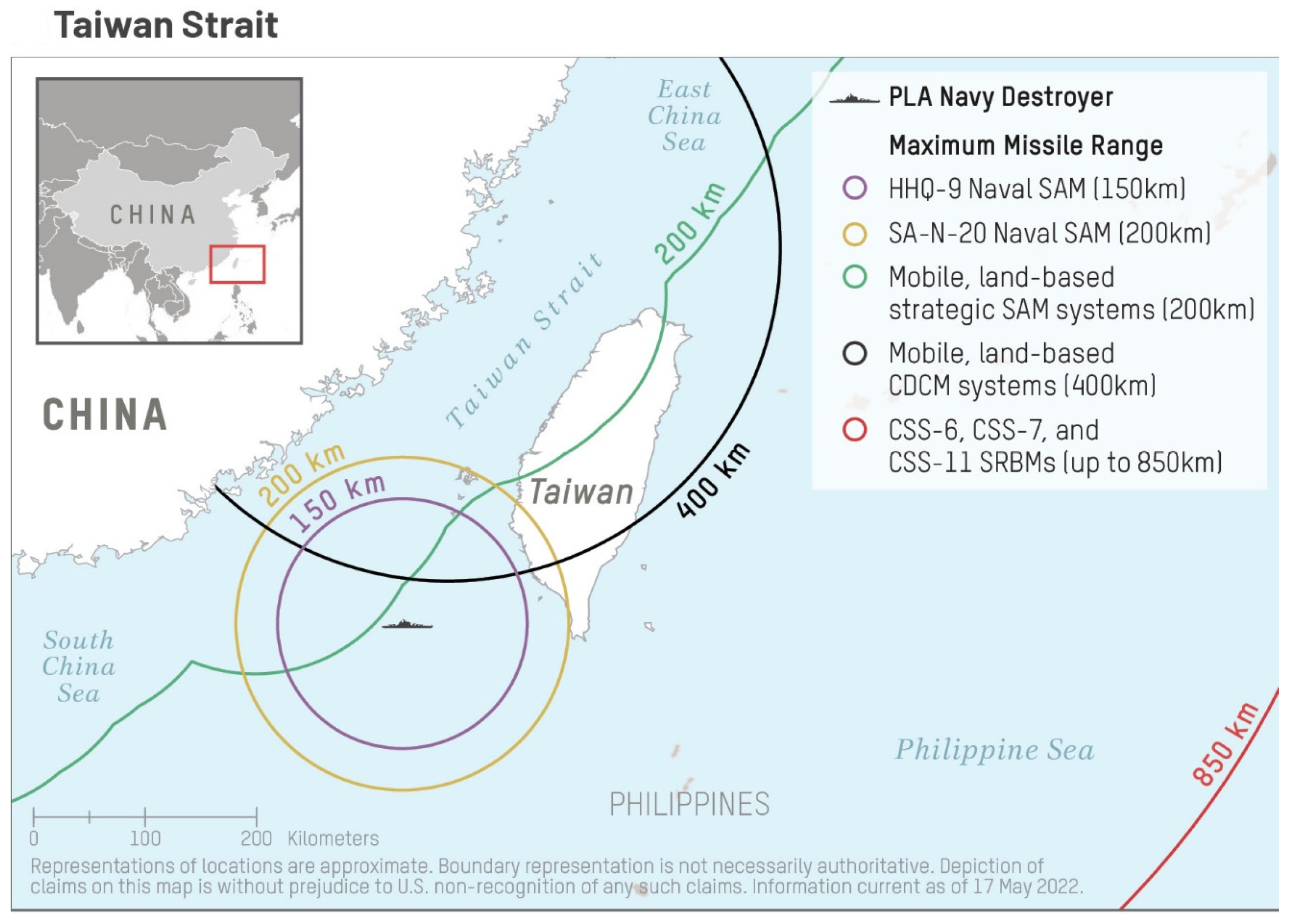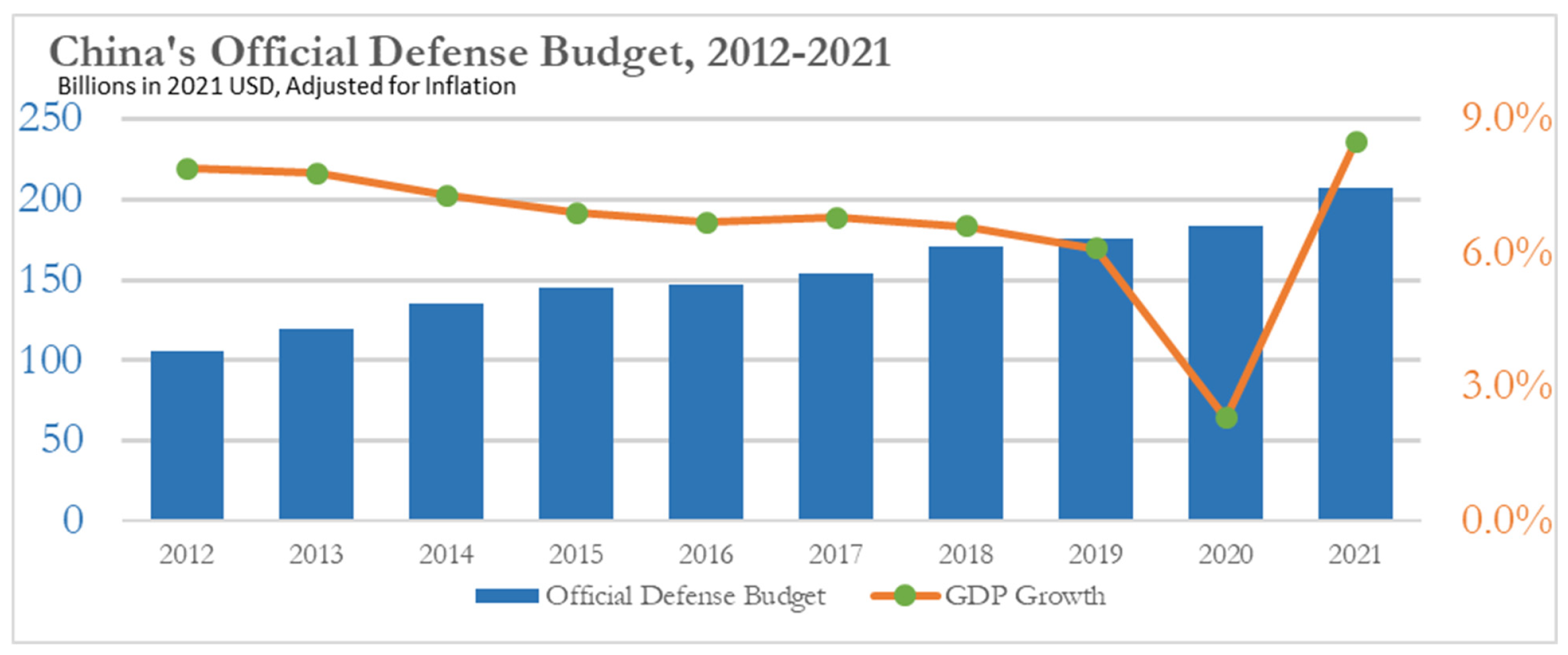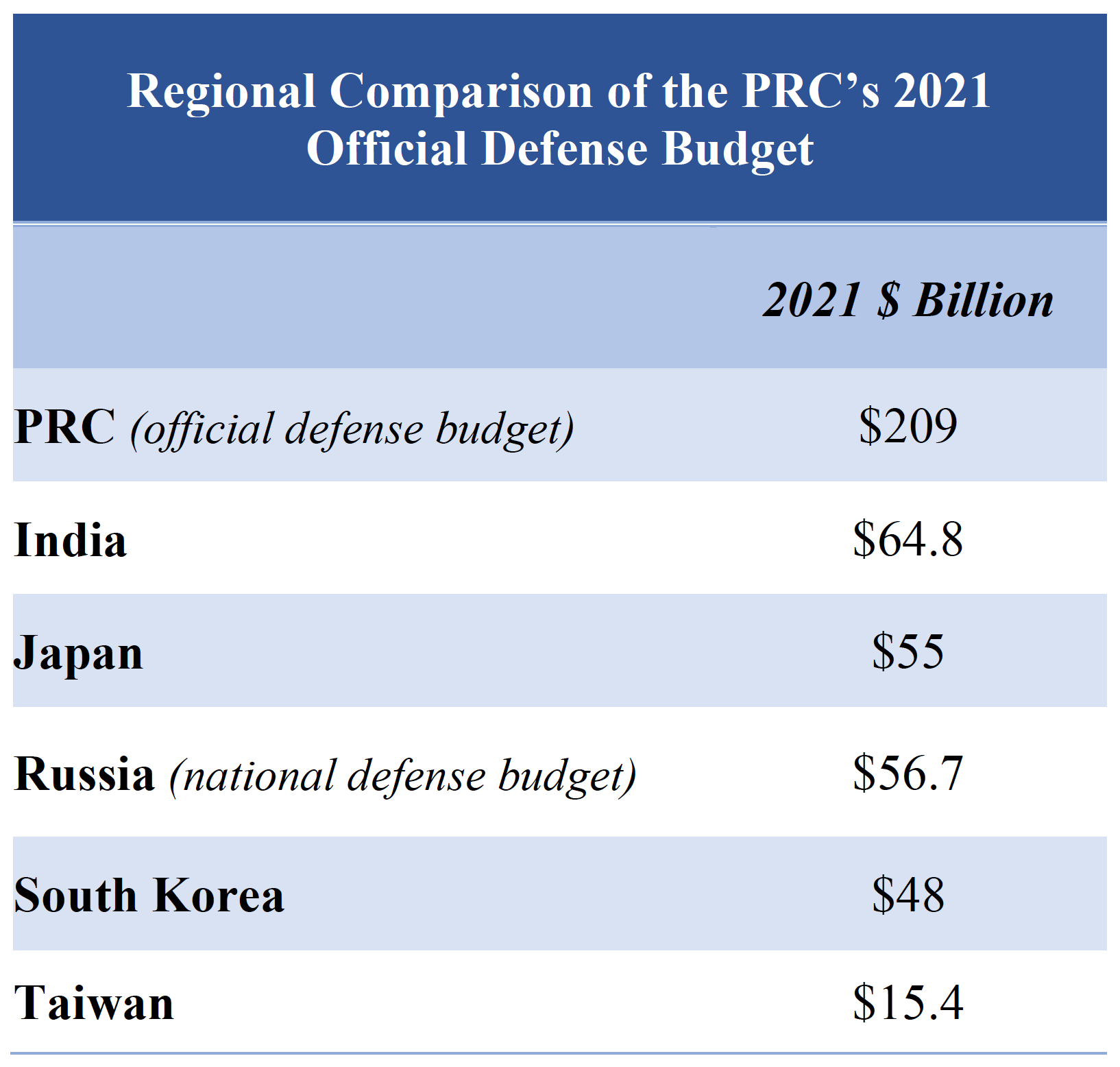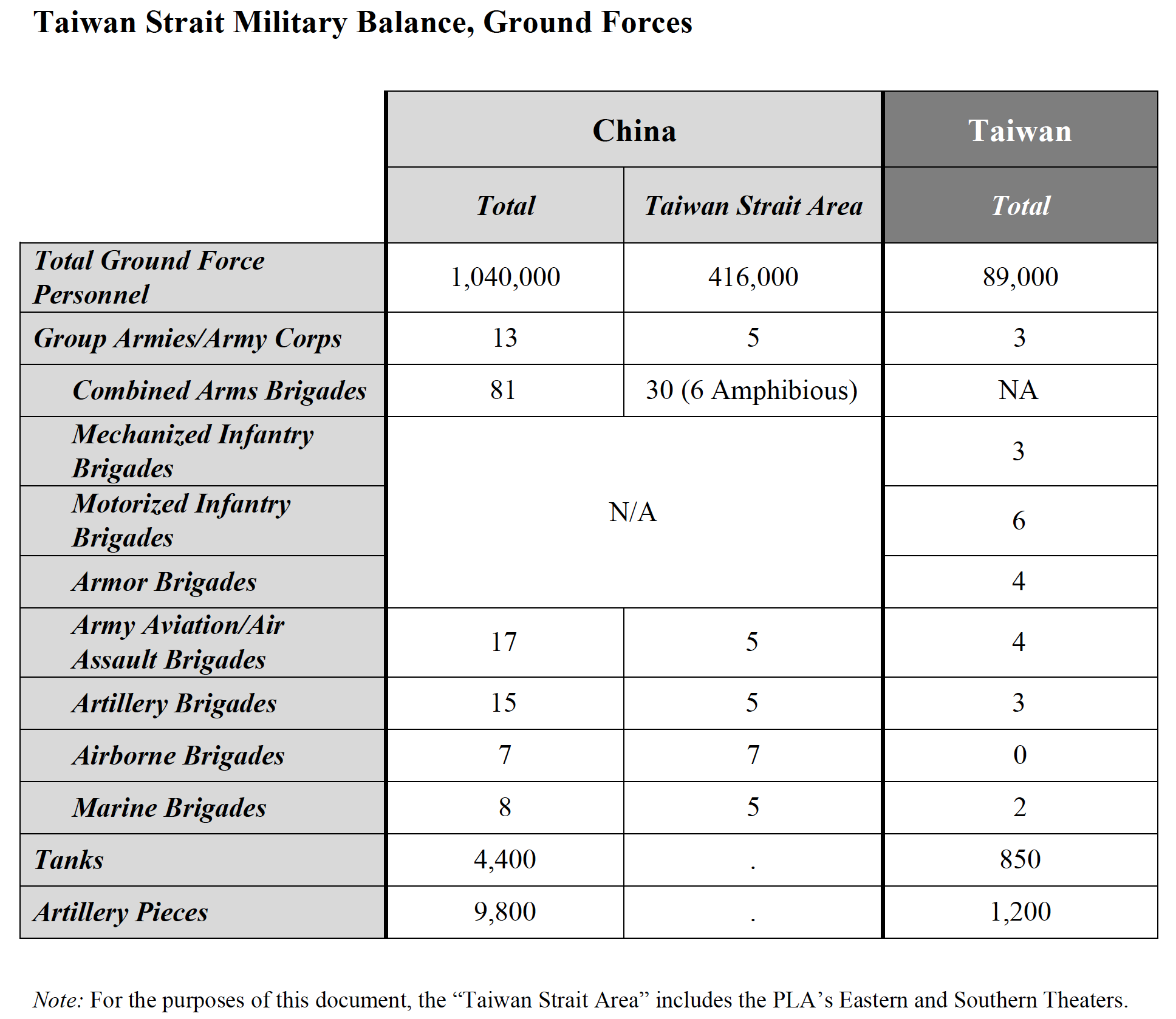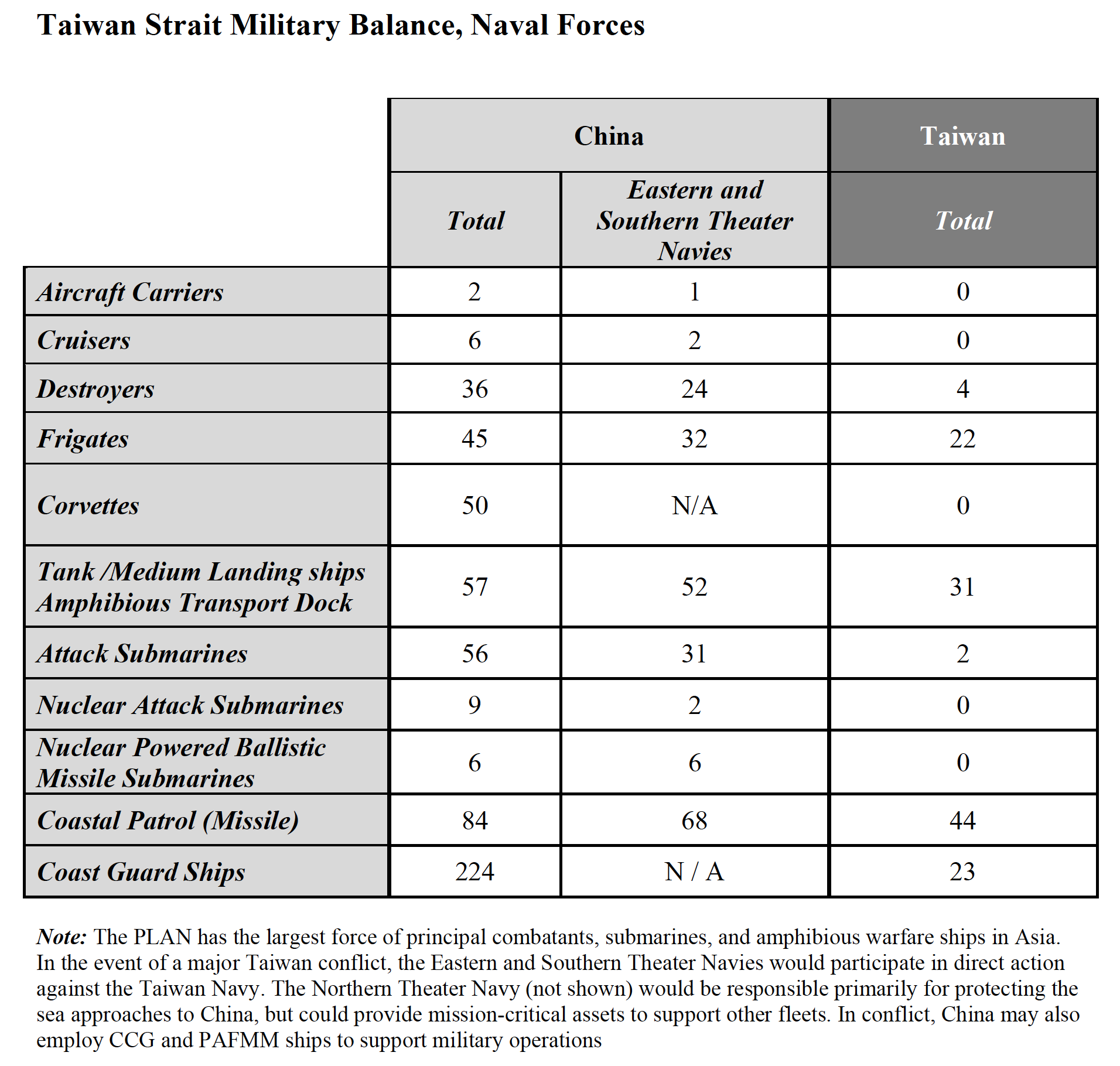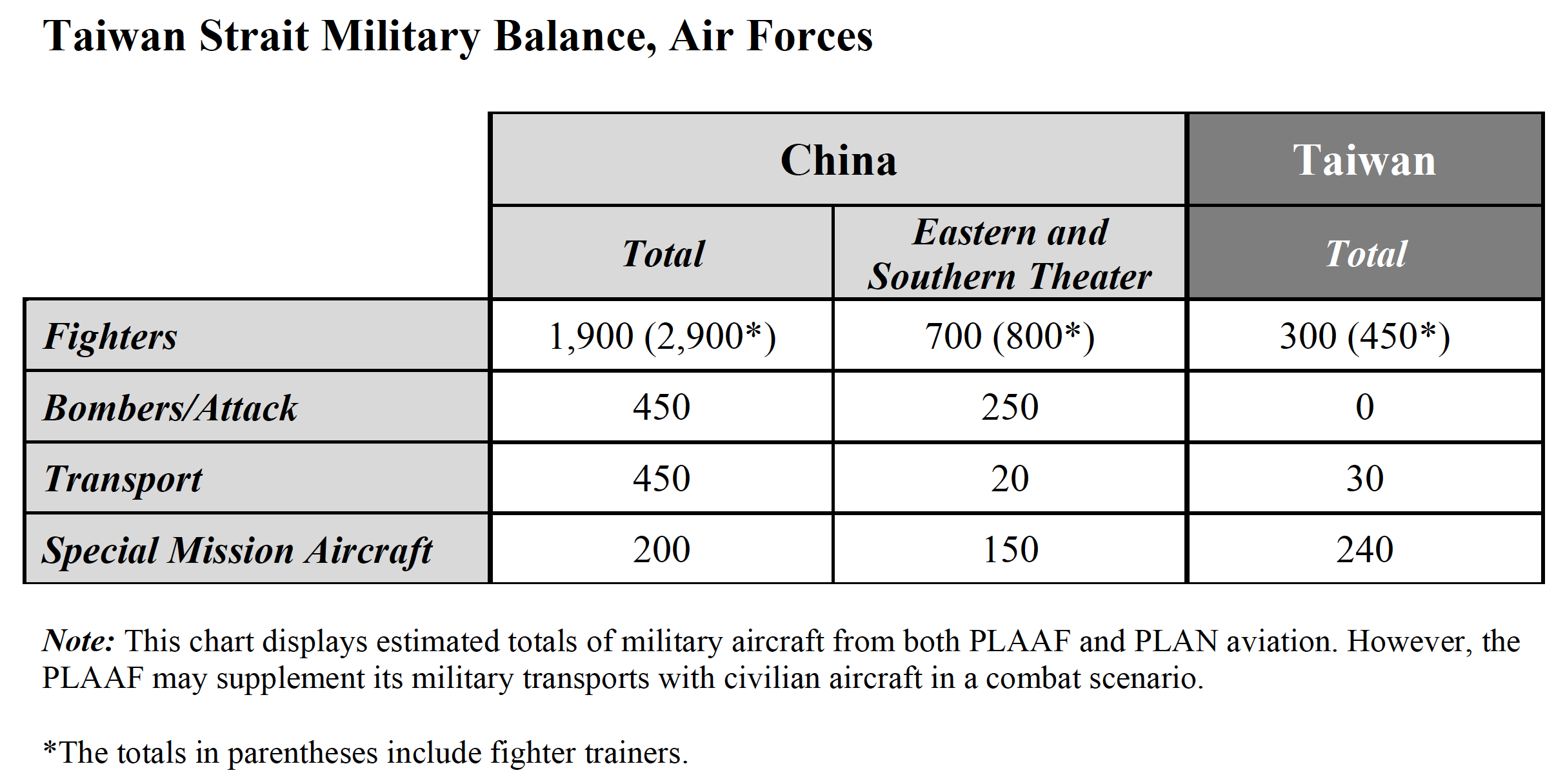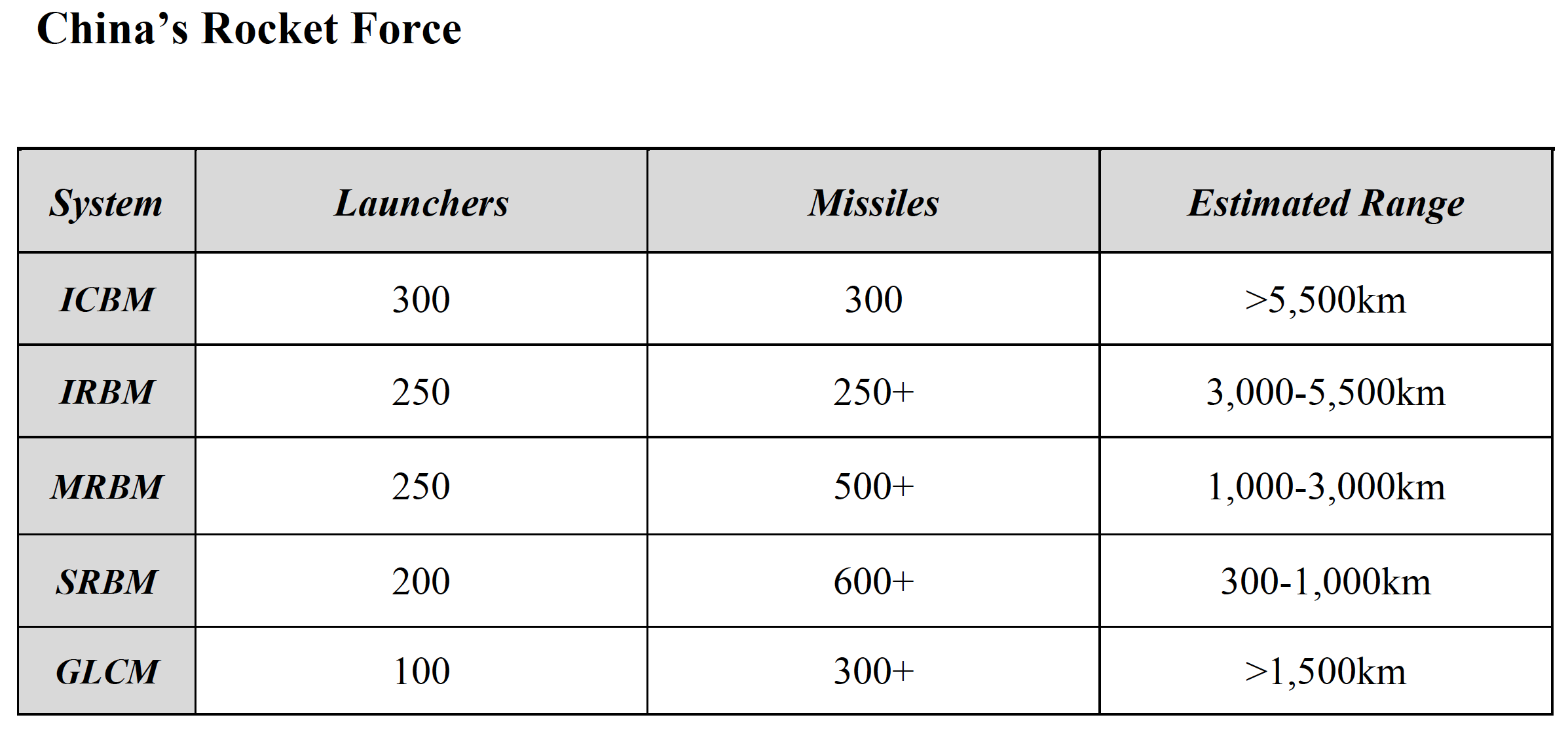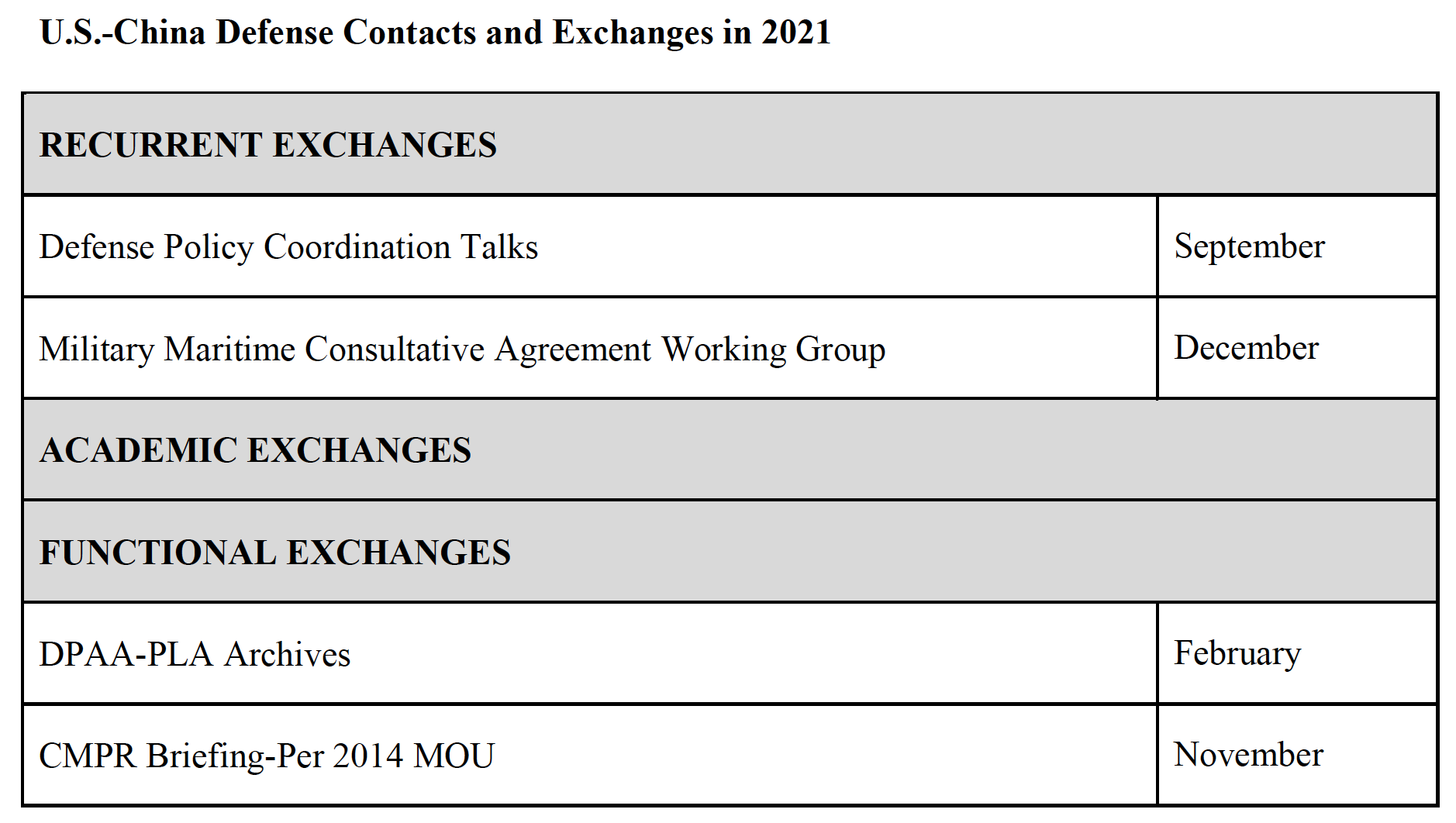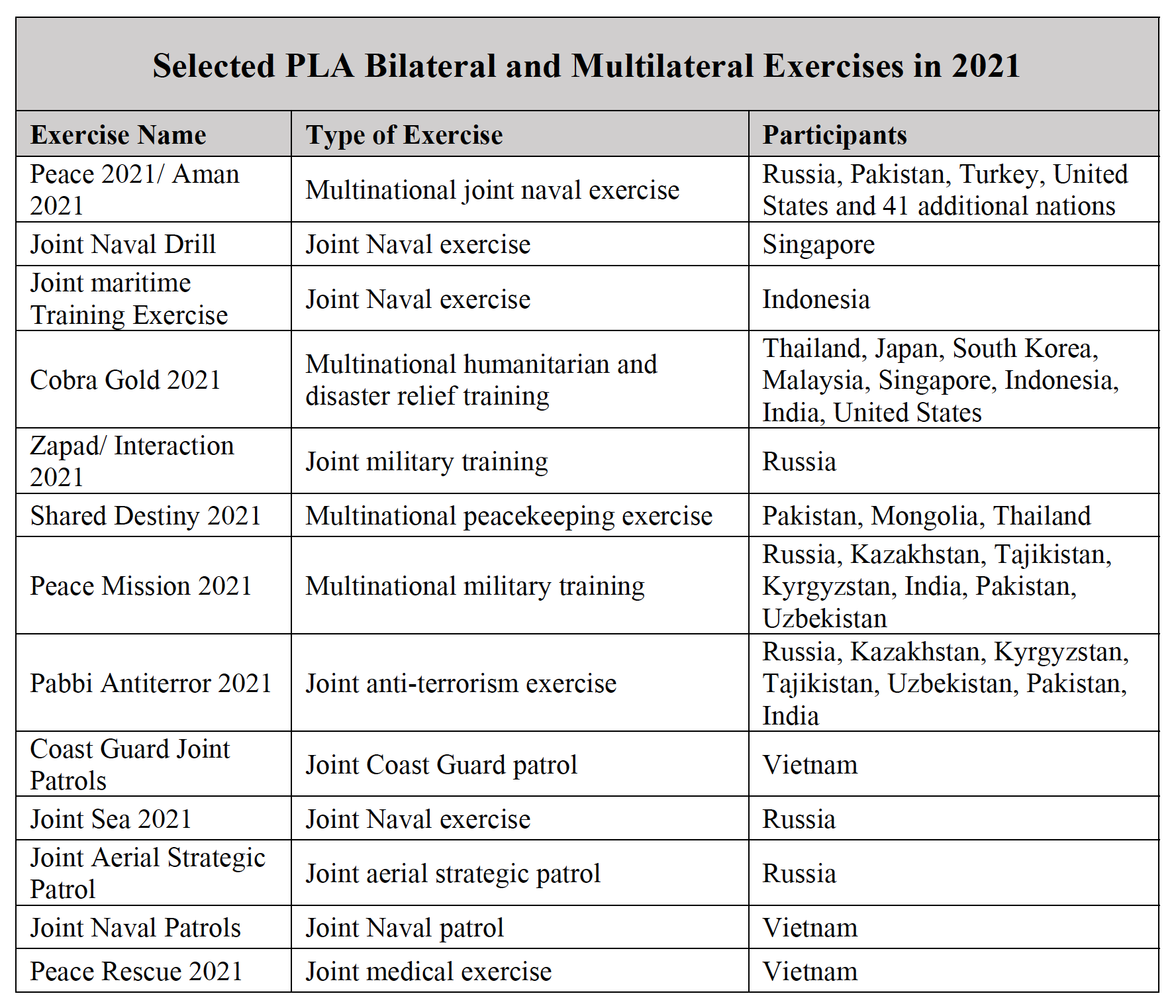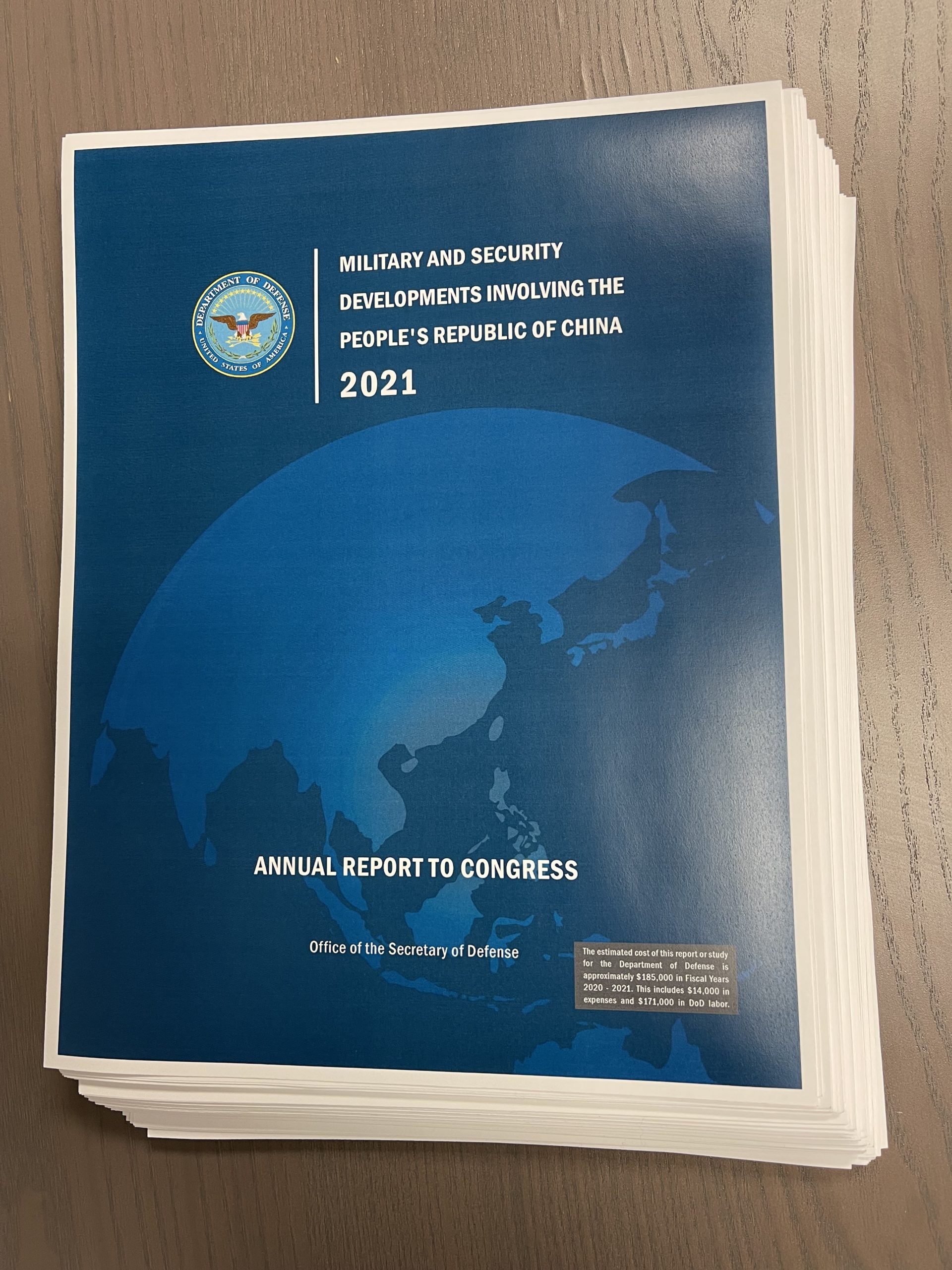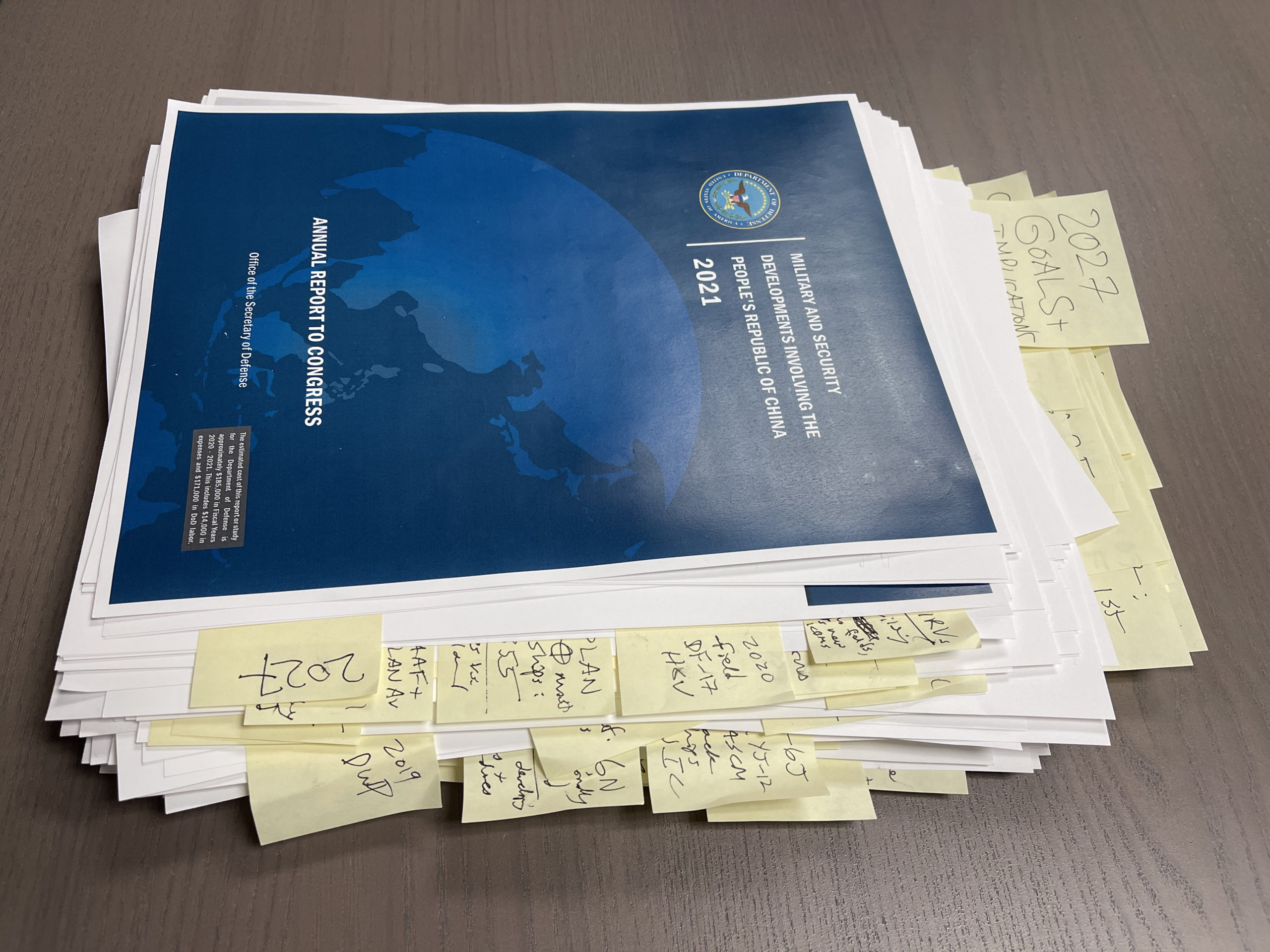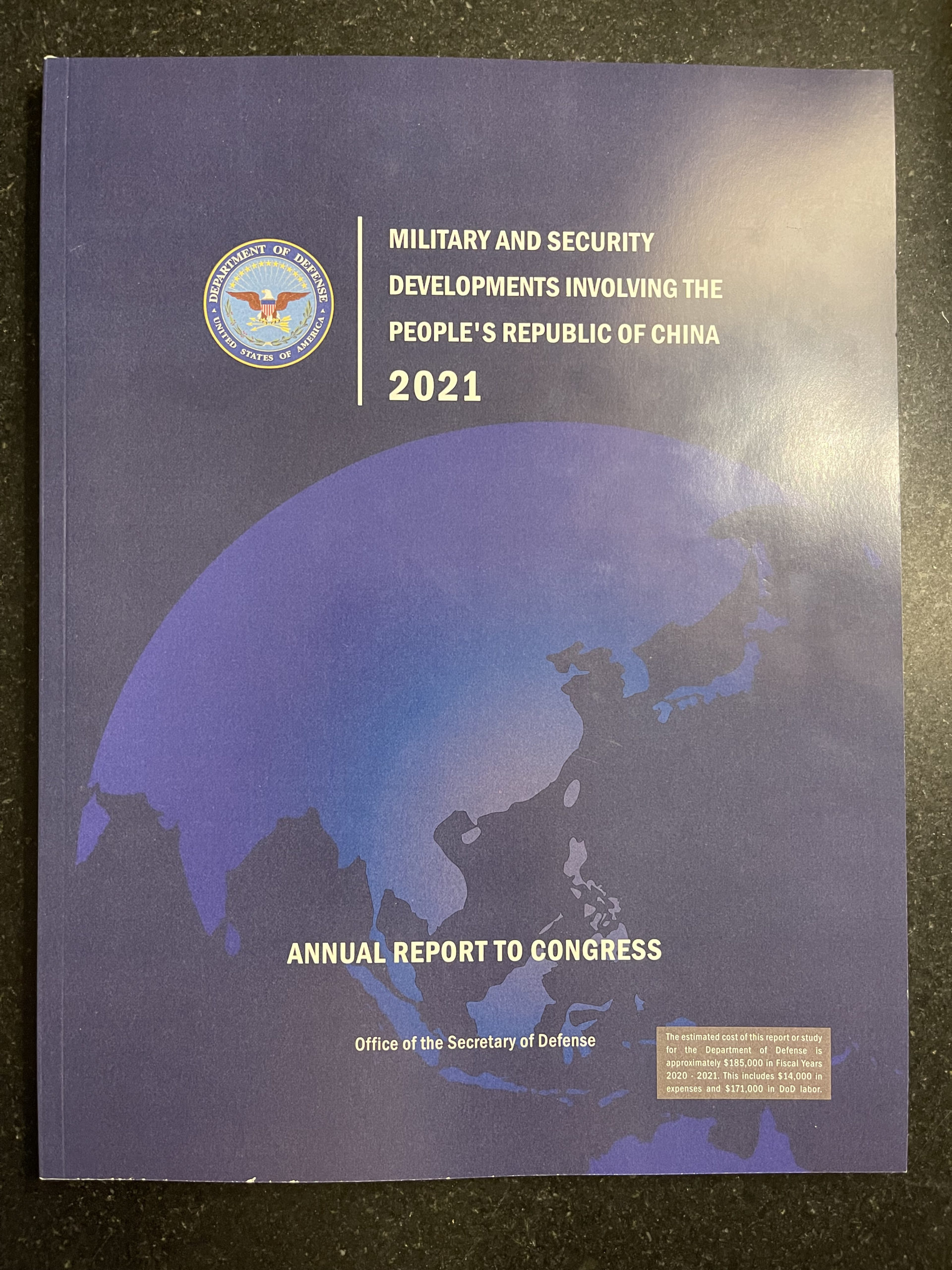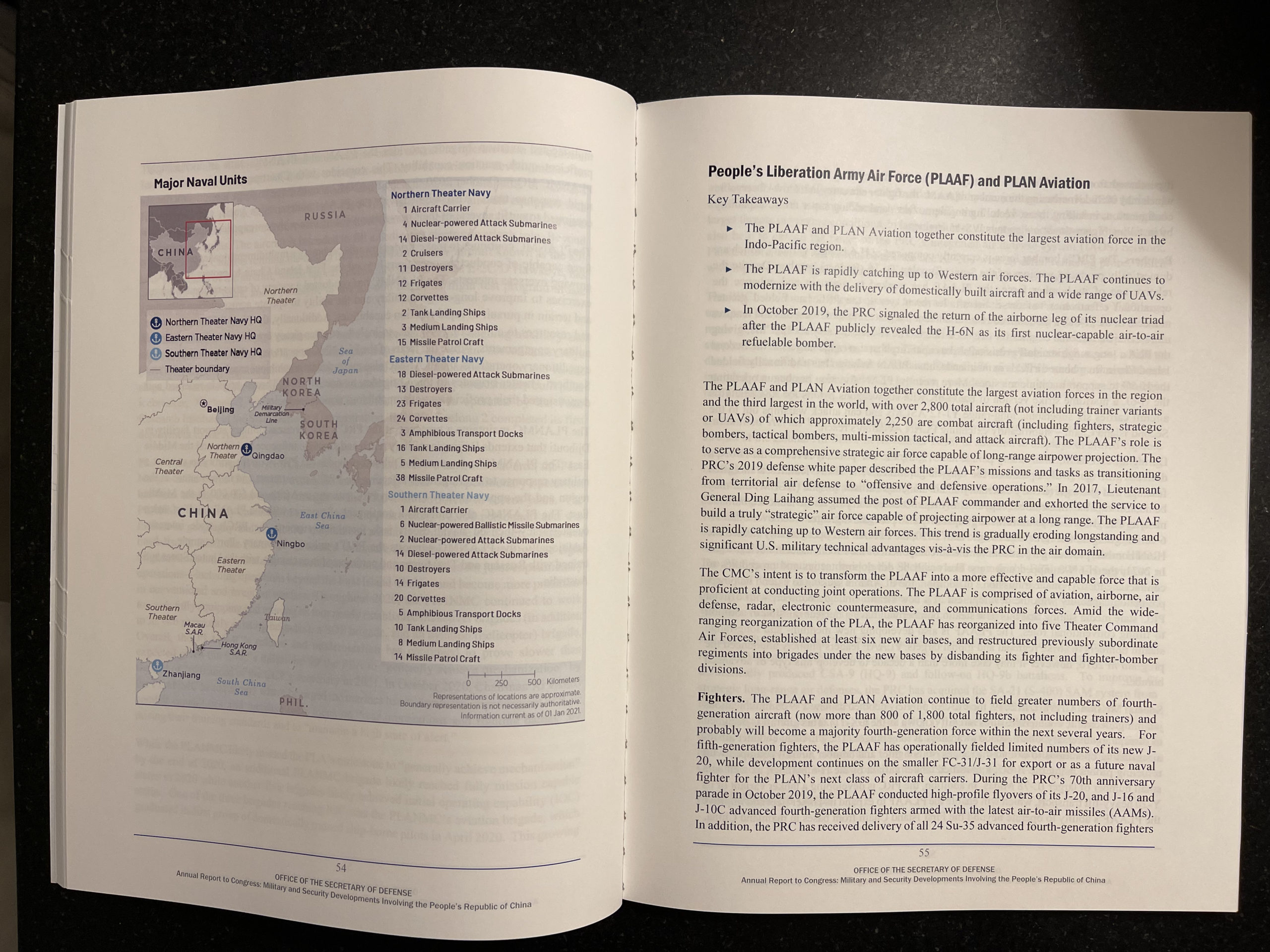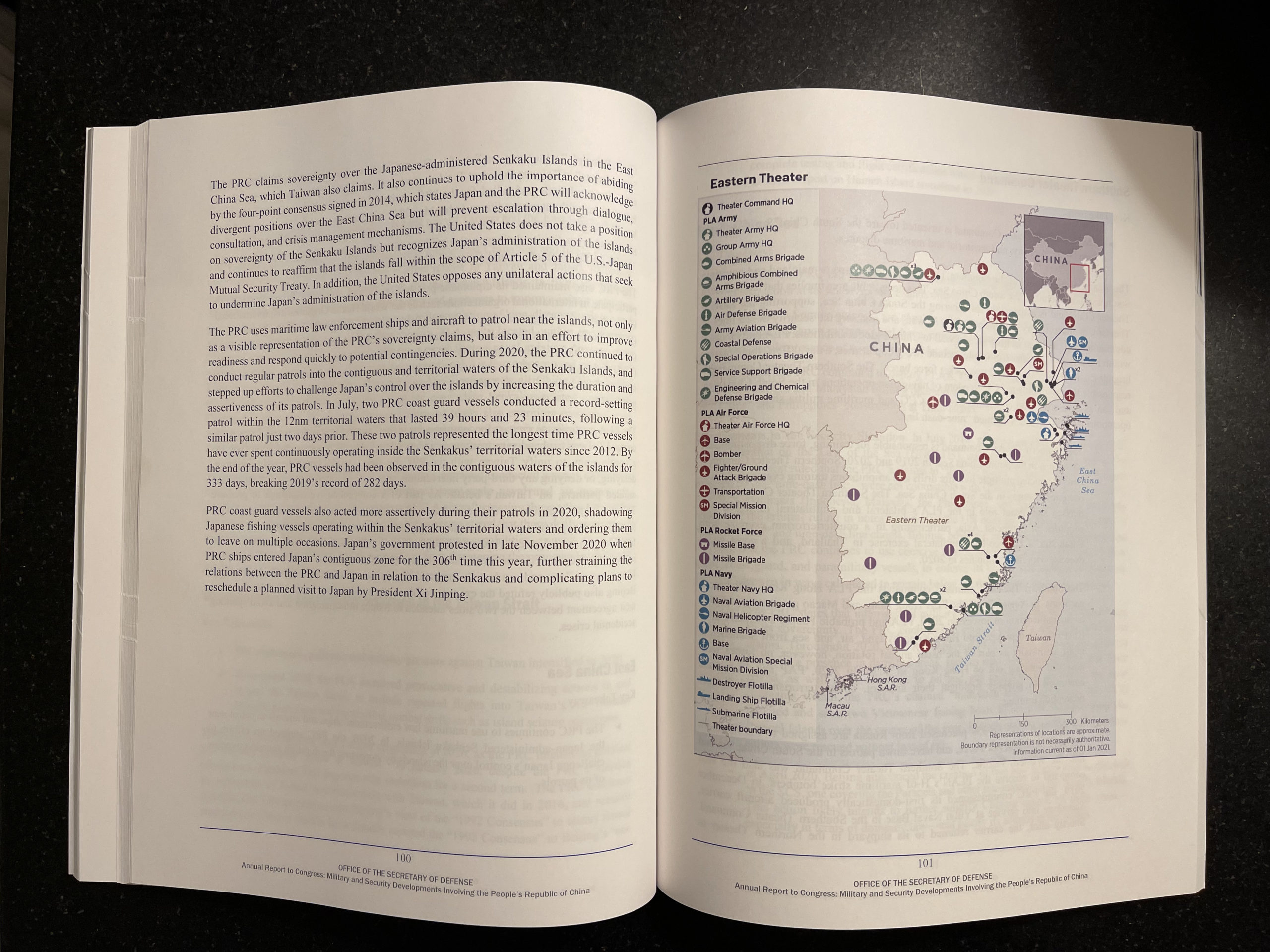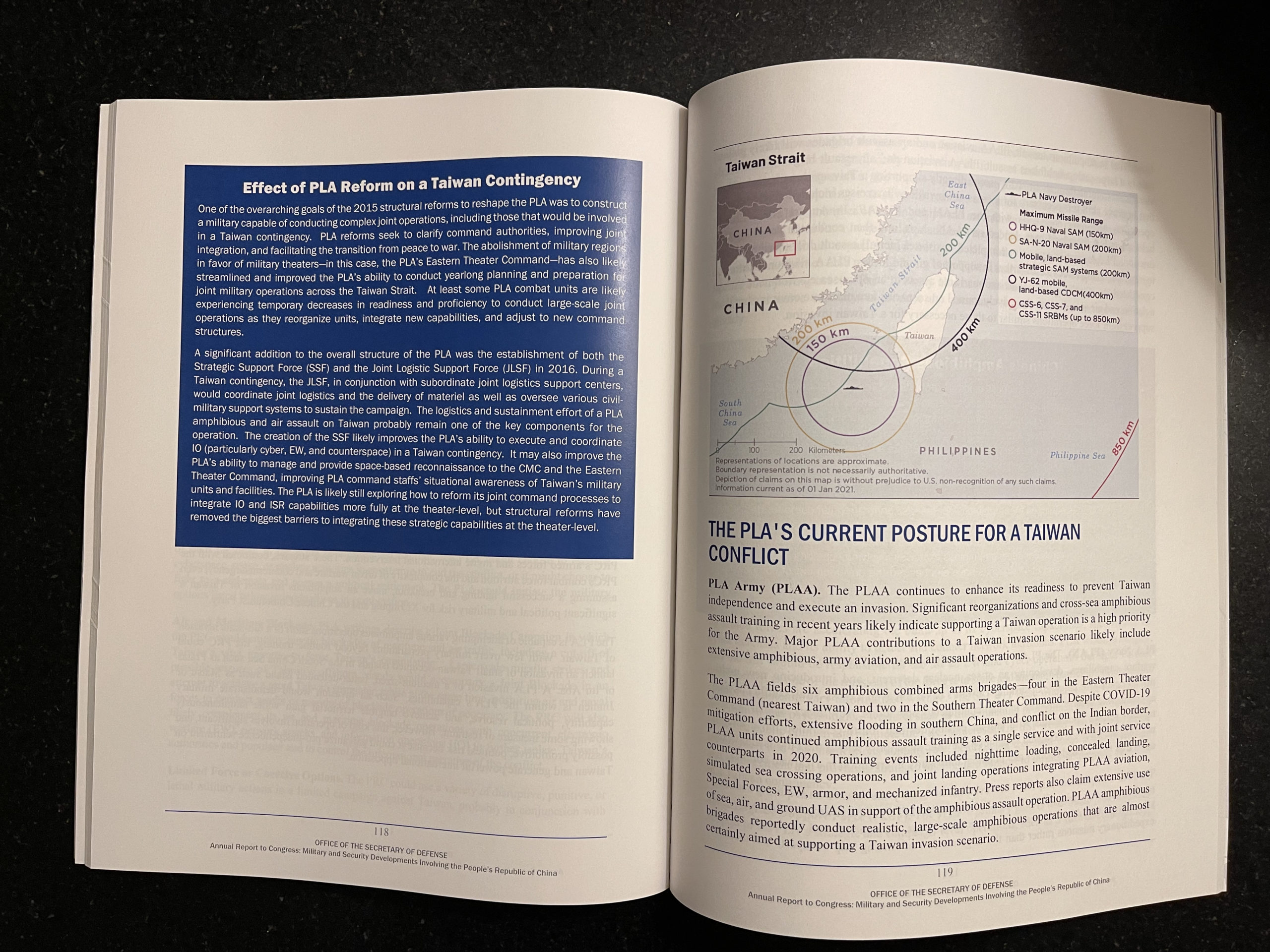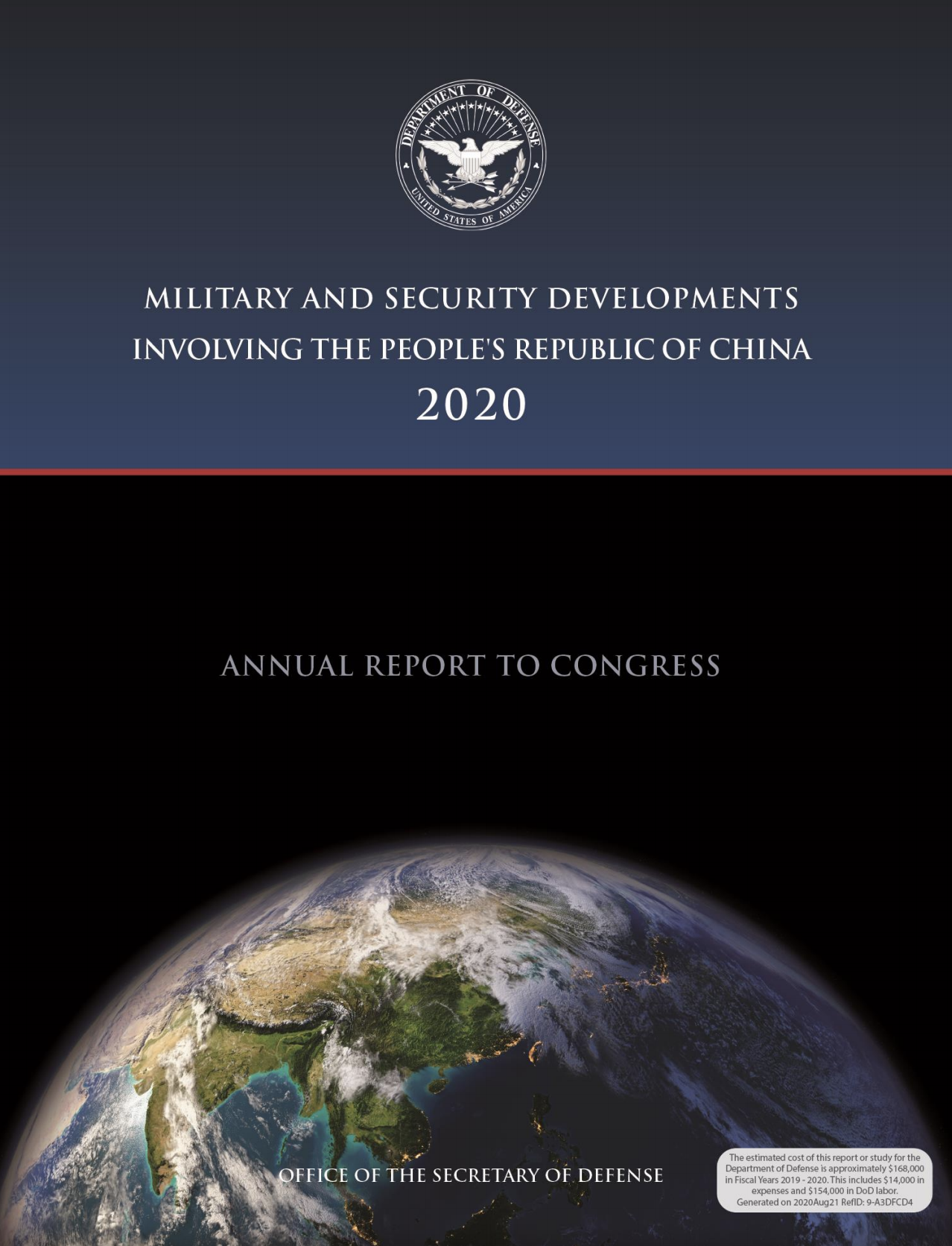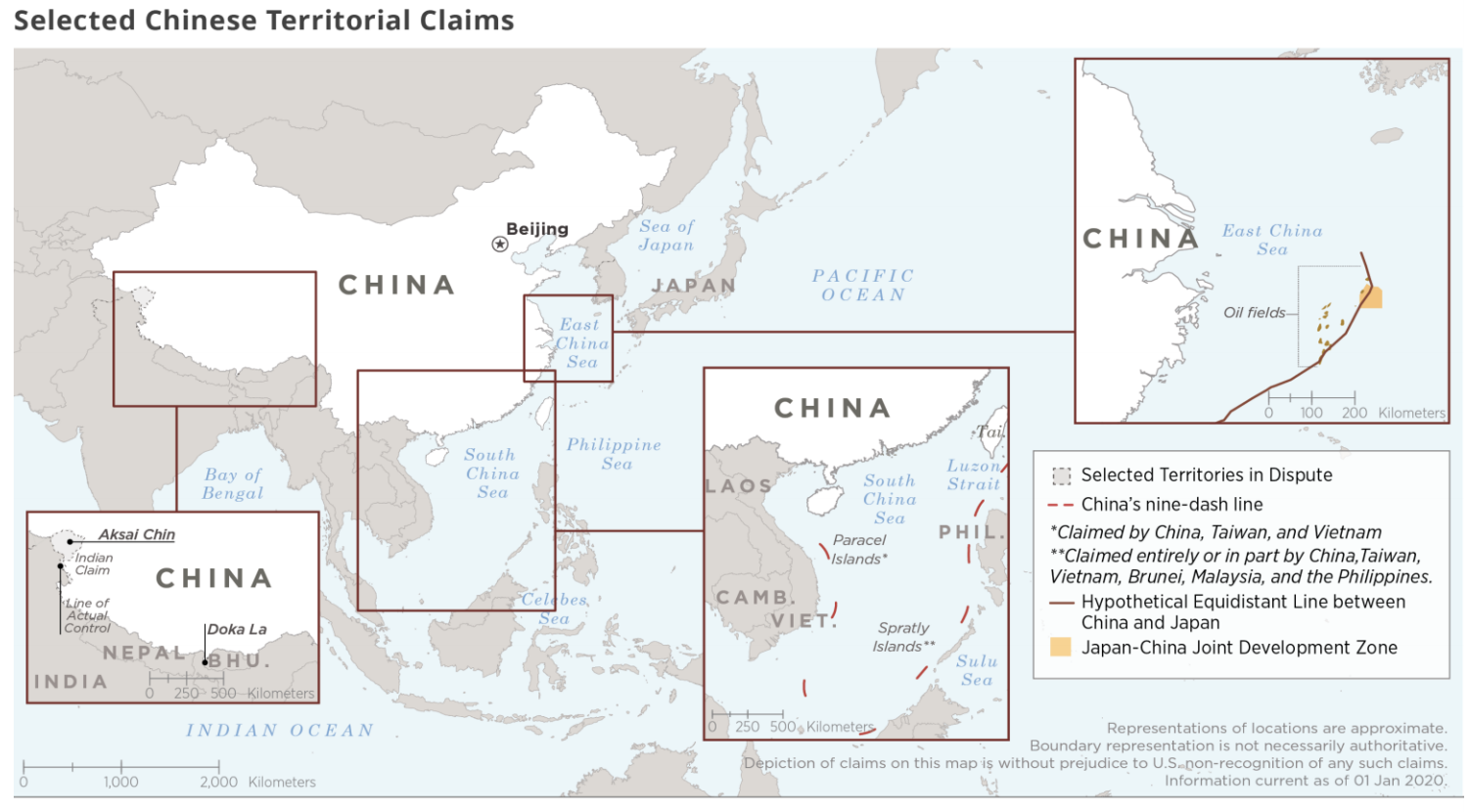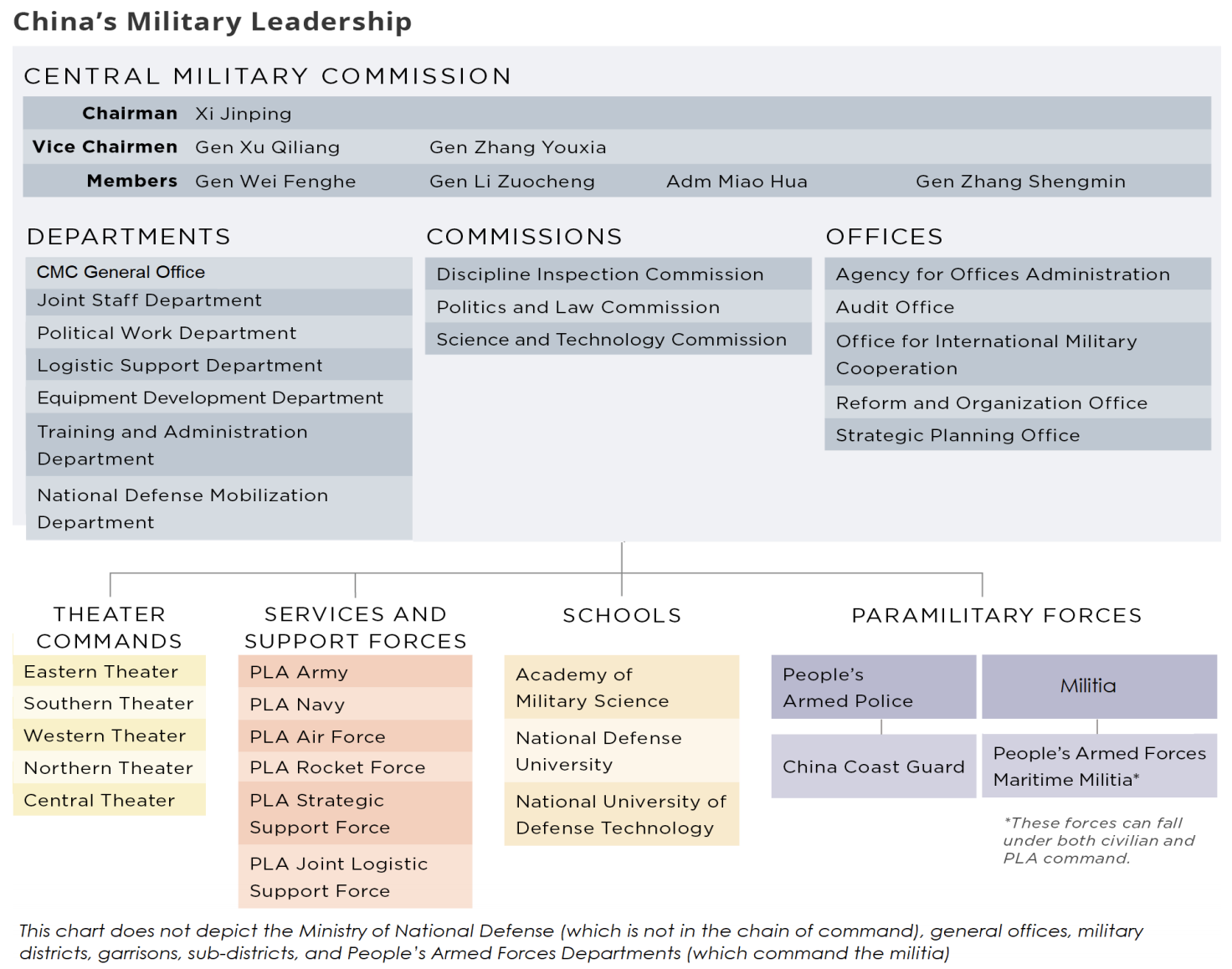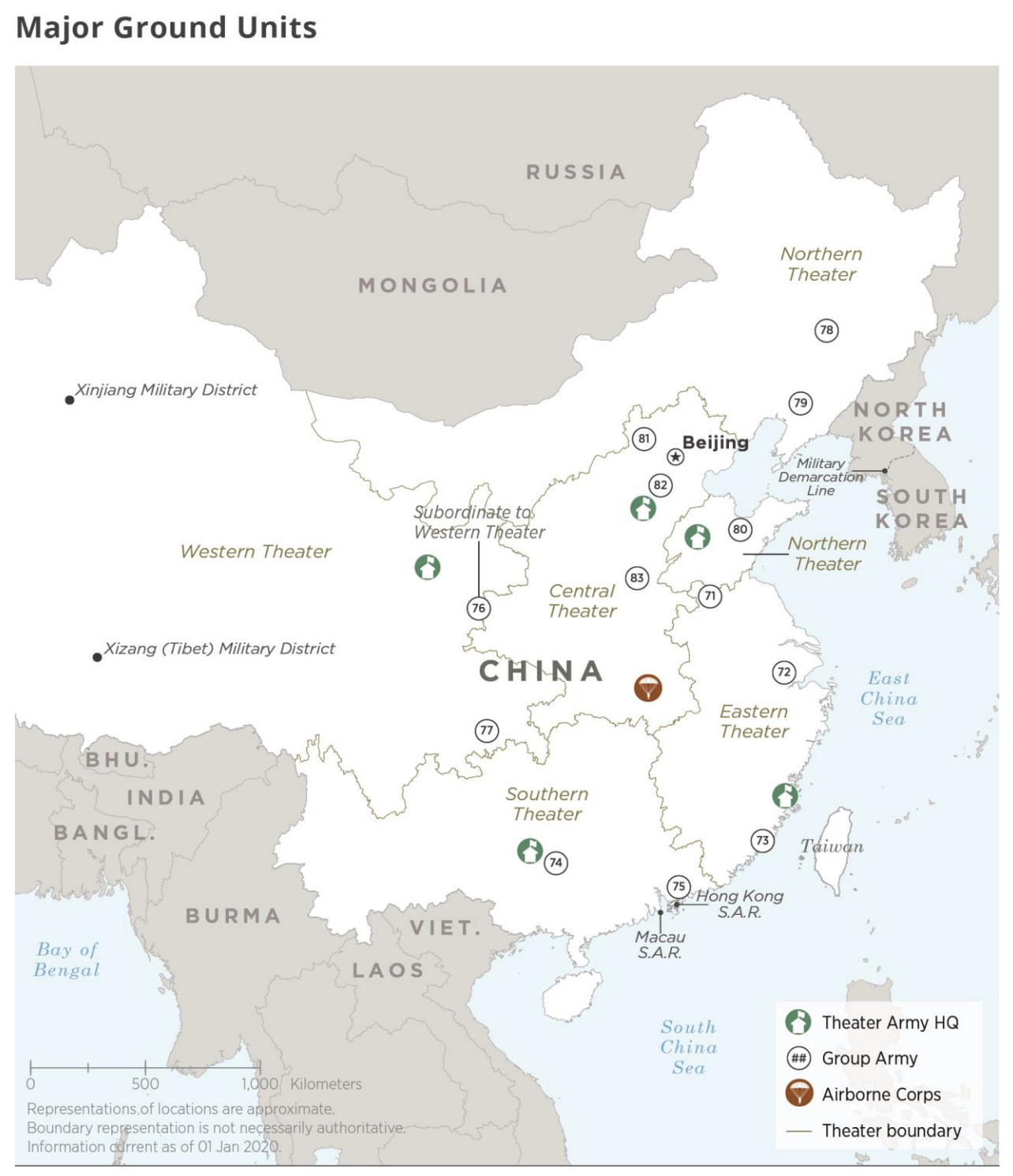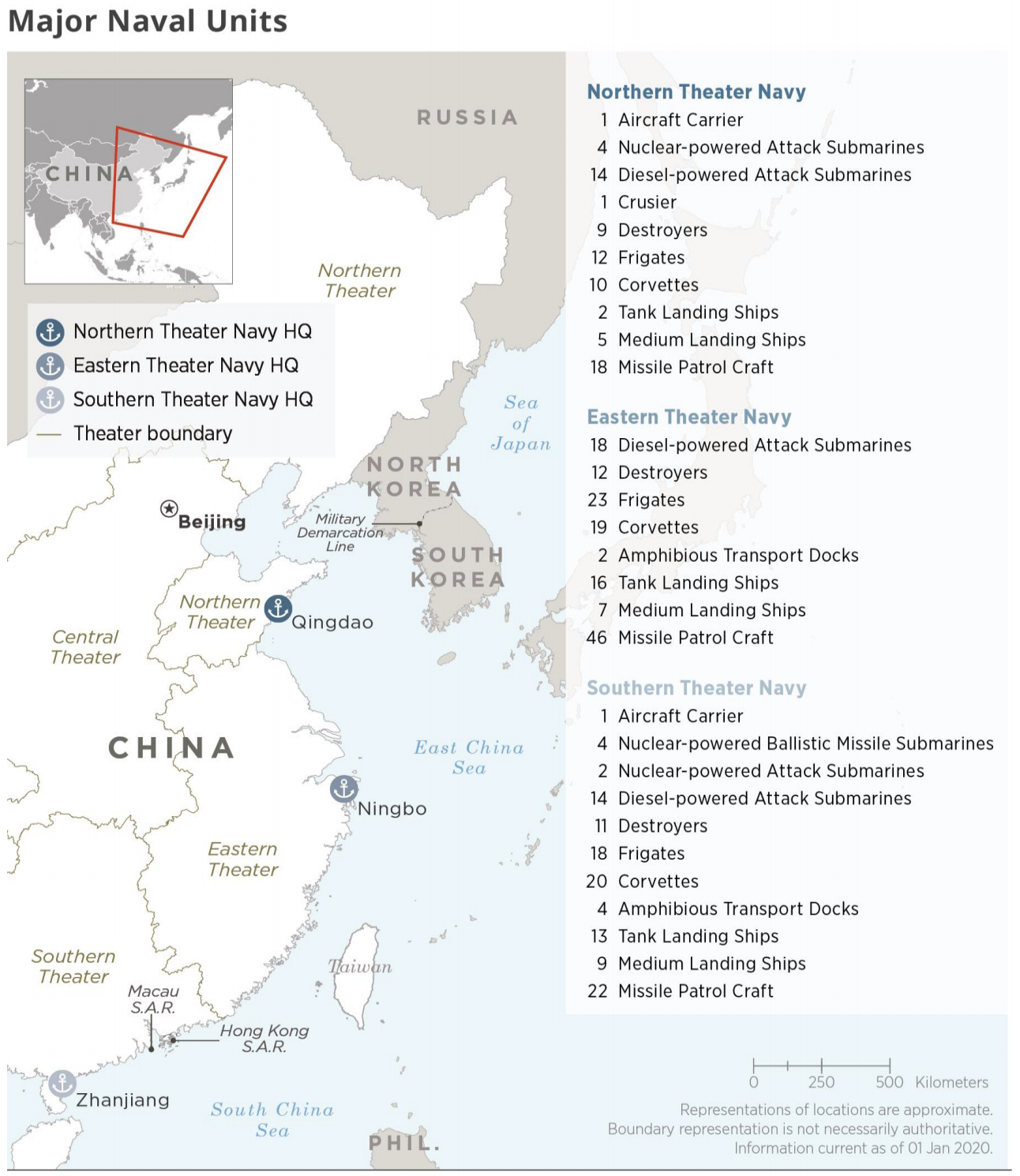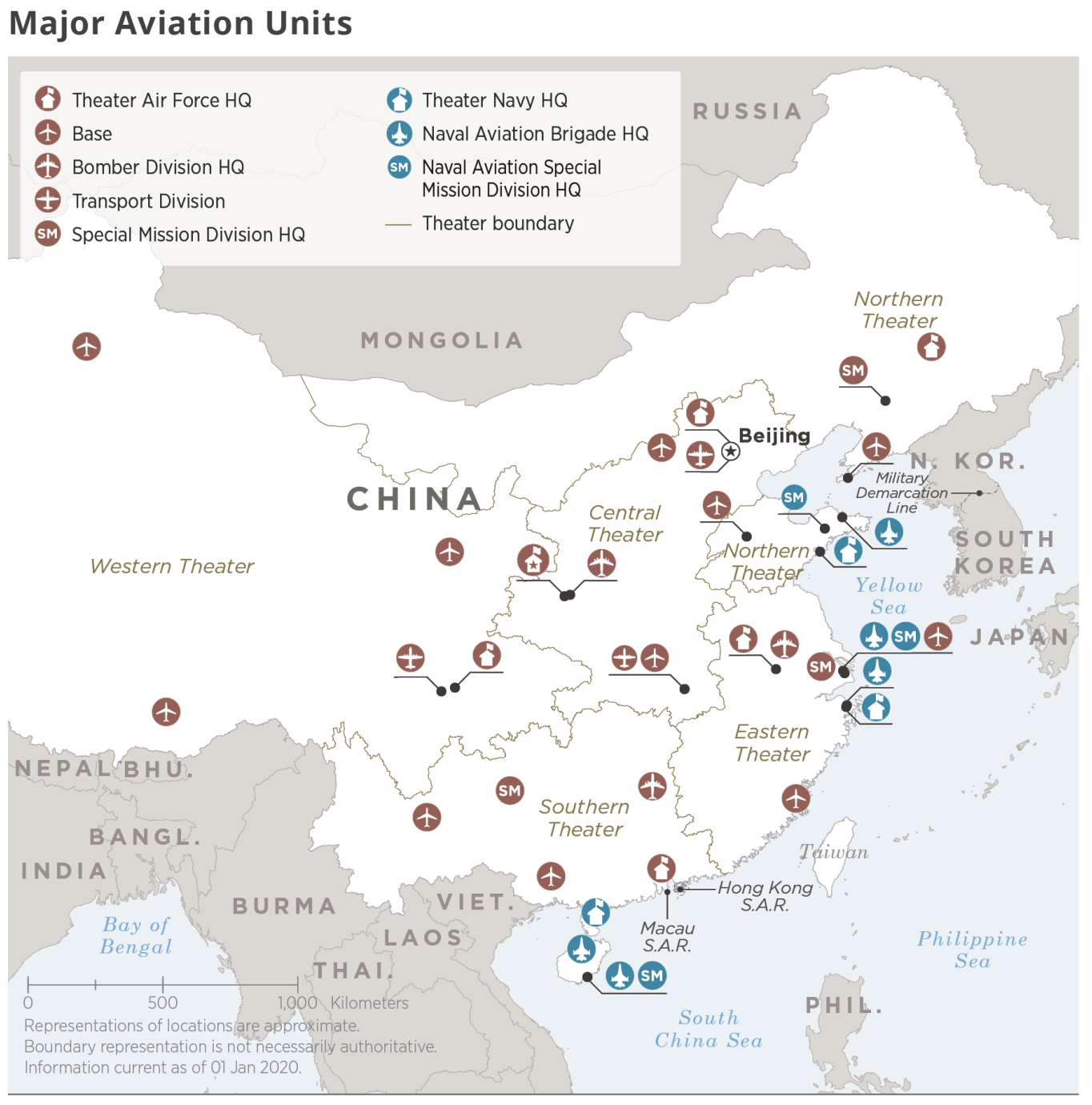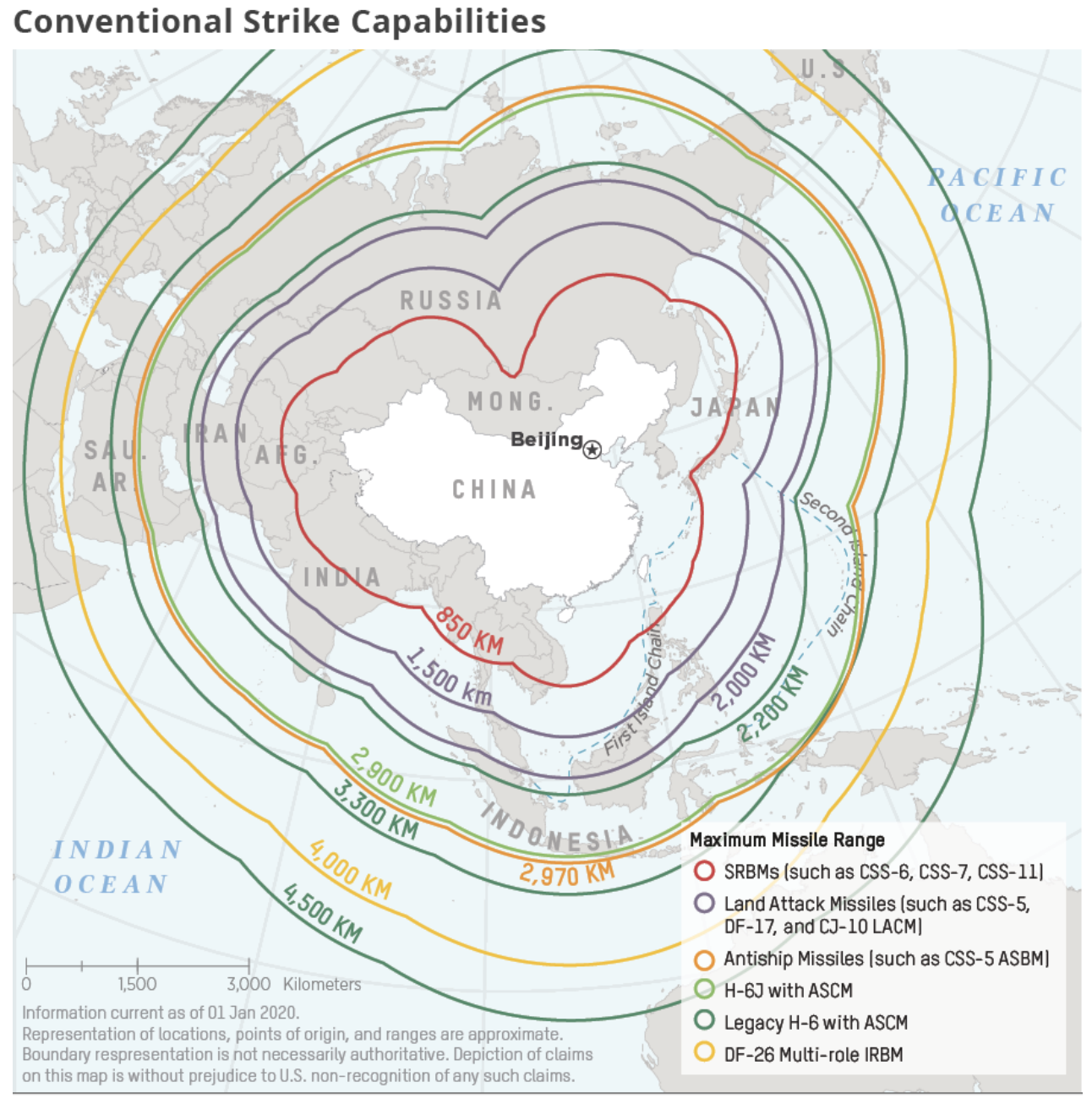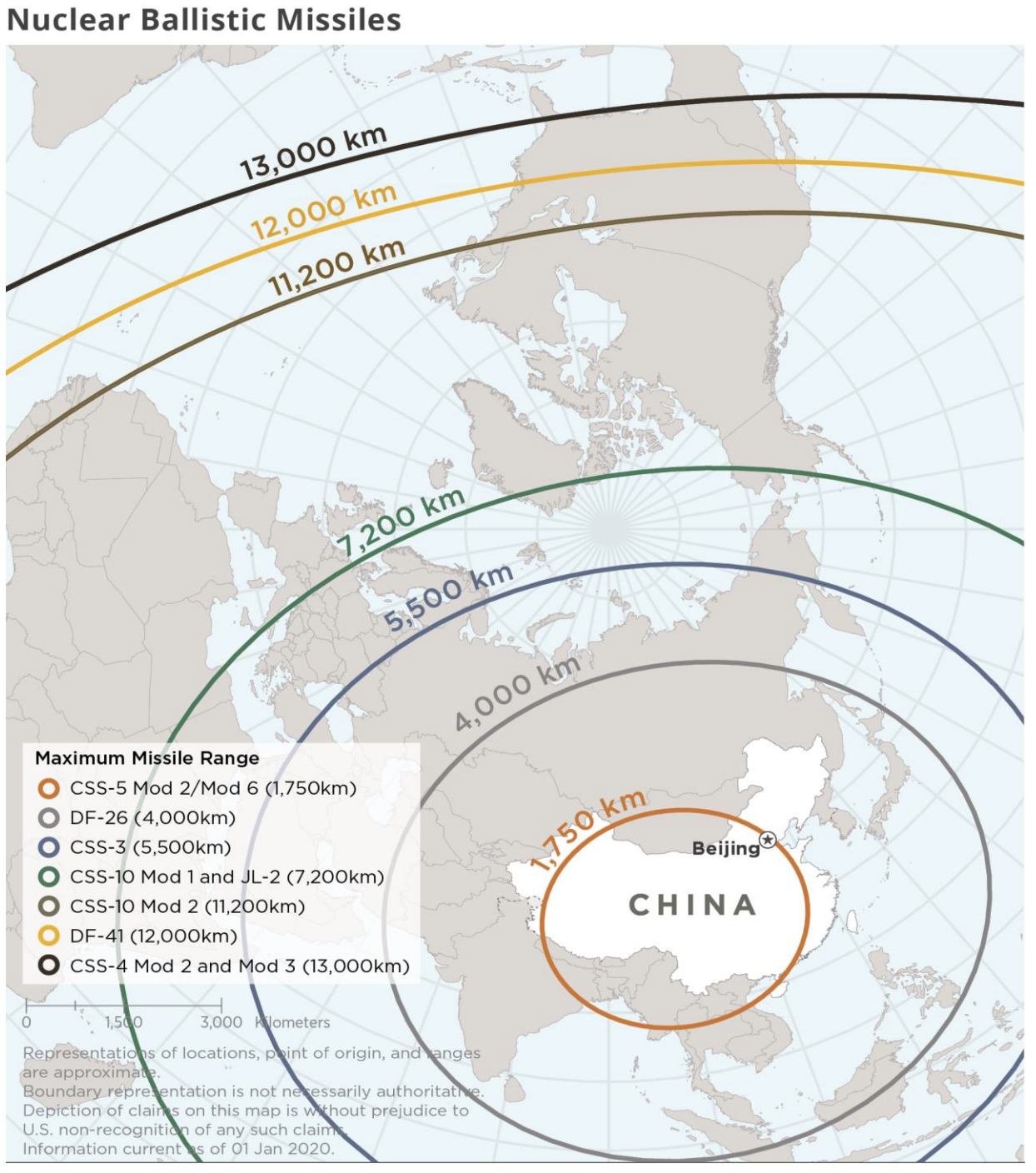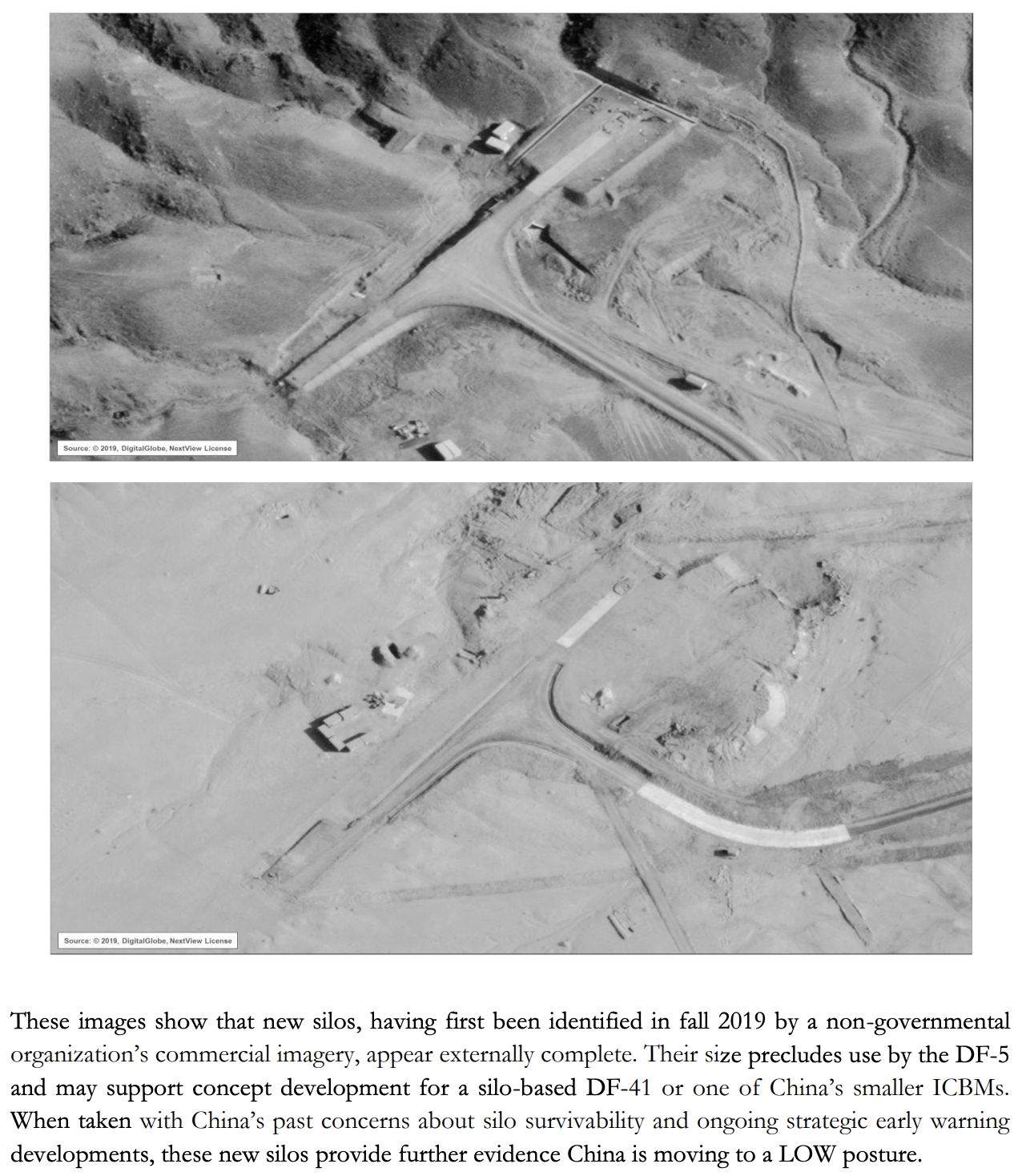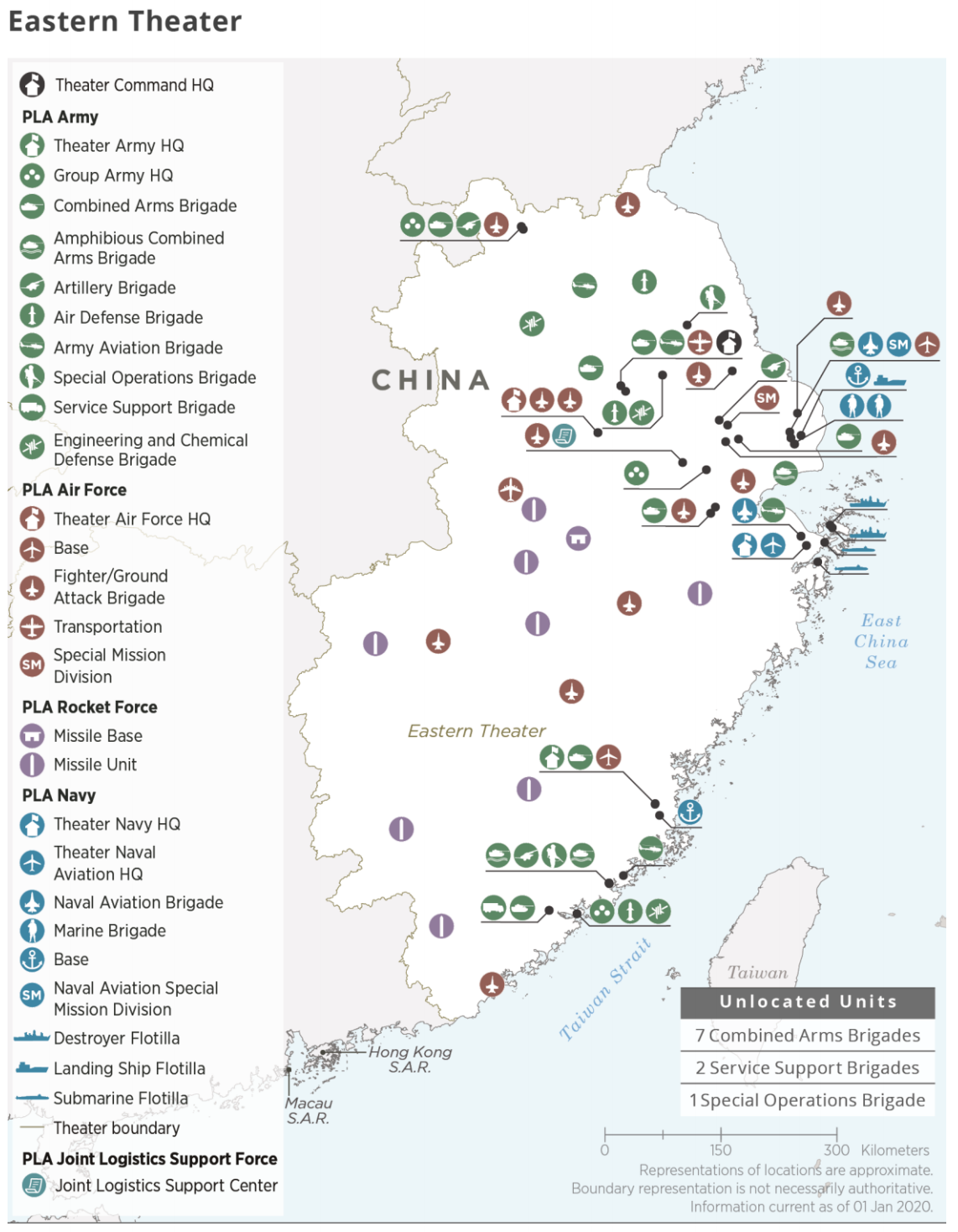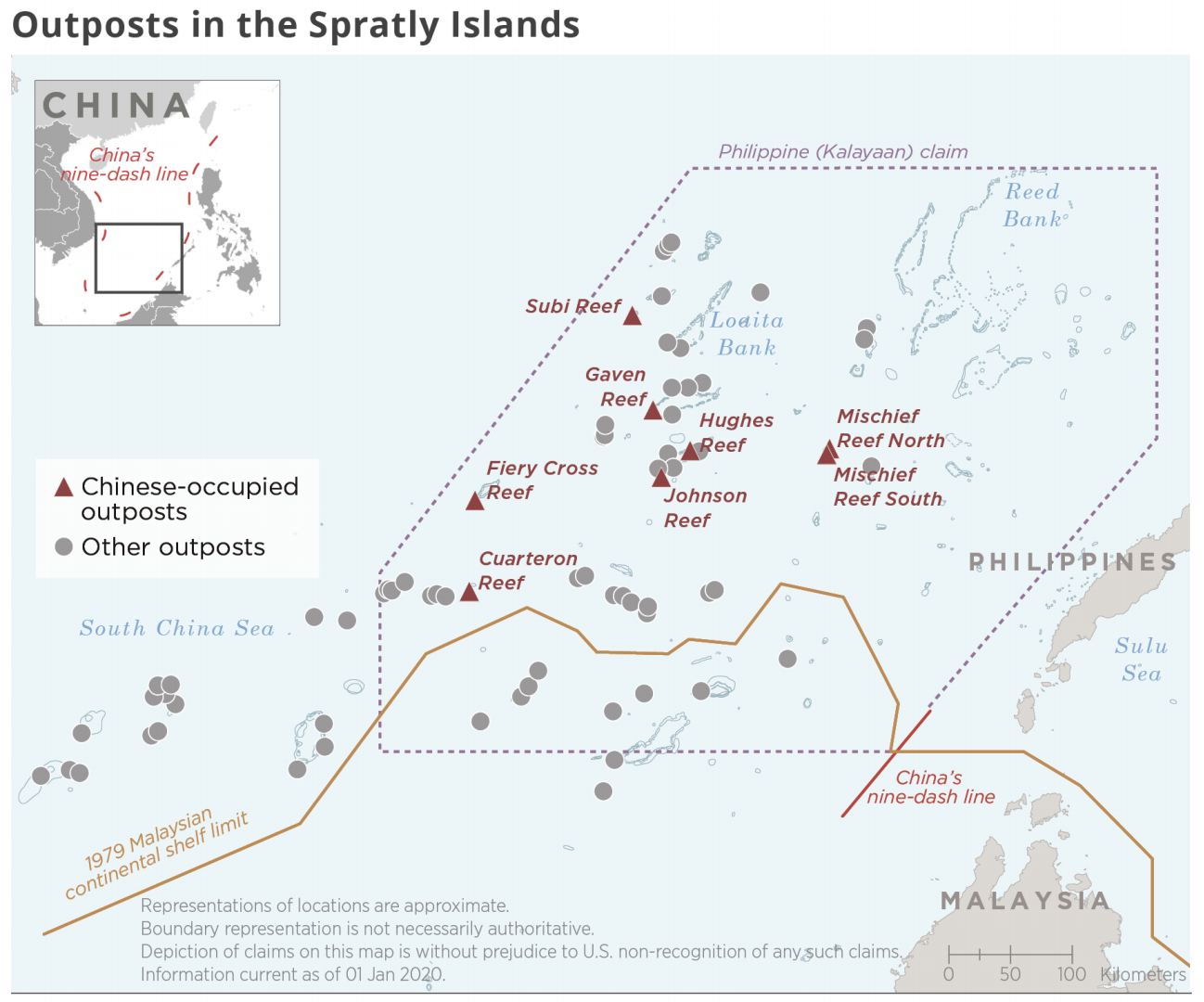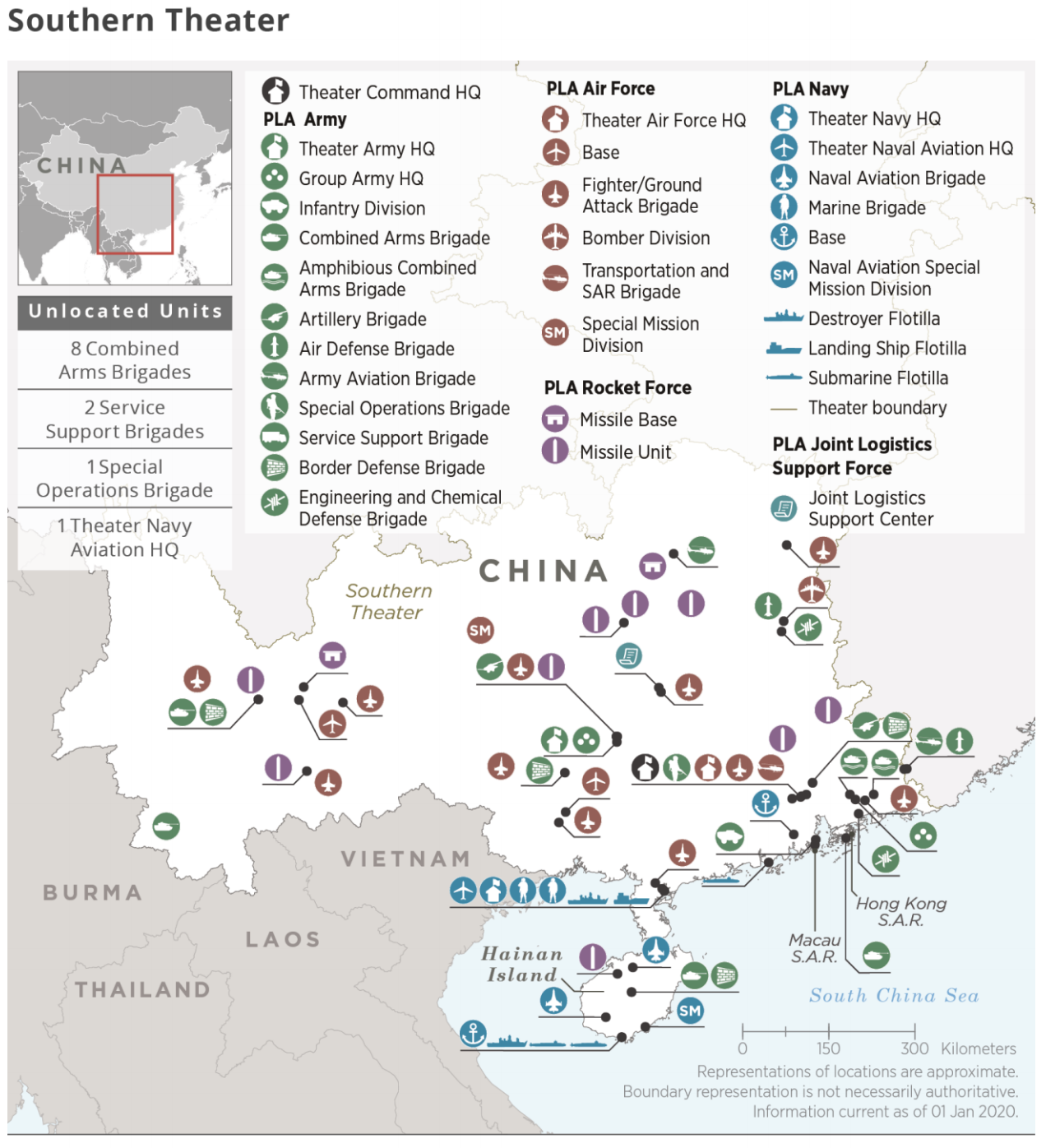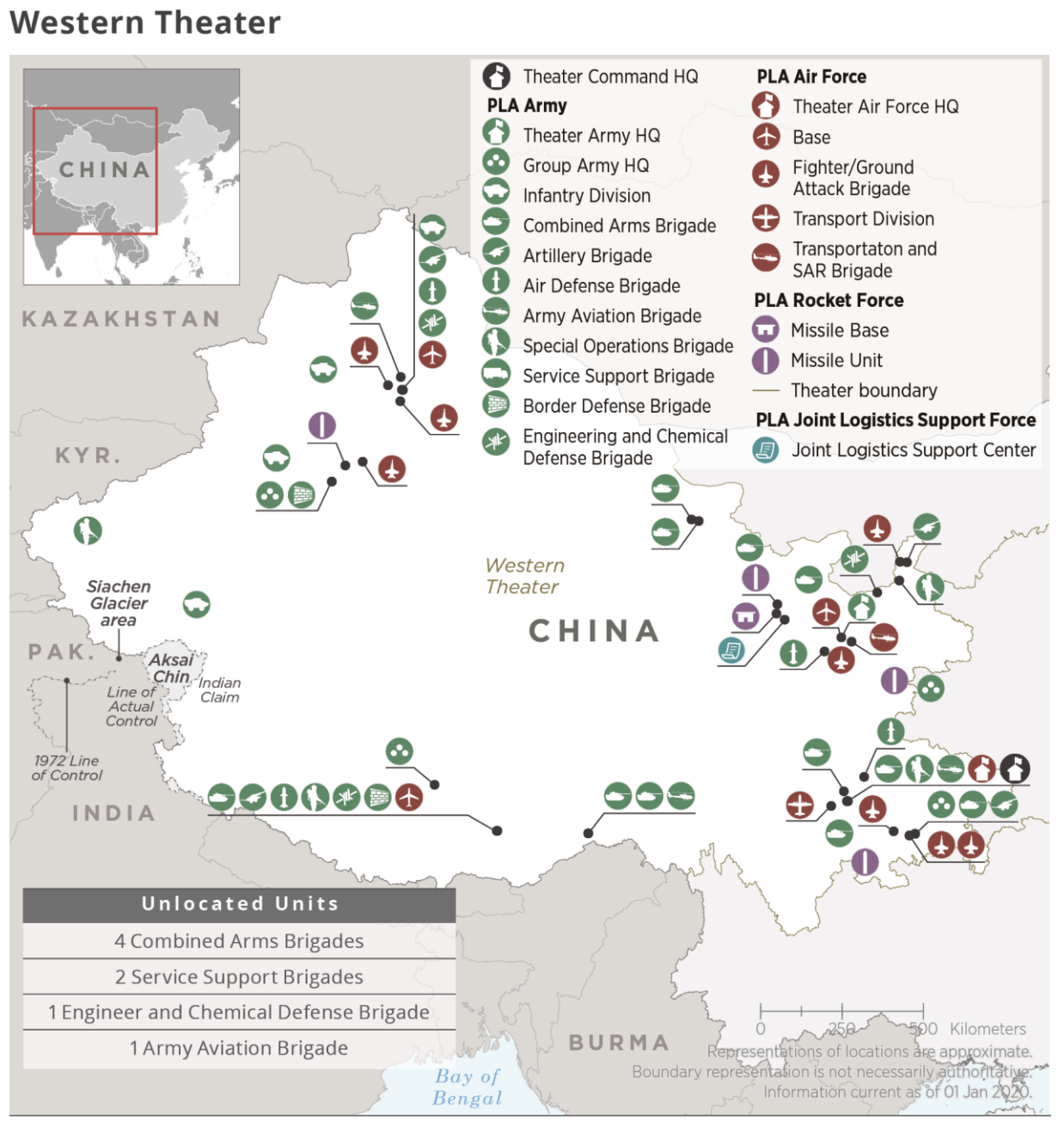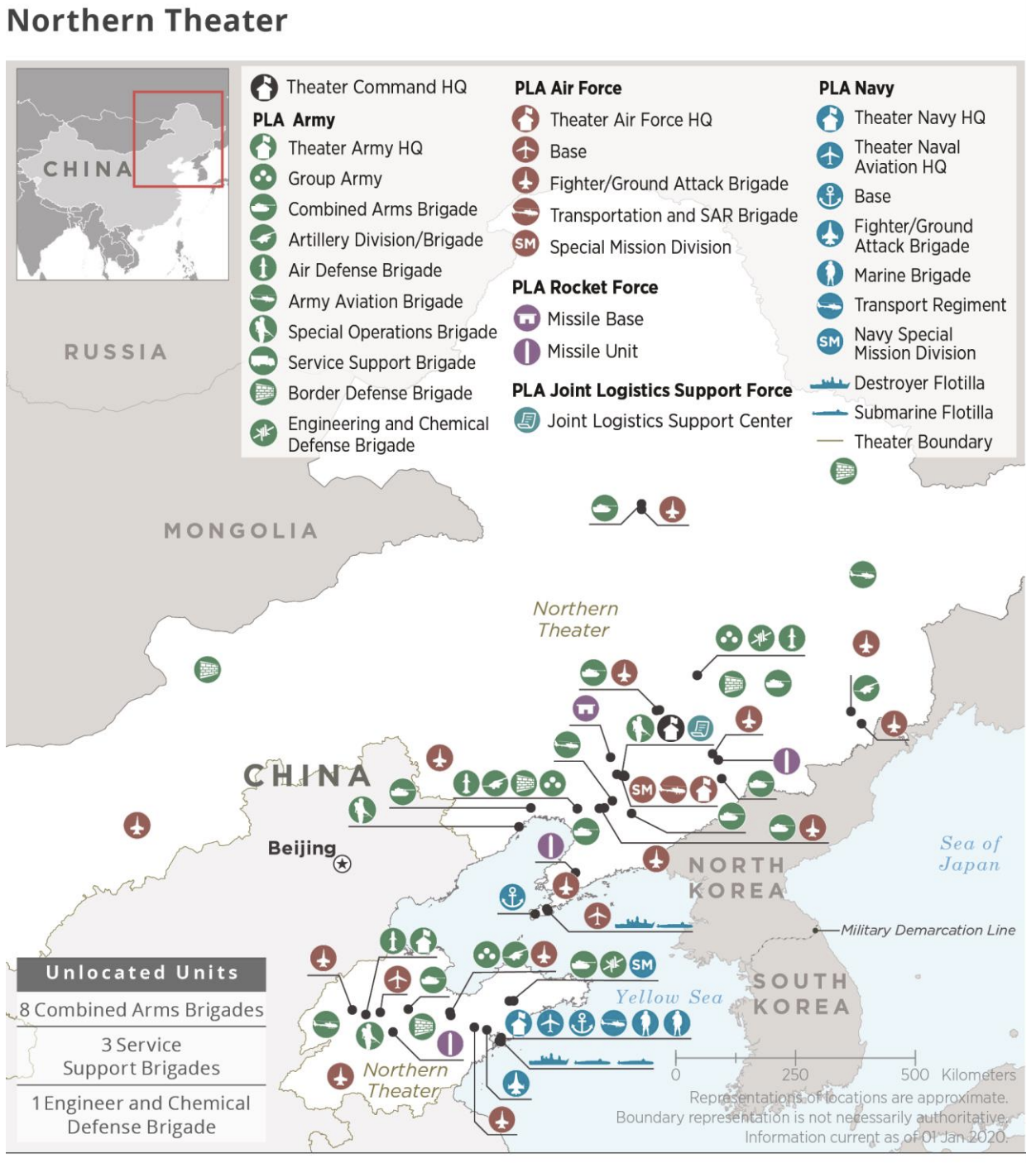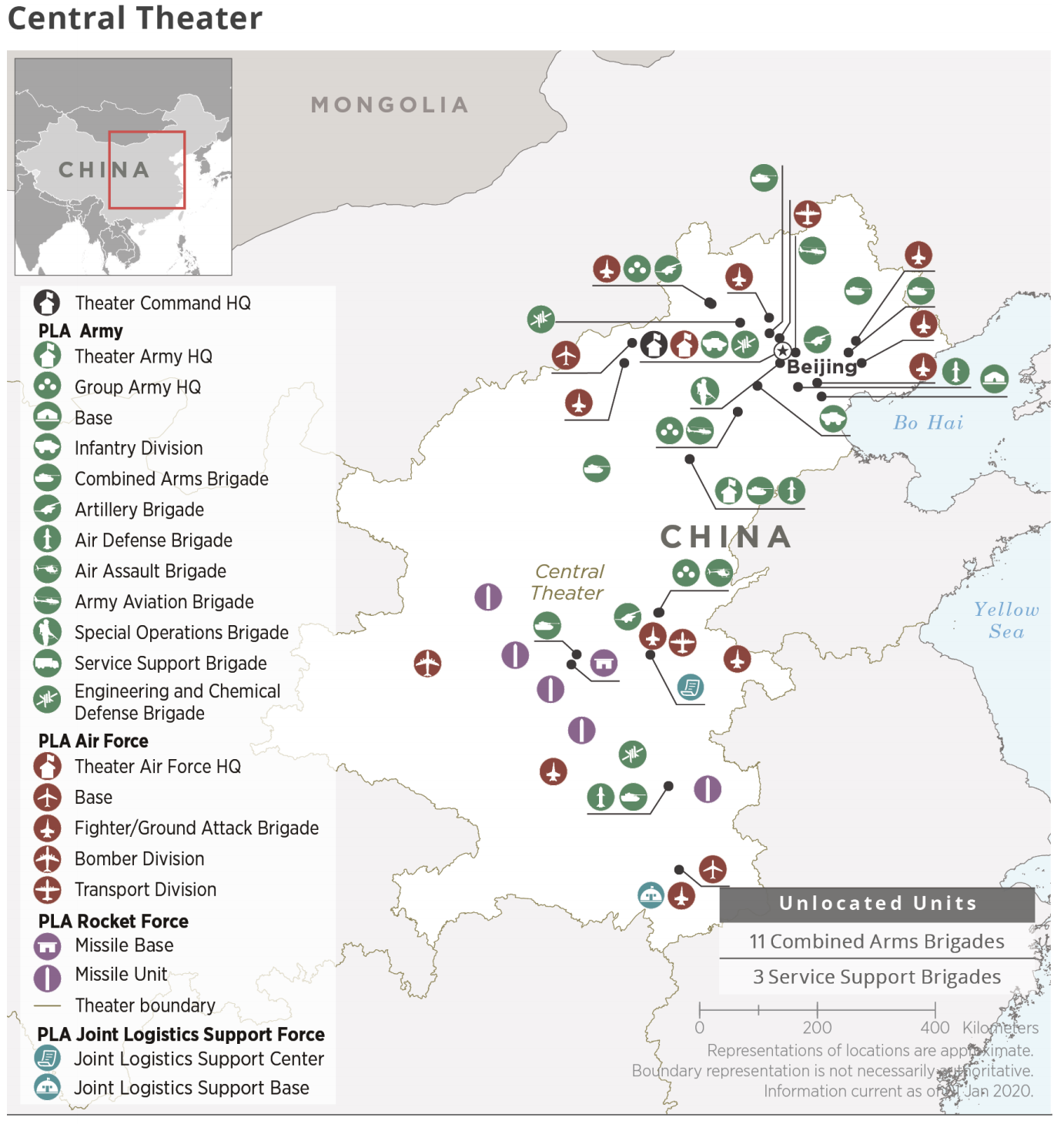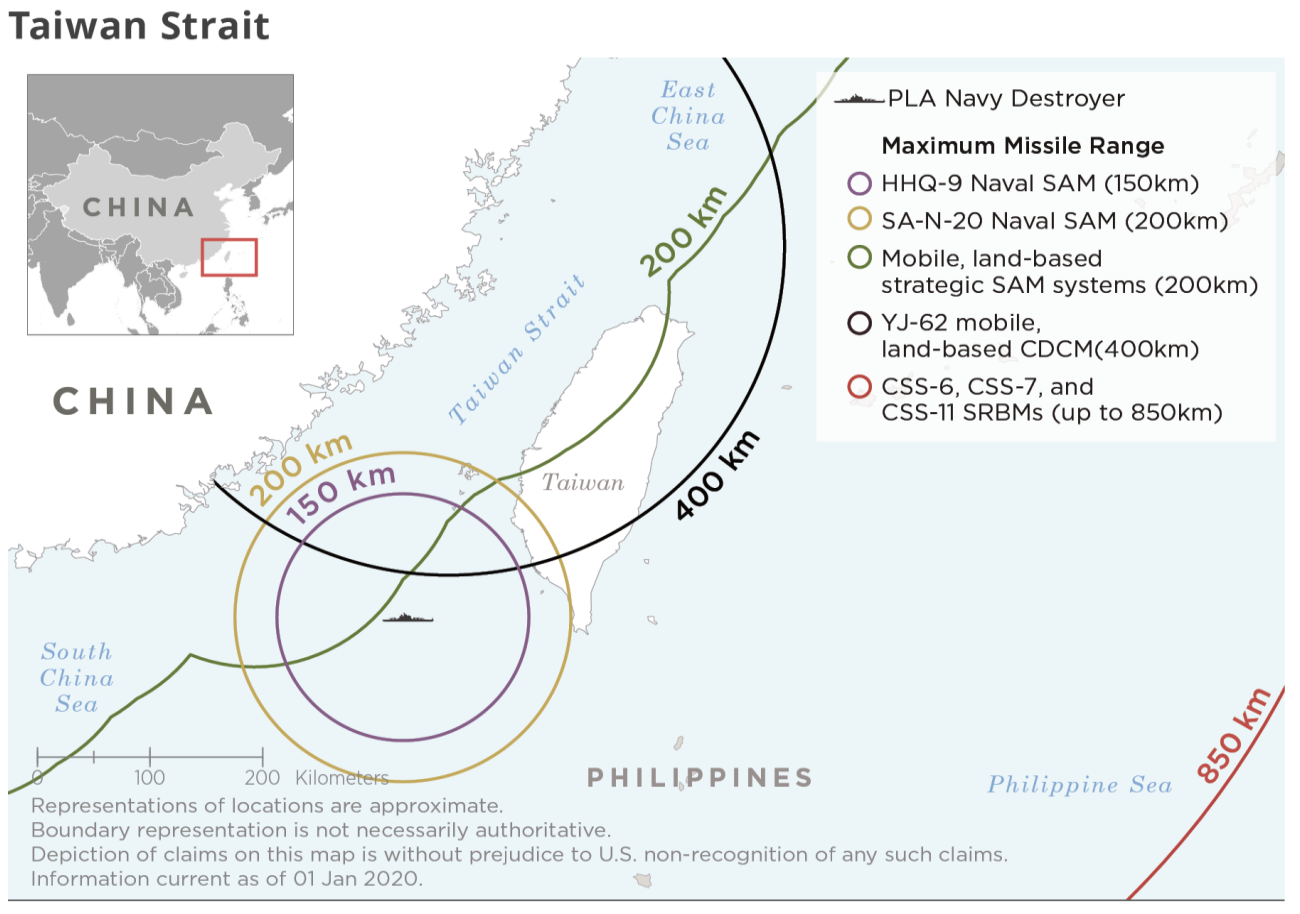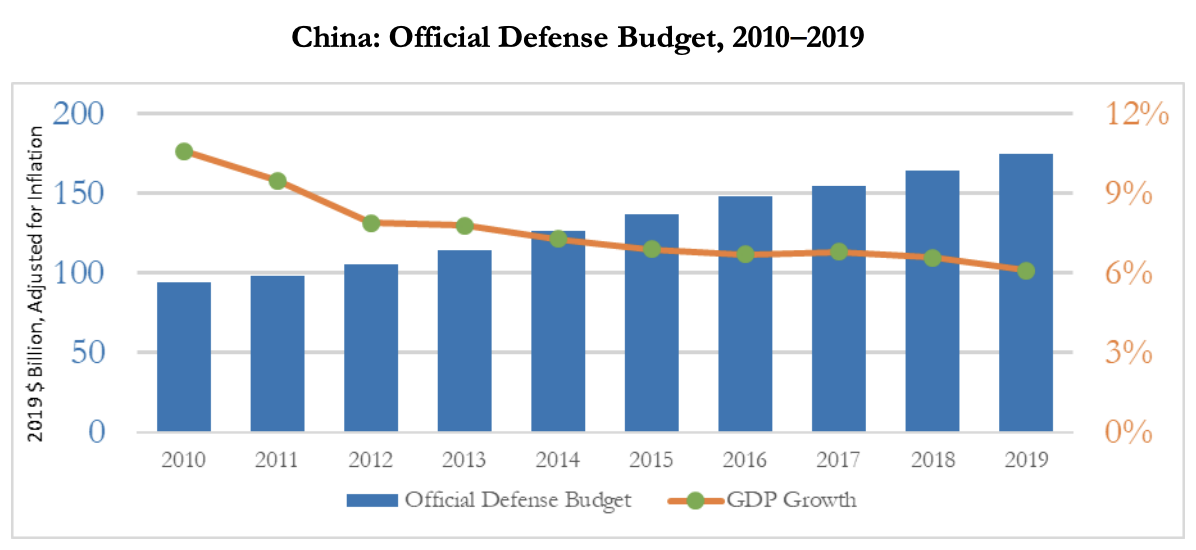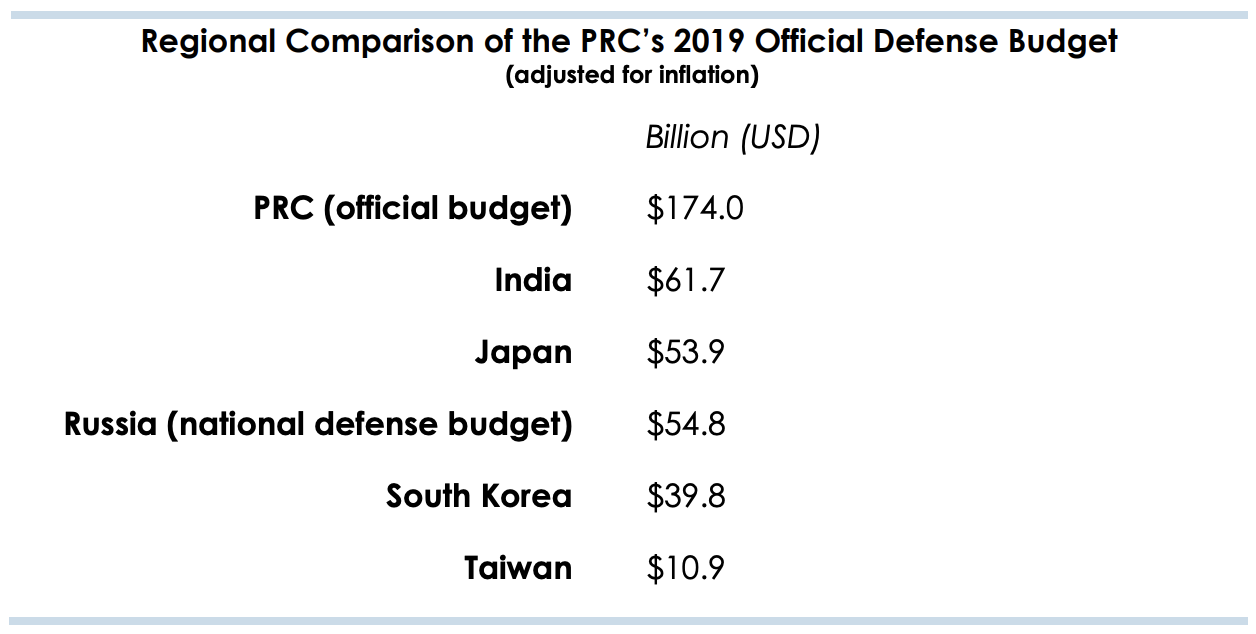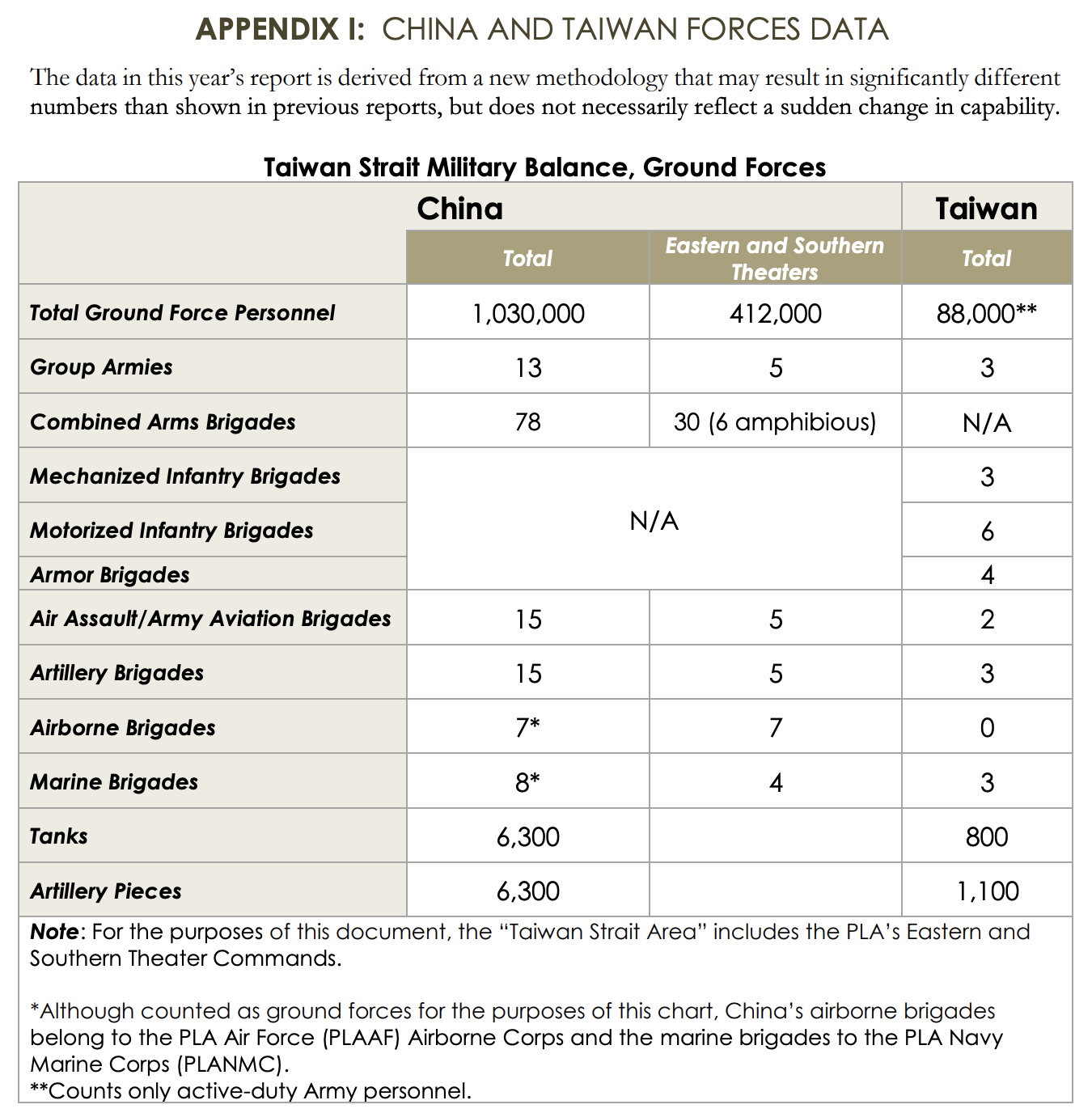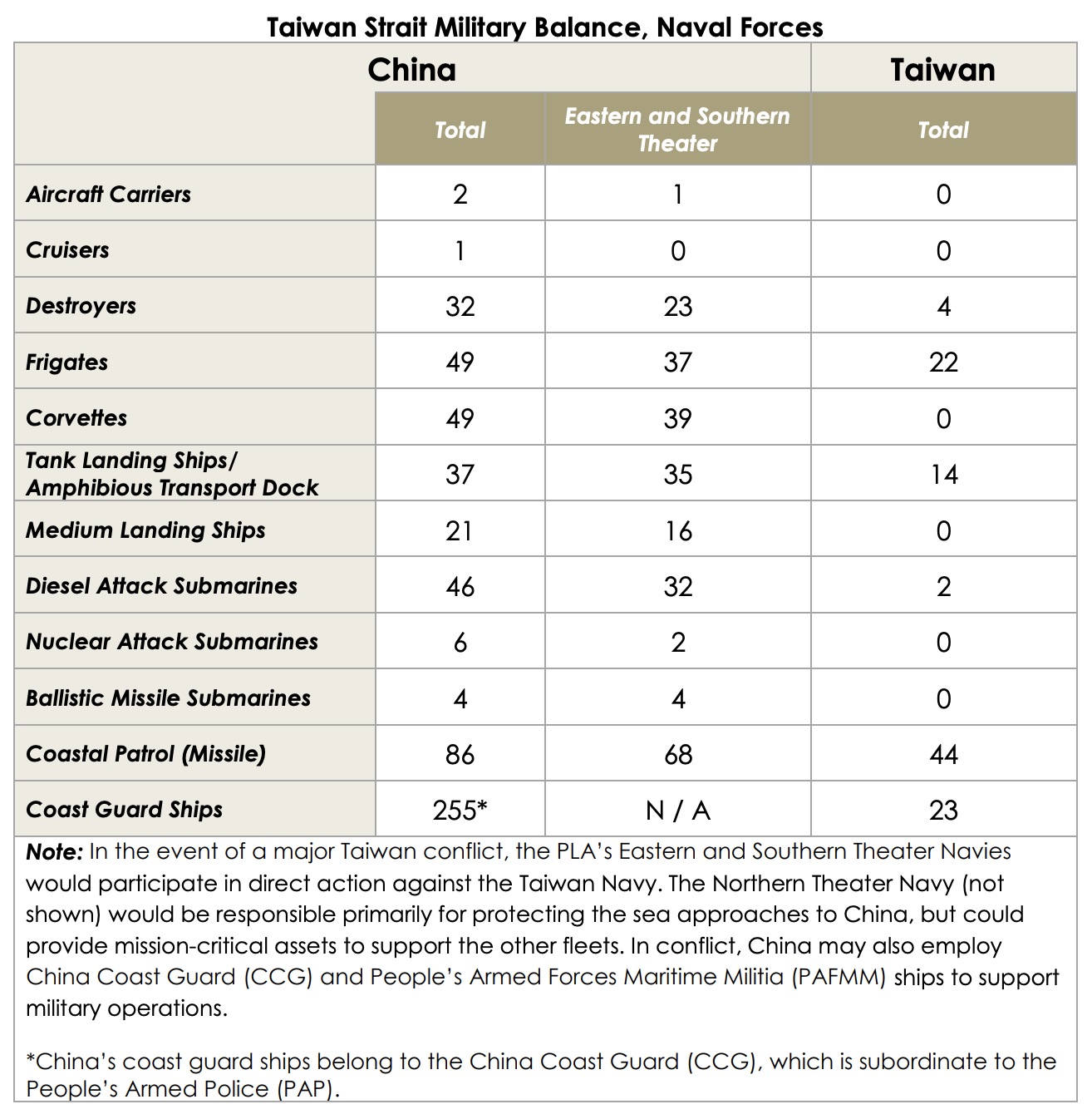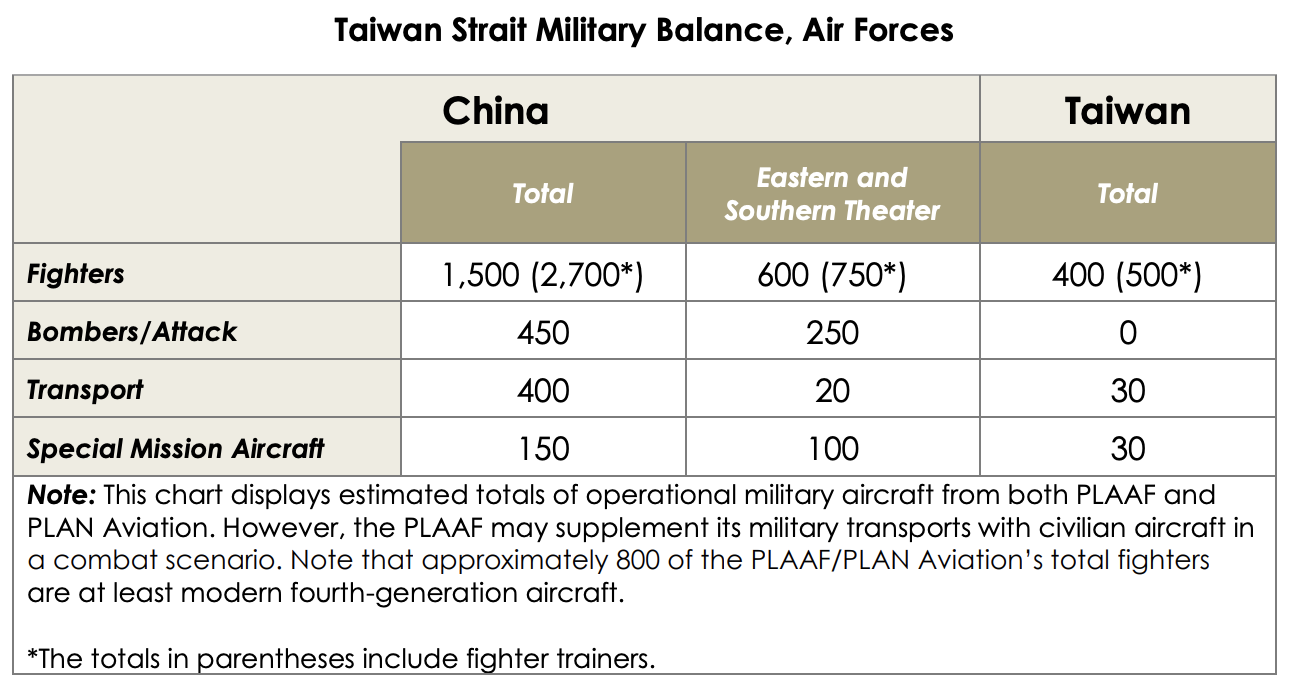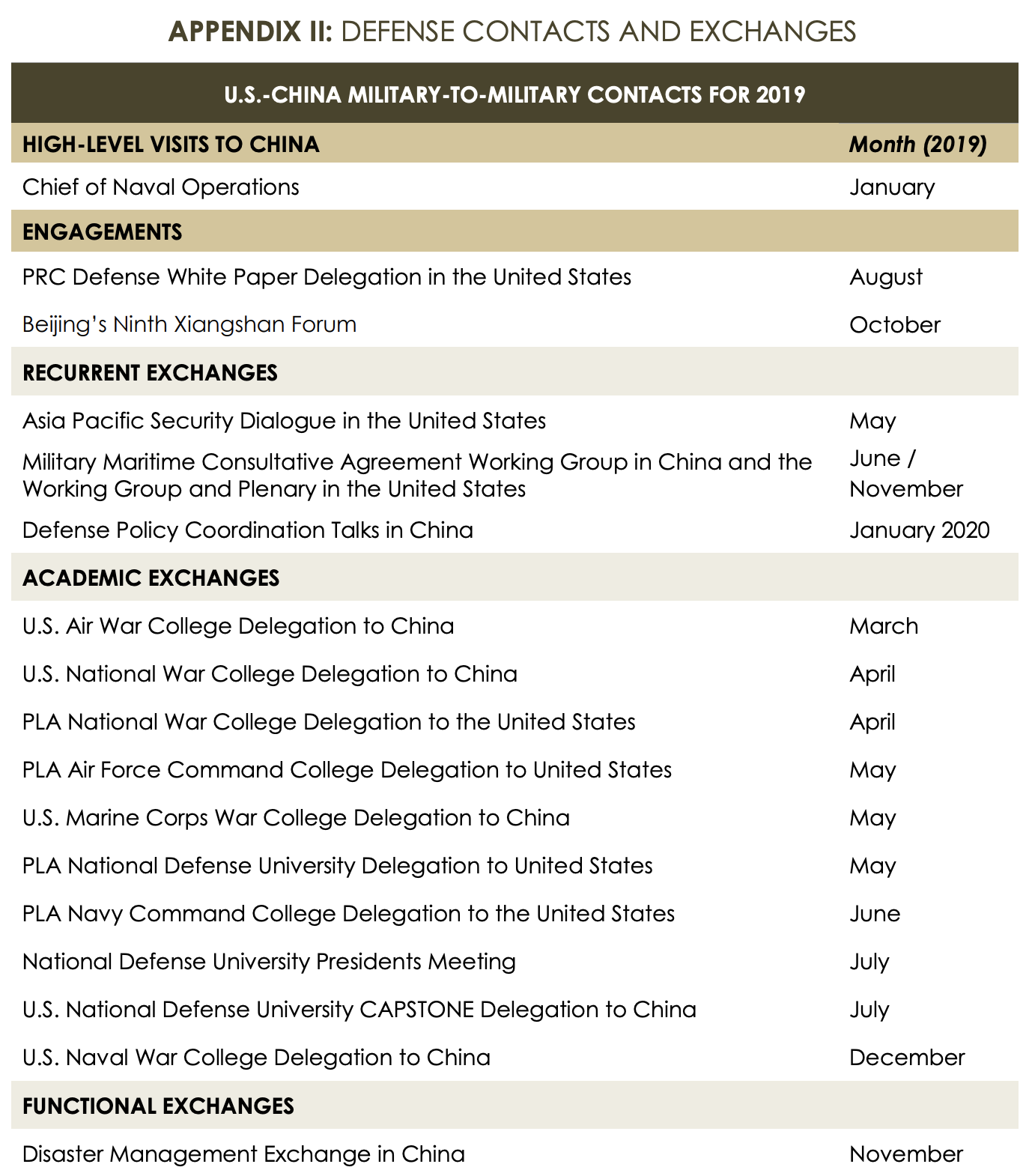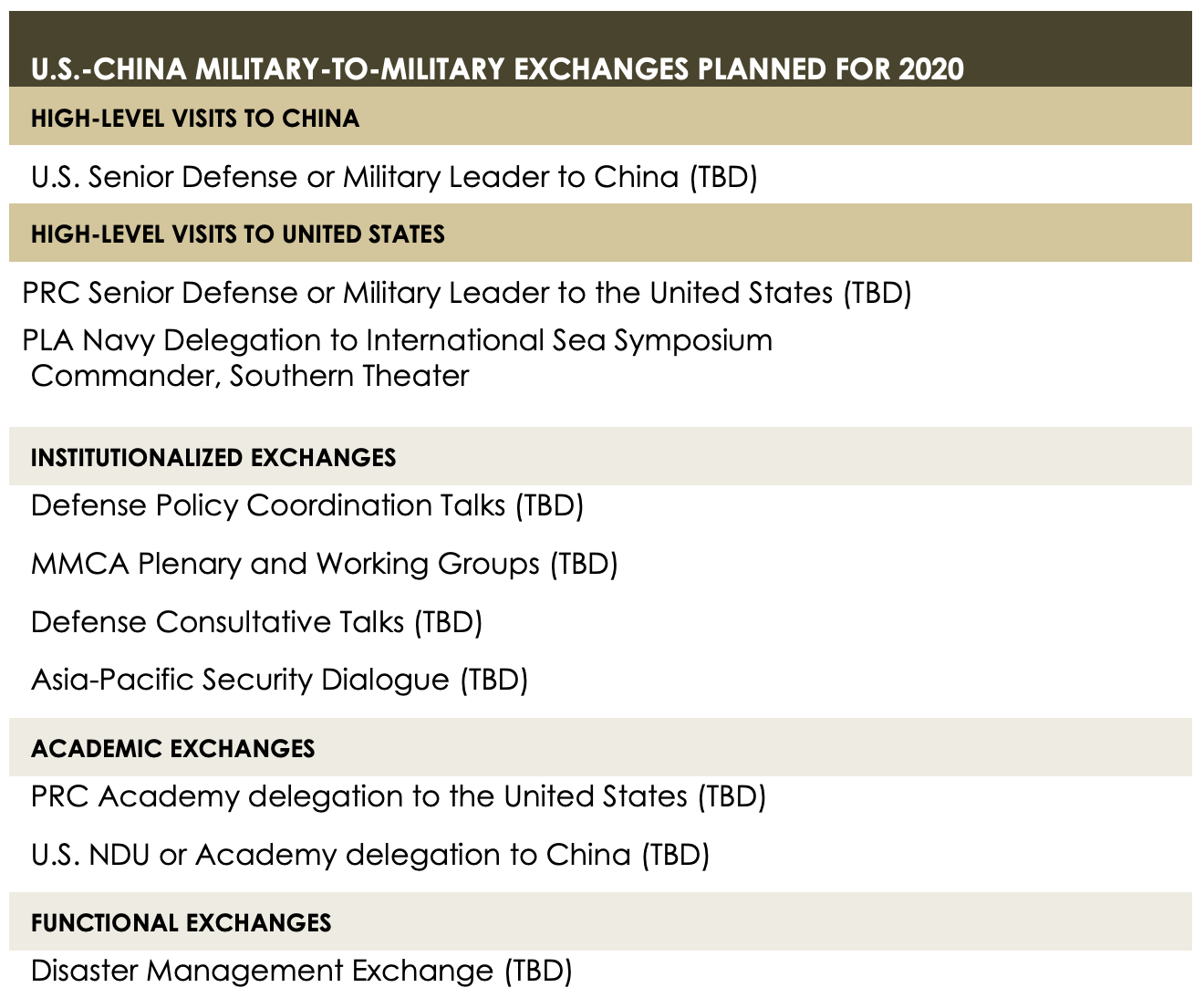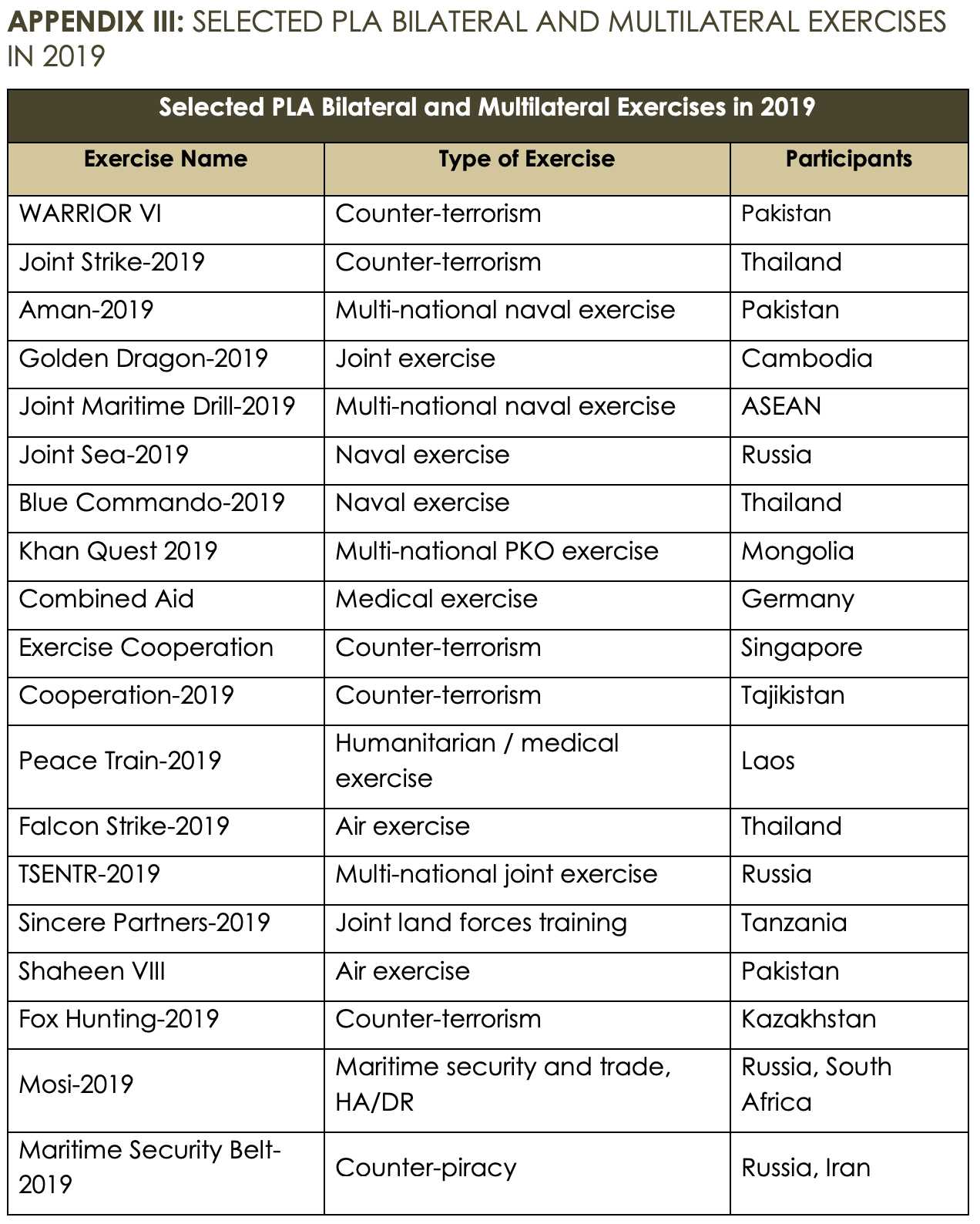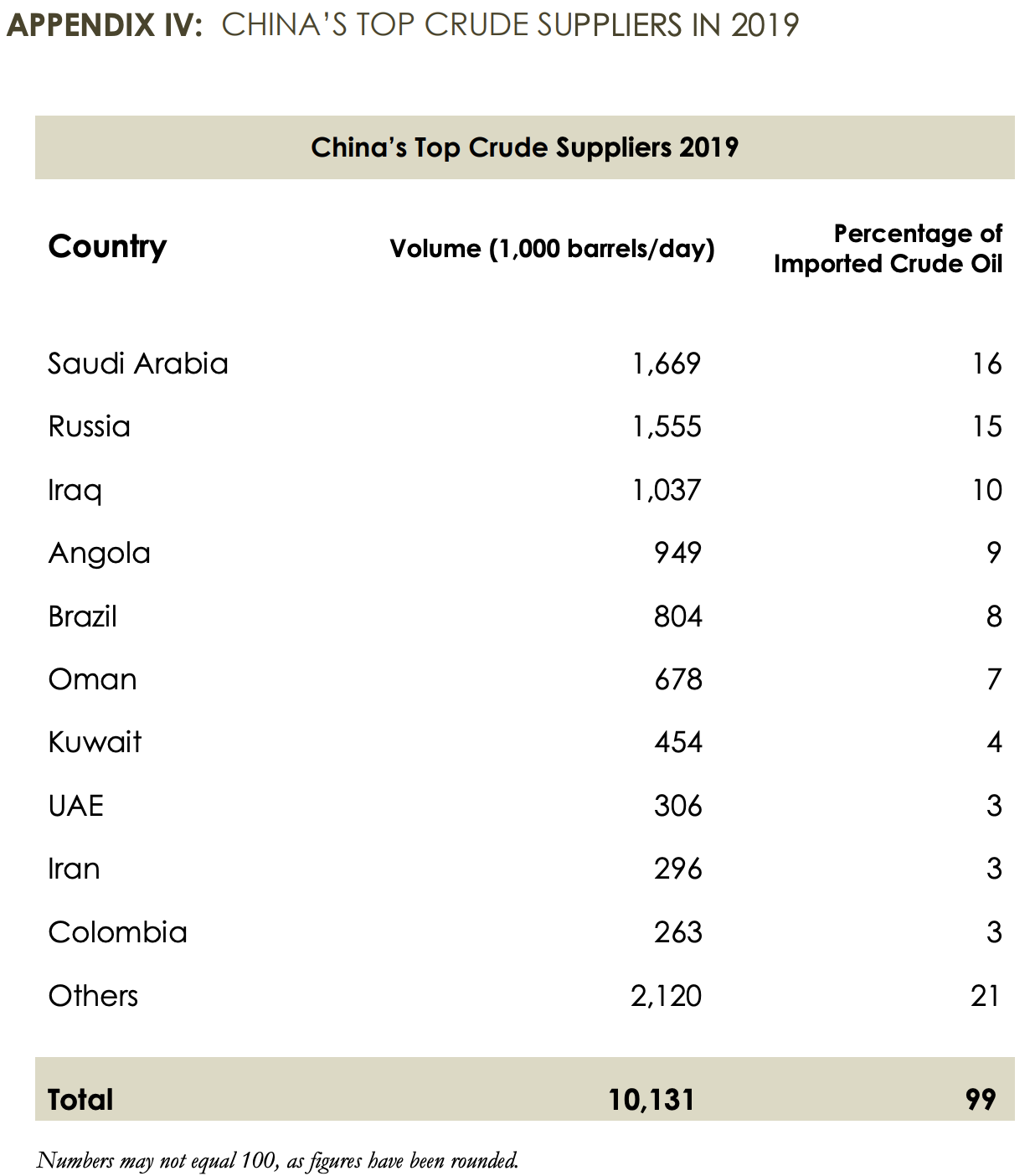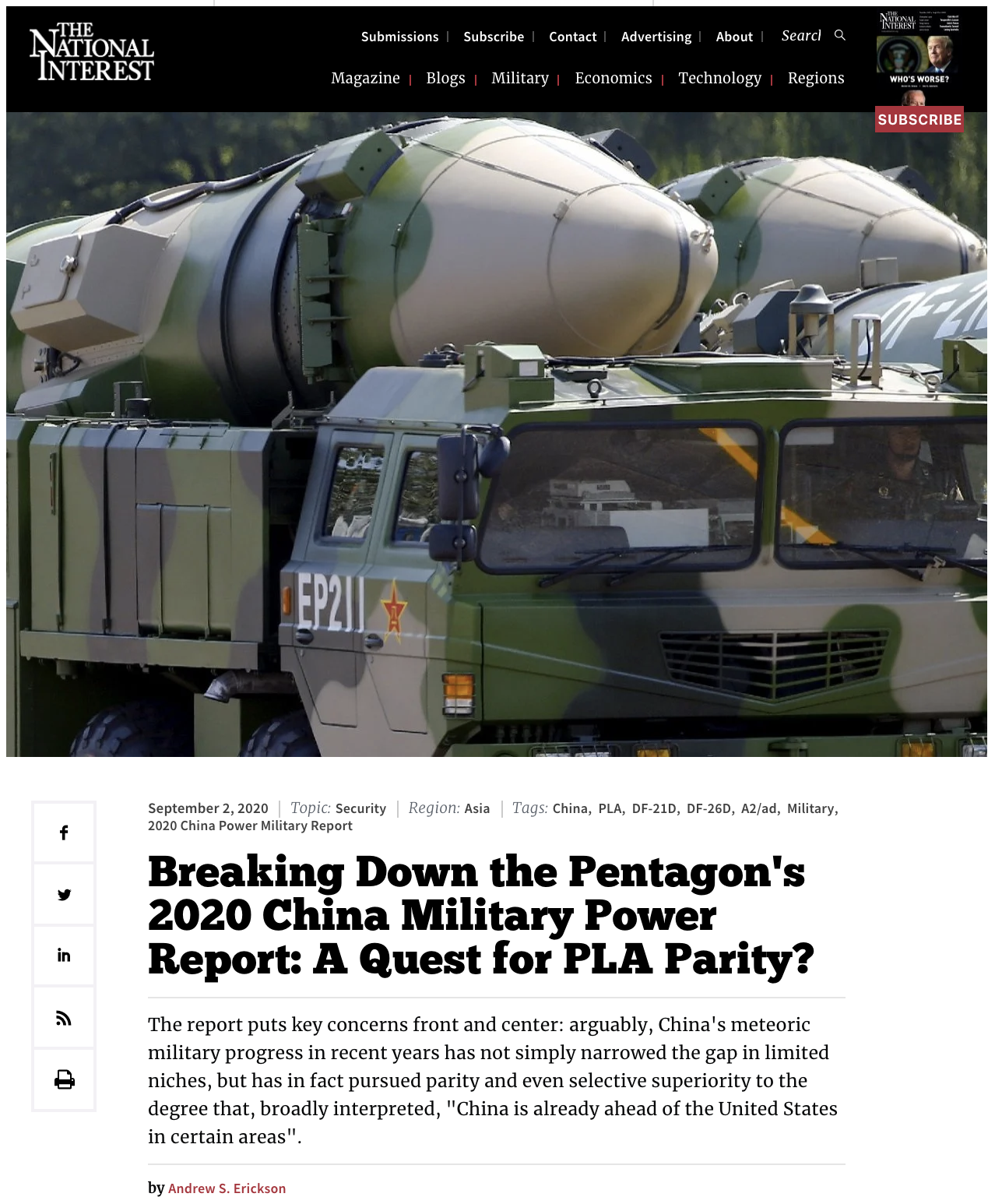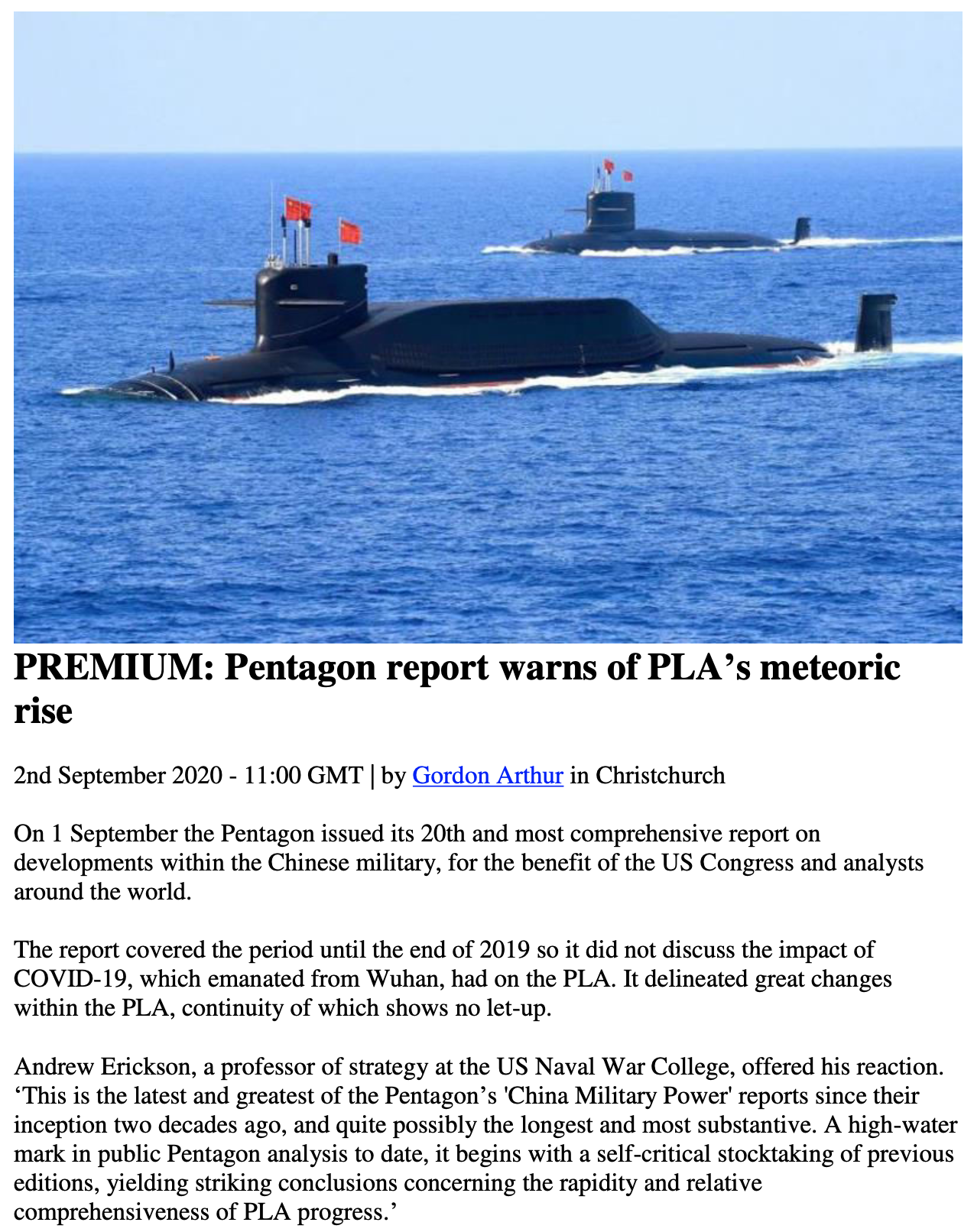U.S. Department of Defense Annual Reports to Congress on China’s Military Power—2000 to 2023—Download Complete Set + Read Highlights Here
Now that the Department of Defense (DoD) has just released the 2023 China Military Power Report (CMPR)… you can access the Full Text & accompanying documents below. Since I couldn’t find a single-source location on the Internet, and the Pentagon has deactivated some of the previous links, I decided to make my own. Now you can download cached PDFs of all 23 CMPRs published to date directly by year!
Compare today’s content with ALL previous editions back to 2000, together with accompanying rollouts & analysis.
As someone who’s been working hard to follow China’s meteoric military rise throughout these past two decades, I’d summarize it as follows: It’s been a full-time job to keep up!
Hope this compilation can make your own keeping up, or following up, at least a little bit easier—and stay tuned for the next major developments sure to follow soon…
2023 + Accompanying Fact Sheet & Press Release
2018 + Accompanying Fact Sheet
***
Andrew S. Erickson, “Xi’s Fast & Furious Nuclear Buildup & Beyond: Key Text from Pentagon’s 2023 China Military Power Report,” China Analysis from Original Sources 以第一手资料研究中国, 16 January 2024.
Office of the Secretary of Defense, Military and Security Developments Involving the People’s Republic of China 2023 (Washington, DC: Department of Defense, October 19, 2023).
- Publication summarizing report’s China nuclear weapons-related content:
Gabriel B. Collins and Andrew S. Erickson, Reaping the Whirlwind: How China’s Coercive Annexation of Taiwan Could Trigger Nuclear Proliferation in Asia and Beyond (Houston, TX: Baker Institute for Public Policy, Rice University, 25 October 2023).
CLICK HERE TO DOWNLOAD FULL-TEXT PDF.
KEY CONTENT FROM 2023 CHINA MILITARY POWER REPORT:
[Please note: bolding, underlining, italics, annotations in brackets, etc. are from me – Andrew Erickson – and not from the original report itself. Be sure to check the report’s exact text firsthand here.]
p. i
“The 2022 National Security Strategy states that the People’s Republic of China (PRC) is the only competitor to the United States with the intent and, increasingly, the capacity to reshape the international order.”
“This report covers security and military developments involving the PRC until the end of 2022.”
p. iv
PLA 2027 milestone reaffirmed in Xi’s October 2022 speech
“During his October 2022 speech at the opening ceremony of the 20th Party Congress, Xi reaffirmed his commitment to the PLA’s 2027 milestone for modernization to accelerate the integrated development of mechanization, informatization, and intelligentization of the PRC’s armed forces. If realized, this capability milestone could give the PLA the capacity to be a more credible military tool for the CCP’s Taiwan unification efforts.”
Multi-domain precision warfare
“In 2022, the PLA continued discussing a new “core operational concept,” called “Multi-Domain Precision Warfare (多域精确战)” (MDPW). MDPW is intended to leverage a C4ISR network that incorporates advances in big data and artificial intelligence to rapidly identify key vulnerabilities in the U.S. operational system and then combine joint forces across domains to launch precision strikes against those vulnerabilities.”
p. v
PLAN sub/surface precision LACM strikes coming soon (+ p. 52)
p. vi
May be exploring conventional IRBMs (+ pp. 66-67)
“The PRC may be exploring development of conventionally-armed intercontinental range missile systems. If developed and fielded, such capabilities would allow the PRC to threaten conventional strikes against targets in the continental United States, Hawaii, and Alaska.”
p. viii
Precision weapons—“war control” vice escalation—do only what is needed, and no more [but usability incentive???]
“PLA writings state that precision weapons are not only force multipliers, but also a means of “war control” to prevent escalation.”
Robust IADS—SCS outpost radars/air defense weapons extend
“The PRC has a robust and redundant IADS architecture over land areas and within 300 nm (556 km) of its coast that relies on an extensive early warning radar network, fighter aircraft, and a variety of SAM systems. The PRC has also placed radars and air defense weapons on outposts in the SCS, further extending the range of its IADS.”
DF-17 HGV MRBM
“The PRC’s deployment of the DF-17 HGV-armed MRBM will continue to transform the PLA’s missile force. The system is possibly intended to replace some older SRBM units and is intended to strike foreign military bases and fleets in the Western Pacific, according to a PRC-based military expert.”
Ability to cyber disrupt natural gas pipeline for weeks
p. viii
Space-based ISR, space surveillance, and counterspace increasing
May 2023: >500 nuclear warheads (increase from previous projection)
>1,000 operational nuclear warheads by 2030, much higher readiness levels (exceeds previous projections)
p. ix
300 or more new ICBM silos, at least some loaded (to LOW)
Fielding DF-5C & JL-3 SLBMs
“Throughout 2022, the PRC deployed PLAN, CCG, and civilian [Not civilian, PAFMM!] ships to maintain a presence in disputed areas, such as near Scarborough Reef and Thitu Island, as well as in response to oil and gas exploration operations by rival claimants within the PRC’s claimed “nine-dash line.””
p. x
Coercive, risky operational behavior
p. xi
PRC access to parts of Ream Naval Base
PRC likely has also considered other locations for military logistics facilities
“In June 2022, a PRC official confirmed that the PLA would have access to parts of Cambodia’s Ream Naval Base. [Witnessed Shangri La Dialogue 2022 Cambodia Defense Minister presentation.] The PRC probably also has considered other countries as locations for PLA military logistics facilities, including Burma, Thailand, Indonesia, Pakistan, Sri Lanka, United Arab Emirates, Kenya, Equatorial Guinea, Seychelles, Tanzania, Angola, Nigeria, Namibia,Mozambique, Bangladesh, Papua New Guinea, Solomon Islands, and Tajikistan.”
p. xii
Fujian CV has EM cats, more hulls to follow in class (+ p. 54, pp. 57-58)
p. 3
“full reunification”—resolve Taiwan by 2049
Officially legal PLA mobilization to defend overseas interests
p. 4
2035/2049 goals
p. 8-9
Central National Security Council (CNSC)
National Security Strategy
National Security Law
p. 13
2027
p. 15
$12 million in drones to Russia
“China’s expansive and unregulated commercial drone market has allowed Russian defense forces to routinely acquire small drones and dual-use unmanned aerial vehicles (UAVs) to support their war in Ukraine. Between March 2022 and 2023, Chinese firms exported more than $12 million worth of drones and drone components to Russia. Chinese-origin drones have been employed by Russian forces for targeting, surveillance, and strike missions in Ukraine. In August 2023, Beijing announced it would implement its first controls on the civilian and dual-use drone market, as well as the sale of civilian-use counter-UAV systems, in response to international speculation over Chinese drones’ use in Russia’s war of aggression in Ukraine.”
p. 17
Solomon Islands Security Agreement
“According to a draft copy of the China-Solomon Islands Security Agreement, China would be permitted to send armed policy and military personnel to the Solomon Islands to help maintain order, though Honiara denied this would lead to a PRC military base. Beijing probably seeks to use security agreements with the PICs to justify the expansion of PLA security activities in the region.”
PRC settled 11 land-based territorial disputes with 6 neighbors since 1998
p. 19
Double standard in intel ship deployment
“The PRC has long challenged foreign military activities in its claimed exclusive economic zone
(EEZ) in a manner that is inconsistent with the rules of customary international law as reflected in the United Nations Convention on the Law of the Sea. However, in recent years, the PLA has begun conducting the same types of military activities inside and outside the First Island Chain (FIC) in the EEZs of other countries, including the United States. This activity highlights China’s double standard in the application of its interpretation of international law. Examples include sending intelligence collection ships to collect on military exercises such as the Rim of the Pacific (RIMPAC) exercise off Hawaii in 2014 and 2018, TALISMAN SABER off Australia in 2017, 2019, and 2021, and operating near Alaska in 2017 and 2021. PRC survey ships are also extremely active in the SCS and frequently operate in the claimed EEZs of other nations in the region such as the Philippines, Vietnam, and Malaysia.”
p. 23
National Defense Transportation Law, etc.
p. 31
Common Mil-Civ Standards have facilitated land reclamation and military construction in SCS
“Another element seeks to set common military and civilian standards to make infrastructure easier to use in emergencies and wartime. This aspect of MCF has arguably the greatest reach into the PRC’s local governance systems as military requirements inform infrastructure construction at the province, county, and township levels. The influence of this aspect of MCF is visible in the PRC’s major land reclamations and military construction activities in the SCS, which brought together numerous government entities, the PLA, law enforcement, construction companies, and commercial entities.”
p. 34
2027
“In 2020, the PLA added a new milestone for modernization in 2027, to accelerate the integrated development of mechanization, informatization, and intelligentization of the PRC’s armed forces, which, if realized, could give the PLA capabilities to be a more credible military tool for the CCP’s Taiwan unification efforts. During his October 2022 speech at the opening ceremony of the 20th Party Congress, Xi stated that China intends to complete the plan to modernize the PLA by 2027.”
MDPW
p. 38
effective restraint of warfare
“The dialectical unity of restraining war and winning war. This tenet seeks to resolve the dilemma that using too little force may protract a war instead of stopping it while the unconstrained use of force may worsen a war and make it harder to stop. Calling for the “effective restraint of warfare,” this tenet seeks to avoid war first through sufficient military preparations and powerful conventional and strategic forces that act in concert with political and diplomatic efforts to “subdue the enemy’s troops without fighting.” If war is unavoidable, however, this aspect calls for restraining war by taking the “opening move” and “using war to stop war.””
p. 39
2027
“The PLA’s 2027 modernization goal aligns with the 100th anniversary of the PLA’s founding. During his October 2022 speech at the opening ceremony of the 20th Party Congress, Xi said that China intends to complete the plan to modernize the PLA by 2027. In a March 2021 speech, Xi detailed that the 2027 modernization goal is the first step in a broader modernization effort. PLA writings note the “three-step” modernization plan connects “near-, medium-, and long-term goals in 2027, 2035, and 2049” respectively.
The PRC’s goals for modernizing its armed forces in the “New Era” are as follows:
- By 2027: “Accelerate the integrated development of mechanization, informatization, and intelligentization,” while boosting the speed of modernization in military theories, organizations, personnel, and weapons and equipment.”
“The 5th Plenum communique holds that the 2027 goal means that the Chinese military should comprehensively push forward the modernization of military theories, military organizational form, military personnel, and weapons and equipment. PRC media, citing a military source, connected the PLA’s 2027 goals to developing the capabilities to counter the U.S. military in the Indo-Pacific region, and compel Taiwan’s leadership to the negotiation table on the PRC’s terms.”
p. 41
Core operational concept: MDPW
“In 2021, the PLA began discussing a new “core operational concept,” called “Multi-Domain Precision Warfare (多域精确战)” (MDPW). MDPW is intended to leverage a C4ISR network that incorporates advances in big data and artificial intelligence, what the PLA calls the “network information system-of-systems,” to rapidly identify key vulnerabilities in the U.S. operational system and then combine joint forces across domains to launch precision strikes against those vulnerabilities. MDPW is meant to sit atop an “operational conceptual system-of systems,” suggesting the PLA will develop additional subordinate operational concepts and use simulations, war games, and exercises to test, evaluate, and improve these future-oriented operational concepts. The timing of MDPW’s appearance vis-à-vis China’s updated doctrine and military strategic guidelines suggests that MDPW serves as a connection between them, likely amplifying themes and guidance in both while focusing on the contours of what the PLA must be able to do to win future wars.”
2022.08 at least 4 ballistic missiles overflew Taiwan
“During the August 2022 Congressional Delegation (CODEL) visit to Taiwan, the PLA Rocket Force fired multiple ballistic missiles into impact zones in waters around Taiwan; this included at least four missiles that overflew Taiwan, which was unprecedented. The military drills afforded the PLA an opportunity to train simulated joint firepower strike operations.”
p. 42
5 Incompatibles
p. 46
Military Leadership Organizational Chart
p. 47
World’s largest active-duty military force
“The PLA is the world’s largest active-duty military force and comprised of approximately 2.185 million active, 1.17 million reserve, and 660,000 paramilitary personnel for a total force of 4 million.”
2027 benchmark
“The force also progresses toward its 2027 benchmark of military modernization that aligns with the 100th anniversary of the PLA’s founding on August 1, 1927. The 2027 benchmark, introduced during the 14th Five Year Plan”
p. 48
“(2021-2025), represents the start of the new three-step development strategy that continues Xi’s approach of military reform to transform the PLA. The original three-step modernization strategy sought to achieve mechanization by 2020; modernization of military theory, organization, personnel, and equipment by 2035; and to become a world-class force by mid-century. With basic mechanization considered achieved in 2020, the 2027 goal is a short-term marker and represents a modification, not a compression in timeline, [distinction = ???] for China’s ambition to achieve complete military modernization of the PLA by 2035. The PLA centenary goal set by the CCP accelerates the integrated development of mechanization, informatization, and intelligentization and to field a combat-ready force with improved strategic capabilities to defend national sovereignty, security, and development interests by 2027.”
p. 50
First-ever CMPR mention of PCH191 [AKA PHL-16]
Used in 2022.08 PLA exercise
“The PLAA used its new PCH191 long-range rocket artillery system during live fire events along China’s east coast as a response to the U.S. CODEL in August 2022. The new long-range MRL is capable of striking Taiwanfrom mainland China.”
p. 52
Construction 4th Yushen LHA by early 2023
“In 2022, the PLAN commissioned its third YUSHEN-class Amphibious Assault Ships (LHA) and has likely begun construction on a fourth as of early 2023.”
PLAN >370 ships & submarines, including >140 major surface combatants
Intel collection ships—double standard
“The PRC has long challenged foreign military activities in its EEZ in a manner that is inconsistent with the rules of customary international law as reflected in the United Nations Convention on the Law of the Sea. However, in recent years, the PLA has begun conducting the same types of military activities inside and outside the FIC in the EEZs of other countries, including the United States. This activity highlights the PRC’s double standard in the application of its interpretation of international law. Examples include sending intelligence collection ships to collect on military”
p. 53
“exercises such as the RIMPAC exercise off Hawaii in 2014, 2018, and 2022, TALISMAN SABER off Australia in 2017, 2019, and 2021, and operating near Alaska in 2017 and 2021. Chinese intelligence collection ships also operated near sensitivity defense facilities off Australia’s west coast in May 2022 and near Japan in July 2022.PRC survey ships are also extremely active in the SCS and they frequently operate in the claimed EEZs of other nations in the region such as the Philippines, Vietnam, and Malaysia.”
Sizeable force of highly capable logistics replenishment ships, e.g., Fuyu AOEs
p. 54
CV-18 Fujian to be commissioned in 2024, first in series, electromagnetic cats (+ p. xii, 57-58)
p. 55
PLAN ship numbers: 2025—395, 2030—435
Much growth in major surface combatants
Current PLAN submarine force: 6 SSBNs, 6 SSNs, 48 SS (60 total)
2025 total: 65
2030 total: 80
“The PLAN has placed a high priority on modernizing its submarine force….”
Expansion in submarine construction capacity, and its utilization in practice, will substantially exceed old platform retirements.
First credible deterrent: 6 operational 094s
“the PLAN’s six operational JIN-class SSBNs represent the PRC’s first credible sea-based nuclear deterrent.”
JL-2 or JL-3
With longer range SSBN, 096 likely to begin construction in near future.
“The PRC’s next-generation TYPE 096 SSBN will reportedly be armed with follow-on longer range SLBM. The TYPE 096 will likely begin construction in the near future.”
“the PRC will operate its JIN and TYPE 096 SSBN fleets concurrently in the 2030s. This would align with Xi’s 2018 directive for the SSBN force to achieve ‘stronger growth’.”
p. 56
2022.05-2023.01: 2 093B SSGNs launched; could have three operational by 2025
–ASW
–LACM
…deep water ASW weakness
Jiangkai II: from 33 to 40+
Jiangkai III
Jiangdao: production run completed at 72 in February 2021.
Luoyang III: 25 (with additional hulls under construction)
–Lengthened mod 12 (with additional hulls under construction)
Renhai: 8 (with additional hulls under construction)
Early 2022: Renhai test-launch 540 NM ASBM
–Possibly Luyang III/mod launchable
“In early 2022, the PLAN released a video of RENHAI CG test launching an anti-ship ballistic missile with a reported/estimated range of 540NM. The new ship launched anti-ship ballistic missile can possibly be launched by the LUYANG III and LUYANG III MOD DDGs.”
p. 57
ASCMs
YJ-83 (135 nm)
YJ-62 (270 nm): Luyang II
YJ-18A (290 nm): Luyang III, Renhai
YJ-12A supersonic (270 nm): modernized destroyers, next-generation frigates
SS-N-27B (120 nm): 8 of 12 Kilos; improved YJ-18 on Song, Yuan, Shang
Containerized YJ-18 for covert employment on merchant ships!
“It is possible the PRC is developing a launcher that can fit inside a standard commercial shipping container for covert employment of the YJ-18 aboard merchant ships.”
Filling OTH targeting gap
“The PLAN recognizes that long-range ASCMs require a robust, over-the-horizon (OTH) targeting capability to realize their full potential. To fill this capability gap, the PLA is investing in joint reconnaissance, surveillance, command, control, and communications systems at the strategic, operational, and tactical levels to provide high-fidelity targeting information to surface and subsurface launch platforms.”
LACMs likely on cruisers, destroyers, Shang III SSGN
Amphibs:
3-4 075 LHAs
8 071 LPDs, which can carry several Yuyi LCACs and/or Yubu LCUs
p. 58
Shandong CV operational (+ pp. xii, 54)
Shipborne aircraft under development:
J-15 catapult variant, J-15S taker, J-15D EW
J-35 variant of J-31, conducted first flight 2021
KJ-600 AEW flight testing since 2020
Z-20F in development for Renhai, Luyang III mod, 075 LHA
Sea trials for VTOL UAVs (ISR): SD0-40, CSC-005, S-100 Camcopter, AV-500 UAV
Land-based aircraft
H-6J (H-6K naval variant), carries YJ-12
Y-9 ASW/Maritime Patrol aircraft with MAD
p. 59
fixed-wing medium-to-large UAVs: Xianglong HALE, BZK-005 MALE, ASN-209 MAME
Auxiliary ships: first domestic polar icebreaker—Xuelong 2
SSBNs
JL-2 3,900 nm
JL-3 >5,400 nm: portions of CONUS targetable from PRC littoral
p. 60
PLANMC: counter-piracy embarkations from Djibouti; evacuation and assist not yet seen
Amphibious sealift assault with RO-ROs, LCACs
“The PLANMC aviation brigade participated in three-dimensional amphibious assault training during the year which included air assault components, amphibious assault vehicles, and a combination of Landing Craft Air Cushion (LCAC) and assault boats. This training was conducted in conjunction with a commercial roll-on/roll-off vessel as the PLANMC continues to increase their integration with civilian vessels and expanding their sealift means.”
p. 62
PLAAF & PLAN Aviation
PRC military aviation: most aircraft in region, third-most in world
3,150 aircraft; 2,400 combat
PLAAF: “offensive and defensive operations”
J-20 operationally fielded, new 2-seater variant
Upgrades may include installing higher-thrust WS-15 engines for supercruise capability
FC-31/J-31 export/carrier variants
p. 63
H-6K has turbofan engines, standoff weapons including 6 LACMs
Can range Second Island Chain targets from PRC airfields
H-6G long supported maritime missions; new H-6J (marinized H-6K) carries six YJ-12 ASCMs, enabling anti-ship targeting out to the Second Island Chain
H-6N operationally fielded; 2020.10 observed carrying ALBM, may be nuclear-capable.
Y-9/GX-11 jamming/ECM
AEW&C: Extends IADS
KJ-500: aerially refuellable
KJ-2000
KJ-200
Aerial refueling:
H-6U
Larger IL-78 Midas (small number)
Developing Y-20 variant
p. 64
AG600: world’s largest seaplane
UAS:
Xianglong jet-powered
WZ-8 supersonic
GJ-11 stealth UCAV mod
Maritime ISR: BZK-005, TW-328/TB001
One of world’s largest advanced long-range SAM forces
S-300 + HQ-9/-9B
S-400 + HQ-19 BMD
KKV—midcourse interceptor, tested 2021.02.04; will form upper-layer multi-tier missile defense.
p. 66
PLARF
Conventionally-armed ICBMs: “significant risk to strategic stability” (+ pp. vi, viii, 103-14)
“The PRC may be exploring development of conventionally-armed intercontinental range missile systems. If developed and fielded, such capabilities would allow the PRC to threaten conventional strikes against targets in the continental United States, Hawaii, and Alaska. Conventionally-armed ICBMs would present significant risks to strategic stability.”
DF-21D: LRPS vs. ships
DF-26 fielded 2016
p. 67
DF-26 designed to rapidly swap conventional/nuke warheads, capable of precision land-attack/anti-ship strikes in SCS, WESTPAC, IO
2020 ASBM test vs. moving target
Developing/testing several new variants theater missiles
Develop anti-BMD capabilities/methods
DF-17 passed several tests, deployed vs. foreign bases/fleets
“DF-26 is designed to rapidly swap conventional and nuclear warheads and is capable of conducting precision land-attack and anti-ship strikes in the Western Pacific, the Indian Ocean, and the SCS from mainland China. In 2020, the PRC fired anti-ship ballistic missiles against a moving target in the SCS. The PLARF is developing and testing several new variants of theater-range missiles and developing capabilities and methods to counter adversary BMD systems. The DF-17 passed several tests successfully and is deployed operationally. In 2020, a PRC-based military expert described the primary purpose of the DF-17 as striking foreign military bases and fleets in the Western Pacific. The PRC may be exploring development of conventionally-armed intercontinental range missile systems. If developed and fielded, such capabilities would allow the PRC to threaten conventional strikes against targets in the continental United States, Hawaii, and Alaska. Conventionally-armed ICBMs would present significant risks to strategic stability.”
350 ICBMs
DF-5 mod has 5 MIRVs
DF-41 deployed, 2 brigades
DF-27 IRBM/ICBM: 5,000-8,000 km range
Strategic HGV
FOBS
“The PLARF is developing ICBMs that will significantly improve its nuclear-capable missile forces with more survivable delivery systems. The PRC has doubled and continues to grow the number of launchers at most ICBM units. The PRC’s ICBM arsenal consists of approximately 350 ICBMs, including fixed and mobile launchers capable of launching unitary and multiple reentry vehicles. The PRC’s fixed ICBMs consist of the multiple CSS-4 (DF-5)-class missiles, one of which is capable of carrying up to five (Multiple independently targetable reentry vehicle) MIRV’s and a silo-based CSS-10-class missile. The solid-fueled, road-mobile CSS-10 (DF-31)-class and CSS-20 (DF-41) ICBMs complement this force. The CSS-10 Mod 2 (DF-31A), with a range in excess of 11,000 km, can reach most locations within the continental United States. The DF-41 ICBM has been operationally deployed with commentary during the 2019 parade noting that two brigades existed for the system. Additionally, sources indicate a “long-range” DF-27 ballistic missile is in development. Official PRC military writings indicate this range-class spans 5,000-8,000 km, which means the DF-27 could be a new IRBM or ICBM. The PRC probably is developing advanced nuclear delivery systems such as a strategic hypersonic glide vehicle and a fractional orbital bombardment (FOB) system.”
p. 70
SSF: civilian reserve and militia units augment cyber ops
p. 71
SSF Space Systems Department: handles nearly all PLA space ops, including space warfare, via 8 or more bases.
Yuanwang space event support ships track satellite and ICBM launches.
p. 72
China has 5 space launch sites: 4 land-based, 1 sea-based
p. 74
JLSF: combat-oriented modern logistics system
Military Representative Offices—loading experts
p. 75
Training & Readiness
Likely challenges with joint ops, C2, tactical and small unit leadership
During 2022.08 Pelosi visit, 27 PLA aircraft entered Taiwan ADIZ, including 22 crossed Taiwan Strait median; subsequent heightened readiness and incidence of centerline crossings
PLA Reserves, Paramilitary, Militia: increasing operability, integration
PLAN, CCG, CMM
p. 76
Internal security: MPS, MSS, PAP, PLA, Militia
Militia force/org details
p. 77
CMM often performs tasks in conjunction/coordination with PLAN & CCG
“Local maritime militia forces…perform tasks including safeguarding maritime claims, protecting fisheries, providing logistic support, search and rescue, and surveillance and reconnaissance, often in conjunction or coordination with the PLAN and the CCG.”
p. 78
CCG = 1/3 main parts of PAP
“The PAP is organized into three main parts: the Internal Security Corps, the Mobile Corps, and the CCG.
p. 79
PAP forces probably op in Tajikistan since 2016
CCG: >150 regional/oceangoing patrol vessels >1,000 tons; including >20 corvettes from PLAN
p. 80
>50 regional patrol combatants >500 tons
300 coastal patrol craft (100-499 tons)
China Maritime Militia
CMM train with/assist PLAN + CCG
“CMM vessels train with and assist the People’s Liberation Army Navy (PLAN) and the China Coast Guard (CCG) in tasks such as safeguarding maritime claims, surveillance and reconnaissance, fisheries protection, logistics support, and search and rescue.”
Possible CMM near Natunas—ambition to expand ops?
“These operations traditionally take place within the FIC along China’s coast and near disputed features in the SCS such as the Second Thomas Shoal, Scarborough Reed, and Luconia Shoal. However, the presence of possible CMM vessels mixed in with Chinese fishing vessels near Indonesia’s Natuna Island outside of the “nine-dashed line” on Chinese maps indicated a possible ambition to expand CMM operations within the region.”
Often supplement CCG cutters at forefront of incident
2021.09-2022.09: Iroquois Reef
2020 West Capella
1950s offshore island campaigns
Occupation of Mischief Reef 1994
“CMM units have been active for decades in incidents and combat operations throughout China’s [!!] near seasand in these incidents CMM vessels are often used to supplement CCG cutters at the forefront of the incident, giving the Chinese the capacity to outweigh and outlast rival claimants. From September 2021 to September 2022, maritime militia vessels were a constant presence near Iroquois Reef in the Spratly Islands within the Philippines EEZ. Other notable examples include standoffs with the Malaysia drill ship West Capella (2020), defense of China’s HYSY-981 drill rig in waters disputed with Vietnam (2014), occupation of Scarborough Reef (2012), and harassment of USNS Impeccable and Howard O. Lorenzen (2009 and 2014). Historically, the maritime militia also participated in China’s offshore island campaigns in the 1950s, the 1974 seizure of the Paracel Islands from South Vietnam, the occupation of Mischief Reef in the Spratly Islands in 1994.”
p. 81
Beihai MM: mainland based, to Spratlys/Southern SCS
From 2014: new Spratly backbone fleet from major CMM units in Guangdong, Guangxi, Hainan. With 235 or more large steel hulls; many >50 m, >500 tons. Deploy to disputed Spratly waters below 12 degrees North.
Sansha MM—light arms
“Starting in 2015, the Sansha City Maritime Militia in the Paracel Islands has been developed into a salaried full-time maritime militia force with its own command center and equipped with at least 84 purpose-built vessels armed with mast-mounted water cannons for spraying and reinforced steel hulls for ramming. Freed from their normal fishing responsibilities, Sansha City Maritime Militia personnel – many of whom are former PLAN and CCG sailors – train for peacetime and wartime”
p. 82
Sansha MM—light arms
“contingencies, often with light arms, and patrol regularly around disputed South China Sea features even during fishing moratoriums.
Tanmen MM—Xi: support SCS “island and reef development”
1989-95 under SSF authority
Occupation/reclamation of PRC Spratly outposts: Subi, Fiery Cross, Mischief
“The Tanmen Maritime Militia is another prominent CMM unit. Homeported in Tanmen township on Hainan Island, the formation was described by Xi as a “model maritime militia unit” during a visit to Tanmen harbor in 2013. During the visit, Xi encouraged Tanmen to support “island and reef development” in the SCS. Between 1989 and 1995, the Tanmen Maritime Militia, under theauthority of the PLAN Southern Theater Navy (then the South Sea Fleet), was involved in the occupation and reclamation of PRC outposts in the Spratly Islands, including Subi Reef, Fiery Cross Reef, and Mischief Reef.”
SOF lacks real world combat experience, national level Special Ops Command; suffers from seams re PAP, Theater Commands, etc.
p. 83
SOF
PLANMC SOF in 2020.12 island seizure exercise
p. 86
PLA SOF does not cover many U.S. SOF activities
Example: PLA Political Department System handles psy ops
Employment
~70 PLANMC SOF to GoA on PLAN ships
2015 PLA SOF to Nepal post-quake
2015 PLANMC SOF helped evacuate foreigners from Yemen War
2017 PLANMC SOF recaptured Somali pirate-hijacked freighter
2020 PLA SOF in Tibet MR deployed to Indian border
Underground Facilities: PRC has thousands, constructs more each year
LRPS:
force multipliers
“war control”—military effects at limited damage/cost
Prevent escalation
Guam targetable by:
Cruise missiles—H-6K with LACMs, Renhai/other PLAN ships to deploy LACMs
Ballistic missiles—DF-26 nuclear, precision conventional, maritime
“The PRC views its ability to acquire timely, high-fidelity information as critical to its ability to execute precision strikes. The PLA’s information support system for precision strikes depends heavily on Strategic Support Force (SSF) assets to detect, identify, target, and conduct battlefield damage assessments. The PRC emphasizes the importance of space-based surveillance capabilities in supporting precision strikes and, in 2022, continued to develop its constellation of military reconnaissance satellites that could support monitoring, tracking, and targeting of U.S. and allied forces. The PRC is also investing in reconnaissance, surveillance, command, control, and communications systems at the strategic, operational, and tactical levels to provide high fidelity OTH targeting information for its strike platforms.”
IADS:
Extended by radars/air defense weapons on SCS outposts
HQ-9, -9B
S-300PMU, PMU1/2
S-400
Ballistic Missile/Cruise Missile Defenses
HQ-9 limited point defense against tactical ballistic missiles
p. 90
BMD
S-300PMU2/S-400: capability depends on interceptor, supporting infrastructure
Working on exo/endo kinetic interceptors, including midcourse interceptor vs. IRBMs, ICBMs
Type 055 will forward-deploy midcourse interceptors
HQ-19 tested vs. 3,000km ballistic missiles
Cruise Missile Defense
More robust than BMD
Long-range SAMs
Short-to-medium range augment, e.g., HQ-22
DF-17 HGV-armed MRBM (~enhanced SRBM) fielded 2020, designed to strike foreign military bases/fleets in WESTPAC
Joint Power Projection
Joint Op Capabilities beyond FIC = limited
Overseas: mostly non-combat, single service
…early 2022 STC joint distant sea training with PLAN, PLAAF, PLARF joint ops command system
p. 91
PLAN Ops
By 2023.01: 42 GoA counterpiracy escort task forces, 131 vessels, >32,000 personnel
Early 2022: distant sea joint training Eastern Indian Ocean, WESTPAC: 2 destroyers, amphibious landing dock, replenishment ship
2022.01-02: PLAN/AF supplied Tonga
2022.03: first-ever PLAN supply ship resupply PLA Support Base Djibouti
2022.08: AGI to RIMPAC
2022.09: 4-day guided missile destroyer exercise by French Polynesia
2022.11 Peace Ark to Indonesia
PLAN Platforms
Fujian: EM cats
Renhai/Luyang III escorts
8+ Renhais in service
Deploy long-range ASCMs/SAMs
8 Yuchao LPD
1st of 3 Yushen LHD commissioned 2021.04
p. 92
Y-20A heavy lift
Y-20U tanker in service 2021
Y-20 variants, include AWAC?
H-20 bomber next decade? >10,000 km range conventional/nuclear stealthy
p. 93
SSF
Network Systems Department/Cyberspace Force
2022.08 YW-5 docked Hambantota (electronics, sensors, antennae track launches)
Counterspace: directed energy, satellite jammers
Operational ground-based ASAT to LEO, pursuing to GEO
p. 94
C4I
Collecting, processing, sharing real-time data, secure comms, redundant network, fixed/mobile command posts
Near-space ISR: augmentation/redundancy in crisis
p. 95
EW
Signal/warn/deter pre-conflict
Training in jamming/anti-jamming vs. comm/radar systems, GPS sat systems
Test/validate EW weapon R&D advances
PRC can cyberattack at least localized, temporary disruptions to critical American infrastructure
Can disrupt national gas pipeline for days-weeks
“has the ability to launch cyberspace attacks—such as disruption of a natural gas pipeline for days to weeks—in the United States.”
p. 97
Intelligized Warfare
At scale and machine speed, frontier technology, unmanned systems
Space/Counterspace
Kinetic kill direct ascent missiles, ground-based lasers, orbiting space robots
Expanding space surveillance
Electronic warfare
p. 99
Number of operational satellites second only to U.S.
Increasingly sophisticated satellite ops
Probably testing dual-use technology in space
p. 100
As of 2022.03 >290 ISR satellites! [Second only to U.S.]
Nearly doubled since 2018!
PLA ~1/2 world’s ISR systems
“As of March 2022, China’s ISR satellite fleet contained more than 290 systems—a quantity second only to the United States, and nearly doubling China’s in-orbit systems since 2018. The PLA owns and operates about half of the world’s ISR systems, most of which could support monitoring, tracking, and targeting of U.S. and allied forces worldwide, especially throughout the Indo-Pacific region. These satellites also allow the PLA to monitor potential regional flashpoints, including the Korean Peninsula, Taiwan, Indian Ocean, and the SCS. In early 2023, the United States announced sanctions against Chinese companies Spacety and China HEAD Aerospace for providing imagery of Ukraine to Russian private military company Wagner during the conflict.”
ELINT sats
Monitor/track/target U.S./allied forces worldwide, especially in Indo-Pacific
All-weather, 24-hour coverage
Observe U.S. carriers, ESGs, deployed air wings
“Recent improvements to the PRC’s space-based ISR capabilities emphasize the development, procurement, and use of increasingly capable satellites with digital camera technology as well as space-based radar for all-weather, 24-hour coverage. These improvements increase China’s
monitoring capabilities—including observation of U.S. aircraft carriers, expeditionary strike groups, and deployed air wings.”
>60 COMSATs, 4 or more military-dedicated
Quantum Experimentation at Space Scale (QUESS) Quantum Enabled COMSAT
2016 launched first quantum COMSAT—Micius
2022.07 additional expanded quantum sat
7 or more new SATCOM LEO constellations–ChinaSatNet
p. 101
Beidou: 49 operational satellites
IOC 2018, last launch 2020
10m accuracy; 5m in Asia-Pacific
Regional Short Message Communications service: mass comms among users
Additional PLA C2 capabilities
Manned Spaceflight
2003: Shenzhou-5
2011: Tiangong-1 space station
2016: Tiangong-2
2020: first orbital test Next-Generation Manned Spaceship (replace Shenzhou)
2022: Mengtian Chinese Space Station lab module completed three-module space station
Modular SLVs
p. 102
2019 LM-11 launched from sea-based platform
Since 2021 expanding infrastructure near Haiyang to increase sea launch frequency
KZ-1, LM-6/-11 quick response SLVs: expand non-state, MCF; obfuscate end users
SSA/BMEW
EW counterspace
SAR jammers, including aboard military recon platforms
Deny imagery/targeting
SATCOM jammers, including re mil HF comms
p. 103
DEW
GBLs disrupt/degrade/damage EO sat sensors/components
By mid-late 2020s, PRC may field high-powered systems threatening structure of non-optical satellites
Satellite inspection/repair/ASAT
Robotic arm satellites
Shijian-17
2021.10 launched SJ-21 to GEO, moved derelict Beidou above GEO
Space-based kinetic weapons!
2021.07 FOBS test
Nuke Capabilities (+ pp. vi, viii, 66-69)
“current efforts dwarf previous attempts in both scale and complexity” vs. decade ago
p. 104
>500 operational nuclear warheads by 2023.05
>1,000 operational warheads by 2020, much at high readiness levels
Growing to “basically complete” in 2035
Probably use new fast breeder reactor + reprocessing to generate plutonium for nuclear weapons
JL-3 on 094, range CONUS from littoral, building more 094s
300+ new ICBM silos can field DF-31 + -41
New DF-5C multi-megaton warhead
Silo-based, liquid-fueled ICBM
p. 105
Nuclear buildup may change PRC nuclear strategy
p. 106
uncertainty re nuclear strategic redlines/constraints: NFU vs. C2/strategic effects, Taiwan loss
Comingling: distinguishing difficulty, inadvertent attacks
Readiness:
Combat readiness/high alert
Early Warning Counterstrike = LOW
~350 ICBMs, all can reach CONUS
p. 107
DF-5: increasing number of brigades + number of launchers per brigade
Upgrading DF-5 MIRVed ICBMs
DF-41: up to 3 warheads
New nuclear units
Increasing number of launchers in mobile ICBM units
p. 108
JL-3/Jin
Probable SCS + Bohai bastions
Jin production: accelerate sea-based nuke per Xi’s direction?
096: probably MIRVed SLBMs
6 operational Jins: near-continuous at-sea deterrence
H-6N: refueling probe, ALBM with MRV (like DF-26: nuclear precision strikes)
“The ALBM carried by the H-6N appears to be armed with a maneuvering reentry vehicle, indicating the ALBM, along with the DF-26 IRBM, is”
p. 109
“likely capable of conducting nuclear precision strikes against targets in the Indo-Pacific theater.”
Pursue selective qualitative parity re increasing array of U.S./Russian capabilities
Diverse: from low-yield precision to multi-megaton ICBMs
Publicly support FCMT, while actually impeding progress at Conference on Disarmament
Plutonium production with extensive Russian assistance:
Russian HEU fuel to dual CFR-600 fast breeder reactors at Xiapu
each capable of producing plutonium for dozens of nukes
“national development investment project”
Russia-to-China HEU exceeds entire amount removed worldwide under US/IAEA over last 3 decades!
p. 110
Weapons-grade reprocessing possibilities:
Jiuquan Plant 404
Dual reprocessing plants under construction in Jinta, Gansu
Refused IAEA safeguards
Expanding, diversifying tritium production capability
Recently expanded nuclear warhead R&D testing and production capacity
Lop Nur year-round preparations, possible zero-yield, noncompliance
Nuclear posture: from minimum to limited deterrent
2022: rejected US requests to discuss strategic stability/risk reduction
p. 111
FOB tech demo: 2021.07.27 test HGV 40,000km
Seeking lower yield development vs. campaign/tactical targets
p. 112
low-yield nuke to counter vs. Taiwan invasion fleet? DF-26 payload?
LOW/Early Warning Counterstrike
C2: space/ground sensors
Likely seeks portion force, especially new silo units, on LOW
Since 2017, PLARF exercises re early warning nuke strike and LOW responses
By 2022: likely 3 early warning satellites in orbit
2019: Putin—Russia aiding PRC in developing BM EW system
2009 Russian-Chinese intergovernmental agreement
Renewed 2021-31
Bilateral missile/carrier rocket launch notification accord
p. 114
Chem-biotech infrastructure
Potential dual-use toxins
Pharma-based agents
p. 115
BW program 1950s-late 1980s (and beyond???)
p. 116
High-Altitude Balloon
Part of near space system of systems
Military-linked aerial surveillance program
“Military and commercial entities in the PRC have been researching and developing high-altitude systems—including high altitude balloons—since at least the mid-2000s. PRC-based research institutions and companies have developed and tested high-altitude balloons as early as 2015, including payloads to support imaging, data relay, and communications capabilities. While some of this research may support civilian applications such as weather monitoring, many of these high-altitude systems are very likely intended to support PLA requirements. Chinese military publications have demonstrated interest in integrating “near-space” platforms as another layer in the PLA’s broader reconnaissance “system-of-systems,” and have highlighted the use of high-altitude systems to support various tracking and targeting missions. The high-altitude balloon shot down on February 4th, 2023, was developed as part of this broader military-linked aerial surveillance program.”
Reentered American airspace
Equipped with intelligence collection capabilities
“On January 28th, 2023, the U.S. Department of Defense detected a high-altitude balloon (HAB) approaching U.S. airspace off the west coast of Alaska. According to a timeline reconstruction published in the New York Times that made use of commercial imagery, the balloon launched from Hainan Island in China on approximately January 15th. It traveled across the Pacific over the course of 13 days, before passing over Alaska’s Aleutian Islands and then over the Alaskan mainland. The United States and Canada tracked the balloon as it crossed into Canadian airspace, where prevailing high-altitude winds blew it south, and it re-entered U.S. airspace over Idaho on January 31st. The Department of Defense tracked and monitored the balloon as it made its way across the United States and confirmed via handheld imagery from the pilot of a U-2 high altitude surveillance aircraft that the balloon was indeed equipped with intelligence collection capabilities.”
p. 119
ETC likely commands all CCG/MM ships conducting ops re Senkakus
“The Eastern Theater Command…likely commands all CCG and maritime militia ships while they are conducting operations related to the ongoing dispute with Japan over the Senkaku Islands.”
p. 121
ECS
Fishing/MM vessels, CCG escorts, PLAN overwatch
p. 122
STC
Track/react to U.S. ships operating within Nine-Dashed Line
“The Southern Theater Command is responsible for responding to U.S. freedom of navigation operations in the SCS by regularly tracking and reacting to U.S. ships operating within the China-claimed “nine-dash line.””
Can assume command as needed over ALL CCG/CMM ships operating within 9DL
“can assume command as needed over all CCG and CMM ships conducting operations within the PRC’s claimed “nine-dash line.””
p. 124
SCS: no large-scale presence of combat aircraft yet observed at outposts
p. 125
SCS
2022 deployed PLAN/CCG/civilian ships:
Presence near Scarborough, Thitu
Respond to oil/gas exploration within 9DL
CCG/PAFMM used nets/ropes to block Philippine supply boats
“the CCG and People’s Armed Forces Maritime Militia (PAFMM) used nets and ropes to block Philippine supply boats on their way to an atoll in the SCS and issued radio challenges and threats to Philippine ships during routine resupply missions.
2022.11 CCG cut tow line of Philippine Navy vessel, seized PRC rocket debris
“In November 2022, a CCG vessel forcibly seized apparent PRC rocket debris that had fallen near Philippine-occupied Thitu Island from the Philippines by cutting the tow line of a Philippine Navy vessel as it was towing debris back to shore. PRC insisted the debris was returned to them after a “friendly negotiation,” despite the Philippines producing video
evidence of the incident and issues diplomatic notes of protest.”
p. 126
Spratly Outposts
Added > 3,200 acres
Military infrastructure: 72 aircraft hangars, hardened shelters for missile platforms
Early 2018: advanced anti-ship/-aircraft missiles
Military jamming equipment
Mid-2021: during U.S.-Australia bilateral ops near Spratlys, used outposts to support navy/CG ops
p. 128
2020.06 Galwan clash prompted Western Theater Command large-scale mobilization/deployment along LAC
p. 130
2020.06.15: deadliest clash since 1962 War; killed 20 Indians, 4 PLA; PLA subsequently continuous force presence, infrastructure buildup
p. 136
Taiwan Strait
2022: 1,737 PLA aircraft into Taiwan ADIZ (up 79% from 972 incursions in 2021)
Diversified aircraft type: since 2022.09, UAVs ~10% of aircraft tracked in ADIZ
p. 137
2022.08; 3rd PRC Taiwan White Paper since 1993: more pointed tone, singles out DPP, criticizes U.S. “external interference”
p. 138
U.S. Taiwan policy:
Evolved with PRC capability/willingness to use military coercion against Taiwan: does not contradict it; is required
1982 Reagan clarified in internal memo: assistance “conditioned entirely on threat” – “permanent imperative”
PLA unsafe operational behavior: lasing, reckless maneuvers, close approaches, discharging objects
p. 139
Last 18 months: centralized, concerted campaign
Fall 2021-fall 2023: >180 PLA coercive/risky air intercepts vs. U.S. aircraft in region,
> past 2 years than in previous decade
[Rare case of up-to-the-month data being inserted in report at last minute.]
“Over the last 18 months, the PLA appears to have been engaged in a centralized, concerted campaign to perform these risky behaviors in order to coerce a change in lawful U.S. operational activity, and that of U.S. Allies and partners. Prior to the fall of 2021, the PLA routinely intercepted foreign air and maritime assets operating in the Indo-Pacific, but these earlier interactions rarely involved PLA employment of coercive and risky behavior. Between the fall of 2021 and fall of 2023, the United States has documented over 180 instances of PLA coercive and risky air intercepts against U.S. aircraft in the region – more in the past two years than in the previous decade. Over the same period, the PLA has conducted around 100 instances of coercive and risky operational behavior against U.S. Allies and partners, in an effort to deter both the United States and others from conducting lawful operations in the region. The PRC’s messaging regarding its forces’ operational behavior, such as claiming it is “justified to take forceful countermeasures” against activities that Beijing labels “provocative,” suggests centralized coordination, not the behavior of a few isolated PLA officers.”
2022.02: PRC naval ship lased Australian P-8A in Australia’s EEZ!
2022.06: in international SCS airspace J-16 released chaff, ingested in Australian P-8A engine
2023.02: under PLA overwatch, CCG military-grade laser temporarily blinded Filipino crewmembers!
“Some examples of the PRC’s coercive and risky behavior include the following:
- In February 2022, a Chinese naval ship directed a laser at an Australian P-8A Poseidon aircraft operating in Australia’s exclusive economic zone, endangering the health of Australian airmen.
- While flying a mission between April and May 2022, the Canadian CP-140 patrol aircraft were
the subject of harassment by PLAAF fighter jets, which on several occasions, attempted to
divert Canadian CP-140s. The PLAAF aircraft did this by conducting close approaches which
forced the Canadian patrol craft to alter its flight path to avoid collision.
- During a routine May 2022 maritime surveillance flight by an Australian P-8A in the South
China Sea, a Chinese J-16 conducted a dangerous intercept maneuver which posed a safety
threat to the P-8A and its aircrew. The Australian government issued a press release on this
event.
- In June 2022, a Chinese J-16 cut across the nose of another Australian P-8A Poseidon that was operating in international airspace over the South China Sea. The Chinese jet released a round of chaff, which was ingested into the Australian aircraft’s engine.
- In December 2022, a PLA J-11 fighter came within 20 feet of the nose of a U.S. military aircraft operating lawfully in international airspace over the South China Sea.
- In February 2023, the Philippine Department of Foreign Affairs issued a statement concerning
an incident with a Chinese Coast Guard vessel, operating under PLA overwatch, engaged in
dangerous maneuvers against a Philippine Coast Guard vessel operating within Manila’s own EEZ, including by deploying a military-grade laser that temporarily blinded Filipino crew members.
- In May 2023, the DoD released cockpit video of a PLA J-16 “thumping” a U.S. RC-135 aircraft
by forcing the U.S. RC-135 to fly directly behind it in its wake turbulence.
- Less than one week later, in June, the DoD released video of the PLA’s unprofessional reaction
to the USS CHUNG HOON during a U.S.-Canada bilateral Taiwan Strait Transit.”
p. 140
2022.08: simulated Joint Blockade and Firepower Strike Ops
>250 fighters into Taiwan ADIZ
13 PLA vessels around Taiwan
PLA COAs vs. Taiwan
Air/Maritime Blockade—Joint Blockade Campaign: large-scale missile strikes, possible island seizures
p. 141
PLA continually tests new options
2022.10 7 car ferries under CMM in amphibious landing drills on PRC beaches along Taiwan Strait
Amphibious invasion: significant pol/mil risk for Xi/CCP, even assuming successful landing/breakout past Taiwan beachhead defenses
p. 142
RO-RO
2015: “national defense requirements”
2019: CCTV ramp images
2021: state media—modified flat deck container vessel into landing platform helicopter (LPH)/ expeditionary transfer dock (ESD); midway refueling point for helos returning from air assault on Taiwan, or enable PLA helos to transport forward stock logistics ashore.
Eroding principle of distinction
Up to 64 Ro-Ros available to PLA, equipped with weapons in mobilization process
Dual-capable civilian fleet could exceed displacement tonnage of all USN amphibious assault ships!
p. 143
2022 Ro-Ro training increased: >twice the Ro-Ros to support such exercises over 2021… not demonstrated realism/tactical proficiency for wartime operations
Floating causeway improvement, but relies on semi-submersible barge—wave alleviation capabilities?
“Floating Causeway Improvement. During three events between May and July 2022, two
Chinese civilian ROROs participated in docking evolutions with a new floating causeway
system intended to allow ROROs to disembark forces onto a beach without seizing a port or
being modified to discharge amphibious vehicles at sea. The causeway observed in 2022
featured several improvements over the one used in 2021 to include having six uniform self-propelled sections extendable to an additional 200 meters. The causeway system seems to rely on a semi-submersible barge to stabilize the causeway, which may limit its utility for a cross strait invasion. [Why? Can’t they bring a barge too??] However, PLA naval writings stress the importance of floating causeways, especially those with wave attenuation capabilities, as one solution to dealing with Taiwan ports that might be inaccessible for off-loading operations in wartime.”
Large volume lift exercise
Denial and deception training: dockside building, loading Ro-Ro under tarp?
Austere ops to and from intact pier, even lacking offloading infrastructure
p. 144
10 Ro-Ros in 2022 in complex amphibious exercise with PLAN amphibs, floating causeways, submersible floating barge
PLAA bolstering Eastern Theater Command posture, reorganization
Invasion scenario contributions: extensive amphib, army aviation, air assault
p. 145
PLAN: increasing anti-air, surface, ASW
Bolstering posture surrounding Taiwan
No evidence of increase in LST/LSM numbers: civilian lift/helo workarounds; SBI could ramp up quickly?
PLAAF: 2022 ETC units operate at higher levels than previously
PLARF vs. high-value targets: new missile brigades, more missiles near Taiwan
p. 146
SSF
311 Base responsible for pol/psy warfare vs. Taiwan
Post-Pelosi visit, Taiwan suffered widespread cyberattacks
Taiwan: more new concepts, capabilities
p. 147
Majority Taiwanese citizens believe Pelosi visit and PLA response reduced Taiwan’s security
PRC official defense budget ~12 times Taiwan’s, much focused vs. Taiwan
“China’s official defense budget continues to grow to around $230 billion in 2022, about 12 times larger than Taiwan’s defense budget, with much of China’s defense budget focused on developing the capability to unify Taiwan with the PRC by force.”
p. 148
6 Assurances delivered to Taiwan in 1982
p. 149
Growing Global Presence
Effort to make “increasingly complex” environment more favorable
p. 150
PLAN – “Open Seas [?] Protection”
PLAAF – “Strategic” air force
PLA – “Non-War Military Activities” (NWMA)
PLAN—most experience operating abroad
PLAAF—most experience coordinating rapid response HA/DR abroad
PLAA—most experience conducting PKO
p. 151
2015 Yemen naval escort task force (NETF) evacuated 629 PRC citizens to Djibouti and Oman
PLAAF relief supplies to Tonga 10 days after eruption
2022 PLAN China-Africa symposium re Gulf of Guinea
UNSC P5: PRC #1 peacekeeper contributor: ~50,000 over 31 years
Pledged 8,000-strong PKO standby force to UN Peacekeeping Capability Readiness System
“Far Seas ops” testing ground
Intel collection
2022: 2,200 on 8 UN PKOps in Africa and Middle East
p. 152
Attaches in >110 offices worldwide
Offices have 2-10[??] officers; most 2-3
p. 153
PME: nearly ½ PRC’s 70 military academies admit foreign students… only few offer senior-level education
PLA NDU College of Defense Studies = highest level; accepts students from >100 partner nations
PLA NDU: >stipends, exposure to sci-tech (e.g., military applications of AI) than Russian
Thousands of students from >90 countries; regular contacts with >10 countries, >140 countries’ militaries
p. 154
Overseas Basing
PLA military logistics network could disrupt U.S. mil ops
Beyond Djibouti, PRC likely already considering/planning additional facilities to support naval/air/ground forces projection
2022.06: confirmed PLA access to parts of Ream
“In June 2022, a PRC official confirmed that the PLA would have access to parts of Cambodia’s
Ream Naval Base. The PRC probably also has considered other countries as locations for PLA military logistics facilities, including Burma, Thailand, Indonesia, Pakistan, Sri Lanka, United Arab Emirates, Kenya, Equatorial Guinea, Seychelles, Tanzania, Angola, Nigeria, Namibia, Mozambique, Bangladesh, Papua New Guinea, Solomon Islands, and Tajikistan.”
Mixed military logistics models:
- Preferred access to commercial infrastructure abroad
- Exclusive PLA logistics facilities with prepositioned supplies collocated with commercial infrastructure
- Bases with stationed forces
p. 155
BRI access to foreign ports enables prepositioning, naval deployment and sustainment: IO, Mediterranean, Atlantic
Djibouti base lacks helos, no evidence used to evacuate PRC nationals
2022.03 Type 093A supply ship docked at 450m pier for resupply—first such port call, now operational
Many sites/outreach, but only some to negotiations: infrastructure agreement, SOFA/VFA, basing agreement
Planning/negotiation by: CMC JSD/LSD, service HQ
Probably already made overtures to Namibia, Vanuatu, Solomon Islands
p. 156
As of 2022, PRC sometimes provides personnel support at public events for Royal Solomon Islands Police Force.
Maintain embedded PLA training cadre for local DRC military forces.
Military training school in Tanzania.
Influence ops
SSF creation in 2015:
Cyber ops = primary means for psy manipulation
Cognitive Domain Ops: combine psych warfare with cyber ops: asymmetric vs. U.S./Third Party intervention
Offensively shape perception, polarize society
p. 157
Influence actors
UFWD, MSS, SSF
Ops—overseas PRC citizens, ethnic Chinese proxies
Targets Uyghurs/dissidents
UFWD collaboration with overseas Chinese communities in Global South
Multilateral regional for a
Forum on China-Africa Cooperation
China-Arab States Cooperation
p. 158
China-Central and Eastern Europe Cooperation Framework
Community of Latin American and Caribbean States
Cognitive Domain Ops
Blends previous PRC concepts
Public opinion/psych warfare with modern Internet tech and communications platforms
Change target’s decision-making/behavior
Employs AI, big data, brain science, neuroscience tech
Could greatly increase ability to support human cognition
p. 159
Highest realm of warfare:
Seizing mind dominance in cognitive domain, subduing enemy without fighting
Ukraine lessons:
Strengthen whole-of-government approach to counter “U.S.-led containment strategy”
Global South support crucial to blunting U.S. efforts
…surprised by international response, especially European countries’ agency
Observing Russian/Ukrainian CDO: deter adversaries, shape public opinion early, polarize societies, erode fighting will, oppose charismatic leaders rallying public
Sanctions motivate defense/tech self-sufficiency, financial resilience …reliance on Western tech/capital investment persists
p. 160
Energy
2022—PRC imported 10.2 MM BPD oil (70% needs)
Emergency Petroleum Reserve (EPR) storage capacity ~600 MM BBL (~60 days imports)
PRC wants 90 days
Imported ~41% natural gas, to 50% 2035
2022 most oil/natural gas imports from Africa/Central Asia/Persian Gulf/Russia; likely continue to rely on Africa and Middle East over next decade.
transport network investment
~62% oil imports, 17% natural gas imports transit SCS/Malacca
2022: PRC imported ~600,000 BPD Russian crude oil via East Siberia-Pacific Ocean pipeline; 1.6 million BPD designed capacity
Burma pipeline 440,000 BPD, reduces shipping from Saudi Arabia/Africa by >1/3
…little Indian Ocean power projection capability
2022: ~30% natural gas imports from Turkmenistan (pipeline through Kazakstan/Uzbekistan)
Can transport 55 BCM/year
Turkmenistan/PRC plan 85 BCM/year
Burma natural gas pipeline shipped 4 BCM gas; capacity = 12 BCM
2022—Power of Siberia gas pipeline ~15 BCM to China; by 2027 plan to reach annual capacity 38 BCM/year
p. 161
Critical minerals
PRC controls majority of global critical minerals refining and of REE production/refining: refines 68% nickel, 40% copper, 59% lithium, 73% cobalt (other countries do majority of lithium and cobalt mining)
Global REE extraction: PRC peaked 95% 2010, down to 60% by 2019
…maintains 90% REE processing/refining
Key supply chains: Lithium ion battery production, high-end weapon platforms
p. 162
Arctic
Civilian research stations—Iceland/Norway
3 research icebreakers
- Xuelong 1.2m ice, 1st official PRC vessel traverse Canadian Northwest Passage
- Xuelong 2 1.5m ice, 1st polar research vessel to break ice forwards/backwards
2022.10 XL-2 on 12th PRC Arctic expedition deployed AUV in Arctic Ocean for first time.
2020.11 XL-2 on PRC’s 37th Arctic Expedition
3) 2023.02 third polar icebreaker (Zhongshan Daxue Jidi) finished 3,000 mile round trip winter sea trial in Bohai
Northern Sea Route cuts Euro-China shipping times 1/3, diversify away from Malacca
2022.09 China-Russia naval patrol in Bering Sea
Spring 2023 agreements: coordinated Arctic maritime law enforcement, established joint working body for NSR development
Antarctic
4 active stations support space program: Great Wall, Zhongshan, Kunlun, Taishan
“quickly building formidable presence”
“almost certainly has a nexus with its civilian space program and future PLA missions.”
p. 163
work closer with Russia, seek to revise Antarctic Treaty 2048 to increase resource access (mining, fishing) and support military operations
Constructing bases including dual-use technology—military purposes?
Fifth station on Inexpressible Island, Ross Sea: TT&C for scientific polar observation satellites, equipment also well-positioned to collect SIGINT over Australia/New Zealand
p. 164
Resources/Tech
Seeks entirely self-reliant defense industry
Mobilized vast resources: MCF development strategy, espionage
>20 years annual defense spending increases
Published military budget omits several major categories, actually significantly higher
2022–$229 billion + aligned with 2027 & 2035 military modernization goals
Seek to surpass the U.S.
Military AI, emerging disruptive tech
p. 165
2022: defense budget rose 7.1% to $229 billion, ~1.3% GDP
Nearly doubled past 10 years
2013-22: official budget rose 6% annually—inflation adjusted!
PRC can support continued defense spending growth at least next 5-10 years
Actual 2022 budget at least 30-40% higher than announced
p. 166
Regional defense budget comparisons vs. PRC: Russia, India, Japan
Increasing personnel costs
Low birth rate, aging population, recruiting college STEM grads, operating hi-tech weapons, compete with private sector
Missile & Space Industry
World’s leading hypersonic arsenal
Past 20 years: dramatically advanced conventional and nuclear-armed hypersonic missile technology
“China produces a wide range of ballistic, cruise, air-to-air, and surface-to-air missiles, many
comparable in quality to those of other international top-tier producers, for domestic military use
and export. China has the world’s leading hypersonic arsenal and has dramatically advanced its development of both conventional and nuclear-armed hypersonic missile technologies during the past 20 years.”
Fielded first missile with HGV 2020
2021 tested new hypersonic missile system
2022 advanced scramjet engine development
2019.04 at 70th Anniversary celebration, PLAN revealed Type 055—can employ LACMs
2022 launched anti-CV hypersonic YJ-21
2022 first delivery SAM systems to European nation (Serbia)
p. 167
Developing BVR AAMs
Exploring dual mode guidance (active radar + infrared homing)
Improve target selection, reduce countermeasures against
Greatly increasing ISR, navigation, COMSAT constellations
2022 completed Tiangong space station
Past 4 years: private space companies successfully launched orbital satellites
2020 China launched first satellite for space-based IoT project: container monitoring, maritime comms
2021 designated satellite internet national infrastructure project
SBI #1 by tonnage
Nearly self-sufficient
Unmanned underwater systems, publicly unveil long-range 2019
2022: first domestically designed/manufactured CV
EM cats
Deploy up to 70 aircraft: J-15 fighters, Z-9C ASW helos
Armaments
Improving production capability in nearly every PLA ground system category
p. 168
AVIC—future H-20 flying wing stealth bomber
COMAC: export ARJ21 to Indonesia, delivered C919 to China Eastern
…cooperation with Russia on widebody CR929 may be stalled by Western sanctions vs. Russia
Decades-long efforts to improve domestic aircraft engine production now bearing fruit
J-10/-20 getting WS-10, although some Russian AL-31Fs may remain in use
WS-20, first domestically produced hi-bypass turbofan, into Y-20, probably begin replacing previous imports Russian engines
UAV development increasing tests of experimental, Y-5U transport
2023 sold 9 armed drones to DRC
Emerging tech
Innovation superpower
2006 & 2015 tech plans
14th FYP: prioritize advancement of next-gen AI, quantum info, brain science/biotech, semiconductors, deep space/deep sea/polar
Clear understanding of remaining S&T deficiencies
Leverages industrialized policy and [world’s largest] tech transfer apparatus to close gap
High R&D funding, subsidies
p. 169
AI: top priority development area–central to PRC conception of future warfare: intelligized warfare
Goal: overtake West in AI R&D by 2025, become world AI leader by 2030
World leader in key AI apps: facial recognition, natural language processing
PRC companies marketing domestically-designed AI chips
Explore new materials/design concepts for next-generation semiconductors
…reliant on foreign AI hardware production capabilities: advanced semiconductor fabs, electronic design automation software
2021 China Brain Plan
2017 $1 billion+ National Quantum Lab will be world’s largest quantum research facility
Foreign acquisition
Domestic production capability limits, especially helos and aircraft engines
Over next decade, aerospace industry more self-reliant, maintain import relationships to quickly fill niche inventory gaps
Helos: 2019 four contracts with Russia total $1.7billion: 100 Mi-171 helos
2021 sought at least 36 Russian Ka-52K shipborne heavy attack helos to operate from 075 LHA while developing domestic alternative
Aircraft engines—long rely on Russia/Ukraine-built engines for domestic fixed/rotary wing aircraft
p. 170
L-15 trainer: WS-15 replace Ukr AI-222 engines
Ukraine war probably impede PRC ability to acquire mil equipment from Ukr or Rus
Espionage
Sensitive, dual use, military grade equipment
2022: MSS intel officer 20 years prison for trying to steal tech re US company’s exclusive composite aircraft engine fan module and US military info
Full coordination with MSS and China’s aviation entities
2022.09 PRC national convicted of acting as PRC agent: as part of effort to access advanced aerospace/satellite tech, MSS tasked with providing bio info on individuals for possible recruitment, including PRC nationals working on engineering/science in US, some at U.S. defense contractors
p. 171
PRC cyberspace activities: disruptive, destructive
“China’s activities in cyberspace constitute a fundamentally different, more complex, and more urgent challenge to the United States national security today than they did a decade ago.”
Arms Exports
World’s fifth-largest arms supplier
Nearly every category of conventional military equipment: UAVs, MANPADS, subs, naval surface vessels, SAM systems, fighter aircraft
Fixed wing aircraft
3 combat aircraft:
FC-31 5th generation multirole—not sold
JF-17 light combat aircraft: coproduced with Pakistan; sold to Burma, Iraq, Nigeria
J-10 multirole aircraft—sold only to Pakistan
Precision-strike weapons
BM systems: M20, BP-12, JARM (to Qatar)
long-range guided rocket systems: SY-400 to Burma
Air-Defense Systems
2022.04 first SAM to European nation (Serbia)
p. 172
FK-3 (HQ-22 export variant)
Naval combatants
Pakistan & Thailand ordered Yuans; not yet delivered [Thai suspended?]
Mings to: Bangladesh (2—2016), Burma (1—2021)
Frigates (2017-18) to: Bangladesh (2), Pakistan (4)
2019.09 first-ever sale LPD (to Thailand)
p. 173
Contacts/Exchanges
2022—PLA denied/cancelled/ignored recurring bilats, comms requests
2023—similar
“In 2022, the PLA largely denied, cancelled, and ignored recurring bilateral engagements and DoD requests for communication.
The PLA’s refusal to engage with DoD has largely continued in 2023.”
p. 174
Hi-level contacts and exchanges: refused, cancelled, ignored majority of senior-level contacts
“In 2022, the PLA declined, cancelled, or ignored the majority of senior-level contacts. In July, the PLA cancelled a planned DTL call about operational issues between INDOPACOM Commander and the PLA Southern Theater Command (STC) commander. In August, the PLA refused a CJCS DTL call request to the Chairman of the JSD. In August, the PLA refused a Secretary of Defense DTL call request to the PRC Minister of National Defense. In December, the PLA again refused a CJCS DTL call request to the Chairman of the JSD.”
p. 175
Recurring exchanges
Executed: none!
Refused, cancelled, ignored
2022[?].08: PRC cancelled all MMCA talks, in violation of MOU establishing it.
“In August, the PRC cancelled the Defense Policy Coordination Talks (DPCT), an annual Deputy Assistant Secretary of Defense (DASD) level policy dialogue. In August, the PRC also cancelled all Military Maritime Consultative Agreement (MMCA) talks, an operational safety dialogue between U.S. INDOPACOM and PLA naval and air forces, in violation of the U.S-PRC Memorandum of Understanding (MOU) establishing the MMCA. Until 2020, the U.S. and PRC have met regularly since 1998 for MMCA dialogue to strengthen military maritime safety, improve operational safety in the air and sea, and reduce risk between the two militaries. The PLA also declined to hold a Crisis Communications Working Group (CCWG) meeting, a working-level policy dialogue established in 2020 to advance crisis prevention and management mechanisms between DoD and the PLA.”
p. 176
Defense contacts and exchanges
“The PRC’s refusal to engage in military-to-military communication only sharpened in 2023.”
Refused, cancelled, ignored
BUT 2023.04: PLA requested US help evacuating PRC diplomats from Khartoum amid fighting; DoD provided evacuation routes to Port Sudan for PRC and other countries requesting.
“Of note, in April 2023, the PLA requested U.S. assistance in evacuation of PRC diplomats from Khartoum, Sudan amidst ongoing fighting. In response, DoD provided evacuation routes from Khartoum to the Port of Sudan to the PRC and multiple other countries that had requested U.S. assistance.”
p. 177
Self-Assessments
1) Leadership/Command: 5 Incapables, 2 Inabilities
2) Lack combat experience: peace disease
3) training realism
4) PME-NDU first course to receive join post qualifications
5) Fight/win modern wars “2 big gaps”
p. 178
5 major slogans, explained
PRC support Russia vs. Ukraine
p. 179
PRC cos, including SOEs, have sold dual-use and minor military equipment to Russian military end users
2023 sanctions vs. PRC companies for satellites imagery to Wagner
Increasingly frequent combined military exercises/maneuvers
scripted, parallel
both incapable of operational/tactical interoperability
p. 180
2022: 2 combined bomber patrols
Second-ever combined naval patrols, first to Aleutians
Capstone Vostok-22 exercise
Xi 20th PC, 2022: “build a strong strategic deterrent system”
2022 doctrinal writings: “strategic deterrence system with Chinese characteristics”
p. 181
14th Five Year Plan: create high-level deterrence system: traditional nuclear + conventional forces in emerging fields/techs
“strong strategic deterrent force system” vs. US re Taiwan
“trump card” re unification
Survivable second strike crucial
Asymmetric countermeasures: space, LRPS, cyberspace, deny foreign militaries use of overhead C4ISR
p. 182
Recruitment/personnel
Ratio volunteer vs. non-volunteer conscripts unknown: varies by year, place; local conditions, individual motivations
2 year conscripts: 1/3 active duty
College students/grads incentivized, especially from STEM
Civilian personnel with specific skillsets
2018: first recruiting exam
p. 183
Conscription expanded to twice/year: spring/autumn, to fit academic year, spread turnover
New law 2023.05: increase incentives for “second enlistment”
Enhance NCOs, PLA “backbone”
p. 184
Security Environment
20th Party Congress Work Report
Drastic “changes unseen in a century”
“urgently prepare for danger”
“increasingly severe and complex international environment”
Ukraine
PRC caught off guard by full scope/scale
Echoed Russian messaging
Opportunity for future support
Accordingly: PRC “neutral narrative” to deflect criticism
COMPLETE SET OF GRAPHICS FROM 2023 CHINA MILITARY POWER REPORT:
***
Gabriel B. Collins and Andrew S. Erickson, Reaping the Whirlwind: How China’s Coercive Annexation of Taiwan Could Trigger Nuclear Proliferation in Asia and Beyond (Houston, TX: Baker Institute for Public Policy, Rice University, 25 October 2023).
CLICK HERE TO DOWNLOAD FULL-TEXT PDF.
Five years ago — and certainly a decade ago — coercive annexation of Taiwan by the People’s Republic of China (PRC) might have seemed an extreme scenario. Unfortunately, this is no longer the case. The rising crescendo of PRC air and maritime pressure operations near the island, missile firings, and so on are bringing Beijing within a few steps of the maritime quarantine or similar operations that would likely be central to an attempt at coercive annexation.
Meanwhile, China’s meteoric military buildup across the board gravely threatens other nations. Backstopping it all is a major nuclear weapons ramp-up, the latest elements of which are detailed here to the very cutting-edge of public information, much of it from the Pentagon’s just-released 2023 “China Military Power Report”.[1] Based on this information, we conclude that if the PRC succeeded in coercively annexing Taiwan, repercussions could include nuclear proliferation with regional — and even global — security consequences.
Even under a baseline scenario, a nuclear proliferation cascade following a PRC-coerced annexation of Taiwan could see hundreds of nuclear warheads added to stockpiles globally. More dire cases — for example, in which Japan and/or South Korea nuclearized extensively, China responded, and the U.S. and Russia then each expanded their nuclear forces — could trigger a chain of proliferation that ultimately adds a thousand or more warheads to nuclear stockpiles globally. The addition of such warhead numbers, plus the entry of new nuclear powers with no nuclear command, control, or operations experience in the midst of a tense geopolitical environment, would be a recipe for instability. The risks that could result if these nuclear proliferation whirlwinds are unleashed should drive the U.S. to redouble its efforts to ensure that this Pandora’s box is never opened. … …
[SECTION BELOW OFFERS KEY DATA FROM NEW 2023 PENTAGON CHINA MILITARY POWER REPORT:]
Key Motivator: Growing Security Dilemma for China’s Neighbors
Proximity to the PRC is generating mounting insecurity, particularly for nations that suffer pressure from Beijing now — and may suffer still worse in the future. China’s meteoric military buildup is rapidly adding an extraordinary number of weapons and weapons-delivery platforms across all domains, creating severe, and continually growing, security challenges for its neighbors and other nations. These nations are therefore reviewing and potentially reconsidering how best to ensure their own security.
Beijing already commands the world’s largest ground forces, navy and other maritime forces,[8]and overall missile forces, as well as the region’s largest military aviation forces. Under the auspices of the PLA Air Force (PLAAF), China also has one of the world’s biggest and most sophisticated surface-to-air missile forces.[9] Perhaps of greatest concern for the United States and China’s neighbors alike, Beijing has the world’s largest arsenal of conventional ballistic and cruise missiles, controlled primarily by the PLA Rocket Force (PLARF). Table 1 tabulates the tremendous number and variety of missile systems already deployed by the PLARF.
Table 1 — PLARF Missile Systems Currently Fielded by China
Nuclear weapons policy is the sole preserve of China’s paramount leader. Here Xi is making his mark with a major ramp-up that departs greatly from his predecessors’ relative quantitative restraint regarding the production and deployment of nuclear weapons. A decade in to Xi’s time in charge, China already has a rapidly-growing nuclear triad, second only to that of Russia and the United States, at over 500 operational nuclear warheads by May 2023,[10] and “approximately 350 ICBMs [intercontinental ballistic missiles] in its arsenal, all of which can reach CONUS [the continental United States].”[11] This trajectory offers a path to some form of overall China-Russia-U.S. parity with over 1,000 warheads projected by 2023 and 1,500 by 2035.[12]Much of the more than 1,000 PRC nuclear warheads the Pentagon anticipates by 2030 “will be deployed at higher readiness levels,”[13] and “most will be fielded on systems capable of ranging the CONUS.”[14]
Following its own repeated public underestimates, the Pentagon emphasizes, “These changes to the numbers, capability, and readiness of the PRC’s nuclear forces in the coming years are likely to outpace potential developments by the force of any competitor.”[15] Figure 1 depicts the respective range rings of PRC nuclear ballistic missiles that are already operational.
Figure 1 — Nuclear Ballistic Missiles Fielded by China
Such a rapid upsurge was unforeseen even by the Defense Department: “Compared to the PLA’s nuclear modernization efforts a decade ago, current efforts dwarf previous attempts in both scale and complexity.”[16] “Over the next decade, the PRC probably will continue to pursue selective qualitative parity with an increasing scope of U.S. and Russian capabilities,” the Pentagon projects. “The PLA seeks a diverse nuclear force, comprised of systems ranging from low-yield precision strike missiles to ICBMs with multi-megaton yields.”[17]
It appears the PRC’s goal is to have capabilities available at every rung of the potential escalation ladder to convince potential adversaries that Beijing can meet and overcome them in any scenario.
As part of the low-end of this “all-level” effort, China has reportedly developed “a lower-yield weapon … for use against campaign and tactical targets that would reduce collateral damage.”[18] Potential related applications include “controlled use of nuclear weapons, in the warzone, for warning and deterrence.” The Pentagon judges that China’s DF-26 intermediate-range ballistic missile (IRBM) “is the PRC’s first nuclear-capable missile system that can conduct precision strikes, and therefore, is the most likely weapon system to field a lower-yield warhead in the near term.”[19]
To operationalize this ambitious approach, China under Xi is engaged in a gargantuan campaign of nuclear weapons development and deployment across the board. In 2022, China likely completed construction of three new solid-propellant silo fields, with 300+ new silos that can accept either DF-31 or DF-41 ICBMs — at least some already loaded.[20] For multi-megaton warhead delivery utilizing liquid fuel,[21] China is fielding a new DF-5C silo-based ICBM. It is likely “developing an upgrade to” its existing DF-5 ICBMs with multiple independently targetable reentry vehicles (MIRVs). As part of these efforts, “The PRC is building more silos for DF-5 class ICBMs; increasing the number of brigades while simultaneously increasing the number of launchers per brigade.”[22] Figures 2-5 plot and depict China’s new solid-propellant ICBM silo fields and the training sites associated with them.
Figure 2 — PRC Solid Propellant ICBM Silo Fields and Associated Training Site Locations
Figure 3 — ICBM Silo Externally Completed: Hami Silo Fields
Figure 4 — Yumen Silo Field Launch Sites
Figure 5 — Example of Military Garrisons Constructed at Newly Built ICBM Silo Fields: Guanzhou ICBM Silo Field Missile Garrison
Regarding solid-fueled, road-mobile ICBMs, China “is establishing additional nuclear units and increasing the number of launchers in mobile ICBM units.”[23] The DF-41 “has improved range and accuracy” and as many as “three warheads per missile.”[24]
Xi has tasked the PLA Navy (PLAN) to “accelerate its sea-based nuclear capability,”[25]including through his “2018 directive for the SSBN [nuclear-powered ballistic missile submarine] force to achieve ‘stronger growth.’”[26] China already has a portion of its six operational Type 094 Jin-class SSBNs conducting “near-continuous at-sea deterrence patrols,” outfitted with a combination of JL-2 and JL-3 submarine-launched ballistic missiles (SLBMs). JL-3 SLBMs can range the continental United States (CONUS) from PRC littoral bastions (e.g., in the South China Sea and potentially the Bohai Gulf). China continues to build additional Type 094 SSBNs, and in the “early 2020s,” will likely start construction of an improved Type 096 SSBN “probably intended to field MIRVed SLBMs.”[27] Figure 6 depicts the addition of submarine piers at China’s SSBN base on Hainan Island in the South China Sea.
Figure 6 — PLA Navy Constructs Additional Submarine Piers at Yalong Naval Base
China is finally initiating the third leg of its modern nuclear triad with the “operationally fielded” H-6N bomber. This long-range airframe has an “air-to-air refueling probe” and uses “recessed fuselage modifications” to carry a nuclear-capable air-launched ballistic missile (ALBM) externally.[28] “The ALBM carried by the H-6N appears to be armed with a maneuvering reentry vehicle, indicating that the ALBM, along with the DF-26 IRBM, is likely capable of conducting nuclear precision strikes against targets in the Indo-Pacific theater.”[29] Additionally, there’s a high likelihood that China is “developing a strategic stealth bomber.”[30]
As part of an effort to extend advanced nuclear weapons delivery options and circumvent American missile defenses, it’s also probable that China is developing “a strategic hypersonic glide vehicle and FOB [Fractional Orbital Bombardment] system.” On July 27, 2021, Beijing “conducted a 40,000-km hypersonic glide vehicle test” that “likely demonstrated the PRC’s technical ability to field a FOB system.”[31] Importantly, the Soviet Union abandoned efforts to develop FOBs in part because of their extremely escalatory nature, which might incentivize preemptive strike.[32]
China is underwriting its dramatic nuclear force expansion with commensurate research, development, production, and reprocessing facilities expansion, as well as potential unacknowledged future testing. Russia is literally helping to fuel this effort, providing highly-enriched uranium (HEU) for China’s two CFR-600 “national defense investment project” fast breeder reactors on Changbiao Island in Xiapu County, Fujian province.[33] The Pentagon judges that China’s dual CFR-600 reactors will “probably” generate weapons-grade plutonium for nuclear weapons,[34] and that each can produce “enough plutonium for dozens of nuclear warheads annually.”[35] Sino-Russian cooperation in this regard is highly significant and concerning:
“By December 2022, Russia delivered the first three batches of HEU nuclear fuel assemblies, to China for the first core loading and the first refueling of the CFR-600. In early 2023, think-tank reporting indicates the quantity of HEU transferred from Russia to China for its CFR-600 reactors is more than the entire amount of HEU removed worldwide under the U.S. and International Atomic Energy Agency (IAEA) auspices in the last three decades. In March 2023, the PRC and Russia signed an agreement that includes commitments for continued cooperation on fast reactor and reprocessing technology development, extending this relationship for ‘the decades ahead.’”[36] [Emphasis added.]
For weapons-grade plutonium extraction, China may utilize reprocessing Plant 404 at the Jiuquan nuclear complex in Gansu province[37] (50 ton/year capacity); and/or, through their coming online by 2025, the dual plants being built at China National Nuclear Corporation (CNNC)’s Gansu Nuclear Technology Park in Jinta, several tens of kilometers southeast of Plant 404.[38] China also endeavors “to expand and diversify its capacity to produce tritium.”[39]Moreover, China’s “possible preparation to operate its Lop Nur nuclear test site year-round and lack of transparency on its nuclear activities have raised concerns regarding its adherence to the U.S. ‘zero yield’ standard adhered to by the United States, the United Kingdom, and France in their respective nuclear testing moratoria.”[40]
Beijing is taking this ambitious approach despite declaring support for a Fissile Material Cutoff Treaty, which it is simultaneously undermining at the Conference on Disarmament as part of the typical PRC “say-do” gap concerning arms control that resists self-restriction while attempting to impose restrictions on others.[41] Beijing has also “refused international calls to apply” International Atomic Energy Agency (IAEA) safeguards, “under a Voluntary Offer Agreement on its civilian reactors,” to the abovementioned reprocessing plants.[42]
Beijing’s nuclear strategy, redlines, and limits remain highly uncertain: China is developing its forces rapidly while offering neither substantial transparency nor dialogue, to say nothing of confidence-building measures, let alone binding arms control agreements of the sort that Washington and Moscow concluded successfully in later Cold War years. Beijing officially maintains a strict No First Use (NFU) policy, but it seems unlikely that it could be relied upon in the event of foreign strikes that threatened PRC command and control (C2) nodes or major strategic effects, or in the event that the Party and its Army faced failure in a Taiwan conflict.[43]
Risks of confusion, misperception, and escalation are all heightened by PRC comingling of nuclear and conventional missiles, or the “dispersal of mobile missile systems to hide sites” whereby it may be unclear which type of system is where at a given time.[44] As part of this risk-raising approach, China “may be exploring development of conventionally-armed intercontinental range missile systems. … Such capabilities would allow the PRC to threaten conventional strikes against targets in the continental United States, Hawaii, and Alaska. Conventionally-armed ICBMs would present significant risks to strategic stability.”[45] Figure 7 depicts the respective range rings of PRC conventional strike systems (i.e., missiles, some of which are aircraft-delivered, thereby extending their range) that are already operational.
Figure 7 — Conventional Strike Weapons Systems Fielded by China
Beijing has nevertheless “refused to join the Hague Code of Conduct or participate in other confidence-building measures designed to reduce the risk of accidental nuclear war.”[46] And, continuing an established pattern, in 2022 “the PRC rejected requests by the United States to discuss strategic stability or strategic risk reduction, and other aspects of the PRC’s rapid nuclear buildup.”[47]
Heightened readiness enables China to operationalize its swiftly shifting nuclear posture from “minimum deterrence” in rhetoric, to upper bands of “limited deterrence” in practice[48] — but this amplifies the risk. Whereas most if not all PRC nuclear forces were previously maintained in “peacetime status with separated launchers, missiles, and warheads,” the PLARF now maintains an increasing portion of its forces on “combat readiness duty” and “high alert duty” — “which includes assigning a missile battalion to be ready to rapidly launch.”[49] Furthermore, at least part of PLARF nuclear forces, including the new silo-based ICBMs entering the PLARF, “will probably be operating under China’s developing ‘Early Warning Counterstrike’ (预警反击) posture (the PLA term for Launch On Warning, or LOW), enabling a rapid responsive nuclear strike”[50] “before an enemy first strike can detonate.”[51] To enable a LOW posture, China has developed ground- and space-based sensors, and trained accordingly. “As of 2022, the PRC likely has at least three early warning satellites in orbit,” the Defense Department asserts.[52] In yet another area of growing Russo-Chinese cooperation, Putin declared in 2019 “that Russia is aiding the PRC in developing a ballistic missile early warning system.”[53]
Even without factoring in China’s increasingly bellicose statements and aggressive actions under Xi, the sheer size, scope, and trajectory of its military ramp-up leads neighbors such as Japan and South Korea to question their security from both PRC conventional and nuclear threats, and how both they themselves and their alliances with the United States can deter PRC coercion and defend against it as necessary. As the military balance continues to worsen and the PRC builds nuclear capabilities that may enhance its ability to cast doubt on the viability of America’s nuclear umbrella in Asia, decision-makers in Tokyo, Seoul, and beyond will seek further assurance that America can reliably provide extended deterrence. Should they develop sufficient doubts concerning the adequacy of the guarantees Washington offers, or their likely reliability in practice (the latter of which would certainly come under question if the PRC coercively annexed Taiwan), then they might be motivated to consider options that were previously rejected outright or shelved given the potential difficulty and downsides. … …. …
***
Updated with non-substantive copy edits 26 December 2022
THE PENTAGON’S 2022 CHINA MILITARY POWER REPORT: MY SUMMARY
XI’S VISION MATERIALIZING—RELENTLESS RAMP-UP TOWARD 2027 & BEYOND
Andrew S. Erickson, “The Pentagon’s 2022 China Military Power Report: My Summary,” China Analysis from Original Sources 以第一手资料研究中国, 25 December 2022.
Document analyzed: Office of the Secretary of Defense, Military and Security Developments Involving the People’s Republic of China 2022 (Washington, DC: Department of Defense, 29 November 2022).
- Click here for a cached PDF version of the report.
- Download a reduced-sized, text-searchable file of the report here.
Despite coming out extremely late in the year, the Pentagon’s 2022 China Military Power Report (CMPR) was worth the wait. For me, as usual, it was worth reading word for word. Since the first edition in 2000, the annual CMPR issued by the Department of Defense (DoD) has offered government-verified data on China’s meteoric military rise that is often simply unfindable or unconfirmable anywhere else. As Assistant Secretary of Defense for Indo-Pacific Security AffairsDr. Ely Ratner emphasized at the public rollout presentation—hosted by the American Enterprise Institute (AEI) in Washington, DC on 8 December 2022—it is “the most authoritative unclassified articulation of PRC capability and strategy.” Developed and edited under the capable leadership of Deputy Assistant Secretary of Defense for China Dr. Michael Chase, this year’s edition may well be the most smoothly written, the one that most thoroughly references Chinese sources, and the one with the most extensive coverage of space and Taiwan security issues by a significant margin. [All quotes from Drs. Ratner and Chase are from the AEI event.] Perhaps even more so than any of its predecessors, the 2022 CMPR illustrates its points with a superb set of graphics (appended in full at the bottom of this post.) What follows is my best effort to distill the report’s key points.
Top Revelations
Burgeoning Nuclear Triad
Most pointedly, the 2022 CMPR documents a relentless ramp-up of People’s Republic of China (PRC) military capabilities toward 2027 and beyond (particularly on p. 94). Despite having over 400 operational nuclear warheads already, and expanding at a rate that is projected to reach 1,000 by 2030 (most deployed on systems capable of ranging the continental U.S.) and would reach 1,500 by 2035, Beijing refuses to acknowledge its buildup or declare anything resembling an end goal, let alone engage in substantive arms control discussions. This last figure is no theoretical flourish: in the words of Dr. Chase, “we project out to 2035 when we expect that they’ll want to have about 1,500 nuclear weapons.” As Bridge Colby points out: 1,500 is roughly the limit of New START for operationally deployed U.S. warheads. We are seeing the dangerous results of Xi’s decade-and-counting in command: demanding unconditional deference at home and, increasingly, abroad.
PRC nuclear weapons policy is ultimately the preserve of the paramount leader. With rapid, open-ended buildup and shunning arms control discussions, Xi is putting his decade-and-counting-in-power stamp on nuclear weapons force structure. Worryingly, it’s the same stamp he’s put elsewhere: commanding deference despite growing opposition, and eschewing restraints even as the United States embraces them. Some of these developments are sudden: “In 2021, Beijing probably accelerated its nuclear expansion.” (p. 95) This year’s report tallies three times as many ICBM launchers and twice as many ICBMs (now 300) as last year’s. Dr. Chase elaborates: “We also see other important changes, movement in the direction of a launch on warning posture and a higher level of readiness at least for some units of the PLA rocket force. …they’re creating a much more diverse set of capabilities that will put other options on the table, and they haven’t been transparent about the intent behind the…change in trajectory that’s leading them to these much larger numbers. …they have been very reluctant to engage in discussions about strategic stability or strategic risk reduction issues. … And they also have a long track record that they’ve continued of canceling some of the exchanges that we’ve planned as a political signaling mechanism as we saw after Speaker Pelosi’s visit to Taiwan this summer, and so that layers another set of challenges on top of this.”
The CMPR documents other dangerous trends: “China has reduced transparency in its nuclear program as its capabilities are increasing. It ceased reporting its stockpile of separated plutonium to the International Atomic Energy Agency in 2017 while still being capable of producing plutonium in reactors and separating it at its reprocessing plant at Jiuquan….” (p. 98)
In the undersea nuclear weapons realm, “The PRC is conducting continuous at-sea deterrence patrols with its six JIN-class (Type 094) submarines (SSBNs), which are equipped to carry up to 12 JL-2 or JL-3 SLBMs.” (p. 95) “The fielding of newer, more capable, and longer ranged SLBMs such as the JL-3 gives the PLAN the ability to target the continental United States from littoral waters allowing the PLAN to consider bastion operations to enhance the survivability of its sea-based deterrent,” the CMPR states. “The South China Sea and Bohai Gulf are probably the PRC’s preferred options for employing this concept.” (p. 96)
Completing China’s first-ever nuclear triad, the PLA Air Force (PLAAF) has a nuclear mission again for the first time in decades. “The PLAAF has operationally fielded the H-6N bomber, providing a platform for the air component of the PRC’s nascent nuclear triad,” the CMPR confirms. “The H-6N, compared to other H-6 bombers, adds an air-to-air refueling probe, as well as its recessed fuselage modifications that would allow for external carriage of an air-launched ballistic missile (ALBM) assessed to be nuclear capable. China is probably also developing a strategic stealth bomber….” (p. 96)
Looking ahead, the CMPR offers particularly disturbing details: “A 2017 defense industry publication indicated a lower-yield nuclear weapon had been developed for use against campaign and tactical targets that would reduce collateral damage. … The DF-26 is the PRC’s first nuclear-capable missile system that can conduct precision strikes, and therefore, is the most likely weapon system to employ a lower-yield warhead in near term.” (p. 98) With the PRC’s worrisome combination of rapid military development and extremely low transparency, one can only imagine what the next several years of CMPRs will reveal. Welcome to the decade of maximum danger!
Satellites Support and Missiles for Long-Range Precision Strike
People’s Liberation Army Rocket Force (PLARF) missile numbers and capabilities, already enormous, continue to increase dramatically. The report offers numerous datapoints suggesting great advances in targeting and long-range precision strike. Two of the most dramatic among them: missile launches and satellites in orbit. The PLARF last year launched more ballistic missiles, outside of conflict zones, than the rest of the world combined (approximately 135). (p. 64) Among these ballistic missile tests was that on 27 July 2021 of a key aspects of a Fractional Orbital Bombardment System (FOBS)—capabilities unseen since the Soviet Union finished decommissioning and dismantling its FOBS architecture in 1984. Following China’s “first fractional orbital launch of an ICBM with an HGV [hypersonic glide vehicle],” in “the greatest distance flown (~40,000 km) and longest flight time (~100+ minutes) of any PRC land-attack weapons system to date,” the HGV flew around the world and “impacted inside China.” The HGV “did not strike its target, but came close.” (p. 65) In the words of Tom Shugart: “probably close enough for nuclear weapons.”
For its part, “The PLAAF is rapidly catching up to Western air forces.” (p. 59) With 1,900 4th-4.5th-5th-generation fighter aircraft (300 more than a year before)—2,900 including fighter trainers—the PLAAF and PLAN Aviation are heavily focused on weapons delivery, involving an ever-more-sophisticated panoply of ballistic and cruise missiles. Transport aircraft have increased by 50 to 450. Thanks to hard-won improvements in domestic jet engines, the J-10 and -20 fighters have switched to the indigenous WS-10 and the Y-20 heavy transport has likely switched to the indigenous WS-20. (p. 150)
On a related note, PRC space-based command and control and surveillance architecture is skyrocketing in quantity and coverage, backed by expanding launch support and replenishment options. Over the past decade, China has doubled its launches per year and satellites in orbit alike. (p. 88) Since 2018, China has nearly-doubled its on-orbit ISR systems to more than 260, adding 60 over the previous year alone, and thereby making it second only to the United States in number deployed (p. 89). All told, the PLA now “owns and operates about half of the world’s ISR systems, most of which could support monitoring, tracking, and targeting of U.S. and allied forces worldwide, especially throughout the Indo-Pacific region.” (p. 90) China currently has “at least three early warning satellites in orbit.” Moreover, “in 2019, Russia offered to assist China in developing a missile early warning system.” (p. 99)
Indeed, I would note, this is part of a larger, potent pattern of Russo-Chinese alignment and potentially even deeper collaboration in the future. The two aerospace powers began ballistic-missile early-warning-system (BMEWS) development and related information sharing decades ago and may be poised to build on this significantly. With regard to space, Russia has leading technology- and geography-based advantages in intelligence access and global instrumentation, including a wide range of space and maritime tracking and observation facilities, signals intelligence sites, and other clandestine and covert-collection instrument accesses. Beijing seeks access to sites for global instrumentation for all manner of terrestrial and space surveillance and well-developed networks for access and finished analysis—both areas to which Moscow has applied extensive resources and effort since early in the Cold War.
As the CMPR rightly emphasizes, Beijing’s Positioning, Navigation, and Timing (PNT) satellite constellation, BeiDou, now has 49 operational satellites. Second only to that of the United States in overall scope and capability yet structured substantially differently, China’s PNT system offers unique text messaging and user tracking functions and “provides additional military C2 capabilities for the PLA.” (p. 91) “BeiDou has a worldwide positional accuracy standard of 10 meters,” the CMPR documents, “accuracy within the Asia-Pacific region is within 5 meters.” (p. 91) Additionally, “China owns and operates more than 60 communications satellites, at least four of which are dedicated to military use.” (p. 90)
This year’s CMPR likewise offers an unusually strong section on PRC counterspace security developments in addition to the aforementioned space-based issues. (pp. 87–94, 93) While previous editions tended to devote less coverage to space security per se and stick to more general summary terms when they did address the subject, the 2022 edition offers a fusillade of disturbing specifics. Among its anti-satellite (ASAT) weapons, the PLA has deployed and continues to train with an operational missile “intended to target low-Earth orbit [LEO] satellites.” The PLA further seeks ASATs ranging up to geosynchronous earth orbit (GEO). (p. 69) For example, “China launched an object into space on a ballistic trajectory with a peak orbital radius above 30,000 kilometers, near GEO altitudes. No new satellites were released from the object, and the launch profile was inconsistent with traditional SLVs [space launch vehicles], ballistic missiles, or sounding rocket launches for scientific research, suggesting a basic capability could exist to use ASAT technology against satellites at great distances and not just LEO.” (p. 93)
China is developing additional counterspace capabilities regarding electronic warfare (e.g., satellite jammers), offensive cyber, and directed-energy weapons (DEWs). Regarding DEWs, the report specifies, “China has multiple ground-based laser weapons of varying power levels to disrupt, degrade, or damage satellites that include a current limited capability to employ laser systems against satellite sensors. By the mid- to late-2020s, China may field higher power systems that extend the threat to the structures of non-optical satellites.” (p. 93)
China also “has demonstrated sophisticated, potentially damaging on-orbit behavior with space-based technologies.” (p. 89) China’s Shijian satellite series has long been used to test experimental technologies; particularly those with dual-use applications, including counterspace. “In January 2022,” for example, “Shijian-21 moved a derelict BeiDou navigation satellite to a high graveyard orbit above GEO. The Shijian-17 is a Chinese satellite with a robotic arm. Space- based robotic arm technology could be used in a future system for grappling other satellites.” (p. 94)
Clearly, China is engaged in a staggering array of space research and development—some with potentially transformational military implications. “Since at least 2006,” the CMPR relates, “the government-affiliated academic community in China began investigating aerospace engineering aspects associated with space-based kinetic weapons—generally a class of weapon used to attack ground, sea, or air targets from orbit.” (p. 93)
Finally, to support access to space itself, a wide range of space launch vehicles—both deployed and under development—offer China options for orbiting larger systems and rapidly augmenting or replenishing on-orbit systems. The last is an important capability in the event of conflict.
Threating Taiwan, Projecting Power Overseas
Facing the Taiwan Strait, the CMPR describes the PRC’s mounting threat to Taiwan moving toward Xi’s key PLA capabilities preparation target year of 2027 (pp. 32–38) and the PLA’s growing panoply of weapons and increasingly focused training in support of that prioritized goal. Starting on p. 96, the report offers a detailed section on “PRC Military Courses of Action Against Taiwan.” Last year, the PLA conducted frequent amphibious training, with more than 120 instances in a three-month period. (p. 129) The CMPR rightly emphasizes China’s organization and integration through training of civilian maritime vessels (roll on-roll off/RO-RO ships in particular) to help fill remaining gaps in amphibious sealift. (p. 129) 2021 also witnessed growing frequency and realism of PLA island-seizure exercises; the >20 that year represented a large increase over the 13 witnessed in 2020. (p. 107)
Around the world, the report documents widespread efforts to develop overseas access and basing for the PLA. China’s first overseas military support base, in Djibouti, has now received PLAN ships at a new 450-m pier apparently large enough to accommodate PLAN carriers. Beyond that, the CMPR assesses that Beijing has established its first Indo-Pacific overseas base in Ream, Cambodia; and has courted the Solomon Islands and Vanuatu, in addition to Namibia (where China’s PLA Strategic Support Force (SSF) already operates one of its eight or more tracking, telemetry, and command/TT&C ground stations to support space missions).
On p. 145, the CMPR specifies: “The PRC’s military facility at Ream Naval Base in Cambodia will be the first PRC overseas base in the Indo-Pacific. … If the PRC is able to leverage such assistance into a presence at Ream Naval Base, it suggests that the PRC’s overseas basing strategy has diversified to include military capacity-building efforts.” More broadly: “The PLA has likely considered Cambodia, Myanmar, Thailand, Singapore, Indonesia, Pakistan, Sri Lanka, United Arab Emirates, Kenya, Seychelles, Equatorial Guinea, Tanzania, Angola, and Tajikistan among other places as locations for PLA military logistics facilities. The PRC has probably already made overtures to Namibia, Vanuatu, and the Solomon Islands. The PLA is most interested in military access along SLOCs from China to the Strait of Hormuz, Africa, and the Pacific Islands.” [Emphasis added.]
A section on “China in the Polar Regions” (pp. 141–42) further traces the growing scope and scale of PRC strategic and security efforts, which are now substantial in every domain. It states that China’s Great Wall, Kunlun, Taishan, and Zhongshan Stations in Antarctica can support a variety of TT&C and BeiDou functions. The 2023 CMPR should build on these important but understudied polar issues, particularly regarding Antarctica.
Unsafe & Unprofessional Behavior by the PLA
The CMPR’s text box on this hazardous, irresponsible subject (p. 107) is worth quoting in full:
“Throughout 2021 and into 2022, PLA naval vessels and aircraft have exhibited a sharp increase in unsafe and unprofessional behavior in the Indo-Pacific region. Unsafe and unprofessional PLA behavior appear to target U.S. and U.S. allies and partner military aircrafts and naval vessels, risking a major incident or accident in the region.”
“Unsafe behaviors include lasing, aerobatics, discharging objects, and activity that impinge upon the ability of nearby aircraft to maneuver safely. For instance, in 2022, a PLA J-16 fighter maneuvered across the nose of an Australian P-8 operating in international airspace in the South China Sea and released a round of chaff that was ingested by the P-8 engine. The number of unsafe PLA intercepts against military aircraft operating lawfully in international airspace have increased steadily over the past five years.”
As any aviator or aviation expert knows, deliberately creating conditions for foreign object damage (FOD) to aircraft engine(s) is an extremely dangerous act. The same is true of the activities the CMPR documents by personnel at the PLA’s Djibouti support base, who “have interfered with U.S. flights by lasing pilots and flying drones, and the PRC has sought to restrict Djiboutian sovereign airspace over the base.” (p. 144)
Dr. Ratner minces no words in describing “a pattern of behavior that has been growing in particular over the last year and a half or so”: “this is really dangerous behavior that I would liken to driving with road rage in a school zone, all right? That’s what we’re talking about here. We have PLA aircraft coming within tens of feet of US and allied aircraft. We have them releasing flares and chaff. We have them doing dangerous maneuvers around aircraft.” With PLA activities like these, it’s sad but clear to see that there are few prospects for substantive U.S.-China military relations.
PRC Sea Forces & CMSI Insights
China continues to rapidly develop all three of its sea forces: the PLA Navy, the China Coast Guard, and the Maritime Militia. For some years now, each has been the largest of its kind in the world by number of ships. The PLAN continues to rapidly develop and expand its fleets, in part by adding modern surface combatants. This year heralds what I believe to be the first instance of the Naval War College Review being cited in the CMPR, on p. 78:
“The CCG’s [China Coast Guard’s] rapid expansion and modernization has made it the largest maritime enforcement fleet in the world. Its newer vessels are larger and more capable than older vessels, allowing them to operate further off shore and remain on station longer. A 2019 academic study published by the U.S. Naval War College estimates the CCG has over 140 regional and oceangoing patrol vessels (of more than 1,000 tons displacement). Some of the vessels are former PLAN vessels, such as corvettes, transferred to the CCG and modified for CCG operations. The newer, larger vessels are equipped with helicopter facilities, high-capacity water cannons, interceptor boats, and guns ranging from 20 to 76 millimeters. In addition, the same academic study indicates the CCG operates more than 120 regional patrol combatants (500 to 999 tons), which can be used for limited offshore operations, and an additional 450 coastal patrol craft (100 to 499 tons).” [Emphasis added.]
The 2019 study referenced is clearly Andrew S. Erickson, Joshua Hickey, and Henry Holst, “Surging Second Sea Force: China’s Maritime Law-Enforcement Forces, Capabilities, and Future in the Gray Zone and Beyond,” Naval War College Review 72.2 (Spring 2019): 11–25. The aforementioned data are derived, in particular, from Table 1 on p. 12.
Naval War College China Maritime Studies Institute (CMSI) inputs are likewise readily apparent in the page-plus-long section on the People’s Armed Forces Maritime Militia (PAFMM). (pp. 79–80) The CMPR’s documentation of PAFMM harassment of USNS Howard O. Lorenzen in 2014, previously unearthed by Professor Conor Kennedy from demonstrably authoritative PRC sources, is a constructive development. Similarly overlapping with CMSI’s published research—particularly that of Professor Ryan Martinson—but elaborating with authoritative analysis are the CMPR’s tracing directly to the PAFMM at least some of the >50 PRC fishing vessels operating from late-December 2019 to mid-January 2020 under multiple-CCG-ship escort in waters northeast of the Natuna Islands claimed by Indonesia. (p. 79)
Contextual Contributions
As usual, the CMPR offers a superb distillation of China’s armed forces of value to a wide range of audiences. In addition to the aforementioned revelations, the report makes and elaborates on important points that remain underappreciated and should be widely studied.
Far from simply declining in centrality, power, and personnel relative to the other services, the PLA Army (PLAA) has a central role to play in the PLA’s top-priority Taiwan scenario and campaign in the form of extensive amphibious, army aviation, and air assault operations. Contrary to what some might imagine through “mirror imaging,” the PLAA has far more forces and sealift to offer for a potential cross-Strait invasion than does the still developing and limited PLAN Marine Corps (PLANMC): 6 amphibious combined arms brigades—4 in the Eastern Theater Command (nearest Taiwan) and 2 in Southern Theater Command. The PLAN and China’s other two sea forces (the CCG and Maritime Militia) have been engaged in a rapid buildout; and their coordination together draws on the Xi-emphasized concept of Military-Civil fusion.
The recently-established SSF offers a force multiplier by centralizing the PLA’s strategic space, cyberspace, electronic, information, communications, and psychological warfare missions and capabilities; thereby helping the PLA to operate more extensively and effectively throughout the electro-magnetic spectrum. The Joint Logistic Support Force (JLSF) serves an analogous organization, synergizing, and efficiency function. All those seeking to understand China’s military development and capabilities must study these critical topics. (For further reading, The Oxford Bibliography on the PLA offers summaries and links to key publications.)
Strengths & Weaknesses
The 2022 CMPR is noticeably nuanced and well-edited, containing masterful prose for a U.S. Government report. For years, CMPRs lagged behind the Office of Naval Intelligence (ONI)’s occasional reports on China’s navy and other maritime forces—which were a model of well-presented, measured content. Sadly, however, during what may be seven years and counting of the most rapid and consequential changes for China’s sea forces in their modern history, ONI has not issued a new public report since 2015. Open source analysis and Beltway policy discussions are all the poorer for it. Within this regrettably limited context, which I continue to hope that Suitland will soon rectify, the CMPR’s maritime content has emerged as the leading source of public insights on the nuts and bolts that are literally underpinning PRC military efforts at sea.
A recent positive contribution worth celebrating is ONI’s 14 December release of its revised China Maritime Ship Recognition and Identification Guide to complement its extremely basic Recce Poster—the first update therof in nearly three years. With its exquisite ship silhouettes, dozens of hull forms, and hundreds of pennant numbers, the Guide documents PRC Navy, Coast Guard, and Maritime Militia forces authoritatively as nowhere else. ONI’s content meshes systematically with that of the CMPR. The overlap of perhaps greatest significance: the transfer of 22 “early flight”-variant Type 056 Jiangdao-class corvettes from the PLAN to the CCG in 2021.
This shifting of these first-generation of 056 corvettes, which lacked the towed-array sonar and hence substantial anti-submarine warfare (ASW) capabilities of their successors (p. 53), is an easily-sustained loss for the PLAN but a big boost for the CCG. It speaks to particularly deep and increasing integration between these two PRC sea forces. The transfer was already knowable from open sources, but its systematic documentation and representation in these two leading U.S. Government products is extremely useful. Despite the resulting dip to a current PLAN battle force of ~340 platforms, China’s Navy is expected to have 400 ships by 2025 and 440 by 2030 (p. 52).
Incidentally, in what was then a very different era for U.S.-China military relations, I went aboard and toured a Type 056 corvette. Its speed is impressive, and its weapons are very significant for a Coast Guard vessel.
Prof. Andrew S. Erickson, Naval War College Dean of International Programs Thomas Mangold, and State Department Translator Lam Chung-Pollpeter with Commanding Officer CDR Shou Dapeng on Type 056 (“Jiangdao-class”) corvette Ji’an (吉安/Hull 586), Shanghai Naval Garrison, 17 July 2015.
Given its comprehensive nature, the CMPR is a patchwork quilt of unparalleled cloth, and with some of the best stitching yet. Clearly tremendous coordination and effort lies behind it. Perfection should not be expected. Over time there have been definite improvements, large and small. In recent editions, the Eastern Theater Navy/fleet Headquarters has finally been mapped properly to Ningbo (not Dinghai, as it was confusingly labeled in earlier years). That being said, there are two specific points that I recommend rectifying in next year’s edition.
First and most substantively, given the substantial open source information available on the PHL-16 close-range ballistic missile (CRBM), its deployment in large numbers, and its great relevance to a variety of concerning Taiwan scenarios, its absence in CMPRs to date is surprising and unfortunate.
Second, on a small but symbolically important point, it is a mistake to use the term “China’s near seas.” (p. 79) Central to U.S. policy and upholding of customary international law and the rules-based international order is the bedrock principle that Beijing’s effort to assert control over major areas of the Yellow Sea, East China Sea, and South China Sea is illegal and must be opposed. Such an own-goal should be avoided in the 2023 CMPR and all other official U.S. documents.
Conclusion
In a virtually verbatim repeat of previous years, PRC officials slammed the 2022 CMPR for “hyp[ing] up the so-called China military threats,” yet offer no actual substantive data or clarification of their own. That combination of peevish imperiousness and lack of evidence tells you what you need to know.
The CMPR is simply the single best public source available on China’s armed forces. This year’s edition was no exception. As usual, the report offers unrivaled revelations from unique, exquisite government sources, particularly concerning technical capabilities, testing, deployment, force structure, and military operations. As usual, the report holds its own (while meriting extensive supplementation) when it comes to qualitative context issues amenable to deep exploration through open source scholarship.
As strong as it is, the CMPR cannot contain or be everything; there is plenty else to research and correlate with it. For example, many platforms and weapons systems the CMPR surveys now were initiated in the Jiang Zemin era. This genesis and background is well worth exploring in depth. Under Jiang, the PRC began massive PLA modernization and buildup of increasingly-capable ships, and launched major megaprojects like the anti-ship ballistic missile (ASBM). The results are with us today: this year’s report now details at least three ASBMs: the DF-21D, “reportedly capable of rapidly reloading in the field”; the DF-26, rapidly increasing in number; and the DF-17, whose “primary purpose” is reportedly “striking foreign military bases and fleets in the Western Pacific.” In 2020, while Jiang was still alive, “China fired anti-ship ballistic missiles against a moving target in the South China Sea.” (p. 65) One area the report highlights merits particular follow-on research by scholars and analysts outside the U.S. Government in the coming year: the new PLA “core operational concept” of “multi-domain precision warfare” (多域精确战) (pp. 33, 39–40).
Here’s to a new year of research and publication on China’s armed forces, both in the Pentagon and around the world! And to enhancing countermeasures and deterrence accordingly…
***
APPENDIX: COMPLETE SET OF GRAPHICS FROM 2022 CMPR:
***
Updated 7 November 2021
The Pentagon’s 2021 China Military Power Report: My Summary
Worth Waiting For—Now No Time to Waste!
Andrew S. Erickson
Despite coming out late in the year, the Pentagon’s 2021 China Military Power Report (CMPR)was worth the wait. Policy-makers, planners, and concerned members of the public should absorb its concerning insights without delay. Demetri Sevastopulo, the Financial Times’s U.S.-China correspondent, was the first out of the gate with one of the very best media writeups. Thomas Shugart, Adjunct Senior Fellow at the Center for a New American Security (CNAS), belted out an incisive play-by-play on Twitter. Here, I offer a comprehensive distillation—I stayed up all night reading and weighing every word so that you don’t have to!
Since the first edition in 2000, the annual CMPR issued by the Department of Defense (DoD) has offered government-verified data on China’s meteoric military rise simply unfindable or unconfirmable anywhere else. While the 2020 edition was particularly impressive, the new report has a claim to being the best one yet. Today’s top takeaways arguably fall into the categories of triad, timing, and trends.
Triad
The 2021 CMPR’s most explosive revelations are clearly in the nuclear realm, where China has finally established a triad and is rapidly expanding its land-based nuclear missile force. In a shocking increase from its own 2020 estimates, DoD forecasts that China may have up to 700 deliverable nuclear warheads by 2027, and at least 1,000 warheads by 2030. As part of this buildup, by around 2027, “the number of warheads on the PRC’s [People’s Republic of China’s] land-based ICBMs capable of threatening the United States is expected to grow to roughly 200….”
The CMPR cites the State Department’s April 2020 Executive Summary of Findings on Adherence to and Compliance with Arms Control, Nonproliferation, and Disarmament Agreements and Commitments to spotlight potential PRC nuclear weapons-related activity amid opacity, underscoring concern across time and presidential administration: “China’s possible preparation to operate its Lop Nur test site year-round, its use of explosive containment chambers, extensive excavation activities at Lop Nur, and lack of transparency on its nuclear testing activities – which has included frequently blocking the flow of data from its International Monitoring System (IMS) stations to the International Data Center operated by the Preparatory Commission for the Comprehensive Nuclear Test-Ban Treaty Organization – raise concerns regarding its adherence to the ‘zero yield’ standard adhered to by the United States, United Kingdom, and France in their respective nuclear weapons testing moratoria.”
On a potentially-related note, the CMPR states: “PRC strategists have highlighted the need for lower-yield nuclear weapons in order to increase the deterrence value of the PRC’s nuclear force…. A 2017 defense industry publication indicated a lower-yield weapon had been developed for use against campaign and tactical targets that would reduce collateral damage. … The DF-26 is the PRC’s first nuclear-capable missile system that can conduct precision strikes, and therefore, is the most likely weapon system to field a lower-yield warhead in the near-term.”
Finally, the CMPR explains that PRC is pursuing a launch-on warning posture—mulled previously in the 1970s and 1980s when necessary early warning systems proved unreliable; while increasing plutonium production and separation capacity through such infrastructure as fast breeder reactors and reprocessing facilities.
After years of ambiguous wording as to whether China’s nuclear-powered, ballistic missile-carrying submarines (SSBNs) were finally operational, and what that actually meant in practice, the 2021 CMPR is the first edition to confirm that China’s nuclear triad now has a “viable sea-based nuclear deterrent.” This full-fledged sea leg consists of six operational Jin-class Type 094 SSBNs—with two entering service despite the Coronavirus pandemic, amid an overall record of steady People’s Liberation Army Navy (PLAN) outfitting during COVID. Each SSBN carries up to 12 operational CSS-N-14 (JL-2) SLBMs. With a range of 7,200 km, these JL-2s’s performance parameters would require the SSBNs carrying them to “operate in areas north and east of Hawaii if the PRC seeks to target the east coast of the United States,” but a JL-3 follow-on may well allow coverage of the entire continental United States from protected bastions in the Bo Hai or South China Sea. China has prioritized ballistic missile development since the 1950s, and now produces world-class missiles according to the CMPR—so I would bet on particularly rapid PRC progress in this area.
Finally, its 70th anniversary parade in October 2019, the PRC “signaled the return of the airborne leg of its nuclear triad after the PLAAF [PLA Air Force] publicly revealed the H-6N as its first nuclear-capable air-to-air refuelable bomber.” This year, the report projects, “the H-6N-equipped unit very likely will be developing tactics and procedures to conduct the PLAAF nuclear mission.”
In sum, China has clearly arrived as a top-tier nuclear weapons state across the board. Its deterrence relations with the United States will reach new levels of difficulty and complexity in coming years.
Timing
The CMPR showcases a concerning convergence of PRC capabilities, particularly around the key milestone goal year of 2027, the 100th anniversary of the PLA’s founding. Outgoing U.S. Indo-Pacific Commander Admiral Phil Davidson warned cogently in March that PLA capabilities and likely intentions to threaten Taiwan are surging towards an unprecedented, dangerous level by around 2027. Testimony from his successor, Admiral Aquilino; as well as Chairman of the Joint Chiefs of Staff, Mark Milley, suggest a similar timescale of converging cross-Strait threats.
Now DoD’s 2021 report contextualizes and reinforces these assertions powerfully, including with the aforementioned projection that China may have up to 700 deliverable nuclear warheads just six years hence. The CMPR offers a bottom line up front: “In 2020, the Chinese Communist Party (CCP) announced a new milestone for PLA modernization in 2027 broadly understood as the modernization of the PLA’s capabilities to be networked into a system of systems for ‘intelligentized’ warfare. If realized, the PLA’s 2027 modernization goals could provide Beijing with more credible military options in a Taiwan contingency.”
Citing the 2019 defense white paper, and updated 2020 communiqué following the 5th Plenum of the 19th Central Committee in October 2020, the CMPR states that by 2027 China’s People’s Liberation Army (PLA) aims to: “Accelerate the integrated development of mechanization, informatization, and intelligentization, while boosting the speed of modernization in military theories, organizations, personnel and weapons and equipment.” The 2020 communiqué “added a new milestone for PLA modernization in 2027.
While the new 2027 goals did not clearly shift forward any of the PLA’s declared modernization for 2035 and 2049 objectives, it did likely shift the PLA’s development of certain capabilities within the categories of the integrated development of mechanization, informatization, and intelligentization.” The CMPR explains: “PLA spokespeople have stressed that the 2027 goal means that the Chinese military should “comprehensively push forward the modernization of military theories, military organizational form, military personnel, and weapons and equipment.” It elaborates: “PRC media, citing a military source, connected the PLA’s 2027 goals to developing the capabilities to counter the U.S. military in the Indo-Pacific region, and compel Taiwan’s leadership to the negotiation table on Beijing’s terms.”
Clearly, the recent focus by Admiral Davidson and other U.S. officials on relentlessly-mounting PLA threats to Taiwan potentially peaking by 2027 is not based solely on close-hold information—although that undoubtedly factors in. As the CMPR underscores, reviewing the PRC’s own public documents reveals a similar timeline. To that, I would add, the unexpectedly-rapid buildup of nuclear and conventional weapons systems the report documents further underscores this timing of threat. As usual, Beijing is often transparent about its broad intentions, and is typically more transparent in Chinese.
Trends
This is the first CMPR to state explicitly that China’s Navy and Coast Guard each have the world’s largest number of ships. Moreover, this year’s report traces a naval buildup that is truly staggering its top-line numbers. The PLAN ship numbers cited appear significantly higher than even those large figures that the U.S. Navy has previously projected in the past, as disclosed to veteran Congressional Research Service analyst Ronald O’Rourke.
The CMPR reports a tidal wave of seapower. China’s navy has “a battle force of approximately 355 platforms, including major surface combatants, submarines, aircraft carriers, ocean-going amphibious ships, mine warfare ships, and fleet auxiliaries. This figure does not include 85 patrol combatants and craft that carry anti-ship cruise missiles (ASCMs). The PLAN’s overall battle force is expected to grow to 420 ships by 2025 and 460 ships by 2030. Much of this growth will be in major surface combatants.” This significantly exceeds the most recent public U.S. Navy projection—estimates of 400 by 2025 and 425 by 2030, as provided to O’Rourke and republished by him as recently as 7 October 2021 (in Table 2, p. 10, for those following closely). A PLAN ship estimate increase of 20 by 2025 and 25 by 2030 calls for explanation and elaboration by relevant U.S. officials. For reference, the U.S. Navy currently has approximately 300 battle force ships.
Regarding amphibious vessels, the CMPR mirrors the China Maritime Studies Institute 2021 conference’s conclusion that China is currently building landing platform docks (LPDs) and landing helicopter assault (LHA) ships suited for expeditionary operations rather than the landing ship, tanks (LSTs) and landing ship, mediums (LSMs) optimized for beach assault. But, as the CMPR points out, “The PLA may also have confidence in the PRC’s shipbuilding industry’s massive capacity to produce the necessary ship-to-shore connectors relatively quickly.”
For its part, the PLAAF is “rapidly catching up to Western air forces” and “gradually eroding longstanding and significant U.S. military technical advantages….” Shugart summarizes the CMPR’s findings in this area incisively, in comparison to the 2020 edition: “the PLAAF & PLANAF [PLAN Aviation] now have 2,800 total aircraft (+300) of which 2,250 (+250) are combat aircraft. Based on totals elsewhere, this looks to be mostly an increase in the number of fighters (+300) but not in 4th-gen ones (constant at 800).” As I observed in person at four of the last five Zhuhai Airshows, China is also developing and deploying a panoply of UAVs, and is now the world’s second-largest exporter.
China continues a similarly significant buildup and testing of its long-running standby: ballistic and cruise missiles. In Shugart’s words, “there are some pretty eye-watering updates to the PLA Rocket Force. Where last year’s report had a huge increase to ‘200’ IRBM [intermediate-range ballistic missile] launchers and ‘200+’ missiles, this year’s pegs the IRBM missile total at 300.” Shugart continues: “But the really eye-popping jump in this year’s report is the number of MRBMs [medium-range ballistic missiles], from last year’s 150 launchers to 250, and from ‘150+’ missiles to 600! Given that the report earlier classed the DF-17 as an MRBM HGV [hypersonic glide vehicle], I’d guess that might be much of this increase. Not good…” Shugart adds: “Another new nugget in the ICBM section is a statement that the PRC ‘already appears to be doubling the numbers of launchers in some ICBM units.’ It’s unclear if this is referring to silos, or a doubling of mobile launchers in ICBM units.”
Ballistic missiles include the nuclear/conventional/anti-ship ballistic missile (ASBM) DF-26; the initial DF-21D ASBM, which “is reportedly capable of rapidly reloading in the field”; and the DF-17 (which may have a nuclear warhead option), China’s first operational hypersonic weapons system, which it began deploying in 2020. Intriguingly, the CMPR also references an obscure, virtually un-Googleable “DF-27,” which “could be a new IRBM or ICBM” depending on its actual range.
As for maximizing capabilities to operate such weapons effectively, in 2020, the PLA Rocket Force [PLARF] “launched more than 250 ballistic missiles for testing and training… more than the rest of the world combined.” And the previous two years have witnessed significant ASBM tests: “On August 26 [2020], the PLARF test-fired four medium-range ballistic missiles into the South China Sea, marking the second consecutive year that the PLA has conducted such a test. In July 2019, the PLARF conducted its first-ever confirmed live-fire launch into the South China Sea, firing six DF-21D anti-ship ballistic missiles into the waters north of the Spratly Islands.”
PLA missiles and other “counterintervention” weapons are part of a comprehensive pattern: we can see Beijing preparing to attempt to deter or defeat American defense of Taiwan in coming years by claiming a potent weapons-based capability for every possible scenario contingency and escalation.
Other Revelations
Dedicated CMPR sections illuminate authoritatively two new and important forces: the PLA Strategic Support Force (SSF) and Joint Logistic Support Force’s (JLSF). Periodic updates include the latest People’s Armed Forces Maritime Militia (PAFMM) patrols; operations in Natuna Sea waters claimed by Indonesia—a concrete confirmation of Ryan Martinson’s pioneering research concerning PAFMM units from Beihai City, Guangxi; and PAFMM harassment of South China Sea neighbors’ oil and gas exploration.
Research, development, and acquisition of weapons systems remains one of the PRC’s greatest strengths. The PLA is a constant beneficiary. China accesses, develops, and applies technology by all means possible on military-industrial scale—domestic, foreign, and everything in between. To do so, it leverages the world’s largest human and organizational infrastructure technology acquisition and application infrastructure. This, of course, includes all manner of espionage, cyber, and illicit technology transfer efforts. Here the CMPR documents some particularly noteworthy examples of PRC efforts; and underscores the extraordinary defensive efforts underway across the United States. With the FBI as the lead agency to stem the tide, the report offers several staggering statistics:
“In 2020, the FBI opened a new PRC-related counterintelligence case about every 10 hours. FBI Director Christopher Wray also stated that ‘of the nearly 5,000 active FBI counterintelligence cases currently underway [in 2020], almost half are related to the PRC.’ In addition, the FBI has seen economic espionage cases with a link to the PRC increase by approximately 1,300% over the past decade.”
For all its documentation of PRC strengths—particularly in hardware, the CMPR also takes pains to address the important intangibles of what might be termed ‘software’—weapons targeting capability, training sophistication, and readiness; and generally finds concerted PLA focus and progress across the board. Any initial setbacks and restrictions from the Coronavirus pandemic are already well into the rearview mirror.
With respect to targeting, the 2021 CMPR credits China with “more than 200” reconnaissance and remote sensing satellites, and increase of 80 from last year’s estimate. This year’s report elaborates, “the PLA owns and operates approximately half of these systems, most of which could support situational awareness of regional rivals and potential flashpoints, while monitoring, tracking, and targeting an adversary’s forces.”
A continually world-leading launch rate is helping to rapidly increase both PRC space and counterspace capabilities. As the CMPR explains, the latter include direct ascent, co-orbital, electronic warfare, and directed energy capabilities; specifically, “kinetic-kill missiles, ground-based lasers, and orbiting space robots, as well as expanding space surveillance capabilities, which can monitor objects in space within their field of view and enable counterspace actions.”
As China increasingly seeks to project power to safeguard its growing overseas interests, it prioritizes locations that can help it secure sea lanes to and from the Strait of Hormuz, Africa, and the Pacific Islands. Regarding the PLA’s first overseas facility in Djibouti, the CMPR documents clearly and disturbingly: “PLA personnel at the facility have interfered with U.S. flights by lasing pilots and flying drones, and the PRC has sought to restrict Djiboutian sovereign airspace over the base.”
Additionally, the CMPR states that Beijing “has likely considered” the following candidate countries to host (1) PLA bases with stationed forces, or (2) exclusive PLA logistics facilities with prepositioned supplies (as opposed to the more prevalent access to commercial infrastructure abroad): Cambodia, Myanmar, Thailand, Singapore, Indonesia, Pakistan, Sri Lanka, United Arab Emirates, Kenya, Seychelles, Tanzania, Angola, and Tajikistan. Additionally, the report states, “The PRC has probably already made overtures to Namibia.” Together with Pakistan and Argentina—as the CMPR relates—Namibia is one of only three countries from which China operates tracking, telemetry, and command stations. Strategically situated along South Atlantic sea lanes, the sparsely populated but resource-rich sub-Saharan nation will be interesting to watch indeed.
What the report lacks space to explore is that Namibia is the world’s fourth-largest producer of uranium oxide. In one of China’s single largest investments in Africa, a subsidiary of China General Nuclear Power Company owns the Husab open-pit uranium mine, the world’s third-largest uranium mine (6% of global production). The Rossing Uranium mine, majority owned by China National Uranium, boasts the world’s largest igneous-rock-associated uranium deposit, is the world’s fifth-largest uranium oxide supplier, producing 4% of uranium worldwide in 2019.
Meanwhile, as part of its border standoff with India, “Sometime in 2020, the PRC built a large 100-home civilian village inside disputed territory between the PRC’s Tibet Autonomous Region and India’s Arunachal Pradesh state in the eastern sector of the LAC [Line of Actual Control].” This is a typical PRC technique, recently documented in detail regarding Bhutanese borderland areas by Robert Barnett and colleagues in a pathbreaking Foreign Policy series.
Additionally, the CMPR raises some worrisome questions, even as it does not offer full answers. Citing the offensive biological weapons program that the U.S. government assesses China to have had from the 1950s to the late 1980s at least, the CMPR alleges both continued opacity and “biological activities with potential dual-use applications, which raise concerns regarding [China’s] compliance with the Biological and Toxins Weapons Convention (BWC) and the Chemical Weapons Convention (CWC).” Specifically, the CMPR cites “Studies conducted at PRC military medical institutions discussed identifying, testing, and characterizing diverse families of potent toxins with dual-use applications.” The CMPR’s extensive wording and citation of State Department documents concerning dual use toxin testing suggests that there may be more to this story beyond the public eye—apparently among the inherent limitations of an unclassified report. Reporters around the world should be on the case.
Takeaways
Particularly well-written, this year’s CMPR prose is fresh, sharp, and avoids the just-slightly-updated feel of some early editions. While the CMPR’s greatest value has always been the specific and technical information it uniquely provides, this one offers a tremendous amount of useful background and context regarding more abstract history, strategy, and policy issues. Such information may be found elsewhere piecemeal, but here it is conveniently integrated in one document for one-stop reading and keyword searching. Those pressed for time may skip background content (e.g., mind-numbing details of Military-Civil Fusion) in the 173-page tome, but its careful interweaving bespeaks comprehensive, contextualized analysis.
Reactions to the 2021 CMPR will depend in part on what it is and is not, and who understands this. Per Congressional directive through the National Defense Authorization Act (NDAA), its core contents are PLA developments during the 2020 calendar year—a repeated reality that may have thwarted reference to China’s apparent test of a Fractional Orbital Bombardment System in August 2021, even though some other 2021 events have indeed been included. There are always issues that invite nitpicking… including, from me, on a small but critical issue: the CMPR’s unfortunate reference in one instance to “China’s ‘Near Seas’”—in fact, the Yellow, East, and South China Sea do not belong to Beijing, which is precisely the point!
Moreover, informing the public about PRC military developments should not ride exclusively on the CMPR. Instead, other key stakeholder agencies should continue to complement and supplement the CMPR by releasing their own reports on a timely basis. For example, the Office of Naval Intelligence (ONI) published an excellent report on the PLAN, together with accompanying multimedia, in 2015—but it is crying for an update, particularly with the stunning growth of China’s sea forces over the last six years. Time for Suitland to contribute its latest insights to the public discussion!
In the final analysis, how should we read this latest CMPR? Most fundamentally: as a clarion call to meet China’s challenge before regional security, U.S. alliances, and the rules-based international order suffer grave, irreversible damage. As Gabriel Collins and I wrote in our recent Foreign Policy article on the peaking PRC threat to Taiwan, U.S. vital interests, and the rules-based international order: “U.S. military leaders’ assessments are informed by some of the world’s most extensive and sophisticated internal information. But what’s striking is open-source information available to everyone suggests similar things.” I discussed this issue further in a Midrats podcast last Sunday. Now, with its extensive data and analysis free for the world to read, the CMPR brings it all together.
The future is now: the United States and its allies and partners must prepare immediately to Weather the Window of Vulnerability through this Decade of Greatest Danger that we have already clearly entered. Both military and information preparations are needed urgently. As I recently told ANI News: “Only well-prepared and well-explained US government answers will stem a riptide of stunned defeatism and prevent Xi from ‘winning without fighting.’ ‘Holding the line’ is likely to require frequent and sustained proactive enforcement actions to disincentivize full-frontal PRC assaults on the rules-based order in Asia-Pacific. PRC probing behavior and provocations must be met with a range of symmetric and asymmetric responses that impose real costs.”
The Pentagon’s new China report must inform key decision-makers as well as the general public to marshal the necessary efforts to safeguard peace and security amid Beijing’s mounting challenges to both. The bottom line: Washington and its allies and partners must Hold the Line through 2035. Starting now! There is no time left to waste.
2020
C. Todd Lopez, “China Pursues Own Nuclear Triad, Doubling of Nuclear Capability,” DoD News, 1 September 2020.
Over the next 10 years, it’s expected China will double the number of nuclear warheads it possesses, while embarking on an effort to expand the ways it can deploy its nuclear capability, Deputy Assistant Secretary of Defense for China Chad L. Sbragia said at the American Enterprise Institute.
He discussed findings of a just-released Defense Department report, “Military and Security Developments Involving the People’s Republic of China — 2020.”
“The report does contend that there are currently an estimated low-200s in terms of warhead stockpiles, and it’s projected to at least double in size over the next decade as China expands and modernizes its nuclear forces,” Sbragia said.
But equally as important is how China would be able to deliver those warheads. It intends to develop a “nuclear triad” similar to the one the U.S. has and is currently working to modernize.
“The report [also] notes that China is expanding, modernizing and diversifying its nuclear forces across the board,” Sbragia said. “Just looking at the number of warheads by itself is not the entire picture, or doesn’t paint a holistic understanding of where the Chinese are or where they want to go.”
A nuclear triad, as it exists in the U.S., allows for land-based missile delivery, sea-based delivery from submarines and air-based delivery with bombers.
Within the next decade, Sbragia said, China plans to expand its ballistic submarine fleet and field more capable, longer-range, sea-launched ballistic missiles. It also plans to complete the development of its nuclear-capable, air-launched ballistic missiles along with bombers to deliver them. On the ground, he said, China plans to field additional mobile ICBMs and also possibly expand its silo-based ICBM capability.
“As has been noted by others, and then as the report contends … they’re obviously in pursuit of the full suite of capacities … to include the building out of infrastructure for a more modernized, capable and larger capacity in this area,” Sbragia said.
Sbragia said that the report also concludes that, besides its investments in nuclear capability, China aims to transform the People’s Liberation Army into a “world-class military” by around 2050.
“While China has not defined exactly what ‘world-class military’ means, it is likely that China will seek to build a military that is equal to or in some cases superior to the U.S. military or the military of any other great power that China perceives as a potential threat,” Sbragia said.
One aspect of that advancement towards a world-class military, he said, is power projection. The Chinese want their military to be able to operate anywhere on the globe. One step towards that is the establishment of a more robust overseas logistics network.
According to the report, China is “very likely already considering and planning for” the establishment of military logistics facilities outside China that can support naval, air and ground forces.
Some locations that they may now be considering include Myanmar, Thailand, Singapore, Indonesia, Pakistan, Sri Lanka, the United Arab Emirates, Kenya, the Seychelles, Tanzania, Angola and Tajikistan. China already has a military installation in Djibouti.
“The Chinese do have … an aspiration for great power status by virtually every measure of comprehensive or composite national power that you can measure,” Sbragia said. “To achieve that, it means that they have to have … global convergence at the broadest scale possible. For the PLA, that means that they do have the intent to go out. I think that’s certainly one of the aspects of what ‘world-class military’ means … the capacity to have influence at distance, at a time and place of their choosing. They certainly aspire to do that.”
FURTHER INFORMATION ON AMERICAN ENTERPRISE INSTITUTE WEBINAR:
Tuesday, September 1, 2020 | 1:00 PM to 2:00 PM ET
Event Summary
On September 1, Deputy Assistant Secretary of Defense Chad Sbragia joined AEI’s Zack Cooper for a discussion on the Department of Defense’s newly released 2020 China Military Power Report.
Mr. Sbragia discussed China’s goal of and progress toward becoming a “world-class military” by midcentury. He emphasized understanding China’s national strategy and military developments and highlighted the contradiction of China trying to benefit from a peaceful and secure world order while acting as a revisionist power. Dr. Cooper led a discussion of key issues related to the report, including China’s overseas power projection, nuclear capabilities, regional role, and the time horizon for a potential invasion of Taiwan.
The panel also included an audience Q&A, featuring additional questions on China’s nuclear posture, conflict on the Sino-Indian border, and China’s technological modernization.
— Emily Young Carr
Event Materials
Event Description
As tensions between China and its neighbors grow, understanding China’s national strategy, security behavior, and military developments is essential. For 20 years, the Department of Defense has provided Congress with the “Annual Report on Military and Security Developments Involving the People’s Republic of China,” known informally as the China Military Power Report. This is one of the most important resources for understanding the Chinese Communist Party, the People’s Liberation Army, and how US policymakers view China and its strategic ambitions. The 2020 report explores key security developments and provides new insights into China’s strategic ambitions in the Indo-Pacific and beyond.
Please join AEI’s Zack Cooper and Deputy Assistant Secretary of Defense Chad Sbragia for the release of the Department of Defense’s 2020 China Military Power Report.
Agenda
1:00 PM
Opening remarks:
Zack Cooper, Research Fellow, AEI
1:05 PM
Remarks:
Chad Sbragia, Deputy Assistant Secretary of Defense for China, Department of Defense
1:20 PM
Discussion:
Zack Cooper, Research Fellow, AEI
Chad Sbragia, Deputy Assistant Secretary of Defense for China, Department of Defense
1:40 PM
Q&A
2:00 PM
Adjournment
COMPLETE SET OF GRAPHICS FROM 2020 PENTAGON CHINA REPORT:
IN-DEPTH ANALYSIS OF THIS YEAR’S PENTAGON CHINA MILITARY POWER REPORT:
Andrew S. Erickson, “Breaking Down the Pentagon’s 2020 China Military Power Report: A Quest for PLA Parity?” The National Interest, 2 September 2020.
The report puts key concerns front and center: arguably, China’s meteoric military progress in recent years has not simply narrowed the gap in limited niches, but has in fact pursued parity and even selective superiority to the degree that, broadly interpreted, “China is already ahead of the United States in certain areas.”
Overall Assessment:
My first impression is that this is the latest and greatest of the Pentagon’s China Military Power reports since their inception two decades ago. At 173 pages, it is quite possibly the longest and most substantive. A high-water mark in public analysis from the Office of the Secretary of Defense to date, it begins with a self-critical stocktaking of previous editions, yielding striking conclusions concerning the rapidity and relative comprehensiveness of the People’s Liberation Army (PLA)’s progress. This wake-up call regarding the current advanced state, and rapid forward advancement, of the People’s Republic of China’s (PRC) military capabilities, should land loudly on the desk of Members of Congress and all other U.S. foreign policy and defense community stakeholders. Essential reading, indeed!
The report puts key concerns front and center: arguably, China’s meteoric military progress in recent years has not simply narrowed the gap in limited niches, but has in fact pursued parity and even selective superiority to the degree that, broadly interpreted, “China is already ahead of the United States in certain areas”:
– “Shipbuilding: The PRC has the largest navy in the world, with an overall battle force of approximately 350 ships and submarines including over 130 major surface combatants. In comparison, the U.S. Navy’s battle force is approximately 293 ships as of early 2020.
– Land-based conventional ballistic and cruise missiles: The PRC has more than 1,250 ground-launched ballistic missiles (GLBMs) and ground-launched cruise missiles (GLCMs) with ranges between 500 and 5,500 kilometers. The United States currently fields one type of conventional GLBM with a range of 70 to 300 kilometers and no GLCMs.
– Integrated air defense systems: The PRC has one of the world’s largest forces of advanced long-range surface-to-air systems—including Russian-built S-400s, S-300s, and domestically produced systems—that constitute part of its robust and redundant integrated air defense system architecture.”
One need not accept upfront the report’s assessment that “it is likely that Beijing will seek to develop a military by mid-century that is equal to—or in some cases superior to—the U.S. military, or that of any other great power that the PRC views as a threat.” But as this 7.5 MB tome documents with excruciating thoroughness the sea change in capabilities the PRC has achieved already, the following conclusion emerges cogently: “What is certain is that the CCP has a strategic end state that it is working towards, which if achieved and its accompanying military modernization left unaddressed, will have serious implications for U.S. national interests and the security of the international rules-based order.” That definitely merits the attention of all who value the peace and prosperity underwritten by the global system that has risen over seven decades from the ashes of devastating world war.
Significant Superlatives:
The report confirms larger achievements that have been openly visible for some time. By the overall conclusion of the report’s data compilation at the end of 2019, China had achieved:
– the world’s largest standing ground force,
– the world’s largest navy, already with 50+ ships more than its American counterpart,
– the world’s largest coast guard “by far,”
– the Indo-Pacific’s largest air forces,
– the world’s largest sub-strategic missile forces,
– one of the world’s largest and most sophisticated surface-to-air missile forces–part of an Integrated Air Defense System architecture that is “robust and redundant… over land areas and within 300 nm (556 km) of its coast,”
– and the world’s leading maritime militia.
Major Nuclear Developments:
As it has been doing for years, China is pursuing a nuclear weapons arsenal that is increasingly sophisticated, diverse, and regularly-updated. Some of the most significant examples of this pattern include the ongoing development of follow-on DF-5C and DF-31B ICBM variants. Beyond that, China’s nuclear weapons capabilities are developing in at least three big new ways.
First–as foreshadowed in a recent tweet by Secretary of Defense Dr. Mark T. Esper–the Pentagon projects that China’s nuclear warhead stockpile will “at least double in size” over the next decade from the current “low 200s.” This growing arsenal will be applied in part to the increasing of multiple independently targetable reentry vehicle (MIRV) capabilities. Meanwhile, “The number of warheads on the PRC’s land-based ICBMs capable of threatening the United States is expected to grow to roughly 200 in the next five years.” This Chinese nuclear buildup raises important questions about the significance of previously-reported items:
“China maintained a high level of activity at its Lop Nur nuclear weapons test site throughout 2019, according to the U.S. Department of State’s April 2020 Executive Summary of Findings on Adherence to and Compliance with Arms Control, Nonproliferation, and Disarmament Agreements and Commitments. The executive summary states, “China’s possible preparation to operate its Lop Nur test site year-round, its use of explosive containment chambers, extensive excavation activities at Lop Nur, and lack of transparency on its nuclear testing activities – which has included frequently blocking the flow of data from its International Monitoring System (IMS) stations to the International Data Center operated by the Preparatory Commission for the Comprehensive Nuclear Test-Ban Treaty Organization – raise concerns regarding its adherence to the ‘zero yield’ standard adhered to by the United States, United Kingdom, and France in their respective nuclear weapons testing moratoria.”
Second, China is pursuing a “nuclear triad” by developing a “nuclear-capable air-launched ballistic missile.” Such a weapon might be deployed on a succession of dual-capable bombers, first the H-6N and ultimately “the future H-20 flying wing stealth bomber.” This complements ongoing efforts to develop an undersea deterrent. Six Jin-class (Type 094) SSBNs have been built, with four going to sea and “two outfitting at Huludao Shipyard.” Neither the report itself nor Deputy Assistant Secretary of Defense (DASD) for China Chad Sbragia’s earnestly engaging rollout presentation with the American Enterprise Institute was able to elaborate on the sensitive question of precisely what sort of patrols PLAN SSBNs have, or have not, engaged in thus far.
Third, China’s long-established approach of maintaining launchers, missiles, and warheads separated in peacetime may be changing in important ways, at least at the margins. The report states that “nuclear and conventional PLARF [PLA Rocket Force] brigades conduct ‘combat readiness duty’ and ‘high alert duty’ which apparently includes assigning a missile battalion to be ready to launch, and rotating to standby positions as much as monthly for unspecified periods of time. Authoritative PLA textbooks on strategy state ‘high alert duty’ is valuable for the defender in a nuclear war, recommending the PLARF adopt a high alert posture conceptually comparable to the claimed high alert posture kept by portions of U.S. and Russian nuclear forces, and that such a posture is compatible with the PRC’s active defense concept, NFU policy, and post-strike response approach.”
Additionally, public photos document the development of new missile silos, part of a broader set of indications that China “intends to increase the peacetime readiness of its nuclear forces by moving to a launch-on-warning (LOW) posture with an expanded silo-based force.” The report reasons as follows: “Commercial imagery from 2019 has revealed that China has constructed an ICBM silo at one of the PLARF’s Western training ranges that is smaller than China’s existing CSS-4 (DF-5) silos. According to state media, the CSS-X-20 (DF-41) ICBM can be launched from silos; this site is probably being used to at least develop a concept of operations for silo basing this system. There are also some indications that China may be building new CSS-4 (DF-5) ICBM silos.”
A Rocket Force to Be Reckoned With:
China’s enormous world-class rocket forces have benefitted, from, among other things, more ballistic missile testing and training launches “than the rest of the world combined” in 2019. The clear implication: watch that space!
Straddling the nuclear and conventional realm, itself a concerning area of growing emphasis for China, is the DF-26 intermediate-range ballistic missile (IRBM). It is designed to be able to attack both land targets (e.g., military facilities on Guam) and sea targets (e.g., a carrier strike group operating in the region). Intriguingly, the report states: “PRC strategists have highlighted the need for lower-yield nuclear weapons in order to increase the deterrence value of China’s nuclear force without defining specific nuclear yield values. A 2017 defense industry publication indicated a lower-yield weapon had been developed for use against campaign and tactical targets that would reduce collateral damage. The DF26 is China’s first nuclear-capable missile system that can conduct precision strikes, and therefore, is the most likely weapon system to field a lower-yield warhead in the near-term.” The author is neither able to find any open sources that elaborate on this point, nor is surprised at their apparent paucity or difficulty to access.
The inventory of this versatile, highly advanced missile is growing rapidly. In this regard, the following line from the report should grab policy-makers’ attention: “The PLA has fielded approximately 200 IRBM launchers and more than 200 missiles.” Since the only other PRC missiles universally-recognized as true IRBMs by range would be the few if any remaining DF-3s, it is reasonable to assume that the vast majority of these 200 IRBMs are DF-26s. That single system’s dominance of China’s arsenal within that set of operationally-important range parameters would seem to represent great confidence in it–no need to hedge Beijing’s bets with multiple types with broadly overlapping capabilities. It would represent extraordinarily fast production and deployment in highly-consequential numbers, itself a related sign of confidence, of a leading-edge weapons system.
The potential ramifications are nothing short of explosive: if China can successfully operate so many advanced missiles within that range category, it could well pursue a targeting doctrine that employed additional numbers of missiles fired to compensate for any remaining limitations in their accuracy. That math already has the potential to look problematic. Unfortunately, given its world-leading missile production capabilities and asymmetric advantage in making the most of them, it is scarcely plausible that China stopped producing DF-26s at the end of 2019. As early as next year’s report, we may receive worrisome news of further brigades’ worth of missiles added to the PLARF’s DF-26 arsenal.
Should China’s DF-26 inventory grow significantly larger still, what will the related operational equations look like then? At what point might exchange ratios begin to look so unforgiving for U.S. and allied navies as to impose highly-disruptive psychological effects of their own? U.S. officials will need to get out ahead of this potential crisis with solid answers to China’s missile challenge and the questions that it may soon generate. If there is one issue revealed in the report that policy-makers should follow up on immediately, this is arguably the one!
This raises a related point: given its determination to increasingly deter and thereby effectively restrict U.S. Navy operations along China’s contested maritime periphery and its Indo-Pacific approaches, it is no coincidence that the PRC has developed and deployed two major anti-ship ballistic missiles (ASBMs): the DF-26 and DF-21D.
Consider their potential complementarity, as detailed by the Department of Defense: “The DF-21D has a range exceeding 1,500 km, is fitted with a maneuverable reentry vehicle (MARV) warhead, and is claimed to be capable of rapidly reloading in the field. The PLARF continues to grow its inventories of DF-26 IRBM, which it first revealed in 2015 and fielded in 2016. The multirole DF-26 is designed to rapidly swap conventional and nuclear warheads and is capable of conducting precision strikes in the Western Pacific, the Indian Ocean, and the South China Sea from mainland China.”
If Beijing increasingly believes that it has real prospects of targeting effectively U.S. and allied vessels (1) out to the First Island Chain with the DF-21D and (2) out to the Second Island Chain in the Western Pacific as well as into the Indian Ocean with the DF-26, what will be the ramifications? (My hunch: some increasingly strong version of “not good.”) All the more reason to digest and address the report’s key findings with alacrity.
Returning to the subject of China’s emphasis on systems that risk blurring the distinction between conventional and nuclear capabilities, particularly in complex real-time scenarios, the PLA Rocket Force is clearly investing heavily in hypersonic glide vehicles. In crisis conditions, the rapid maneuvering capabilities of such systems may frustrate the ready determination of precisely where they were launched from; and hence whether it was by a brigade known to have conventional or nuclear weapons (or both). Specifically, “China has placed a heavy emphasis on developing and testing hypersonic glide vehicles. In August 2018, China successfully tested the XINGKONG-2 (Starry Sky-2), which it publicly described as a hypersonic waverider vehicle. The PLARF also paraded the DF-17 missile for the first time as part of the PRC’s 70th anniversary parade in 2019” (56).
Tidal Waves: Naval and Other Overwater Capabilities:
Thanks to impressive shipbuilding, one of three areas of advantage for China emphasized upfront in the report, China has the world’s largest navy numerically at 350 ships. This is already at least four dozen more than the U.S. Navy, even if the equivalent figure of 293 that the report cites is replaced with the service’s current official figure of closer to 300 total deployable battle force ships. Moreover, the PLA Navy (PLAN) is not simply running up the numbers with flotillas of small craft: its total of 350 warships includes “more than 130 major surface combatants” (44).
And quality is riding shotgun with quantity. Consider the following analysis regarding the aforementioned major surface combatants: “The PLAN remains engaged in a robust shipbuilding program for surface combatants, producing new guided-missile cruisers (CGs), guided-missile destroyers (DDGs) and corvettes (FFLs). These assets will significantly upgrade the PLAN’s air defense, anti-ship, and antisubmarine capabilities and will be critical as the PLAN expands its operations beyond the range of the PLA’s shore-based air defense systems. In December 2019, China launched the sixth Renhai class cruiser (Type 055) and was set to commission the first hull of the class in early 2020. The Renhai [will] carry a large load out of weapons including ASCMs [anti-ship cruise missiles], surface-to-air missiles (SAMs), and anti-submarine weapons along with likely LACMs [land-attack cruise missiles] and …ASBMs… when those become operational.” Recall the previous discussion of China’s DF-21D and DF-26 ASBMs, and now imagine multiple large PLAN warships with some form of ASBMs (even if range-limited by shipboard size restrictions) among their weapons load-outs.
Cruise missiles are a similarly potent area of emphasis for China: “The PLAN continues to emphasize anti-surface warfare capabilities in its force development. The PLAN’s frigates and FFLs [light frigates], as well as modernized older combatants, carry variants of the YJ-83/YJ83J ASCM (97 nm, 180 km), while newer surface combatants such as the Luyang II class DDGs [destroyers] are fitted with the YJ-62 (215 nm, 400 km). The Luyang III class DDGs and the Renhai class CGs [guided-missile cruisers] will be fitted with a variant of China’s newest ASCM, the YJ-18A (290 nm, 537 km). A few modernized destroyers have been retrofitted with the supersonic YJ-12A ASCM (250 nm, 285 km). Eight of the PLAN’s 12 Kilo-class SSs [diesel-electric submarines] are equipped with the Russian-built SS-N-27 ASCM (120-nm, 222-km). The PRC’s Song class SS, Yuan class SSP [air-independent propulsion-powered submarine], and Shang class SSN [nuclear-powered attack submarine] will field the PLAN’s newest domestic submarine-launched YJ-18 and its variants, which constitute an improvement over the SS-N-27 ASCM.”
Among cruise missiles, the impending introduction of land-attack versions will likely enable a significant transformation outward and upward in fleet capabilities and orientation: “As the PLAN continues to transition into a global multi-mission force, the addition of land-attack capabilities to its modern array of anti-surface and anti-air capabilities is a logical next step. In the coming years, the PLAN will probably field LACMs on its newer cruisers and destroyers and developmental Type 093B nuclear attack submarines. The PLAN could also retrofit its older surface combatants and submarines with land-attack capabilities as well. The addition of land-attack capabilities to the PLAN’s surface combatants and submarines would provide the PLA with flexible long-range strike options. This would allow the PRC to hold land targets at risk beyond the Indo-Pacific region.”
This concerted effort to increase long-range precision-strike capabilities has an important airborne component as well. In addition to the long-serving H-6G, “PLAN Aviation has begun operating the H-6J, a maritime strike version of the H-6K with six weapons pylons for ASCMs. This aircraft carries six supersonic long-range YJ-12 ASCMs and can attack warships out to the Second Island Chain – significantly extending PLAN Aviation’s reach. During the PRC’s 70th anniversary parade in 2019, the PLAAF publicly revealed the H-6N, a derivative of the H-6K optimized for long-range strikes. The H-6N features a modified fuselage that allows it to carry externally either a drone or an air-launched ballistic missile (ALBM) that may be nuclear-capable. The H-6N’s air-to-air refueling capability also provides it greater reach over other H-6 variants that are not refuelable in air.”
Looking forward, the PLAN continues to pursue a multiple-carrier, carrier-centric navy as the ultimate gold standard. China “continued work on its second domestically built aircraft carrier in 2019, which will be larger and fitted with a catapult launch system. This design will enable it to support additional fighter aircraft, fixed-wing early-warning aircraft, and more rapid flight operations and thus extend the reach and effectiveness of its carrier based strike aircraft. The PRC’s second domestically built carrier is projected to be operational by 2024, with additional carriers to follow.” The larger picture: “China’s aircraft carriers and planned follow-on carriers, once operational, will extend air defense coverage beyond the range of coastal and shipboard missile systems and will enable task group operations at increasingly longer ranges.” Underwriting these long-term efforts, “the PLAN now has a sizable force of highly capable logistical replenishment ships to support long-distance, long-duration deployments, including two new Fuyu class fast combat support ships (AOEs) built specifically to support aircraft carrier operations.” Further underscoring its importance and fleet centrality, as well as the systematic seriousness of PRC efforts, “The Renhai CG will be China’s premier carrier escort for blue-water operations. Four units are currently outfitting, with several more under construction.”
These findings regarding China’s naval shipbuilding and the fruits of its massive labors are sufficiently concerning to underscore the following further assessment on my part, which draws on a major research effort spearheaded by the Naval War College’s China Maritime Studies Institute (CMSI). I believe that, to the extent that any such thing is possible amid real-world complexity, PLAN force structure development is informed by a coherent, structured, well-articulated, executable strategy. It benefits from a world-class system and operations. Working off a well-thought-out plan for maintenance and modernization, China produces good ships at a good rate and maintains them. China’s maintenance capacity has not been tested in volume yet, but seems competent so far. (Whether China can continue to implement its maintenance plan effectively when midlife ship deadlines trigger massive increases in capacity requirements over the next few years remains to be seen.)
China boasts considerable shipbuilding capacity. It engages in such pragmatic, responsive practices as spiral development. For example, the Luyang I (Type 052B) destroyer was built in China of Russian descent (combat and weapons systems), then integrated with China’s own weapons systems. Successive iterations reached success in the Renhai CG, whereupon China started building significant numbers.
China has a unified effort, not a collection of programs competing against themselves. While the U.S. has downsized shipbuilding capacity in recent years, resulting in increasing bottlenecks, China has been greatly expanding its shipbuilding capacity, and it has thus far found an effective way to fund this buildup. While the relevant U.S. shipyards are military-only, virtually every Chinese shipyard is an integrated civil-military production facility. This provides valuable funding potential and flexibility. Basic infrastructure costs are spread out. For example, the development of the 300-ton graving docks at Bohai Shipyard in Huludao was not driven by navy requirements, yet the PLAN will benefit from them.
China’s rapid progress in naval shipbuilding and fleet expansion raises at least two vital questions:
– What is the U.S. Navy’s strategy?
– What ships are needed to fulfill that strategy?
Growing Overseas Presence and Power Projection
Returning to the text of the report itself, the Pentagon rightly emphasizes the Party’s continued focus on maintaining domestic security and advancing unresolved territorial claims along China’s periphery, particularly in the East and South China Seas. Beyond this core focus, however, Beijing is clearly adding an emerging layer of emphasis: increasingly employing the PLA as an indispensable tool to secure growing Chinese Communist Party (CCP) and PRC State interests around the world, in part by playing a greater role in supporting PRC foreign policy. Providing security for Xi’s signature foreign policy initiative since 2013, here termed “One Belt, One Road” (OBOR), is a vast area of PLA responsibility and new emerging missions.
The report addresses the prospects for expanding PLA access and basing with notable specificity: “The PRC has likely considered Myanmar, Thailand, Singapore, Indonesia, Pakistan, Sri Lanka, United Arab Emirates, Kenya, Seychelles, Tanzania, Angola, and Tajikistan as locations for PLA military logistics facilities. The PRC has probably already made overtures to Namibia, Vanuatu, and the Solomon Islands. Known focus areas of PLA planning are along the SLOCs from China to the Strait of Hormuz, Africa, and the Pacific Islands.” Perhaps most tantalizing: “Cambodia declined a U.S. offer to pay to renovate a U.S.-donated building on Ream Naval Base in Cambodia. Cambodia may have instead accepted assistance from China or another country to develop Ream Naval Base. If China is able to leverage such assistance into a presence at Ream Naval Base, it suggests that China’s overseas basing strategy has diversified to include military capacity-building efforts. Both the PRC and Cambodia have publicly denied having signed an agreement to provide the PLAN access to Ream Naval Base.”
Despite the extensive PLA involvement in bilateral and multilateral exercises, and contributions to UN operations as well as humanitarian assistance and disaster relief around the world, China’s growing overseas military presence is already a source of tensions. At China’s first overseas facility in Djibouti, for example, “PLA personnel at the facility have interfered with U.S. flights by lasing pilots and flying drones, and the PRC has sought to restrict Djiboutian sovereign airspace over the base.”
Befitting an extension of PRC security interests across all regions and domains, a dedicated section on “China and the Arctic” outlines China’s efforts there as a self-described “near-Arctic State.” While China appears far from deploying a nuclear-powered icebreaker, it is interesting to note that its second icebreaking research vessel, Xue Long 2, “is the first polar research vessel that can break ice while moving forwards or backwards,” up to a thickness of 1.5 meters. As ice is broken, or gradually melts, along the “Polar Silk Road,” a more complicated obstacle may be Russia’s desire to impose restrictive policies along the Northern Sea Route. No stranger to such challenges, deep-pocketed China is investing in cooperation, having jointly established the Sino-Russian Arctic Research center in 2019 and footing 75% of the costs for a joint expedition that the institution is sponsoring this year.
PLA-Paramilitary-Militia Interoperability:
The report devotes an important, sophisticated section explaining how all three of China’s armed forces work together with increasing frequency and effectiveness. The People’s Armed Police (PAP)’s recently expanded responsibilities include commanding China’s Coast Guard; and even, apparently, “since at least 2016” using Tajikistan-based PAP counterterrorism forces from Xinjiang to monitor and patrol the tri-border area among Tajikistan, Afghanistan, and China. Based in Xinjiang itself, the PAP’s Mountain Eagle Commando Unit apparently trains to operate in austere high-altitude terrain within the decidedly non-autonomous “Autonomous Region.”
A pithy section on China’s People’s Armed Forces Maritime Militia (PAFMM) states with U.S. Defense Department authority findings long-documented by CMSI. PAFMM forces play “a major role in coercive activities” and have “played significant roles in a number of military campaigns and coercive incidents over the years” The report details how “by the end of 2016,” Hainan’s Sansha City Maritime Militia received “84 large militia fishing vessels with reinforced hulls and ammunition storage.” The “most professional” PAFMM unit, “Its forces are paid salaries independent of any clear commercial fishing responsibilities and recruited from recently separated veterans.”
Cyber, Space, and the Strategic Support Force:
Presumably, for reasons of classification, this year’s Pentagon report does not offer new details regarding China’s space and cyber systems in similar abundance to its offerings regarding their naval, air, and missile counterparts. After all, even the most secretive of PLAN wharves tend to be within the sight of populated areas and people with digital cameras more powerful than the devices Cold War spies wielded. Many airbases, or at least the aircraft flying from them, are similarly vulnerable to scrutiny. Networks of enthusiasts compare notes via the Internet. Major missiles are relatively few in type and of great strategic importance; Pentagon reports have tended to cover deployed systems systematically. But beyond publicly cataloged and generally-predictable Newtonian orbits, truly definitive descriptions of space and cyber assets tend to remain the province of the most capable governments and their relevant agencies. The complex nature of some space operations, and the challenge in attributing cyber activities definitely, accentuates this partial monopoly and raises the risk of revealing sources, methods, and operational planning assumptions by disclosing details. At least, that is this author’s conjecture…
This year’s Pentagon report certainly offers some concrete information on Beijing’s prodigious space activity: “In 2019, China launched 34 SLVs (of which 32 were successful) that placed more than 70 spacecraft into orbit including navigation, ISR, and test/engineering satellites, as well as satellites for foreign customers.” In these and related efforts, various state-owned and “private” enterprises debuted and tested a wide range of launchers. Of unclear civilian application but of obvious relevance to rapid replenishing of space assets to meet military needs, “state-owned commercial company Expace conducted two orbital missions using Kuaizhou-1A light-lift vehicles from the Taiyuan Satellite Launch Center within six hours of one another.”
As for orbital assets, the PLA “owns and operates approximately half of” China’s more than 120 reconnaissance and remote sensing satellites, “most of which could support situational awareness of regional rivals and potential flashpoints, while monitoring, tracking, and targeting an adversary’s forces.” With the 55th and final Beidou satellite launched successfully on 23 June 2020, the global coverage completion of China’s Beidou-3 positioning, navigation, and timing (PNT) system on schedule is widely-reported news. This milestone nevertheless merits emphasis here because it offers the PLA “additional command and control.” Finally, as Pentagon reports have explained for years, Beijing continues to pursue a wide range of counter-space capabilities to disable or destroy others’ on-orbit systems, including kinetic anti-satellite weapons, electronic warfare capabilities, and directed-energy weapons.
Perhaps the report’s greatest contribution in the space and cyber domains is an organizational analysis that is broadly useful, and telling in some details. A major section on the PLA Strategic Support Force (SSF) rightly describes it as “a theater command-level organization established to centralize the PLA’s strategic space, cyber, electronic, and psychological warfare missions and capabilities.” An important entity to understand, indeed!
The SSF’s organizational nuances are admittedly difficult to distill, and the section bears careful reading. Interesting nuggets include the following: “The Space System Department operates at least eight bases, including those whose core missions are the launch, tracking R&D [research and development], and operation of the satellites vital to China’s overhead C4ISR [Command, Control, Communications, Computers, Intelligence, Surveillance, and Reconnaissance] architecture. The SSF runs tracking, telemetry, and command stations in Namibia, Pakistan, and Argentina.” While close Sino-Pakistan military cooperation is proudly proclaimed to all who will listen, it may be news to at least some Argentine citizens that the Patagonian deep space station near Las Lajas in the Andes foothills of Neuquén province is managed by China Satellite Launch and Tracking Control General, indisputably under SSF control.
The section immediately afterward provides a similar overview of the likewise-insufficiently-understood PLA Joint Logistic Support Force (JLSF). Its mission is less glamorous than that of the SSF, but this role is no less important: establishing and maintaining relationships among the many entities that ensure the flow and function of PLA goods and services. There is a vital civilian component to this, particularly as PLA efforts expand overseas on extended supply lines, sometimes discreetly, including through the use of foreign ports and other facilities.
Organization and Operations: Lingering Weaknesses, Determined Reforms
This naturally raises a critical related issue: how well can China command and control these and other forces in practice? Many previous studies have suggested that while PRC military hardware has advanced rapidly since the late 1990s, the “software” of personnel and organization to operate under complex, high-intensity conditions has lagged considerably, with some particularly glaring weaknesses persisting. Given the complicated, constantly evolving nature of the gargantuan multivariate equation that represents Chinese military capabilities, even a report of this authority and extent cannot provide a conclusive answer.
On the one hand, the report acknowledges that China retains a range of military limitations, even as it is striving to address them: “major gaps and shortcomings remain.” China’s aviation industry remains “unable to produce reliable high-performance aircraft engines and relies on Western and Russian engines.” Other ongoing weaknesses include the fact that while “China is installing undersea monitoring systems,” it “continues to lack a robust deep-water anti-submarine warfare capability.” Overall PRC capabilities continue to diminish dramatically with distance and complexity of coordination: “Whether the PLA can collect accurate targeting information and pass it to launch platforms in time for successful strikes in sea areas beyond the first island chain is unclear.” On a related note: “The PLAN recognizes that long-range ASCMs require a robust, over-the-horizon (OTH) targeting capability to realize their full potential. To fill this capability gap, China is investing in reconnaissance, surveillance, command, control, and communications systems at the strategic, operational, and tactical levels to provide high-fidelity targeting information to surface and subsurface launch platforms.”
On the other hand, PLA “software” reforms are impressive not only in their ambition but also in their execution to date: “More striking than the PLA’s staggering amounts of new military hardware are the recent sweeping efforts taken by CCP leaders that include completely restructuring the PLA into a force better suited for joint operations, improving the PLA’s overall combat readiness, encouraging the PLA to embrace new operational concepts, and expanding the PRC’s overseas military footprint.”
Perhaps nowhere is this transformation more clearly manifested than in the PLA’s transformation of its organizing principle from seven army-based Military Regions to five joint Theater Commands. This is necessarily a work in progress, but the report enumerates significant effort and achievements. Additionally, some of the most effective advances may have come in the form of low-intensity gray zone operations that in no way represent apex military capabilities yet relentlessly yield incremental progress. “The Eastern Theater Command,” it states, “likely commands all China Coast Guard (CCG) and maritime militia ships while conducting Senkakus-related operations.” The PLA’s Hong Kong and Macau garrisons are the responsibility of the Southern Theater Command. Under the Southern Theater Command’s direction, in August 2019, “PLA and probable …PAP… forces deployed into Hong Kong by land, air, and sea from Shenzhen at night…” as part of a one-way rotation to bolster the presence of China’s armed forces in the Special Administrative Region.
Conclusion: Prospects for Parity?
This year’s Pentagon report to Congress makes an exceptional contribution to public knowledge of the capabilities and trajectory of China’s armed forces. Considered in conjunction with its post-2000 predecessors, it documents devastatingly just how much progress Beijing has made in two decades. Already a force to be reckoned with, the PLA and its allied services are poised to advance dramatically in the coming years. This latest assessment is so information-rich that the author simply cannot distill all the interesting data points here–ideally, you should read it in full yourself.
Two decades ago, many would have dismissed the notion that China’s armed forces could achieve parity with, let alone exceed, the American gold standard in any form save sheer numbers of personnel. Any potential threat to Taiwan was dismissed as a “million-man swim.” Today, the report makes clear, such discounting is entirely unwarranted. The report highlights three areas of PRC preponderance up front: shipbuilding, land-based conventional ballistic and cruise missiles, and integrated air-defense systems. To be sure, even here China is not uniformly superior. The more likely military scenarios–“home games” for Beijing–naturally place far greater stress on Chinese IADS than their American counterparts. Land-based conventional missiles have long been regarded as far less scenario-relevant to the United States, which is one reason that Washington shackled itself nearly unilaterally to the Intermediate-Range Nuclear Forces (INF) Treaty from 1987-2019, even as the one other signatory (Russia) cheated and China would not join. Washington should have unstrapped that costly straitjacket even earlier, in this author’s view. But naval shipbuilding is bound by no arms control regime akin to the 1930 London Naval Treaty, and could hardly be more relevant or useful to America’s global posture in defending a free and open system. The Pentagon’s underscoring of China’s relative progress in this critical area alone should be a profound wake-up call for U.S. policy-makers and all who support and wish them well in their efforts to preserve a Free and Open Indo-Pacific.
Moreover, China may well be adding more areas of advantage atop these three. While the report does not offer many details concerning PRC unmanned aerial vehicles (UAVs), its reference to their sheer scope and diversity as displayed in unprecedented abundance at the 2018 Zhuhai Airshow suggests impressive dynamism in that field. In the report’s review of China’s defense industrial base, major technological sectors, and global efforts to augment them by any means available even as American law enforcement and other guardians of foreign intellectual property strengthen defenses, it becomes clear just how hard China is working to dominate fields that are not yet firmly established today. In addition to its earlier mention of PRC efforts regarding hypersonics, the Pentagon emphasizes China’s systematic planning and prioritization of such areas as artificial intelligence, facial recognition, supercomputing, and human-machine teaming technologies. In light of the aforementioned post-2016 PAP presence in Tajikistan, the following merits attention: “PRC technology companies may also be collecting facial recognition data on Tajikistanis with the citywide facial recognition supplied since at least 2013, similar to the surveillance equipment installed in Xinjiang.” Additionally, in the field of quantum computing alone, “China conducted the first quantum-secured intercontinental videoconference in September 2017 and plans to have a satellite-enabled, global, quantum-encrypted communications capability operational by 2030. China is also reportedly building the world’s largest quantum research facility slated to open in the city of Hefei in 2020. China already has a 2,000 km secure quantum communication ground line between Beijing and Shanghai and plans to expand the line across China.”
One cannot predict with certainty how these technologies will develop, or how China’s efforts to harness them will play out, but if Beijing can already achieve superlative positions in such long-established areas as shipbuilding, missiles, and air defense systems, it should have even greater prospects of doing so regarding at least some technologies of tomorrow. There, by definition, no nation yet has an established position–and China itself may be the one to gain a valuable head start.
As DASD Sbragia emphasized commendably in his AEI presentation, this year’s Defense Department China report takes particular pains to review and explain China’s national and military strategy on its own terms. Distilling Beijing’s vision and policy framework reveals that it is important to distinguish between two distinct concepts: parity and parallelism. Under the CCP, China clearly aims for increasing parity with the United States, as measured in overall military capabilities, influence, and recognition. The Pentagon’s report shows what for some will be a shocking rapidity of progress toward parity in key areas, including its actual attainment therein, broadly speaking.
To be sure, China is nowhere close to achieving overall parity of military capabilities with the United States. Beijing faces not only a common uncertainty about the future, but also some clear downside risks moving forward. The report rightly concludes that PRC military-related spending is surely higher than the official figure, could already exceed $200 billion, and could rise to $270 billion by 2003 per current trends. Yet China’s economic growth rate is headed in the other direction, projected to halve “from 6.1 percent in 2019 to 3 percent in 2030, which could slow future defense spending growth.” Provided that Xi or his successor continues to prioritize military spending, however, there appears to be significant room to grow nonetheless.
Prospects for increasing but far from complete parity aside, China’s force posture and composition remains far from being fully parallel to that of the United States in many respects. Because of Washington and Beijing’s very different geography and geopolitical goals, this divergence is likely to hold true overall for years to come.
Unfortunately, what this means in practice is that Beijing is increasingly able to apply growing parity in increasing aspects of overall capabilities to its far more concentrated target set of national security priorities. As the report underscores at the outset, “Party leaders…argue that ‘full reunification’—unification with Taiwan on Beijing’s terms and completing Hong Kong and Macau’s integration by the end of 2049—is a fundamental condition of national rejuvenation.”
Nowhere are the consequences of Beijing’s unrelenting focus on realizing its “core” political-territorial claims by wielding military might more apparent than in the report’s ample coverage of Taiwan Strait force (im)balances and scenarios. Taiwan’s old military advantages are gone or fast eroding, its defense budget is 1/15 of China’s official expenditures, and its transition to an all-volunteer military remains an expensive struggle. Taiwan’s saving grace is that its wonderfully humane and dynamic capitalist democracy makes its own special contributions to the world and is well worth defending. It is finally pursuing more logically-asymmetric approaches to its own defense, which are indispensable and facilitate further worthwhile cooperation with the United States.
In this, as in other key areas, Sbragia’s Pentagon colleagues have their work cut out for them. They will need the full support of Congress, the Executive Branch, the American public, and international partners. By raising awareness of the states, this report has provided a signal service while there is still time to act. But there is no time to waste—none at all!
Next year’s report, which Sbragia’s team and contributors across the U.S. defense intelligence community will begin developing shortly, will record a whole new chapter in PRC military progress. Its contents will include significant developments that have already happened as of today–but, since they occurred after the end of 2019, proved too recent to curate and incorporate in the round just completed and released.
In conclusion, there is no better summary of the challenge before us than this excerpt from Xi’s speech at the 19th National Congress of the Communist Party of China on 18 October 2017: “The wheels of history roll on; the tides of the times are vast and mighty. History looks kindly on those with resolve, with drive and ambition, and with plenty of guts; it won’t wait for the hesitant, the apathetic, or those shy of a challenge.”
Dr. Andrew S. Erickson is a Visiting Scholar at Harvard’s John King Fairbank Center for Chinese Studies and a Professor of Strategy in the China Maritime Studies Institute at the U.S. Naval War College. He runs the research website www.andrewerickson.com.
***
Chad Sbragia, Deputy Assistant Secretary of Defense, “Press Briefing on the 2020 China Military Power Report,” 31 August 2020.
STAFF: Okay, good morning. Thank you, everyone, for joining us this morning for an interview with Deputy Assistant Secretary of Defense for China Policy Chad Sbragia, to discuss the department’s annual report, Military and Security Developments Involving the People’s Republic of China.
In a moment, I will turn it over to DASD Sbragia to make a few minutes of opening remarks. After that, we’ll go around the table here, give each of you an opportunity to ask a question. If time allows after we get through each of you, we’ll open it up for more questions. We have about 30 minutes or so in total this morning.
This interview is on the record, attributable to DASD Sbragia. As a reminder, this interview is also embargoed until the release of the report tomorrow, which is expected at noon.
With that, I will turn it over to DASD Sbragia. Thank you.
DEPUTY ASSISTANT SECRETARY OF DEFENSE CHAD SBRAGIA: Good morning, all, really appreciate you investing some time to join this morning. I’ll open with a brief overview of the key changes and the themes in this year’s report. I look forward to taking questions, obviously, as best we can.
DOD has provided the China Military Power report to Congress annually for about two decades now, and as — which has long served as a touchstone for authoritative information for Congress and the report’s other audiences. The report has taken on particular importance as the DOD continues to address the strategic challenge posed by China and continue to implement the National Defense Strategy.
What I’d like to highlight as the most significant changes in this year’s report, is the analysis of China’s strategy as articulated and understood by the Communist Party of China. It explains the logic of China’s strategy and offers insights into the motivations behind Beijing’s actions, policies and long-term goals as they relate to developments in the China — in China’s security policy in the military.
China’s strategy, as the report describes, seeks to achieve great rejuvenation of the Chinese nation by 2049. This strategy, led by the party, entails a determined pursuit of political and social modernity and includes efforts to expand China’s national power, perfect its governance systems, and revise the international order.
The Communist Party of China leaders characterize their strategy to achieve modernity as a national endeavor that will transform China and, in turn, the world.
The Communist Party of China’s leaders claim that their strategy requires China to, quote, “lead the reform of global governance system,” unquote, as they view the current system as antithetical to their socialist system and an intolerable constraint on their strategic ends.
The CCP’s leaders seek — see U.S. policy towards China as a critical factor affecting China’s national strategy, and increasingly views the United States as more willing to confront Beijing on matters where the U.S. and PRC interests are inimical.
The CCP leaders view the United States’ security alliances and partnerships — especially those in the Indo-Pacific region — as destabilizing and irreconcilable with China’s interests.
China’s strategy entails strengthening and adapting its armed forces to the long-term trends in global military affairs. This includes advancing a comprehensive military modernization program that aims to basically complete — as they say — basically complete military modernization by 2035, and transform the PLA into what they call a world-class military by 2049.
The CCP has not defined exactly what it means by its ambition to have a world-class military. Within the context of China’s national strategy, however, it is likely that China will aim to develop a military by mid-century that is equal to, and in many cases superior to, the United States’ military or that of any other great power that the Chinese view as a threat.
In terms of the PRC’s global military activities, the CCP’s leaders believe that China’s global activities including the PLA’s growing global presence are necessary to create favorable — a favorable international environment for China’s national rejuvenation. China is seeking to establish a more robust overseas logistics and basing infrastructure beyond its current base in Djibouti. China’s very likely already considering and planning for additional overseas bases to support naval, air, and ground force projection.
The global PLA military logistics network could interfere with U.S. military operations and those of our allies, and provide flexibility to support offensive operations against the United States.
This report allows United States policy leaders to have a deeper understanding of the strategic objectives of the People’s Republic of China and the Communist Party of China, and examines how the People’s Liberation Army serves as a tool of the party. This report serves as an essential tool for U.S. leadership as the department implements the National Defense Strategy in this era of great power competition.
I appreciate your time today and I’m ready to take your questions.
STAFF: Okay, all right. We’ll go ahead and start with Bob in the room.
Go ahead, Bob.
Q: Thank you.
I have a question on — the report mentions with regard to China’s nuclear force that you foresee them doubling the size of the warhead stockpile, which you say is currently in the low 200s, doubling over the next 10 years.
I’m wondering — are you talking about sort of their total warheads for all nuclear forces. What is that based on and — and is this — I think I believe I’ve heard this mentioned previously by officials, but — or is this the first time you’ve stated this publicly?
SBRAGIA: This is the first time that we’ve actually stated a specific number –
(CROSSTALK)
Q: — future number?
(CROSSTALK)
SBRAGIA: Yeah, future number, yes. So in the report, we do estimate the current state is in the low 200s. We’re certainly concerned about the numbers. Not just about the numbers however, and I think that’s to your point a little bit, is not only about the numbers, but also just the trajectory of China’s nuclear developments writ large.
We do believe that over the next decade, that China is likely to at least double the size of its nuclear stockpile in the course of implementing the most rapid expansion and diversification of its nuclear arsenal in its history, China’s history.
An ability to double the stockpile not only demonstrates a move away from their historical minimum deterrence posture, but places them in a position where they can readily grow their force beyond this number, which is part of the point.
Combined with a near-complete lack of transparency regarding their strategic intent and the perceived need for a much larger, more diverse nuclear force, these developments pose a significant concern for the United States and why we certainly included that in this year’s report.
Q: So just a quick follow-up then. You mentioned that — the concern by the U.S. about this. I mean, going to 400 is still, compared to the U.S., one could argue a relatively lower number. But you also say that this puts them in position to expand further. Do you have any reason to believe they will or why do you believe they would?
SBRAGIA: Well, part of the doubling effort is certainly going to entail emphasizing new processes, tools, and capacities, to get to that number, so this is — you know, this is not just the end product itself, it’s about the entire infrastructure to do so. And then ultimately where they go, especially in the context of their 2049 aspirations, is an important thing to monitor and we will.
Q: Thank you.
STAFF: Okay, thanks, Bob.
Let’s go to Tony Capaccio on the line.
Tony?
Q: Hi, sir. I’ve been reading these reports like since the first one came out, and this report had a lot of “China continues to build,” or “China continues to improve.” Can you walk us through what actually — what breakthroughs they actually — happened last year in — that — as opposed to just continued to?
SBRAGIA: Yeah, this is — this is an important aspect of — as you study and — and watch the PLA is — is that it – you know there’s two characteristics. This is the same characteristic of any aspect of China that you watch, is as — as commentators often observe, which is there’s both great change and great continuity in it — all things that the Chinese pursue, and in this case is – there’s great continuity in terms of where the Chinese aspire to be at, their longstanding national rejuvenation goal by mid-century is — is a — is a prime driver for them.
What you have seen most — within the report, most decidedly, is the ongoing reforms to the PLA. So in the PLA’s own voice, the most substantive changes that they’ve made is how they’re closing out this current round of reforms to the PLA itself.
The PLA, as we talk to them and as they reported in their 2019 Defense White Paper, is the most substantive aspect of what they’ve done is — continues to be not just the materiel advancements that they make in terms of capability but the conceptual frameworks that they’re changing, the reorganization of the PLA writ large, particularly the tightening up in their ability to manage and drive advanced concepts and capabilities downstream.
So for us long-term, it’s – it’s about their — or in terms of last year specifically, it’s about just the nature and — and content of the reforms that they’re undertaking.
Q: Okay. Quickly, Taiwan question. For the second year in a row, you’ve said that Taiwan’s defensive capabilities have eroded or been negated by many of China’s modernization efforts. What’s the implication to — of — of that conclusion to the Taiwan-China military balance?
SBRAGIA: No, certainly there’s — the PLA activities are destabilizing and significantly increase the risk of miscalculation. The entire aspect of — of why the United States is attentive to this, both codified through Congress and then obviously within our own National Defense Strategy, is that our policy has been consistent since 1979 under the Taiwan Relations Act and in 1982, President Reagan established a policy of conditioning arms sales to Taiwan based entirely on the threat posed by the PRC.
As we watch what the PLA is doing, it is continuing to develop at an incredible rate and so that balance across the straits is — is certainly intensifying. It’s not lessening, it’s not staying static. So in this case, it’s – it’s an aspect of watching the Chinese develop both advanced capabilities and concepts but also just the sheer quantity of what the PLA is doing. That is always going to disadvantage Taiwan as — if they stay static.
Q: Okay, thank you.
STAFF: Again, Tony, thank you very much. Let’s go to Idrees from Reuters, thanks.
Q: Yeah, thanks for that. I had two quick questions. One was specifically about doubling the nuclear stockpile. Is that solely based on an assertion you make lower down with, say, if China has enough fissile — fissible material to at least double its warhead stockpile or is it based on more than just how much fissible material they actually have available?
And — and — and secondly, the one thing that — that the report doesn’t address is what would happen with this nuclear stockpile or warhead numbers if China were to, in some way, shape or form, join New START or some sort of agreement with the United States and Russia. Is that something you’ve looked at or believe may alter the numbers at all?
SBRAGIA: Yeah, I think the — you know, the aspect of looking at their numbers and they’re doubling is — as we mentioned — and — and I think it is touched upon in the report a — a bit is just about what this entails in terms of having to change their infrastructure to — to get to these — these numbers. Some of that can be done with what they have capacity currently on hand and some of that will require certainly new aspects of — of development to — to obtain those numbers.
Now how that bears on this — on, as you noted, the trilateral — or the proposed trilateral nuclear arms control arrangements. The United States believes it is time for China to participate in nuclear arms control. While China has praised agreements such as the New START and INF, it has also sought to avoid participating in the arms control itself.
At some point, it — we — we think it is going to be prudent for us to do so, as the right thing for any nation that — with these kind of capacities to achieve. China needs to halt the upward and destabilizing trajectory of its nuclear buildup and work closely to — to reduce nuclear risks.
While China has not chosen to participate in the recent — recent proposed trilateral arms control discussions, its refusal to engage will not belabor U.S. efforts to begin shaping a new era of arms control with Russia. China’s interests will not be severed by failing to come to the table, however — or not be served, I’m sorry, by failing to come to the table.
The United States is willing to make progress with Russia while waiting on China to recognize its interests in behaving like a great power and a responsible nuclear weapons state by pursuing negotiations in good faith.
China needs to hear this message. We have told that to them publicly and privately and certainly consistently, not just from us but from others. We continue to call upon the PRC to uphold its responsibilities as a world power. As the PRC works towards their goal of great power status by 2049, the department continues to encourage our allies and partners to call on the PRC to live up to its responsibilities that go with its status. We think it’s crucial and we will continue to message the PRC about the importance of these negotiations and PRC’s place in the world.
Q: Sure. I mean, I agree that’s all in — in the report but from your perspective, if China were to be a part of any trilateral agreement, would that doubling of warheads that you’ve talked about be different, would it be lower? How much lower?
SBRAGIA: Well, of course those are things that you would have to — that would come out on the table during negotiations. I think the — the — the key starting point is that you have to begin negotiations before you understand where you might aim at, at the end point.
Q: And on the fissible material, would it — that be only thing you’re basing the doubling on or — or not?
SBRAGIA: No, I think it’s a — a broader assessment about what China’s stated intentions are, which is — what their own capacities are. There’s numerous factors, I think they go into this assessment.
STAFF: Okay, thanks, Idrees. Let’s go back to the room here with Nick from PBS.
Q: Chad, thanks very much for doing this. I want to go back to Taiwan and then ask about missiles. You said just now the balance across the strait is — is intensifying, so therefore, obviously within the framework of the laws that you’re working, do you believe that Taiwan needs more than — than it has now and do you believe the U.S. should try and get Taiwan more?
And then recent missile launch obviously got a lot of attention. You know, U.S. officials have talked about how there’s a lot of communication right now, China’s trying not to surprise the U.S., U.S. trying not to surprise China. Was the missile launch a surprise?
SBRAGIA: Which missile launch specifically?
Q: I’m sorry, the one — would it be — late — late last week, in response to the U-2 —
(CROSSTALK)
SBRAGIA: — South China Sea?
Q: Yeah.
SBRAGIA: Yeah. Yeah, the — let me provide some clarity about that, then I’ll come back to the Taiwan question specifically. The — the missile launch into the South China Sea, as — as we released a statement on, is — let me broaden it out a little bit and provide a little bit greater context.
The People’s Liberation Army has launched a series of live-fire drills and maneuvers starting last week actually, a little bit before that, as part of its overall annual national-level exercise plan.
The ongoing PLA activities were just merely the latest in a string of destabilizing PLA actions intended to intimidate the region, but these included the workups to culminate in this — the ongoing national-level drills.
These drills are overseen by the Central Military Commission and this series of exercises is composed of air, ground, and maritime activity within all five of the PLA’s theater commands and — to include activities in the East China Sea, South China Sea, Yellow Sea, and the Bohai Gulf.
Symbolic of the People’s Republic of China’s aim to coerce its neighbors and prepare for high-end combat, the PLA live-fire drills earlier this week, that we noted and that you cite, included the provocative firing of ballistic missiles under simulated wartime conditions into the South China Sea, but it also included things like offensive naval maneuvers in the East China Sea, that’s the area where the U-2 was at.
The Department of Defense continues to closely monitor this military exercise as a demonstration of our commitment to a free and open Indo-Pacific and reassure our allies and partners that’s what the role, I think, of the United States is and certainly of what the DOD is.
And this is also important in the context of the first part of the question that you raised, which is, the United States is a resident of the Indo-Pacific. We have a role and responsibility there, our allies, our partners, I think close relationships, it’s always going to be in the — in our interest to ensure that we safeguard those and maintain the capacity to fly, sail, and operate anywhere that international law allows, and we’ll continue to do so.
So in terms of the cross-straits issues, is we follow the obligations as we’ve outlined very clearly, and we — we continue to pursue those wholeheartedly with the authorities in Taiwan.
Q: And so that particular missile launch, was that a surprise?
SBRAGIA: No, it wasn’t a surprise. Certainly in the broader sense, it’s very consistent with what we’ve seen the trajectory of the Chinese doing, which is continuing to improve its joint command and control from the national level all the way down to what they consider now joint theaters, the five joint theaters that they have.
This is a very broad-based exercise, we monitor all this, obviously, very, very closely. Nothing’s necessarily a surprise to us. What’s a surprise is the strategic choice that the Chinese have made, which is to continue to do these in a manner which is obviously provocative. The region itself feels that these are coercive acts that the Chinese undertake that’s probably unnecessary to do so in this manner, and that’s why we watch them very closely.
STAFF: Okay, thanks, Nick.
Let’s go back to the phone. Bill Gertz at Washington Times?
Q: Yeah, thanks for doing this. My question is about the — the DF-26 IRBM and anti-ship ballistic missile. The report says that they now have 200 of these missiles, which, you know, only three years ago, the Air Force (inaudible) said they only had 16, so it looks like they’re doing a major build-up of this IRBM, which has both land-based attack capability as well as anti-ship ballistic missile capability.
This indicates they’re kind of a long build-up on that. Is — is the U.S. Navy ready to handle things like this? Apparently they tested one of these in the South China Sea just last week.
SBRAGIA: Yeah, certainly the Chinese have chosen to pursue the development of these kinds of systems, short- medium- and long-range ballistic missiles and other kind of high-end capabilities specifically or even high-end missile systems. They view this, I believe, for several reasons.
One is it is an asymmetric advantage they feel that they have over others in the region, not — not least of which is the United States, and the development and expansion of those have been significant.
There’s nothing — certainly it is — this military power report has reported on these developments over a long period of time, and this is a continuation of that. There certainly is an intensification of that, where the Chinese intend to go long-term, particularly with capacities like the hypersonic weapon, where China places heavy emphasis on its research, development and testing of all of its hypersonic glide vehicles. But that’s only one of several different categories that they have, and they will continue to build those out, so.
Q: Yeah, and on the — on the nuclear issue, it says that they’re considering launch on warning warfighting strategy. Does that mean they’re going to be building more — much longer force of silo-based ICBMs?
SBRAGIA: You know, the details that are in the report are basically what I can — we can discuss here. I do think that it’s important to understand about — I think — and some of your point gets at to what China’s no first use policy has been or is or how do you interpret that. Certainly, that is something that bears a lot of discussion with the Chinese itself — themselves. And it merits further scrutiny by outside observers.
It — the report states very clearly that China officially maintains a no first use policy, but notes that there’s an ambiguity over the conditions under which China’s no first use policy could apply. It points out that China’s near complete lack of transparency over its nuclear forces raised legitimate questions over China’s intent as it fields larger and more capable nuclear forces. And this includes the near completion of what we consider to be a triad capacity, which would include those land-based kind of capabilities.
Q: Thanks.
STAFF: Okay, thanks, Bill.
Let’s go to Josh Rogin.
Q: Hi, thank you so much for doing the call. I noticed that there’s a lot of mention of influence operations and mention of three warfares. But most of their mission, influence operations are not PLA-specific. I’m wondering if you could talk please a little bit about what does the PLA do, especially inside the United States, and also in other countries outside China’s borders, with regard to political operations, especially political warfare?
SBRAGIA: Yes. Secretary Esper mentioned in a recent op-ed in The Wall Street Journal about — about just what the nature of the connection of the PLA as a — as a party army means.
And one of the elements of that is — is the intimate and really indistinguishable connection between the PLA, what they do, how they operate, how they think, and what the party propaganda apparatus does particularly for the information environment. So it’s a very seamless apparatus that they have set up, controlled through the party and then executed through basically every organ of Chinese power that they have, the PLA being one of them.
So information operations are certainly tailored to support the overall national objectives of the party itself, and then tailored or calibrated in some places to the advantages or the systems that the PLA has at its disposal and for its own objectives for both future power projection —
(CROSSTALK)
Q: I — I understand. If I could just follow up and press you a little bit further on that —
SBRAGIA: Sure.
Q: — you know, what exactly is the PLA’s role within that (inaudible) influence operation, what’s the part that they do? And do you see any of that in the United States, especially with regard to (inaudible)?
SBRAGIA: Well, certainly, is — is you see that just in terms of — what we do in terms of direct bilateral communications with them, what they publish regularly as they have an employee staffed Ministry of National Defense spokesperson’s office led by Senior Colonel Wu Qian. It’s intimately tied to their Office of International Military Cooperation and how they socialize and develop messaging that goes out broadly.
There’s also an element that’s connected in through the party — party propaganda and political oversight ministry departments that connect into broader Chinese strategic messaging. There’s very clearly — or very obviously that there’s aspects of the Chinese military apparatus and its other cyber capabilities in its strategic support forces that help facilitate those — those messages from very public to private messaging.
STAFF: Okay.
Q: Thank you.
STAFF: All right, thanks, Josh. All right, sir, we still have a little bit of time. I’ll – I’ll go ahead and open it up for anyone who’d like to ask questions. We’ll just kind of try to do this as organized as possible, so please go ahead.
Q: I — I have a quick one.
STAFF: All right, start with Bob.
Q: I think you mentioned in your opening statement that in addition to the Djibouti base, that you anticipate that the Chinese will seek to open additional — could you say where, what — what general regions, where, more specifically?
SBRAGIA: I — well, I’ll – I’ll put it this way, which is the Chinese have a number of facilities globally already. For the PLA, it’s Djibouti. There is no area that I know of that’s off the table in terms of where they’re looking at.
If you connect that to where their long-term global aspirations are, is that you would anticipate that they would want to have a — a global presence where they could operate at — on global scale. So long-term, that’s where the directions can go.
I can’t –
Q: Outside of Asia, would you say?
SBRAGIA: I think ultimately you — you will see them pursue locations in every area that you can think of.
Q: Can I ask a — a follow up on — on Josh and maybe just a big zoom out question? So Josh — Josh was asking about PLA — PLA specific involvement in some of the cyber operations. DOJ has highlighted how the PLA plays a huge part in espionage in the States and DOJ also told the — the Chinese “Hey, let’s — you know, you’ve got to get rid of all of these folks” at the same time the Houston consulate was closed.
Have you seen any impact on PLA operations for espionage or any other thing inside the United States in that time period that we’re talking about, whenever the Houston consulate was closed in the last six weeks?
SBRAGIA: You know, I don’t have data at hand at — to provide specifics on that yet. That might be something I’ll have to get back to you. Certainly this will be something that would be — would change the — the nature of activities over a period of time. I think it might be too early to draw a conclusion on that yet so.
Q: And — and similar to that, obviously, you know, we all talked about increased FONOPs, increased presence of U.S. in the area, increased rhetoric about what the U.S. stands for in the Indo-Pacific? Any evidence that any of that has caused the PLA to think twice about what it does or to reduce its presence or to change any of its operations since you’ve been watching?
SBRAGIA: Yes I do, actually. It — the United States military activity — we refer to as operations activities and investments that — primarily executed by the Indo-Pacific Command but many of the other combatant commands, as well — certainly Joint Staff and — and the Pentagon writ large across the defense enterprise is.
There has been a — a very notable uptick in terms of what we’re doing to safeguard our interests, help reassure our allies. The Chinese have noted that. They — they are in the position where they see that very, very clearly and they message that to us publicly and privately.
I — I think that it’s important that they reach that conclusion, that the United States is serious, that it’s undertaking a — a long-term and strategic transformation of the department for competition. I believe that the Chinese recognize that very clearly and you see that echoed back as late as the August MND spokespersons conference — this just occurred last week — where they — they echoed that, which is – it’s really important that the United States and China concentrate on risk reduction and crisis management in the areas of cooperation where the interests alive — align. I think that’s an important element of what we do in terms of the DOD’s outreach. Certainly the Chinese have seen that pressure and in some cases I believe that it has provided impetus for both sides to ensure that we’re keeping channels of communication open, just as the Secretary has commented himself.
Q: But any behavior change, by any chance?
Q: Tom, this is Tony Capaccio, can I ask a quick follow up?
STAFF: Yeah, Tony, one second. Nick — Nick had one here, I don’t think you heard him. He’s —
Q: Any — I just — just — just clarify any behavior change.
SBRAGIA: Yeah, I think it — the near-term activities, the Chinese have been a little bit more cautious about what they’re doing and particularly what they’re signaling. At the same time as the Chinese, you know, have not moved off their long-term strategic end state, they continue to pursue that and certainly that they’ve reached the conclusion that the — the near permanent change is underway in the United States, as well, particularly with the DOD, so.
STAFF: Okay. Hey, Tony, go ahead.
Q: Okay. Sir, you said that the Chinese nearly completed its triad development. Can you play that out a little bit? And has their Jin class submarines actually begun deterrence patrols that could jeopardize the United States’ east coast?
SBRAGIA: You know, I can’t go past anything that’s in the report right now and off the top of my head, I don’t know if I have the specifics. I’d – I’d be glad to get back with you with a specific statement —
Q: Okay but just completing a triad, that’s – that’s new. You didn’t say that in 2019. Could — just playing that out, you’re saying that they’ve developed an ICBM force now, submarine, and long range strike airborne force?
SBRAGIA: Yeah, China — the — here, I’ll provide the specific statement that we have available, which is China’s pursuing a nuclear triad with the development of nuclear-capable air-launch ballistic missiles and last year publicly revealed a modified bomber that would carry this missile. We’ve certainly talked about the Jin class submarines capacities in the past, as well, so.
Q: Right. Okay but you said they’ve completed basically a — a — a — developing a triad.
(CROSSTALK)
Q: — that accurate?
SBRAGIA: Yeah, so what I — what I mentioned is they’re – they’re nearing completion or they’re pursuing this, so.
Q: Okay, thank you.
STAFF: Okay. Any other questions out there?
Q: Just one last one. Thanks so much. I — I know that the report said the Chinese PLA Navy is now bigger than the U.S. Navy and I think that’s a — three dozen ships. I read somewhere that we have a plan to get to a 355 ship Navy. I’m wondering if you could (inaudible), how that’s progressing?
SBRAGIA: I’m sorry, can you repeat that question?
Q: Yeah. How — how is — how goes the plan to raise the U.S. Navy ship levels to 355, and how long do you think it will take and how long does that mean that the Chinese PLA will be larger than the American Navy?
SBRAGIA: Well, size obviously is one element and you can measure that in — in multiple metrics — total numbers of ships, which could provide some specifics. I believe right now, presently at 350. By the end of 2020, the Chinese Navy will have 360 vessels and then we account that there will be a continued increase after that point.
What I — this report in particular, which we’re here to talk about, doesn’t take a position on future force structure of the United States Navy. It states as a fact the size of each country’s battle force. There is certainly more to naval power than ship counts, total counts of the Chinese vessels, there’s tonnage, but for — and — but I would also draw your attention to weapons systems and it’s important to highlight the Chinese ship building advantages in terms of its size of fleet, is both in context of the broader modernization ambitions, virtual class military. This is a long-term challenge and it’s not only demarcated by a single variable, which would be total number of vessels, tonnage capacity, capabilities, location, posture, activities, and then other aspects.
Q: Understood. Thank you.
STAFF: Okay, good. I think we have time for one more question if there are any more. Anyone who hasn’t had a chance to ask a second question.
Okay, anybody who has another follow-up who didn’t have a chance. All right.
Q: Tom, I had one more on Taiwan if you could clarify.
STAFF: Go ahead, Tony. Last one.
Q: Okay, sir, a couple of weeks ago there were news report that China — Taiwan placed a $62 billion order for F-16s. Can you clarify that, please? It wasn’t $62 billion as far as I could tell.
SBRAGIA: You know, off of the top of my head here I don’t have that available. But I’ll be glad to get back to you through the PA for that.
Q: That would be good, because that number keeps bouncing out there in Asia.
SBRAGIA: Sure, we’ll see what we can do to provide some clarity.
Q: Thank you.
STAFF: All right, thanks, Tony.
Sir, is there anything else you’d like to say at the end here?
SBRAGIA: No, that — I appreciate your time.
And I — I — it would be improper if I didn’t say that — congratulate [NAME OF DOD POLICY EMPLOYEE REDACTED BY REQUEST], who is the primary coordinator within my shop, on putting all this together; not a small task. And certainly the defense intelligence enterprise led by the Asia Pacific Regional Center at DIA is doing the bulk of the work. This is an enterprise report, this — from the secretary to Congress, but certainly the actors that actually — the whole sweat equity is from them and it would be wrong if I didn’t highlight their role in it so.
STAFF: All right, thank everybody for your time. If you have any follow-ups after this, if you think of anything, just get back to me and we’ll work it for you.
Thank you.
Gordon Arthur, “Pentagon Report Warns of PLA’s Meteoric Rise,” Shephard Media, 2 September 2020.
… Andrew Erickson, a professor of strategy at the US Naval War College, offered his reaction. ‘This is the latest and greatest of the Pentagon’s ‘China Military Power’ reports since their inception two decades ago, and quite possibly the longest and most substantive. A high-water mark in public Pentagon analysis to date, it begins with a self-critical stocktaking of previous editions, yielding striking conclusions concerning the rapidity and relative comprehensiveness of PLA progress.’
Indeed, rather than simply achieving parity, the report notes that ‘China is already ahead of the United States in certain areas’. For example, the People’s Liberation Army Navy (PLAN) is the largest navy in the world. Of its 350-ship fleet, some 130 are major surface combatants. The USN presently has just 293 ships.
China’s land-based missile inventory is impressive too, with the PLA Rocket Force (PLARF) having more than 1,250 ground-based ballistic and cruise missiles with ranges between 500km and 5,500km. China also owns one of the largest forces of long-range air defence missile systems, which create an integrated air defence umbrella.
Whichever way you look at it, the PLA has the largest ground force, largest navy, largest coast guard, largest air force in the Indo-Pacific and the largest maritime militia. …
Chad Sbragia, Deputy Assistant Secretary of Defense for China, Office of the Assistant Secretary of Defense for Indo-Pacific Security Affairs, Office of the Secretary of Defense, echoed this sentiment when he presented the 2020 report.
‘China’s strategy…seeks to achieve great rejuvenation of the Chinese nation by 2049,’ he noted. ‘This strategy, led by the ,’party, entails a determined pursuit of political and social modernity and includes efforts to expand China’s national power, perfect its governance systems and revise the international order.’ …
A key takeaway relates to nuclear forces under the PLARF. The report estimates China’s warhead stockpile is in the low 200s and set to double over the next decade. This would represent the most rapid expansion and diversification of the Chinese nuclear arsenal to date.
Sbragia admitted: ‘We’re certainly concerned about the numbers. Not just about the numbers however…but also just the trajectory of China’s nuclear developments writ large.’ He suggested it was time for China to join a trilateral nuclear arms control arrangement along with Russia, especially with ‘ambiguity over the conditions under which China’s no first-use policy could apply’.
Nuclear weapon estimates have changed since last year. Whereas short- and medium-range ballistic missile numbers stay stationary, intermediate-range ballistic missiles (IRBMs) have jumped by 120 launchers and 40-120 missiles; and intercontinental ballistic missiles (ICBM) have risen by ten launchers and ten missiles. …
The DF-26 is China’s primary IRBM…. The DF-26 has supposedly grown from 16-30 launchers in 2018 to an astounding 200 by 2020. …
Kristensen and Korda note: ‘This entanglement of nuclear and conventional capabilities in the Chinese IRBM and MRBM missile force presents a potential complication in a crisis, as it is possible that launch preparations of a conventional missile could be misinterpreted as an impending nuclear launch, thus potentially triggering US pre-emption.’ …
The PLA Air Force has been ‘reassigned’ a nuclear mission, with the H-6N and future H-20 bombers as delivery platforms. The H-6N can carry air-launched ballistic missiles, two types of which are under development; one, the CH-AS-X-13, is thought to carry a nuclear payload. …
Erickson concluded: ‘This year’s Pentagon ‘China Military Power’ report makes an exceptional contribution to public knowledge of the capabilities and trajectory of China’s armed forces. Two decades ago, many would have dismissed the notion that China’s armed forces could achieve parity with, let alone exceed, the American gold standard in any form save sheer numbers of personnel. Today, the report makes clear, such dismissiveness is entirely unwarranted.’
Andrew S. Erickson, “Breaking Down the Pentagon’s 2020 China Military Power Report: A Quest for PLA Parity?” The National Interest, 2 September 2020.
The report puts key concerns front and center: arguably, China’s meteoric military progress in recent years has not simply narrowed the gap in limited niches, but has in fact pursued parity and even selective superiority to the degree that, broadly interpreted, “China is already ahead of the United States in certain areas.”
Overall Assessment:
My first impression is that this is the latest and greatest of the Pentagon’s China Military Power reports since their inception two decades ago. At 173 pages, it is quite possibly the longest and most substantive. A high-water mark in public analysis from the Office of the Secretary of Defense to date, it begins with a self-critical stocktaking of previous editions, yielding striking conclusions concerning the rapidity and relative comprehensiveness of the People’s Liberation Army (PLA)’s progress. This wake-up call regarding the current advanced state, and rapid forward advancement, of the People’s Republic of China’s (PRC) military capabilities, should land loudly on the desk of Members of Congress and all other U.S. foreign policy and defense community stakeholders. Essential reading, indeed!
The report puts key concerns front and center: arguably, China’s meteoric military progress in recent years has not simply narrowed the gap in limited niches, but has in fact pursued parity and even selective superiority to the degree that, broadly interpreted, “China is already ahead of the United States in certain areas”:
– “Shipbuilding: The PRC has the largest navy in the world, with an overall battle force of approximately 350 ships and submarines including over 130 major surface combatants. In comparison, the U.S. Navy’s battle force is approximately 293 ships as of early 2020.
– Land-based conventional ballistic and cruise missiles: The PRC has more than 1,250 ground-launched ballistic missiles (GLBMs) and ground-launched cruise missiles (GLCMs) with ranges between 500 and 5,500 kilometers. The United States currently fields one type of conventional GLBM with a range of 70 to 300 kilometers and no GLCMs.
– Integrated air defense systems: The PRC has one of the world’s largest forces of advanced long-range surface-to-air systems—including Russian-built S-400s, S-300s, and domestically produced systems—that constitute part of its robust and redundant integrated air defense system architecture.”
One need not accept upfront the report’s assessment that “it is likely that Beijing will seek to develop a military by mid-century that is equal to—or in some cases superior to—the U.S. military, or that of any other great power that the PRC views as a threat.” But as this 7.5 MB tome documents with excruciating thoroughness the sea change in capabilities the PRC has achieved already, the following conclusion emerges cogently: “What is certain is that the CCP has a strategic end state that it is working towards, which if achieved and its accompanying military modernization left unaddressed, will have serious implications for U.S. national interests and the security of the international rules-based order.” That definitely merits the attention of all who value the peace and prosperity underwritten by the global system that has risen over seven decades from the ashes of devastating world war.
Significant Superlatives:
The report confirms larger achievements that have been openly visible for some time. By the overall conclusion of the report’s data compilation at the end of 2019, China had achieved:
– the world’s largest standing ground force,
– the world’s largest navy, already with 50+ ships more than its American counterpart,
– the world’s largest coast guard “by far,”
– the Indo-Pacific’s largest air forces,
– the world’s largest sub-strategic missile forces,
– one of the world’s largest and most sophisticated surface-to-air missile forces–part of an Integrated Air Defense System architecture that is “robust and redundant… over land areas and within 300 nm (556 km) of its coast,”
– and the world’s leading maritime militia.
Major Nuclear Developments:
As it has been doing for years, China is pursuing a nuclear weapons arsenal that is increasingly sophisticated, diverse, and regularly-updated. Some of the most significant examples of this pattern include the ongoing development of follow-on DF-5C and DF-31B ICBM variants. Beyond that, China’s nuclear weapons capabilities are developing in at least three big new ways.
First–as foreshadowed in a recent tweet by Secretary of Defense Dr. Mark T. Esper–the Pentagon projects that China’s nuclear warhead stockpile will “at least double in size” over the next decade from the current “low 200s.” This growing arsenal will be applied in part to the increasing of multiple independently targetable reentry vehicle (MIRV) capabilities. Meanwhile, “The number of warheads on the PRC’s land-based ICBMs capable of threatening the United States is expected to grow to roughly 200 in the next five years.” This Chinese nuclear buildup raises important questions about the significance of previously-reported items:
“China maintained a high level of activity at its Lop Nur nuclear weapons test site throughout 2019, according to the U.S. Department of State’s April 2020 Executive Summary of Findings on Adherence to and Compliance with Arms Control, Nonproliferation, and Disarmament Agreements and Commitments. The executive summary states, “China’s possible preparation to operate its Lop Nur test site year-round, its use of explosive containment chambers, extensive excavation activities at Lop Nur, and lack of transparency on its nuclear testing activities – which has included frequently blocking the flow of data from its International Monitoring System (IMS) stations to the International Data Center operated by the Preparatory Commission for the Comprehensive Nuclear Test-Ban Treaty Organization – raise concerns regarding its adherence to the ‘zero yield’ standard adhered to by the United States, United Kingdom, and France in their respective nuclear weapons testing moratoria.”
Second, China is pursuing a “nuclear triad” by developing a “nuclear-capable air-launched ballistic missile.” Such a weapon might be deployed on a succession of dual-capable bombers, first the H-6N and ultimately “the future H-20 flying wing stealth bomber.” This complements ongoing efforts to develop an undersea deterrent. Six Jin-class (Type 094) SSBNs have been built, with four going to sea and “two outfitting at Huludao Shipyard.” Neither the report itself nor Deputy Assistant Secretary of Defense (DASD) for China Chad Sbragia’s earnestly engaging rollout presentation with the American Enterprise Institute was able to elaborate on the sensitive question of precisely what sort of patrols PLAN SSBNs have, or have not, engaged in thus far.
Third, China’s long-established approach of maintaining launchers, missiles, and warheads separated in peacetime may be changing in important ways, at least at the margins. The report states that “nuclear and conventional PLARF [PLA Rocket Force] brigades conduct ‘combat readiness duty’ and ‘high alert duty’ which apparently includes assigning a missile battalion to be ready to launch, and rotating to standby positions as much as monthly for unspecified periods of time. Authoritative PLA textbooks on strategy state ‘high alert duty’ is valuable for the defender in a nuclear war, recommending the PLARF adopt a high alert posture conceptually comparable to the claimed high alert posture kept by portions of U.S. and Russian nuclear forces, and that such a posture is compatible with the PRC’s active defense concept, NFU policy, and post-strike response approach.”
Additionally, public photos document the development of new missile silos, part of a broader set of indications that China “intends to increase the peacetime readiness of its nuclear forces by moving to a launch-on-warning (LOW) posture with an expanded silo-based force.” The report reasons as follows: “Commercial imagery from 2019 has revealed that China has constructed an ICBM silo at one of the PLARF’s Western training ranges that is smaller than China’s existing CSS-4 (DF-5) silos. According to state media, the CSS-X-20 (DF-41) ICBM can be launched from silos; this site is probably being used to at least develop a concept of operations for silo basing this system. There are also some indications that China may be building new CSS-4 (DF-5) ICBM silos.”
A Rocket Force to Be Reckoned With:
China’s enormous world-class rocket forces have benefitted, from, among other things, more ballistic missile testing and training launches “than the rest of the world combined” in 2019. The clear implication: watch that space!
Straddling the nuclear and conventional realm, itself a concerning area of growing emphasis for China, is the DF-26 intermediate-range ballistic missile (IRBM). It is designed to be able to attack both land targets (e.g., military facilities on Guam) and sea targets (e.g., a carrier strike group operating in the region). Intriguingly, the report states: “PRC strategists have highlighted the need for lower-yield nuclear weapons in order to increase the deterrence value of China’s nuclear force without defining specific nuclear yield values. A 2017 defense industry publication indicated a lower-yield weapon had been developed for use against campaign and tactical targets that would reduce collateral damage. The DF26 is China’s first nuclear-capable missile system that can conduct precision strikes, and therefore, is the most likely weapon system to field a lower-yield warhead in the near-term.” The author is neither able to find any open sources that elaborate on this point, nor is surprised at their apparent paucity or difficulty to access.
The inventory of this versatile, highly advanced missile is growing rapidly. In this regard, the following line from the report should grab policy-makers’ attention: “The PLA has fielded approximately 200 IRBM launchers and more than 200 missiles.” Since the only other PRC missiles universally-recognized as true IRBMs by range would be the few if any remaining DF-3s, it is reasonable to assume that the vast majority of these 200 IRBMs are DF-26s. That single system’s dominance of China’s arsenal within that set of operationally-important range parameters would seem to represent great confidence in it–no need to hedge Beijing’s bets with multiple types with broadly overlapping capabilities. It would represent extraordinarily fast production and deployment in highly-consequential numbers, itself a related sign of confidence, of a leading-edge weapons system.
The potential ramifications are nothing short of explosive: if China can successfully operate so many advanced missiles within that range category, it could well pursue a targeting doctrine that employed additional numbers of missiles fired to compensate for any remaining limitations in their accuracy. That math already has the potential to look problematic. Unfortunately, given its world-leading missile production capabilities and asymmetric advantage in making the most of them, it is scarcely plausible that China stopped producing DF-26s at the end of 2019. As early as next year’s report, we may receive worrisome news of further brigades’ worth of missiles added to the PLARF’s DF-26 arsenal.
Should China’s DF-26 inventory grow significantly larger still, what will the related operational equations look like then? At what point might exchange ratios begin to look so unforgiving for U.S. and allied navies as to impose highly-disruptive psychological effects of their own? U.S. officials will need to get out ahead of this potential crisis with solid answers to China’s missile challenge and the questions that it may soon generate. If there is one issue revealed in the report that policy-makers should follow up on immediately, this is arguably the one!
This raises a related point: given its determination to increasingly deter and thereby effectively restrict U.S. Navy operations along China’s contested maritime periphery and its Indo-Pacific approaches, it is no coincidence that the PRC has developed and deployed two major anti-ship ballistic missiles (ASBMs): the DF-26 and DF-21D.
Consider their potential complementarity, as detailed by the Department of Defense: “The DF-21D has a range exceeding 1,500 km, is fitted with a maneuverable reentry vehicle (MARV) warhead, and is claimed to be capable of rapidly reloading in the field. The PLARF continues to grow its inventories of DF-26 IRBM, which it first revealed in 2015 and fielded in 2016. The multirole DF-26 is designed to rapidly swap conventional and nuclear warheads and is capable of conducting precision strikes in the Western Pacific, the Indian Ocean, and the South China Sea from mainland China.”
If Beijing increasingly believes that it has real prospects of targeting effectively U.S. and allied vessels (1) out to the First Island Chain with the DF-21D and (2) out to the Second Island Chain in the Western Pacific as well as into the Indian Ocean with the DF-26, what will be the ramifications? (My hunch: some increasingly strong version of “not good.”) All the more reason to digest and address the report’s key findings with alacrity.
Returning to the subject of China’s emphasis on systems that risk blurring the distinction between conventional and nuclear capabilities, particularly in complex real-time scenarios, the PLA Rocket Force is clearly investing heavily in hypersonic glide vehicles. In crisis conditions, the rapid maneuvering capabilities of such systems may frustrate the ready determination of precisely where they were launched from; and hence whether it was by a brigade known to have conventional or nuclear weapons (or both). Specifically, “China has placed a heavy emphasis on developing and testing hypersonic glide vehicles. In August 2018, China successfully tested the XINGKONG-2 (Starry Sky-2), which it publicly described as a hypersonic waverider vehicle. The PLARF also paraded the DF-17 missile for the first time as part of the PRC’s 70th anniversary parade in 2019” (56).
Tidal Waves: Naval and Other Overwater Capabilities:
Thanks to impressive shipbuilding, one of three areas of advantage for China emphasized upfront in the report, China has the world’s largest navy numerically at 350 ships. This is already at least four dozen more than the U.S. Navy, even if the equivalent figure of 293 that the report cites is replaced with the service’s current official figure of closer to 300 total deployable battle force ships. Moreover, the PLA Navy (PLAN) is not simply running up the numbers with flotillas of small craft: its total of 350 warships includes “more than 130 major surface combatants” (44).
And quality is riding shotgun with quantity. Consider the following analysis regarding the aforementioned major surface combatants: “The PLAN remains engaged in a robust shipbuilding program for surface combatants, producing new guided-missile cruisers (CGs), guided-missile destroyers (DDGs) and corvettes (FFLs). These assets will significantly upgrade the PLAN’s air defense, anti-ship, and antisubmarine capabilities and will be critical as the PLAN expands its operations beyond the range of the PLA’s shore-based air defense systems. In December 2019, China launched the sixth Renhai class cruiser (Type 055) and was set to commission the first hull of the class in early 2020. The Renhai [will] carry a large load out of weapons including ASCMs [anti-ship cruise missiles], surface-to-air missiles (SAMs), and anti-submarine weapons along with likely LACMs [land-attack cruise missiles] and …ASBMs… when those become operational.” Recall the previous discussion of China’s DF-21D and DF-26 ASBMs, and now imagine multiple large PLAN warships with some form of ASBMs (even if range-limited by shipboard size restrictions) among their weapons load-outs.
Cruise missiles are a similarly potent area of emphasis for China: “The PLAN continues to emphasize anti-surface warfare capabilities in its force development. The PLAN’s frigates and FFLs [light frigates], as well as modernized older combatants, carry variants of the YJ-83/YJ83J ASCM (97 nm, 180 km), while newer surface combatants such as the Luyang II class DDGs [destroyers] are fitted with the YJ-62 (215 nm, 400 km). The Luyang III class DDGs and the Renhai class CGs [guided-missile cruisers] will be fitted with a variant of China’s newest ASCM, the YJ-18A (290 nm, 537 km). A few modernized destroyers have been retrofitted with the supersonic YJ-12A ASCM (250 nm, 285 km). Eight of the PLAN’s 12 Kilo-class SSs [diesel-electric submarines] are equipped with the Russian-built SS-N-27 ASCM (120-nm, 222-km). The PRC’s Song class SS, Yuan class SSP [air-independent propulsion-powered submarine], and Shang class SSN [nuclear-powered attack submarine] will field the PLAN’s newest domestic submarine-launched YJ-18 and its variants, which constitute an improvement over the SS-N-27 ASCM.”
Among cruise missiles, the impending introduction of land-attack versions will likely enable a significant transformation outward and upward in fleet capabilities and orientation: “As the PLAN continues to transition into a global multi-mission force, the addition of land-attack capabilities to its modern array of anti-surface and anti-air capabilities is a logical next step. In the coming years, the PLAN will probably field LACMs on its newer cruisers and destroyers and developmental Type 093B nuclear attack submarines. The PLAN could also retrofit its older surface combatants and submarines with land-attack capabilities as well. The addition of land-attack capabilities to the PLAN’s surface combatants and submarines would provide the PLA with flexible long-range strike options. This would allow the PRC to hold land targets at risk beyond the Indo-Pacific region.”
This concerted effort to increase long-range precision-strike capabilities has an important airborne component as well. In addition to the long-serving H-6G, “PLAN Aviation has begun operating the H-6J, a maritime strike version of the H-6K with six weapons pylons for ASCMs. This aircraft carries six supersonic long-range YJ-12 ASCMs and can attack warships out to the Second Island Chain – significantly extending PLAN Aviation’s reach. During the PRC’s 70th anniversary parade in 2019, the PLAAF publicly revealed the H-6N, a derivative of the H-6K optimized for long-range strikes. The H-6N features a modified fuselage that allows it to carry externally either a drone or an air-launched ballistic missile (ALBM) that may be nuclear-capable. The H-6N’s air-to-air refueling capability also provides it greater reach over other H-6 variants that are not refuelable in air.”
Looking forward, the PLAN continues to pursue a multiple-carrier, carrier-centric navy as the ultimate gold standard. China “continued work on its second domestically built aircraft carrier in 2019, which will be larger and fitted with a catapult launch system. This design will enable it to support additional fighter aircraft, fixed-wing early-warning aircraft, and more rapid flight operations and thus extend the reach and effectiveness of its carrier based strike aircraft. The PRC’s second domestically built carrier is projected to be operational by 2024, with additional carriers to follow.” The larger picture: “China’s aircraft carriers and planned follow-on carriers, once operational, will extend air defense coverage beyond the range of coastal and shipboard missile systems and will enable task group operations at increasingly longer ranges.” Underwriting these long-term efforts, “the PLAN now has a sizable force of highly capable logistical replenishment ships to support long-distance, long-duration deployments, including two new Fuyu class fast combat support ships (AOEs) built specifically to support aircraft carrier operations.” Further underscoring its importance and fleet centrality, as well as the systematic seriousness of PRC efforts, “The Renhai CG will be China’s premier carrier escort for blue-water operations. Four units are currently outfitting, with several more under construction.”
These findings regarding China’s naval shipbuilding and the fruits of its massive labors are sufficiently concerning to underscore the following further assessment on my part, which draws on a major research effort spearheaded by the Naval War College’s China Maritime Studies Institute (CMSI). I believe that, to the extent that any such thing is possible amid real-world complexity, PLAN force structure development is informed by a coherent, structured, well-articulated, executable strategy. It benefits from a world-class system and operations. Working off a well-thought-out plan for maintenance and modernization, China produces good ships at a good rate and maintains them. China’s maintenance capacity has not been tested in volume yet, but seems competent so far. (Whether China can continue to implement its maintenance plan effectively when midlife ship deadlines trigger massive increases in capacity requirements over the next few years remains to be seen.)
China boasts considerable shipbuilding capacity. It engages in such pragmatic, responsive practices as spiral development. For example, the Luyang I (Type 052B) destroyer was built in China of Russian descent (combat and weapons systems), then integrated with China’s own weapons systems. Successive iterations reached success in the Renhai CG, whereupon China started building significant numbers.
China has a unified effort, not a collection of programs competing against themselves. While the U.S. has downsized shipbuilding capacity in recent years, resulting in increasing bottlenecks, China has been greatly expanding its shipbuilding capacity, and it has thus far found an effective way to fund this buildup. While the relevant U.S. shipyards are military-only, virtually every Chinese shipyard is an integrated civil-military production facility. This provides valuable funding potential and flexibility. Basic infrastructure costs are spread out. For example, the development of the 300-ton graving docks at Bohai Shipyard in Huludao was not driven by navy requirements, yet the PLAN will benefit from them.
China’s rapid progress in naval shipbuilding and fleet expansion raises at least two vital questions:
– What is the U.S. Navy’s strategy?
– What ships are needed to fulfill that strategy?
Growing Overseas Presence and Power Projection
Returning to the text of the report itself, the Pentagon rightly emphasizes the Party’s continued focus on maintaining domestic security and advancing unresolved territorial claims along China’s periphery, particularly in the East and South China Seas. Beyond this core focus, however, Beijing is clearly adding an emerging layer of emphasis: increasingly employing the PLA as an indispensable tool to secure growing Chinese Communist Party (CCP) and PRC State interests around the world, in part by playing a greater role in supporting PRC foreign policy. Providing security for Xi’s signature foreign policy initiative since 2013, here termed “One Belt, One Road” (OBOR), is a vast area of PLA responsibility and new emerging missions.
The report addresses the prospects for expanding PLA access and basing with notable specificity: “The PRC has likely considered Myanmar, Thailand, Singapore, Indonesia, Pakistan, Sri Lanka, United Arab Emirates, Kenya, Seychelles, Tanzania, Angola, and Tajikistan as locations for PLA military logistics facilities. The PRC has probably already made overtures to Namibia, Vanuatu, and the Solomon Islands. Known focus areas of PLA planning are along the SLOCs from China to the Strait of Hormuz, Africa, and the Pacific Islands.” Perhaps most tantalizing: “Cambodia declined a U.S. offer to pay to renovate a U.S.-donated building on Ream Naval Base in Cambodia. Cambodia may have instead accepted assistance from China or another country to develop Ream Naval Base. If China is able to leverage such assistance into a presence at Ream Naval Base, it suggests that China’s overseas basing strategy has diversified to include military capacity-building efforts. Both the PRC and Cambodia have publicly denied having signed an agreement to provide the PLAN access to Ream Naval Base.”
Despite the extensive PLA involvement in bilateral and multilateral exercises, and contributions to UN operations as well as humanitarian assistance and disaster relief around the world, China’s growing overseas military presence is already a source of tensions. At China’s first overseas facility in Djibouti, for example, “PLA personnel at the facility have interfered with U.S. flights by lasing pilots and flying drones, and the PRC has sought to restrict Djiboutian sovereign airspace over the base.”
Befitting an extension of PRC security interests across all regions and domains, a dedicated section on “China and the Arctic” outlines China’s efforts there as a self-described “near-Arctic State.” While China appears far from deploying a nuclear-powered icebreaker, it is interesting to note that its second icebreaking research vessel, Xue Long 2, “is the first polar research vessel that can break ice while moving forwards or backwards,” up to a thickness of 1.5 meters. As ice is broken, or gradually melts, along the “Polar Silk Road,” a more complicated obstacle may be Russia’s desire to impose restrictive policies along the Northern Sea Route. No stranger to such challenges, deep-pocketed China is investing in cooperation, having jointly established the Sino-Russian Arctic Research center in 2019 and footing 75% of the costs for a joint expedition that the institution is sponsoring this year.
PLA-Paramilitary-Militia Interoperability:
The report devotes an important, sophisticated section explaining how all three of China’s armed forces work together with increasing frequency and effectiveness. The People’s Armed Police (PAP)’s recently expanded responsibilities include commanding China’s Coast Guard; and even, apparently, “since at least 2016” using Tajikistan-based PAP counterterrorism forces from Xinjiang to monitor and patrol the tri-border area among Tajikistan, Afghanistan, and China. Based in Xinjiang itself, the PAP’s Mountain Eagle Commando Unit apparently trains to operate in austere high-altitude terrain within the decidedly non-autonomous “Autonomous Region.”
A pithy section on China’s People’s Armed Forces Maritime Militia (PAFMM) states with U.S. Defense Department authority findings long-documented by CMSI. PAFMM forces play “a major role in coercive activities” and have “played significant roles in a number of military campaigns and coercive incidents over the years” The report details how “by the end of 2016,” Hainan’s Sansha City Maritime Militia received “84 large militia fishing vessels with reinforced hulls and ammunition storage.” The “most professional” PAFMM unit, “Its forces are paid salaries independent of any clear commercial fishing responsibilities and recruited from recently separated veterans.”
Cyber, Space, and the Strategic Support Force:
Presumably, for reasons of classification, this year’s Pentagon report does not offer new details regarding China’s space and cyber systems in similar abundance to its offerings regarding their naval, air, and missile counterparts. After all, even the most secretive of PLAN wharves tend to be within the sight of populated areas and people with digital cameras more powerful than the devices Cold War spies wielded. Many airbases, or at least the aircraft flying from them, are similarly vulnerable to scrutiny. Networks of enthusiasts compare notes via the Internet. Major missiles are relatively few in type and of great strategic importance; Pentagon reports have tended to cover deployed systems systematically. But beyond publicly cataloged and generally-predictable Newtonian orbits, truly definitive descriptions of space and cyber assets tend to remain the province of the most capable governments and their relevant agencies. The complex nature of some space operations, and the challenge in attributing cyber activities definitely, accentuates this partial monopoly and raises the risk of revealing sources, methods, and operational planning assumptions by disclosing details. At least, that is this author’s conjecture…
This year’s Pentagon report certainly offers some concrete information on Beijing’s prodigious space activity: “In 2019, China launched 34 SLVs (of which 32 were successful) that placed more than 70 spacecraft into orbit including navigation, ISR, and test/engineering satellites, as well as satellites for foreign customers.” In these and related efforts, various state-owned and “private” enterprises debuted and tested a wide range of launchers. Of unclear civilian application but of obvious relevance to rapid replenishing of space assets to meet military needs, “state-owned commercial company Expace conducted two orbital missions using Kuaizhou-1A light-lift vehicles from the Taiyuan Satellite Launch Center within six hours of one another.”
As for orbital assets, the PLA “owns and operates approximately half of” China’s more than 120 reconnaissance and remote sensing satellites, “most of which could support situational awareness of regional rivals and potential flashpoints, while monitoring, tracking, and targeting an adversary’s forces.” With the 55th and final Beidou satellite launched successfully on 23 June 2020, the global coverage completion of China’s Beidou-3 positioning, navigation, and timing (PNT) system on schedule is widely-reported news. This milestone nevertheless merits emphasis here because it offers the PLA “additional command and control.” Finally, as Pentagon reports have explained for years, Beijing continues to pursue a wide range of counter-space capabilities to disable or destroy others’ on-orbit systems, including kinetic anti-satellite weapons, electronic warfare capabilities, and directed-energy weapons.
Perhaps the report’s greatest contribution in the space and cyber domains is an organizational analysis that is broadly useful, and telling in some details. A major section on the PLA Strategic Support Force (SSF) rightly describes it as “a theater command-level organization established to centralize the PLA’s strategic space, cyber, electronic, and psychological warfare missions and capabilities.” An important entity to understand, indeed!
The SSF’s organizational nuances are admittedly difficult to distill, and the section bears careful reading. Interesting nuggets include the following: “The Space System Department operates at least eight bases, including those whose core missions are the launch, tracking R&D [research and development], and operation of the satellites vital to China’s overhead C4ISR [Command, Control, Communications, Computers, Intelligence, Surveillance, and Reconnaissance] architecture. The SSF runs tracking, telemetry, and command stations in Namibia, Pakistan, and Argentina.” While close Sino-Pakistan military cooperation is proudly proclaimed to all who will listen, it may be news to at least some Argentine citizens that the Patagonian deep space station near Las Lajas in the Andes foothills of Neuquén province is managed by China Satellite Launch and Tracking Control General, indisputably under SSF control.
The section immediately afterward provides a similar overview of the likewise-insufficiently-understood PLA Joint Logistic Support Force (JLSF). Its mission is less glamorous than that of the SSF, but this role is no less important: establishing and maintaining relationships among the many entities that ensure the flow and function of PLA goods and services. There is a vital civilian component to this, particularly as PLA efforts expand overseas on extended supply lines, sometimes discreetly, including through the use of foreign ports and other facilities.
Organization and Operations: Lingering Weaknesses, Determined Reforms
This naturally raises a critical related issue: how well can China command and control these and other forces in practice? Many previous studies have suggested that while PRC military hardware has advanced rapidly since the late 1990s, the “software” of personnel and organization to operate under complex, high-intensity conditions has lagged considerably, with some particularly glaring weaknesses persisting. Given the complicated, constantly evolving nature of the gargantuan multivariate equation that represents Chinese military capabilities, even a report of this authority and extent cannot provide a conclusive answer.
On the one hand, the report acknowledges that China retains a range of military limitations, even as it is striving to address them: “major gaps and shortcomings remain.” China’s aviation industry remains “unable to produce reliable high-performance aircraft engines and relies on Western and Russian engines.” Other ongoing weaknesses include the fact that while “China is installing undersea monitoring systems,” it “continues to lack a robust deep-water anti-submarine warfare capability.” Overall PRC capabilities continue to diminish dramatically with distance and complexity of coordination: “Whether the PLA can collect accurate targeting information and pass it to launch platforms in time for successful strikes in sea areas beyond the first island chain is unclear.” On a related note: “The PLAN recognizes that long-range ASCMs require a robust, over-the-horizon (OTH) targeting capability to realize their full potential. To fill this capability gap, China is investing in reconnaissance, surveillance, command, control, and communications systems at the strategic, operational, and tactical levels to provide high-fidelity targeting information to surface and subsurface launch platforms.”
On the other hand, PLA “software” reforms are impressive not only in their ambition but also in their execution to date: “More striking than the PLA’s staggering amounts of new military hardware are the recent sweeping efforts taken by CCP leaders that include completely restructuring the PLA into a force better suited for joint operations, improving the PLA’s overall combat readiness, encouraging the PLA to embrace new operational concepts, and expanding the PRC’s overseas military footprint.”
Perhaps nowhere is this transformation more clearly manifested than in the PLA’s transformation of its organizing principle from seven army-based Military Regions to five joint Theater Commands. This is necessarily a work in progress, but the report enumerates significant effort and achievements. Additionally, some of the most effective advances may have come in the form of low-intensity gray zone operations that in no way represent apex military capabilities yet relentlessly yield incremental progress. “The Eastern Theater Command,” it states, “likely commands all China Coast Guard (CCG) and maritime militia ships while conducting Senkakus-related operations.” The PLA’s Hong Kong and Macau garrisons are the responsibility of the Southern Theater Command. Under the Southern Theater Command’s direction, in August 2019, “PLA and probable …PAP… forces deployed into Hong Kong by land, air, and sea from Shenzhen at night…” as part of a one-way rotation to bolster the presence of China’s armed forces in the Special Administrative Region.
Conclusion: Prospects for Parity?
This year’s Pentagon report to Congress makes an exceptional contribution to public knowledge of the capabilities and trajectory of China’s armed forces. Considered in conjunction with its post-2000 predecessors, it documents devastatingly just how much progress Beijing has made in two decades. Already a force to be reckoned with, the PLA and its allied services are poised to advance dramatically in the coming years. This latest assessment is so information-rich that the author simply cannot distill all the interesting data points here–ideally, you should read it in full yourself.
Two decades ago, many would have dismissed the notion that China’s armed forces could achieve parity with, let alone exceed, the American gold standard in any form save sheer numbers of personnel. Any potential threat to Taiwan was dismissed as a “million-man swim.” Today, the report makes clear, such discounting is entirely unwarranted. The report highlights three areas of PRC preponderance up front: shipbuilding, land-based conventional ballistic and cruise missiles, and integrated air-defense systems. To be sure, even here China is not uniformly superior. The more likely military scenarios–“home games” for Beijing–naturally place far greater stress on Chinese IADS than their American counterparts. Land-based conventional missiles have long been regarded as far less scenario-relevant to the United States, which is one reason that Washington shackled itself nearly unilaterally to the Intermediate-Range Nuclear Forces (INF) Treaty from 1987-2019, even as the one other signatory (Russia) cheated and China would not join. Washington should have unstrapped that costly straitjacket even earlier, in this author’s view. But naval shipbuilding is bound by no arms control regime akin to the 1930 London Naval Treaty, and could hardly be more relevant or useful to America’s global posture in defending a free and open system. The Pentagon’s underscoring of China’s relative progress in this critical area alone should be a profound wake-up call for U.S. policy-makers and all who support and wish them well in their efforts to preserve a Free and Open Indo-Pacific.
Moreover, China may well be adding more areas of advantage atop these three. While the report does not offer many details concerning PRC unmanned aerial vehicles (UAVs), its reference to their sheer scope and diversity as displayed in unprecedented abundance at the 2018 Zhuhai Airshow suggests impressive dynamism in that field. In the report’s review of China’s defense industrial base, major technological sectors, and global efforts to augment them by any means available even as American law enforcement and other guardians of foreign intellectual property strengthen defenses, it becomes clear just how hard China is working to dominate fields that are not yet firmly established today. In addition to its earlier mention of PRC efforts regarding hypersonics, the Pentagon emphasizes China’s systematic planning and prioritization of such areas as artificial intelligence, facial recognition, supercomputing, and human-machine teaming technologies. In light of the aforementioned post-2016 PAP presence in Tajikistan, the following merits attention: “PRC technology companies may also be collecting facial recognition data on Tajikistanis with the citywide facial recognition supplied since at least 2013, similar to the surveillance equipment installed in Xinjiang.” Additionally, in the field of quantum computing alone, “China conducted the first quantum-secured intercontinental videoconference in September 2017 and plans to have a satellite-enabled, global, quantum-encrypted communications capability operational by 2030. China is also reportedly building the world’s largest quantum research facility slated to open in the city of Hefei in 2020. China already has a 2,000 km secure quantum communication ground line between Beijing and Shanghai and plans to expand the line across China.”
One cannot predict with certainty how these technologies will develop, or how China’s efforts to harness them will play out, but if Beijing can already achieve superlative positions in such long-established areas as shipbuilding, missiles, and air defense systems, it should have even greater prospects of doing so regarding at least some technologies of tomorrow. There, by definition, no nation yet has an established position–and China itself may be the one to gain a valuable head start.
As DASD Sbragia emphasized commendably in his AEI presentation, this year’s Defense Department China report takes particular pains to review and explain China’s national and military strategy on its own terms. Distilling Beijing’s vision and policy framework reveals that it is important to distinguish between two distinct concepts: parity and parallelism. Under the CCP, China clearly aims for increasing parity with the United States, as measured in overall military capabilities, influence, and recognition. The Pentagon’s report shows what for some will be a shocking rapidity of progress toward parity in key areas, including its actual attainment therein, broadly speaking.
To be sure, China is nowhere close to achieving overall parity of military capabilities with the United States. Beijing faces not only a common uncertainty about the future, but also some clear downside risks moving forward. The report rightly concludes that PRC military-related spending is surely higher than the official figure, could already exceed $200 billion, and could rise to $270 billion by 2003 per current trends. Yet China’s economic growth rate is headed in the other direction, projected to halve “from 6.1 percent in 2019 to 3 percent in 2030, which could slow future defense spending growth.” Provided that Xi or his successor continues to prioritize military spending, however, there appears to be significant room to grow nonetheless.
Prospects for increasing but far from complete parity aside, China’s force posture and composition remains far from being fully parallel to that of the United States in many respects. Because of Washington and Beijing’s very different geography and geopolitical goals, this divergence is likely to hold true overall for years to come.
Unfortunately, what this means in practice is that Beijing is increasingly able to apply growing parity in increasing aspects of overall capabilities to its far more concentrated target set of national security priorities. As the report underscores at the outset, “Party leaders…argue that ‘full reunification’—unification with Taiwan on Beijing’s terms and completing Hong Kong and Macau’s integration by the end of 2049—is a fundamental condition of national rejuvenation.”
Nowhere are the consequences of Beijing’s unrelenting focus on realizing its “core” political-territorial claims by wielding military might more apparent than in the report’s ample coverage of Taiwan Strait force (im)balances and scenarios. Taiwan’s old military advantages are gone or fast eroding, its defense budget is 1/15 of China’s official expenditures, and its transition to an all-volunteer military remains an expensive struggle. Taiwan’s saving grace is that its wonderfully humane and dynamic capitalist democracy makes its own special contributions to the world and is well worth defending. It is finally pursuing more logically-asymmetric approaches to its own defense, which are indispensable and facilitate further worthwhile cooperation with the United States.
In this, as in other key areas, Sbragia’s Pentagon colleagues have their work cut out for them. They will need the full support of Congress, the Executive Branch, the American public, and international partners. By raising awareness of the states, this report has provided a signal service while there is still time to act. But there is no time to waste—none at all!
Next year’s report, which Sbragia’s team and contributors across the U.S. defense intelligence community will begin developing shortly, will record a whole new chapter in PRC military progress. Its contents will include significant developments that have already happened as of today–but, since they occurred after the end of 2019, proved too recent to curate and incorporate in the round just completed and released.
In conclusion, there is no better summary of the challenge before us than this excerpt from Xi’s speech at the 19th National Congress of the Communist Party of China on 18 October 2017: “The wheels of history roll on; the tides of the times are vast and mighty. History looks kindly on those with resolve, with drive and ambition, and with plenty of guts; it won’t wait for the hesitant, the apathetic, or those shy of a challenge.”
Dr. Andrew S. Erickson is a Visiting Scholar at Harvard’s John King Fairbank Center for Chinese Studies and a Professor of Strategy in the China Maritime Studies Institute at the U.S. Naval War College. He runs the research website www.andrewerickson.com.
Image: Military vehicles carrying DF-21D ballistic missiles roll to Tiananmen Square during a military parade to mark the 70th anniversary of the end of World War Two, in Beijing, China, September 3, 2015. REUTERS/Damir Sagolj.
Editor’s Note: This piece has been updated since publication.
2019
Andrew S. Erickson, “The Pentagon Reports: China’s Military Power,” The National Interest, 8 May 2019.
The Department of Defense is out with its latest report detailing the rise of Beijing’s military. Here is what you need to know.
As Assistant Secretary of Defense for Indo-Pacific Security Affairs Randall G. Schriver emphasized in his rollout remarks on May 2, 2019, “our annual report to Congress, which we refer to as the China Military Power Report… is our authoritative statement on how we view developments in the Chinese military, as well as how that integrates with our overall strategy.”
Weighing in at a hefty 123 pages, this year’s document is nearly an inch thick. In terms of substance, it compares favorably among its seventeen predecessors. Among the report’s greatest strengths: as with previous iterations, it offers new data points and clarifications available nowhere else in authoritative form. This underscores the power of the U.S. government to disclose some of its collected information and accompanying analysis, a power this author and others believe should be used far more frequently.
The report offers useful background throughout, with incremental updates. Pentagon releases are typically strong on concrete quantifiable details regarding force structure and technology, while rarely offering unique insights concerning abstract qualitative subjects such as the People’s Republic of China (PRC)’s strategic and doctrinal evolution. The history of this last topic, for instance, is covered well in such scholarly sources as M. Taylor Fravel’s new book Active Defense: China’s Military Strategy since 1949. Overall, however, the report rightly underscores that China under Xi Jinping is pursuing sweeping defense reforms as part of a comprehensive effort to make China a “strong country” with a “world-class military” by 2049. Xi himself has “called for more focused reforms of weapons procurement systems and other [civil-military integration] efforts to generate breakthroughs….” The Pentagon provides useful overviews of China’s Party-State-Armed Forces bureaucracy, including the current leadership of China’s obscure National Security Commission. The report’s delineation of China’s five Theater Commands and their respective assets and roles is particularly substantive and well-organized.
Special sections on PRC influence operations and Arctic efforts add useful focus, although they are concise to the point of being somewhat spare. “China in the Arctic” cites Danish concerns about Chinese “proposals to establish a research station in Greenland, establish a satellite ground station, renovate airports, and expand mining.” It also suggests possible future PLAN deployment of ballistic-missile submarines (SSBNs) to the Arctic Ocean. As Schriver emphasized, “whether or not that becomes an access point… safe harbor for strategic assets, such as ballistic-missile-carrying submarines, it is a possibility in the future and one we’ll watch very closely.”
In keeping with the Trump Administration’s outlook and priorities, there is greater emphasis on economic issues than in earlier years of the report. This year’s iteration highlights the U.S. Trade Representative’s conclusion that PRC government policies cause “harm to the U.S. economy of at least $50 billion per year.” Building on previous years’ analysis, the report judges that China’s defense budget grew an average of 8% inflation-adjusted from 2009-18. Beijing’s official military spending in 2018 was just over $170 billion; the Pentagon estimates actual spending at over $200 billion. As for revenue generation, China is currently in the top five of arms exporters globally, typically offering more flexible terms and creative side payments than competitors. Major deals with Pakistan and growing sales in the Middle East are bolstering order books. Armed unmanned aerial vehicles (UAVs) are a major competitive advantage for China; most other would-be suppliers are bound by voluntary export control restrictions.
As an authoritative policy document, the report criticizes Beijing for its continued lack of transparency, including its failure to release a Defense White Paper since 2015. Notably, Schriver declared in his press briefing, “our concerns are significant when it comes to the ongoing repression in China. The Communist Party is using the security forces for mass imprisonment of Chinese Muslims in concentration camps.”
While the Pentagon chronicles many Chinese advances, it also acknowledges persistent weaknesses. As Schriver explains, “the report also suggests where they do need more work. …There are things that we do in terms of training, in terms of sophisticated integration of command and control… and intelligence, that they’re not quite there yet. The training is not as complex as ours.”
Maritime East Asia
This latest report continues a pattern of productive focus on the top-prioritized scenarios for People’s Liberation Army (PLA) preparation, including those concerning Taiwan and the South China Sea. It rightly points out that the PLA’s latest “military strategic guidelines” call for it to be prepared to fight and win “informatized local wars,” and to prevail in “maritime military struggle” that may span peacetime and wartime. It correctly concludes that “China expects significant elements of a modern conflict to occur at sea.”
The report devotes significant space to comparing PRC and Taiwan forces using a new methodology yielding substantially different numbers from previous years. It explains how rapid mainland military progress has rapidly eroded much the island’s technological and geographical advantages. For instance, China envisions and trains for a Joint Blockade Campaign designed to threaten Taiwan’s maritime and air access. Not only does it target Taiwan with a broad array of ballistic missiles, it even fields rocket artillery systems capable of spanning the Taiwan Strait, such as the PHL-03.
But the Pentagon is also frank about the PLA’s remaining limitations vis-à-vis its lead planning scenario. Seizure of small offshore islands is likely operationally feasible but would probably represent a Pyrrhic victory triggering international intervention far short of delivering control of the true prize: Taiwan proper, with its 23.5 million citizens and their free, democratic, Chinese-culture-infused society. While five Type 071 Yuzhao-class LPDs amphibious transport docks operational in the PLA Navy (PLAN) and three more are under construction/outfitting, the Pentagon judges that China has not launched enough amphibious warfare ships to optimally support relevant contingencies: “there is no indication that China is significantly expanding its landing ship force necessary for an amphibious assault on Taiwan.”
Regarding the South China Sea, the report draws linkages to key new pieces of hardware that may be particularly useful for that theater. These include the “world’s first large cargo UAV,” the AT-200, with 1.5 ton carrying capacity and ability to operate from “unimproved runways as short as 200 meters” including on small islands. Also relevant: the world’s largest seaplane, China’s AG-600. The report also underscores that China has deployed anti-ship cruise missiles (ASCMs) and surface-to-air missiles (SAMs) to the Spratlys in violation of Xi Jinping’s 2015 pledge not to militarize them.
Gray Zone
The report pays proper attention to China’s emphasis on “gray zone” activities designed to fall below the threshold of armed conflict. Although the report also documents their use along China’s contested borders with India and Bhutan, such tactics are designed primarily to further disputed sovereignty claims regarding features and waters in the South and East China Seas (“Near Seas”). Here, China’s first sea force (the PLAN) often plays a backstop deterrence role over the horizon, while its second sea force (the China Coast Guard/CCG) and its third sea force (the People’s Armed Forces Maritime Militia/PAFMM) operate on the front lines. The CCG is “by far the largest coast guard force in the world.” It has “the ability to intimidate local, non-Chinese fishing boats, as occurred in an October 2016 incident near Scarborough Reef. The PAFMM is approximated only by Vietnam’s maritime militia, which is no match for it. On a related note, under the Joint Logistics Support Force, “The PLA is integrating civilian-controlled support equipment, including ships… into military operations and exercises.”
Since it first included coverage of the PAFMM in 2017, the Pentagon’s annual report has authoritatively showcased substantive details concerning this formerly under-considered force. This year, for the first time, the report includes both the CCG and PAFMM in an organizational chart depicting the leadership and chain of command of China’s armed forces. A dedicated section highlights increasing coordination and interoperability among China’s three sea forces, propelled by recent reforms including the CCG’s subordination to the People’s Armed Police (PAP), itself now under the sole command and control of the Central Military Commission. Notably, China’s three sea forces have shown greater interoperability amongst themselves than have the PAP and PLA between themselves.
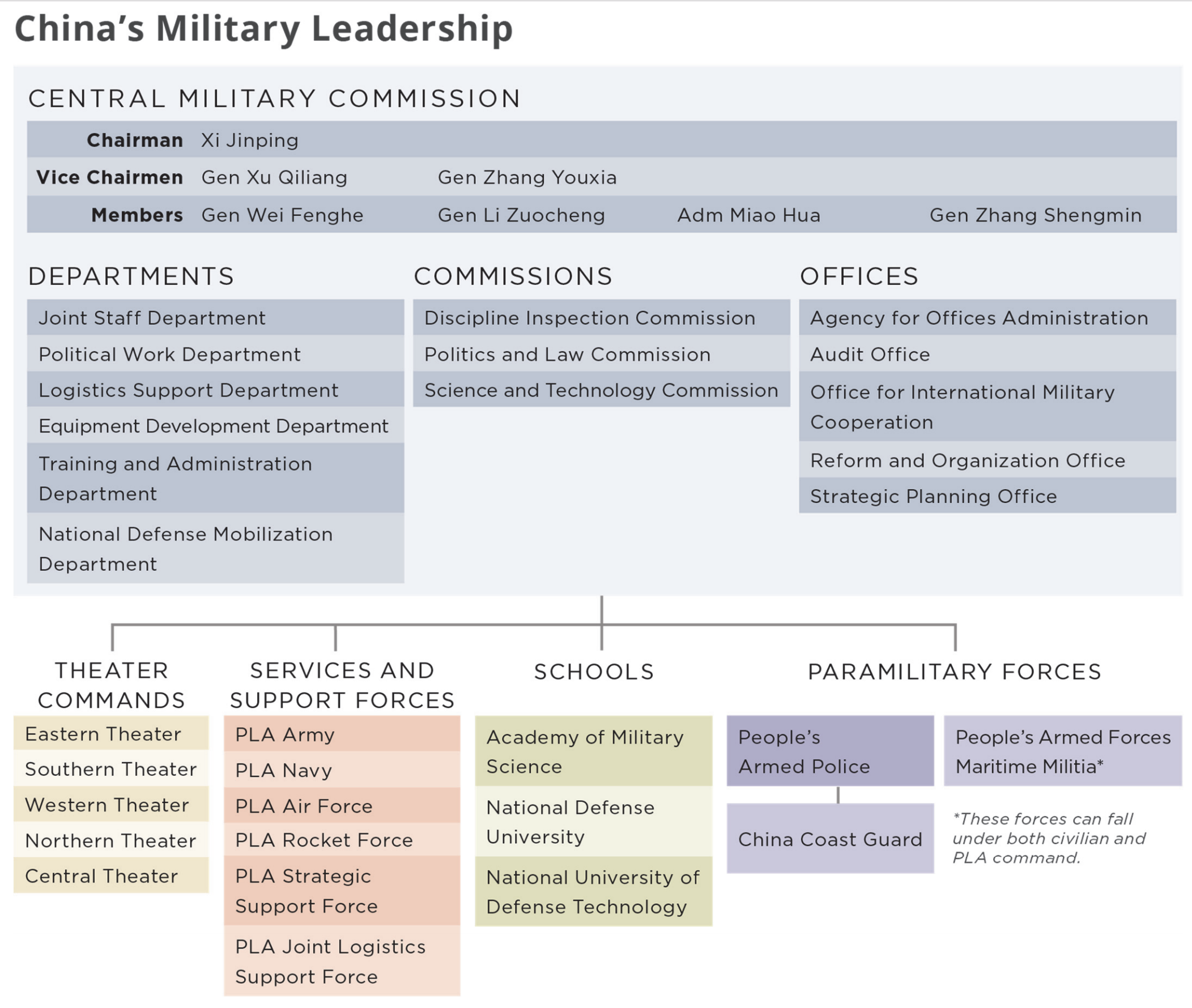
Taken together, these developments could enhance the ability of China’s second and third sea forces “to provide support to PLA operations under the command of the joint theater commands.” In the South China Sea, the report stresses, “the PAFMM plays a major role in coercive activities to achieve China’s political goals without fighting….” It “has played significant roles in a number of military campaigns and coercive incidents over the years.” Of particular significance, “a large number of PAFMM vessels train with and assist the PLAN and CCG in tasks such as safeguarding maritime claims, surveillance and reconnaissance, fisheries protection, logistic support, and search and rescue.” Moreover, “In conflict, China may… employ CCG and PAFMM ships to support military operations.” This all makes it crystal clear that Chinese navy interlocutors cannot plausibly profess ignorance of the PAFMM to their foreign counterparts—as they have done repeatedly in official meetings. Based on the report’s nature and content, doing so profoundly insults American intelligence in all senses of the word.
In the South China Sea, “China has built a state-owned fishing fleet for at least part of its maritime militia force….” Hainan’s provincial government “ordered the building of 84 large militia fishing vessels with reinforced hulls and ammunition storage, which the [Sansha City Maritime Militia] received by the end of 2016, along with extensive subsidies to encourage frequent operations in the Spratly Islands.” Comprising China’s most professional PAFMM units, Sansha’s “forces are paid salaries independent of any clear commercial fishing responsibilities and recruited from recently separated veterans.” Meanwhile, China’s development and fortification of outposts on the South China Sea features it occupies allows China to “maintain a more flexible and persistent military and paramilitary presence in the area.”
In his Q&A with journalists, Schriver explained how the U.S. government’s understanding of China’s three sea forces affects U.S. policy in practice: “We’re less interested in the color of the hull than the activity and the actions. So what we’re most interested in is China behaving in a manner that’s respectful of international law and norms, and behaving in a manner that is not destabilizing and is more constructive. …if its coast guard and maritime militia or classic gray-hulled navy, if the design is to infringe upon the sovereignty of another country… with the objective of creating some sort of tension that results in a favorable outcome for them…. If they’re engaged in provocation or infringement on another country’s sovereignty, particularly our allies, then we would treat them differently than if they were doing what we would regard as more normal coast guard activities, or we don’t have necessarily the equivalent of a maritime militia, but peaceful activities.”
All these points emerged independently from extensive open-source research on the PAFMM that the author, Conor Kennedy, and colleagues conducted at the Naval War College’s China Maritime Studies Institute (CMSI) over the past five years. The Department of Defense has now validated our more specific findings and recommendations explicitly.
Naval Forces
Beyond the Near Seas, the PLAN, PLA Air Force (PLAAF), and other PLA services are charged with increasing power projection. This challenging task remains very much a work in progress. Each of China’s three sea forces is the world’s largest by the number of ships. Greater than the U.S. Navy in numbers although far behind it in tonnage at 1.8 million to 4.6 million, the PLAN is growing rapidly in force structure and related capabilities. Over the past decade, it has dispatched over 30 antipiracy task forces to the Gulf of Aden and beyond; the 29th escorted 40 ships over six months and provided medical assistance to two Chinese merchant ships.
The speed of growth for the PLAN’s already large submarine force has slowed, but remains impressive: the Pentagon’s revised projection still predicts 65-70 submarines by 2020. As for nuclear-powered variants, China has built six Shang-class attack submarines (SSNs) and four Jin-class SSBNs. In 2018, a Shang “sailed underwater in the vicinity of the Senkaku Islands.” While neither the report nor Schriver offered specifics regarding patrols, the report terms the four Jins already operational with JL-2 submarine-launched ballistic missiles (SLBMs) “China’s first credible, sea-based nuclear deterrent.” Using the 40+-year service life of China’s first-generation Han-class SSNs as a yardstick, the Pentagon forecasts that the PLAN will continue to operate Jin-class SSBNs even as it begins building next-generation Type 096 variants with JL-3 SLBMs the early 2020s.
Employing the world’s largest shipbuilding industry by tonnage, China is series-producing several major surface combatants. It has launched four 10,000-ton Type 055 Renhai-class cruisers, with several more under construction. Already capable of carrying various ASCMs and SAMs, “it will likely be able to launch ASBMs [anti-ship ballistic missiles] and LACMs [land-attack cruise missiles] once these weapons are available.” Chinese development of a sea-launched ASBM, presumably its third ASBM variant, is intriguing; the author knows of no previous reference in a public U.S. government report.
Nine Type 052D Luyang III-class destroyers are operational. Their vertical launch system can fire “cruise missiles, SAMs, and anti-submarine missiles.” 27+ Jiangkai II frigates are in service, with several more being built. Over 40 Jiangdao-class corvettes are operational, with more than a dozen under construction. Rounding out these surface fleet mainstays are 60 Type 022 Houbei-class missile catamarans.
China’s submarines and warships alike are outfitted with large quantities of potent cruise missiles, guided by increasingly precise over-the-horizon (OTH) data fusion and targeting capabilities. As the PLAN goes increasingly global in its deployments, LACMs will constitute a growing proportion of its weapons loadouts. This will offer new capabilities while exposing Beijing to unprecedented charges of gunboat diplomacy and aggression. While it brings enviable benefits unavailable to all but a select few, great sea power comes at a great financial and political cost.
This brings us to the PLAN’s largest and most avidly discussed vessels: aircraft carriers, which—operated effectively—are the apex predators of the seas. For many readers, one of the report’s most exciting revelations is that China began constructing its third aircraft carrier in 2018. This news was not confirmed conclusively by previous open sources, allowing the Pentagon to make a unique contribution with its disclosure. This second indigenously built carrier is poised to be China’s largest thus far, with the greatest endurance; and only one thus far with a catapult launch system capable of dispatching larger, more capable aircraft. It follows China’s first indigenously built carrier, slated for commissioning later this year. That platform, in turn, is based on China’s only operational carrier to date, the Ukrainian-built but Chinese-refitted Liaoning.
As the PLAN forms carrier groups, the Type 055 cruiser “will be China’s premier carrier escort for blue-water operations.” China is also operating new replenishment ships and is building “two new ships… specifically to support aircraft carrier operations.” Other PLAN vessels supporting power projection include large amphibious and logistical support ships and specialized blue-water auxiliaries “including high-capability intelligence collection ships (AGIs/AGOS).” Already, in 2018, the PLAN sent AGIs well beyond the First Island Chain. It dispatched a Type 815 Dongdiao-class AGI to continue a long-established pattern of spying on Rim of the Pacific (RIMPAC) exercises off Hawaii. Ironically, in May 2018 Washington disinvited the PLAN from RIMPAC “as a result of China’s continued militarization of disputed features in the South China Sea, violating a pledge by Chinese President Xi Jinping not to militarize the Spratly Islands.”
For all these advances, the PLAN “continues to lack a robust deep-water anti-submarine warfare capability.” But, in a widespread pattern of waterfront-wide work, China strives to improve in these and other areas, and is “installing undersea monitoring systems.” Already, China engages in behaviors that the Pentagon deems highly objectionable. These include applying a legal double standard to foreign military activities in such sea areas as the Exclusive Economic Zone; and escalating coercive tactics in contravention of rules, norms, and safety of seamanship, as seen in the PLAN destroyer Lanzhou’s unsafe encounter with the USS Decatur in September 2018.
Air Forces
China has the world’s third largest aviation forces, with more than 2,700 aircraft, of which more than 2,000 are combat aircraft. Among the latter, J-20 low-observable fighters “may have begun active service in small numbers, possibly with a testing and training unit.” UAVs are a particular area of Chinese focus and achievement. The Pentagon details a panoply of systems that have been respectively displayed, developed, and deployed. Aeroengines remain a critical Chinese weakness, but China is finally investing heavily in improvements. The 13th Five-Year Plan (2016-20) prioritizes turbofans as a top technology focus area, together with hypersonics and the deployment and hardening of satellites.
Like a 1950s Cadillac in today’s Havana, the H-6 bomber has been refitted exquisitely over time. The latest H-6K variant features improved engines and weapons, giving it range to strike Guam with a payload of six precision-guided CJ-20 air-launched cruise missiles (ALCMs). “Since at least 2016,” the report relates, “Chinese media have been referring to the H-6K as a dual nuclear-conventional bomber.” H-6K bombers could be escorted by Su-30 fighters. Refueling Su-30s with the PLAAF’s three Ukraine-purchased Il-78 tankers could extend their range beyond the First Island Chain.
As part of a larger effort to become a “strategic air force” capable of greater power projection, the PLAAF is also overseeing the development of at least one new bomber. The report predicts that this “H-20” bomber will have 8,500+-km range, 10+ metric tons payload, “and a capability to employ both conventional and nuclear weaponry.” To realize this in practice, China “is pursuing a viable nuclear ‘triad’ with the development of a nuclear-capable air-launched cruise missile” as well as a conventional ALCM. The report adds: “China may also be developing a refuelable bomber that could reach initial operating capability before the long-range bomber, which could expand long-range offensive bomber capability beyond the second island chain.”
The PLAAF controls one of the world’s largest advanced long-range surface-to-air missile (SAM) forces. Within it, China is test-firing the S-400 it purchased from Russia. It is also testing its own HQ-19 with reported ballistic missile defense (BMD) capability; one unit “may have begun preliminary operations.” Other SAMs in China’s inventory may have some BMD capability as well. SAMs, early warning radars, and fighter aircraft (the majority under PLAAF control)—as well as radars, jamming equipment, and anti-ship and anti-aircraft missile systems proliferating on Beijing’s South China Sea outposts—support a robust integrated air defense system already extending 300 nautical miles (556 km) from China’s shores.
Rocket Forces
A top-tier missile producer, China is the world’s most active ballistic missile developer and boasts some of the world’s leading nuclear and conventional systems. China’s nuclear forces include 90 ICBMs. A new variant under development, the multiple independently targetable reentry vehicle (MIRV)-capable, road-mobile DF-41, may also be rail-mobile and silo-based. Filling a void created by Moscow and Washington’s adherence from 1988 until recently to the Intermediate-Range Nuclear Forces (INF) Treaty, Beijing possesses the world’s largest land-based missile force. Schriver related: “I think [Admiral Harry Harris, former commander, U.S. Pacific Command] used to say 90 percent of [China’s ballistic and cruise missiles] would be non-INF-compliant if [China] were in fact in the INF.” This includes 150-450 medium-range ballistic missiles (MRBMs), 7,750-1,500 short-range ballistic missiles, and 270-540 ground-launched LACMs. Additionally, in the emerging area of hypersonic glide vehicles, China successfully tested a “hypersonic waverider vehicle,” the Xingkong-2, in August 2018.
China has deployed two major ASBMs, the DF-21D MRBM and DF-26 intermediate-range ballistic missile (IRBM). Both are supported by new OTH radars. The 1,500km+-range DF-21D can “attack ships, including aircraft carriers, in the western Pacific Ocean… and is claimed to be capable of rapidly reloading in the field.” The DF-26’s three variants, respectively, can conduct “conventional and nuclear precision strikes against ground targets as well as conventional strikes against naval targets in the western Pacific [as far away as the Second Island Chain] and Indian Oceans and the South China Sea.” China’s DF-26 inventory continues to grow.
Distant Areas
Given tremendous uncertainties confronting even Xi himself, the report is necessarily less clear regarding China’s constantly evolving security efforts abroad. It nevertheless offers some useful indications. Building on previous editions’ probing of Beijing’s energy security interests, it cites International Energy Agency projections that China’s percentage of oil imported will rise by 9% to reach 80% by 2035. Natural gas imports are forecast to rise just 2% to 46% over that seventeen year period. It also highlights a growing doctrinal focus on “forward edge defense,” and the PLAN’s engagement in an “OBOR [Belt and Road Initiative/BRI-focused] cruise” in mid-2017. It advances the noncontroversial proposition that “China’s advancement of global economic projects will probably drive new PLA overseas basing through a perceived need to provide security for OBOR projects.”
The report further suggests that BRI-related port investments and access could enable China “to pre-position the necessary logistics support to sustain naval deployments in waters as distant as the Indian Ocean, Mediterranean Sea, and Atlantic Ocean to protect its growing interests.” In an allusion that echoes typical Chinese telegraphing of possibilities by citing foreign sources, the report states, “International press reporting in 2018 indicated that China sought to expand its military basing and access in the Middle East, Southeast Asia, and the western Pacific.” This statement was significant enough for Schriver to repeat it in his oral overview. Meanwhile, Beijing is collecting intelligence through military attaches in more than 110 offices worldwide, in addition to the manifold cyber means mentioned throughout the report.
Where the report becomes more substantive and specific is in its survey of China’s first overseas base in Djibouti and what sort of basing approaches Beijing may pursue moving forward. It posits that “a mixture of military logistics models, including preferred access to overseas commercial ports and a limited number of exclusive PLA logistics facilities, probably collocated with commercial ports, most closely aligns with China’s overseas military logistics needs.”
Djibouti is a new operating area for the rapidly expanding PLAN Marine Corps. It is the first location in which the PLAN MC has been seen to deploy wheeled armored vehicles. The fifteen such combat vehicles are garaged in a massive walled complex that contains substantial underground facilities. Overall, the PLAN MC has major plans but remains a work in progress in organization, training, and equipment. To achieve requisite air assault capability, for instance, the Pentagon projects that the PLAN MC will “likely need a minimum of 120 attack and medium-lift helicopters.”
Space
The level of coverage this year’s report devotes to Chinese space and counter-space development represents a major advance over previous years when the Pentagon sometimes seemed to shy away from the subject in public. Clearly renewed focus is warranted: 2018 was Beijing’s most prolific space launch year yet, with 38 of 39 space launch vehicles lofted successfully and roughly 100 spacecraft orbited. The fact that “China is working to develop a space-based early warning capability” could enable a “launch on warning” nuclear posture, raising important questions for the Sino-American deterrence relationship. To address this robust new content, the author obtained permission from noted space capabilities and law expert Michael J. Listner to share his observations on the subject:
The report emphasizes space as one of the eight strategic tasks or missions China must be ready to execute and gives robust attention to this strategic task—the most comprehensive treatment yet—which underlines the importance the Pentagon and the PLA both place on the space domain. This continues a trend of more public disclosure to highlight space security challenges, which also includes a report on threats to space security by the Defense Intelligence Agency. The PLA’s emphasis on this strategic task underlies its understanding of the importance of space control, or a nation’s ability to ensure its own access to outer space and to deny access to a geopolitical adversary, which it identifies as “information dominance.” The PLA intends to implement its information dominance strategy through organization and capabilities to ensure space access to the PLA and deny it to an adversary in any conflict.
A prominent discussion in the report is how the PLA is dynamically altering the organizational structure of its space forces to achieve information dominance. Following China’s 2015 Defense White Paper, which identified space as a commanding height, the PLA began in 2016 to reorganize its space operations under the Strategic Support Force (SSF). The Pentagon’s 2018 report glossed over the SSF but the current report goes into much greater depth, outlining the structure of the PLA to include reorganization of departments and activities in 2018 to bring the SSF to operational status. The report makes clear that the SSF is intended to resolve bureaucratic power struggles that have plagued PLA space operations and streamline not only operations but acquisitions. This has a familiar ring as the proposed U.S. Space Force and reorganizations for acquisitions seeks a similar outcome.
The report categorizes capabilities into two groups: space and counter-space capabilities, which appears to designate separate capabilities for military and civilian use. While some capabilities and plans may not play into information dominance, the PLA is still a player and in many cases has a dominant role. It is also worth noting that China’s space program and capabilities not only play into future plans, including the BRI, but also further China’s geopolitical interests through cooperation agreements and national prestige. They serve as a means of wielding soft power and gaining influence in less-developed nations and international bodies alike.
The report outlines space capabilities, including ground infrastructure and data relay and tracking stations, with emphasis on the Neuquén Deep Space Facility in Argentina. It also focuses on moon-related successes and ambitions for both exploration and exploitation, including a lunar base. One interesting item is commercial space activities to develop launch capabilities in China. The report stresses that these companies are state-backed ventures, as opposed to the paradigm of U.S. commercial space companies. The goal of these state-backed companies is to increase innovation and bring capabilities to fruition sooner than would strictly government efforts. While the report has identified some success, it still uncertain whether commercial ventures will pan out in the long term should state bureaucracy choose to assert itself if it perceives the commercial sector as a rival to government-owned industry. Conspicuously missing (aside from a brief mention) is China’s space station, which will begin assembly in 2020. Aside from being a symbol of national prestige and technical prowess, China is using it to exert and extend its soft power in the UN, and particularly the UN Office of Outer Space Affairs, which has an agreement with and receives funding from the Chinese National Space Agency (CNSA) to promote partnerships with nations and non-governmental entities to utilize the facility upon completion.
Counter-space capabilities continues to be the focal point of the PLA’s information dominance strategy. The report notes the PLA is acquiring and testing technologies that could have dual-use as counter-space activities. Hard-kill anti-satellite (ASAT) weapons similar to the instrument used in the 2007 test garner the most attention but the report notes the PLA is developing other technologies that employ soft-kill to or cripple or otherwise sideline space assets. The report remarks no official comments on what ASAT technology China has developed, deployed, or demonstrated since its dramatic 2007 test. Schriver likewise studiously avoided this topic during Q&A with the media. Despite the lack of official comment, the applicability of the technology being developed, combined with Chinese writings, suggests space assets as specific targets at the opening stages of a conflict and targets of opportunity during the conflict. This is consistent with pursuit of information dominance.
A Useful Contribution
Authoritative in nature, ambitious in scope, and controversial in context, a report of this sort inevitably attracts criticism. Chinese state media mouthpieces and spokespeople denounce the report annually, typically without offering any substance of their own. The report represents a bureaucratically assembled patchwork of information whose stitching is not always perfect. A single public deliverable from a busy bureaucracy drowning in more urgent takings—many highly classified and unknown to outsider observers for years—it is never intended as a model of expository writing for its own sake. But this year’s report offers both stronger takeaways and less confusion and arguable inconsistency than usual.
Certainly, there are always points that people quibble over. This author, for instance, disagrees with the report’s use of the phrase “China’s ‘near seas’” to describe the Yellow, East, and South China Seas—the vast majority of which are part of the global maritime commons and should remain so. On a far more substantive note, Harvard doctoral student Elsa Kania has suggested how the report might consider some key Chinese terminology with greater context and nuance. She nevertheless welcomes this year’s report’s “more detailed discussion of emerging technologies, including robotics and artificial intelligence, advanced computing, quantum technology, and hypersonic and directed-energy weapons.” In encapsulating the greatest areas of Chinese advancement for reporters at the rollout event, Schriver acknowledged the importance of such technologies: “their power projection through ballistic and cruise missiles is an area they’ve made tremendous progress and they continue to develop enhanced capabilities in those areas. …particularly in new domains, they’ve invested a lot in cyber, space, hypersonics, A.I.”
What everyone can surely agree on: with China’s continued comprehensive efforts there will be no shortage of issues for the Pentagon to cover in next year’s report. However imperfect such coverage, we are far better off with it than without it.
Dr. Andrew S. Erickson is a professor of strategy in the China Maritime Studies Institute and the recipient of the inaugural Civilian Faculty Research Excellence Award at the Naval War College, where he serves on the Naval War College Review’s Editorial Board. Erickson is also a visiting scholar and an associate in research at Harvard University’s John King Fairbank Center for Chinese Studies. He received his Ph.D. from Princeton University and blogs at www.andrewerickson.com.
Pentagon’s 2019 China Military Power Report Offers Strong Content on Maritime Militia
Office of the Secretary of Defense, Military and Security Developments Involving the People’s Republic of China 2019 (Arlington, VA: Department of Defense, 2 May 2019).
p. 18
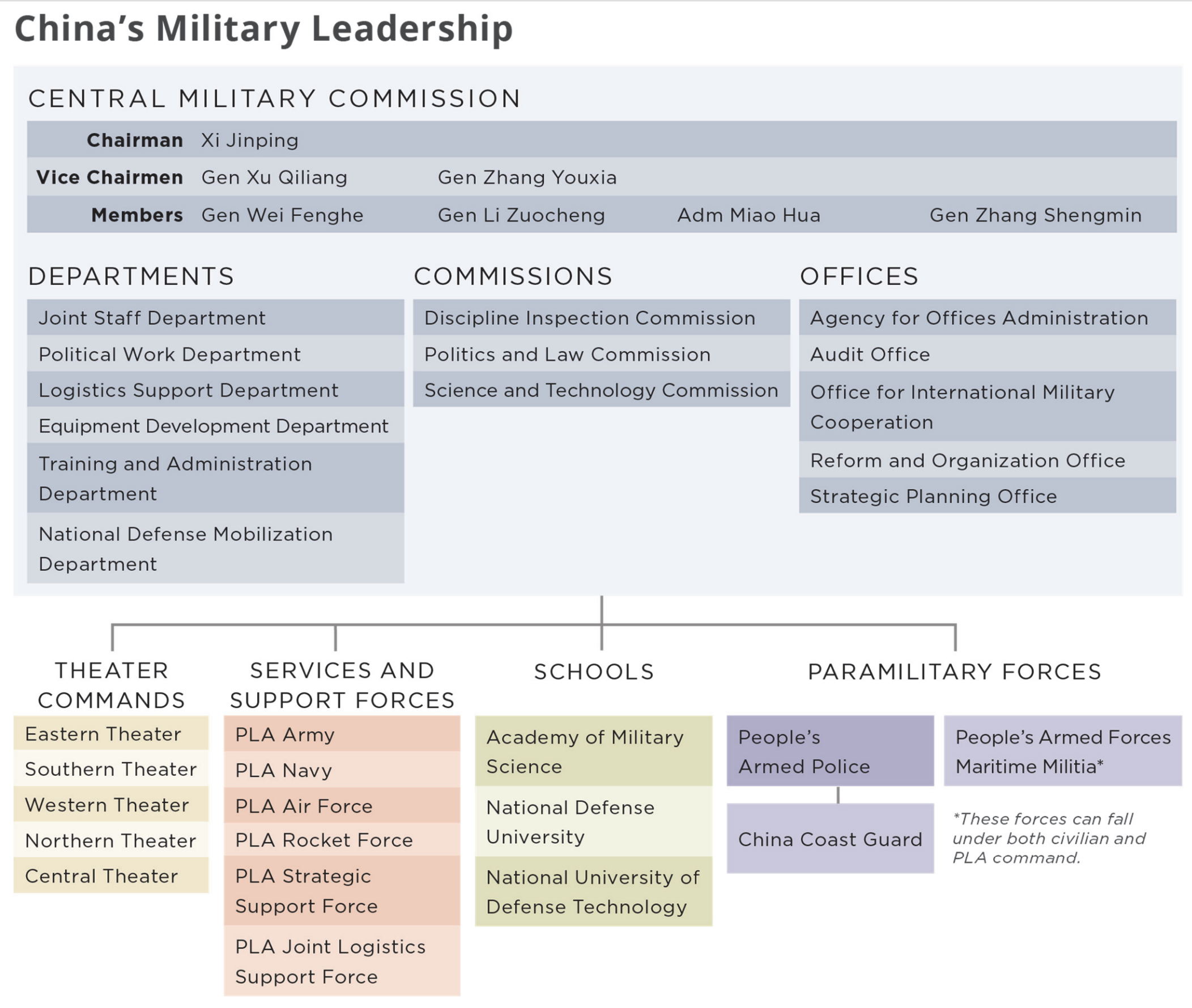
p. 52
INCREASING INTEROPERABILITY WITH PARAMILITARY AND MILITIA
Key Takeaways
- As of 2018, the CMC assumed direct control of the PAP. As part of this reform, the PAP also assumed control of the China Coast Guard (CCG) from China’s State Oceanic Administration.
- Paramilitary reforms could improve paramilitary forces’ ability to provide support to PLA operations under the command of the joint theater commands.
- In 2018, examples of interoperability between the PLA and paramilitary forces included coordination between the PLAN, the CCG, and the People’s Armed Forces Maritime Militia (PAFMM).
p. 53
People’s Armed Forces Maritime Militia (PAFMM). The PAFMM is a subset of China’s national militia, an armed reserve force of civilians available for mobilization. Militia units organize around towns, villages, urban sub-districts, and enterprises and vary widely in composition and mission. In the South China Sea, the PAFMM plays a major role in coercive activities to achieve China’s political goals without fighting, part of broader Chinese military theory that sees confrontational operations short of war as an effective means of accomplishing political objectives. The militia has played significant roles in a number of military campaigns and coercive incidents over the years, including the 2009 harassment of the USNS Impeccable conducting normal operations, the 2012 Scarborough Reef
p. 54
standoff, the 2014 Haiyang Shiyou-981 oil rig standoff, and a large incursion in waters near the Senkakus in 2016. A large number of PAFMM vessels train with and assist the PLAN and CCG in tasks such as safeguarding maritime claims, surveillance and reconnaissance, fisheries protection, logistic support, and search and rescue. The government subsidizes various local and provincial commercial organizations to operate militia vessels to perform “official” missions on an ad hoc basis outside of their regular civilian commercial activities. In the past, the PAFMM rented fishing vessels from companies or individual fishermen, but China has built a state-owned fishing fleet for at least part of its maritime militia force in the South China Sea. The Hainan provincial government, adjacent to the South China Sea, ordered the building of 84 large militia fishing vessels with reinforced hulls and ammunition storage, which the militia received by the end of 2016, along with extensive subsidies to encourage frequent operations in the Spratly Islands. This particular PAFMM unit is also China’s most professional. Its forces are paid salaries independent of any clear commercial fishing responsibilities and recruited from recently separated veterans.
2018
Andrew S. Erickson, “Exposed: Pentagon Report Spotlights China’s Maritime Militia,” The National Interest, 20 August 2018.
For countering China’s shadowy Third Sea Force—the Maritime Militia—sunlight is the best disinfectant and demonstrated awareness is an important element of deterrence. This year’s Department of Defense report to Congress offers both.
Finally, some good news from Washington! Last Thursday the Pentagon released its annual report to Congress on military and security developments involving the People’s Republic of China (PRC). The single most important revelation alone justifies the 145-page report’s $108,000 cost many times over. Even more than when last year’s report mentioned it for the first time, the U.S. government has officially deployed the formidable credibility of the world’s foremost intelligence collection and analytical capabilities to shine a spotlight and expose the shadowy People’s Armed Forces Maritime Militia (PAFMM). Previously, in beltway bureaucracy, the PAFMM was mentioned by Ronald O’Rourke in his Congressional Research Service report and by the U.S.-China Economic and Security Review Commission, which rightly recommended that the Department of Defense address this vital subject. Indeed, there is no substitute for the Pentagon’s credibility in this regard. By releasing these important facts officially and authoritatively, the 2018 report has performed a signal service.
Beijing uses the PAFMM to advance its disputed sovereignty claims across the South and East China Seas. The Maritime Militia, China’s third sea force, often operates in concert with China’s first sea force (the Navy) and second sea force (the Coast Guard). In an unprecedented accompanying Fact Sheet, the Pentagon’s 2018 report offers a recent example: “China . . . is willing to employ coercive measures to advance its interests and mitigate other countries’ opposition. . . . In August 2017, China conducted a coordinated PLA Navy (PLAN), China Coast Guard (CCG), and People’s Armed Forces Maritime Militia patrol around Thitu Island and planted a flag on Sandy Cay, a sandbar within 12 nautical miles of Subi Reef and Thitu Island, possibly in response to the Philippines’ reported plans to upgrade its runway on Thitu Island.”
Each PRC sea service is the maritime division of one of China’s three armed services, and each is the world’s largest by number of ships. “The PLAN, CCG, and People’s Armed Forces Maritime Militia (PAFMM) form the largest maritime force in the Indo-Pacific,” the report emphasizes. First, “The PLAN is the region’s largest navy, with more than 300 surface combatants, submarines, amphibious ships, patrol craft, and specialized types.” It is also the world’s largest navy numerically; as of August 17, 2018, the U.S. Navy has 282 deployable battle-force ships. Second, “Since 2010, the CCG’s fleet of large patrol ships (more than 1,000 tons) has more than doubled from approximately 60 to more than 130 ships,” the report adds, “making it by far the largest coast guard force in the world and increasing its capacity to conduct simultaneous, extended offshore operations in multiple disputed areas.” Third, Beijing has what is clearly the world’s largest and most capable maritime militia. One of the few maritime militia forces in existence today at all, it is virtually the only one charged with involvement in sovereignty disputes. Only Vietnam, one of the very last countries politically and bureaucratically similar to China, is known to have a roughly equivalent force with a roughly equivalent mission. Moreover, when it comes to forces at sea—militia or otherwise—Hanoi is simply not in the same league as Beijing and cannot compete either quantitatively or qualitatively.
Beijing’s use of the PAFMM undermines vital American and international interests in maintaining the regional status quo, including the rules and norms on which peace and prosperity depend. PAFMM forces engage in gray zone operations, at a level specifically designed to frustrate effective response by the other parties involved. One PRC source terms this PAFMM participation in “low-intensity maritime rights protection struggles”; the Pentagon’s report describes broader PAFMM and CCG “use of low-intensity coercion in maritime disputes.” “During periods of tension, official statements and state media seek to portray China as reactive,” the report explains. “China uses an opportunistically timed progression of incremental but intensifying steps to attempt to increase effective control over disputed areas and avoid escalation to military conflict.” In particular, “PAFMM units enable low-intensity coercion activities to advance territorial and maritime claims.” Because the PAFMM is virtually unique and tries to operate deceptively under the radar, it has remained publicly obscure for far too long even as it trolls with surprising success for advances in sovereignty disputes in seas along China’s contested periphery.
Fortunately, the U.S. government is well aware of the PAFMM’s predations and monitors it closely. In providing such detailed coverage of the PAFMM in its latest report, the Pentagon has strongly validated key findings from the Naval War College China Maritime Studies Institute’s (CMSI) open source research project on that subject, which is now entering its fifth year. In what follows, I share CMSI’s conclusions and the related text in the report.
A component of the People’s Armed Forces, China’s PAFMM operates under a direct military chain of command to conduct state-sponsored activities. The PAFMM is locally supported, but answers to the very top of China’s military bureaucracy: Commander-in-Chief Xi Jinping himself.
Part-time PAFMM units incorporate marine industry workers (e.g., fishermen) directly into China’s armed forces. As the Pentagon explains, “The PAFMM is a subset of China’s national militia, an armed reserve force of civilians available for mobilization. . . . Militia units organize around towns, villages, urban sub-districts, and enterprises, and vary widely in composition and mission.” While retaining day jobs, personnel (together with their ships) that meet the standards for induction into the PAFMM are organized and trained within the militia—as well as, in many cases, by China’s Navy—and activated on demand. As part of such efforts, “A large number of PAFMM vessels train with and assist the PLAN and CCG in tasks such as safeguarding maritime claims, surveillance and reconnaissance, fishery protection, logistics support, and search and rescue.” To further support and encourage PAFMM efforts, “The government subsidizes various local and provincial commercial organizations to operate militia vessels to perform ‘official’ missions on an ad hoc basis outside of their regular civilian commercial activities.”
Since 2015, starting in Sansha City in the Paracel Islands, China has been developing a new full-time PAFMM contingent: more professionalized, militarized, well-paid units including military recruits, crewing purpose-built vessels with mast-mounted water cannons for spraying and reinforced hulls for ramming. “In the past, the PAFMM rented fishing vessels from companies or individual fishermen, but China has built a state-owned fishing fleet for at least part of its maritime militia force in the South China Sea,” the Pentagon expounds. “The Hainan provincial government, adjacent to the South China Sea”—whose important role in PAFMM development my colleague Conor M. Kennedy and I explain here, here, and here—“ordered the building of 84 large militia fishing vessels with reinforced hulls and ammunition storage, which the militia received by the end of 2016, along with extensive subsidies to encourage frequent operations in the Spratly Islands.” The report elaborates: “This particular PAFMM unit is also China’s most professional, paid salaries independent of any clear commercial fishing responsibilities, and recruited from recently separated veterans.” Lacking fishing responsibilities, personnel train for peacetime and wartime contingencies, including with light arms, and deploy regularly to disputed South China Sea features even during fishing moratoriums.
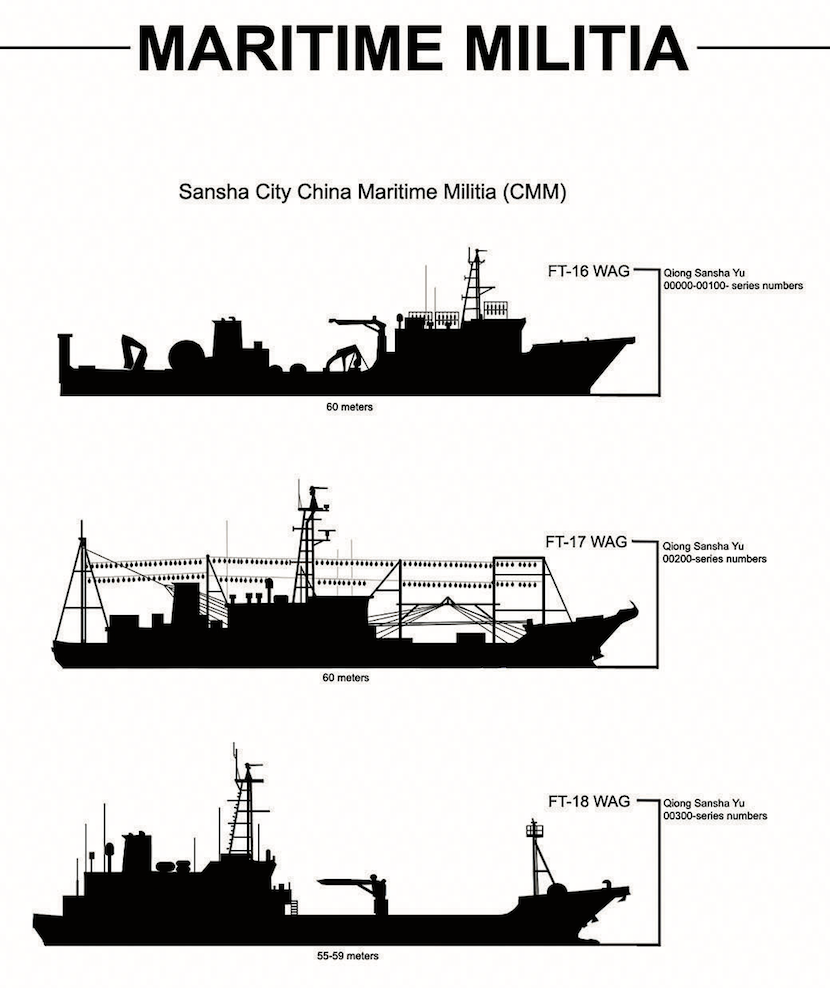
China’s People’s Liberation Army Navy (PLAN), Coast Guard, and Government Maritime Forces 2018 Recognition and Identification Guide (Suitland, MD: Office of Naval Intelligence, July 2018).
(EXCERPT SHOWING THREE TYPES OF SANSHA CITY MARITIME MILITIA VESSELS)
In July, the U.S. Office of Naval Intelligence issued the China’s People’s Liberation Army Navy (PLAN), Coast Guard, and Government Maritime Forces 2018 Recognition and Identification Guide. The excerpt above shows three different types of purpose-built PAFMM vessels operated by the Sansha City Maritime Militia.
PAFMM units have participated in manifold international sea incidents. As the Pentagon attests, “The militia has played significant roles in a number of military campaigns and coercive incidents over the years, including the 2009 harassment of the USNS IMPECCABLE conducting normal operations, the 2012 Scarborough Reef standoff, the 2014 Haiyang Shiyou-981 oil-rig standoff, and a large surge of ships in waters near the Senkakus in 2016.”
The last of these is particularly significant, since it is now one of several publicly documented examples of PAFMM involvement in international incidents in the East China Sea, but had not been conclusively confirmed by previously known open sources. Other examples, as documented in CMSI research to date, include swarming into the Senkaku Islands’ territorial sea in 1978 and harassment of USNS Howard O. Lorenzen in 2014. So, while the vast majority of publicly revealed incidents involving PAFMM forces have occurred throughout the South China Sea, the PAFMM also clearly operates and has been empowered to engage in provocative activities in the East China Sea as well. Any PRC attempts to deny that the PAFMM operates in the East China Sea, including in disruptively close proximity to foreign forces, may therefore be easily disproven. The Pentagon is clear: “The PAFMM . . . is active in the South and East China Seas.”
This conclusive exposure of PAFMM activities in the East China Sea should be an important reminder to policy-makers in Tokyo and Washington alike that Beijing is certain to continue to wield its third sea force as a tool of choice to probe and apply pressure vis-à-vis the Japanese-administered Senkaku Islands. These pinnacle-shaped features are the peak Sino-Japanese geographical flashpoint. As the current and previous U.S. administrations have affirmed explicitly, the Senkakus are covered under Article 5 of the U.S.-Japan Treaty of Mutual Cooperation and Security, which states, in part: “Each Party recognizes that an armed attack against either Party in the territories under the administration of Japan would be dangerous to its own peace and safety and declares that it would act to meet the common danger in accordance with its constitutional provisions and processes.”
American and Japanese analysts and decision-makers should therefore redouble their efforts to share information and develop and implement potential countermeasures concerning the PAFMM. Here, as elsewhere, sunlight is the best disinfectant and demonstrated awareness is an important element of deterrence. Just as the Pentagon’s 2017 report was the first iteration to mention the PAFMM and this latest 2018 edition builds strongly on that foundation, it is to be hoped that the Japan Ministry of Defense’s Defense of Japan 2017 report—which likewise mentioned the PAFMM for the first time, albeit without explicit in-text reference to the East China Sea—will be followed with a 2018 edition offering far more robust PAFMM coverage, including detailed consideration of extant and potential future activities in the East China Sea.
As mentioned above, the Pentagon’s latest report also stresses PAFMM involvement in the layered cabbage-style envelopment of the Philippines-claimed Sandy Cay shoal near Thitu Island in the South China Sea, although it does not mention the fact—confirmed by commercially available AIS data concerning ship movements—that China has sustained a presence of at least two PAFMM vessels around Sandy Cay since August 2017. As the Pentagon emphasizes, the “PLAN, CCG, and PAFMM sometimes conduct coordinated patrols.” Inter-service cooperation applies in peace and war: “In conflict, China may also employ China Coast Guard and People’s Armed Forces Maritime Militia ships to support military operations.”
“In the South China Sea,” the report emphasizes, “the PAFMM plays a major role in coercive activities to achieve China’s political goals without fighting, part of broader PRC military doctrine stating confrontational operations short of war can be an effective means of accomplishing political objectives.” Other CMSI-documented examples of international incidents involving the PAFMM there that the report does not mention explicitly include direct participation in China’s 1974 seizure of the Western Paracel Islands from Vietnam; involvement in the occupation and development of Mischief Reef resulting in a 1995 incident with the Philippines; harassment of various Vietnamese government/survey vessels, including the Bin Minh and Viking; participation in the 2014 blockade of Second Thomas Shoal; and engagement in the 2015 maneuvers around USS Lassen.
In conclusion, the Pentagon deserves great credit for employing the full force of its tremendous analytical capabilities and official authority to shine a bright, inescapable spotlight on the PAFMM’s true nature and activities. There is no plausible deniability: the PAFMM is a state-organized, -developed, and -controlled force operating under a direct military chain of command to conduct PRC state-sponsored activities. Publicly revealing the PAFMM’s true nature and activities is an important step in deterring its future use. But far more is needed to counter the pernicious challenge of Beijing’s shadowy but fully knowable third sea force. As the Pentagon’s valuable new report emphasizes, “China continues to exercise low-intensity coercion to advance its claims in the East and South China Seas.”
Dr. Andrew S. Erickson is a professor of strategy in the U.S. Naval War College (NWC)’s China Maritime Studies Institute (CMSI) and an Associate in Research at Harvard University’s John King Fairbank Center for Chinese Studies. Since 2014, he and his colleague Conor M. Kennedy have been conducting and publishing in-depth research on the People’s Armed Forces Maritime Militia (PAFMM) and briefing key U.S. and allied decision-makers on the subject. In 2017 Erickson received NWC’s inaugural Civilian Faculty Research Excellence Award, in part for his pioneering contributions in this area.
Image: China’s People Liberation Army (Navy) sailors from the honour guard march during a welcoming ceremony for Fiji’s Prime Minister Josaia Voreqe Bainimarama outside the Great Hall of the People, in Beijing, July 16, 2015. REUTERS/Jason Lee
2017
Andrew S. Erickson, “New Pentagon China Report Highlights the Rise of Beijing’s Maritime Militia,” The National Interest, 7 June 2017.
Pentagon experts have finally keyed in on one of the most important aspects of China’s strategy to dominate the waterways of the Asia-Pacific.
Issued yesterday, the Pentagon’s annual report to Congress on China’s military and security developments contains a typically vast array of data, some publicly specified or confirmed for the first time. Among its 106 pages—arguably the most significant development is its unprecedented coverage of China’s maritime militia—the first official U.S. government assessment to call it out in public. This is a long overdue and welcome breakthrough: the shadowy but knowable force’s vanguard units are literally on the front lines of Beijing’s efforts to overpower its neighbors and advance its control over the South China Sea.
Together with the world’s largest Coast Guard, and with China’s Navy backstopping in an “overwatch” capacity, China’s maritime militia plays a central role in maritime activities designed to overwhelm or coerce an opponent through activities cannot be easily countered without escalating to war. The report terms this approach “low-intensity coercion in maritime disputes.” Leading elements of China’s maritime militia have already played frontline roles in manifold Chinese incidents and skirmishes with foreign mariners throughout the South China Sea. Such international-sea incidents of significant concern to the United States and its regional allies and partners include multiple contributions to furthering China’s sovereignty claims in the South China Sea.
China maritime-militia forces played a central role in the 1974 battle in which China seized the western Paracel Islands from Vietnam. More recently, as the report documents, they “played significant roles in . . . the 2011 harassment of Vietnamese survey vessels.” They harassed USNS Impeccable in international waters in 2009. They helped trigger the 2012 incident in which they ultimately supported other Chinese forces in seizing Scarborough Shoal from the Philippines. They engaged in reconnaissance and sovereignty patrols during China’s February 2014 blockade of Philippine resupply of Second Thomas Shoal. They played the frontline role in the 2014 repulsion of Vietnamese vessels from disputed waters surrounding China National Offshore Oil Corporation’s HYSY-981 oil rig.
The militia is a key component of China’s armed forces and its maritime subcomponent is the Third Sea Force of China. China’s maritime militia is a set of marine industry workers (typically fishermen) and their vessels trained, equipped, organized and commanded directly by the local military commands of the People’s Liberation Army (PLA). These units typically answer to the PLA chain of command, and are certain to do so when activated for international-sea incidents pre-planned by Beijing. While most militiamen have civilian jobs, new units are emerging that appear to employ elite forces full-time as militarized professionals. Directed participation by China maritime-militia forces in international-sea incidents or provocations occurs under the PLA chain of command, and sometimes also under the temporary command of the Chinese maritime law-enforcement agencies.
Here’s why the Pentagon’s publicizing of China’s maritime-militia matters: it is strongest—and most effective—when it can lurk in the shadows. But the Naval War College China Maritime Studies Institute’s two-and-a-half-year study—and more than twenty articles, papers and briefings—reveals that there is more than enough open-source information available to expose China’s maritime militia for what it is: a state-organized, state-developed and state-controlled force operating under a direct military chain of command to conduct Chinese state-sponsored activities.
By revealing the maritime militia’s true nature and “calling it out” in public, the U.S. government can remove the force’s plausible deniability, reduce its room for maneuver, and reduce the chances that China’s leaders will employ it dangerously in future encounters with American and allied vessels at sea. The very few previous U.S. government-related statements were not top-level official assessments, and hence did not have the full force and influence of the U.S. government behind them. China’s maritime militia was mentioned by Adm. Scott Swift, commander of the U.S. Pacific Fleet; by Ronald O’Rourke in his Congressional Research Service report on Chinese maritime disputes; and by the U.S.-China Economic and Security Review Commission, which rightly recommended that the Department of Defense address this vital subject. But the Pentagon’s new report is the first official top-level assessment by the U.S. government to cover China’s maritime militia. It is extremely encouraging that the U.S. government has finally brought to bear the full force of its authority and its tremendous analytical capabilities to address this vital issue.
Unique Insights
Beyond its maritime-militia coverage, the report offers a treasure trove of other insights. Some areas, particularly broader strategic points and basic force-structure elements, are well known to PLA analysts outside the U.S. government but are conveniently compiled in a go-to source for many in Washington not normally focused on the subject. A number of specific points, however, are difficult—if not impossible—to corroborate or even learn through open sources. The report contains too many insights to enumerate them all here, and is best read in full—or at least skimmed directly. The following surveys some of the most important and interesting highlights from both categories. … … …
2016
Andrew S. Erickson, “How Good Are They? The Latest Insights Into China’s Military Tech,” War on the Rocks, 18 May 2016.
It’s that time of year again, and the end of an era. On Friday, the Obama Administration released the last annual Pentagon China report under its watch. Working the China military observers’ graveyard shift this weekend, I published analyses of the report’s overall content, and its key omissions — namely, any mention whatsoever of China’s maritime militia of “little blue men” trolling for territorial claims. Here, I’ll focus on the report’s greatest comparative advantage: insights concerning Beijing’s military technology and its applications that no other public source offers with such official backing or reliable details.
Defense Industrial Dynamics
The Pentagon’s report offers extensive coverage of China’s defense-industrial sector, including key policies and trends. Beijing clearly seeks a comprehensive indigenous defense industrial base, with strong commercial underpinnings. To that end, it is launching its third major round of post-Cold War reforms. Informed by extensive policy documents and a hierarchy of priority subjects, Beijing is funding extensive research, development, and acquisition throughout its sprawling defense industry and related organizations. Emphases include the widespread Chinese approach of civil-military integration and acquiring foreign technology by any means necessary — including extensive cyber and human espionage — while absorbing it and developing indigenous technology and systems in parallel. Characteristic of President Xi Jinping’s structural reform efforts more generally, a new high-level advisory body will oversee these efforts: the Strategic Committee of Science, Technology, and Industry Development for National Defense. One indication of progress: $15 billion in arms export agreements signed between 2010 and 2014.
This systematic explication enhances the credibility and utility of the 145-page report. But what most of its most avid consumers really want to know is: How good is the military hardware that China can produce? And how do performance parameters and quality vary by type of weapon system? It is in the totality of such information that the report really shines.
However, in meeting its obligations to Congress, and, by extension, the public, the Pentagon’s annual report had to address a wide range of disparate issues concerning Chinese military and security development. It had to do so in a format largely shaped by its previous 14 iterations. Allow me, therefore, to summarize and reconfigure its key findings to best address these pressing questions. I have worked here to distill insights into just how good various types of Chinese military hardware have become. …
Andrew S. Erickson, “Pentagon Report Aims to Lay Out Chinese Military Goals,” China Real Time Report (中国实时报), Wall Street Journal, 15 May 2016.
With things heating up in the South China Sea and across the Taiwan Strait, Washington just attempted to shine some badly needed light on Beijing’s military efforts.
On Friday, the Pentagon released its 15th annual report to Congress on Chinese military and security development, its last under the Obama administration. “Despite China’s opacity…this report documents the kind of military that China is building,” Abraham Denmark, deputy assistant secretary of defense for East Asia, explained at the media rollout event. “We hope it contributes to the public’s understanding of the PLA.”
Indeed it does. China characteristically dismissed the report, without seeking to disprove any of its assertions. As Mr. Denmark stressed, the Pentagon publication “lets the facts speak for themselves.” He highlighted three key areas of emphasis: military maritime activities, power projection and reforms. …
Andrew S. Erickson, “The Pentagon’s 2016 China Military Report: What You Need to Know,” The National Interest, 14 May 2016.
Andrew S. Erickson, “Obama Pentagon’s Last China Report: Covers Most Bases Commendably, But Misses Maritime Militia,” China Analysis from Original Sources 以第一手资料研究中国, 14 May 2016.
The end of an era… Friday’s Department of Defense (DoD) report to Congress on Chinese military and security developments is the last issued under the Obama Administration. Amid geopolitical uncertainty, it was a respectable final contribution. Nevertheless, it suffers from an unfortunate shortcoming. The Pentagon report rightly highlighted growing concern about Beijing’s mounting maritime coercion, but passed up a rare chance to connect it with a potent player flouting the rules of the game. China’s Maritime Militia, the irregular frontline sea force of “Little Blue Men” trolling for territorial claims, receives nary a mention. Like a trident with only one full-fledged prong, a report covering only one of China’s three major sea forces in depth—and ignoring one entirely—remains regrettably incomplete.
“China is using coercive tactics…to advance their interests in ways that are calculated to fall below the threshold of provoking conflict,” DoD’s report rightly emphasizes. Asked to elaborate on such “Gray Zone” operations in yesterday afternoon’s roll-out event at the Pentagon, Deputy Assistant Secretary of defense for East Asia Abraham M. Denmark stated that China’s coast guard and fishing vessels sometimes act in an “unprofessional” manner “in the vicinity of the military forces or fishing vessels of other countries in a way that’s designed to attempt to establish a degree of control around disputed features.” “These activities are designed to stay below the threshold of conflict,” Denmark explained, “but gradually demonstrate and assert claims that other countries dispute.”
A key official thus encapsulated one of the most important, complex security challenges facing his government and a vital region whose peacefulness and openness it underwrites. The problem: his administration’s final iteration of the report offering unparalleled authoritative public insights on Chinese security developments missed a chance to cut to the heart of the problem by addressing China’s Maritime Militia and the concept of People’s War at Sea that inspires its development.
Covering the Bases
None of this should overshadow the report’s many welcome contributions. At a hefty 145 pages, it is highly informative and will repay whatever time you can devote to it. Through detailed text, maps, and figures, it documents a rapidly developing Chinese military, commanded by leaders inspired by ambitious national goals, in the throes of the most sweeping reforms in three decades or more. In doing so, it outlines broad dimensions of strategy, organization, leadership, and events that are largely available in open source scholarship—sometimes richer, more nuanced, and more comprehensive—but rarely in one place and almost never with a leading government’s analytical seal of approval.
Those seeking a reasonable overview of Chinese military efforts need look no further than paragraph one. “Chinese leaders have characterized modernization of the People’s Liberation Army (PLA) as essential to achieving great power status and what Chinese President Xi Jinping calls the ‘China Dream’ of national rejuvenation. They portray a strong military as critical to advancing Chinese interests, preventing other countries from taking steps that would damage those interests, and ensuring that China can defend itself and its sovereignty claims.” Thus motivated, “The long-term, comprehensive modernization of the armed forces of the People’s Republic of China (PRC) entered a new phase in 2015 as China unveiled sweeping organizational reforms to overhaul the entire military structure. These reforms aim to strengthen the Chinese Communist Party’s (CCP) control over the military, enhance the PLA’s ability to conduct joint operations, and improve its ability to fight short-duration, high-intensity regional conflicts at greater distances from the Chinese mainland.” Beijing continues to put its money where its mouth is, with China’s defense budget indisputably the world’s second largest. While acknowledging the challenges inherent in such a calculation, the Pentagon estimates Beijing’s total military-related spending in 2015 at over $180 billion. Exercises of increasing scale, jointness, complexity, and realism are part of an effort to make China’s military far more than the sum of its unevenly growing parts.
There is, as well, the obligatory government messaging. Thus readers are assured that: “While the United States builds a stronger military-to-military relationship with China, DoD will also continue to monitor and adapt to China’s evolving military strategy, doctrine, and force development, and encourage China to be more transparent about its military modernization program.” Like other public U.S. government reports, this one reveals few details of Chinese computer network operations. Nevertheless, some cyber activities directed against its sponsoring institution in 2015 “appear to be attributable directly to China’s government and military.” Clearly, the Pentagon is not amused.
As has been the case since its first iteration in 2002, however, the report’s greatest contribution lies in its provision of technical weapons specifications and other data often otherwise unavailable in publicly authoritative form.
South Sea Sitrep
Concerning recent developments in the South China Sea, the report makes a robust contribution, offering unprecedented information in user-friendly text and graphics. Beijing’s eight outposts on the seven Spratly features it occupies are detailed in pages splashed with size comparison schematics, photos and statistics before and after augmentation and fortification, and facilities diagrams.
In two years through late 2015, China added more than 3,200 acres to the aforementioned Spratly features, against the 50 acres reclaimed by the other occupants combined. Among other activities, “China excavated deep channels to improve access to its outposts, created artificial harbors, dredged natural harbors, and constructed new berthing areas to allow access for larger ships,” the report notes. “Development of the initial four features—all of which were reclaimed in 2014—has progressed to the final stages of primary infrastructure construction, and includes communication and surveillance systems, as well as logistical support facilities.” Perhaps most importantly, “China’s four South China Sea airfields ultimately “could have runways long enough to support any aircraft in China’s inventory.”
While the report ignores China’s Maritime Militia (and its even-larger land-based counterpart), it offers several important points concerning Beijing’s other major “Gray Zone” force: the China Coast Guard (CCG). This agency has acquired “more than 100” new, improved, longer-range “ocean-going patrol ships.” Already the world’s largest blue water civil maritime force, “the CCG’s total force level is expected to increase by 25 percent.” A growing proportion of its ships will be able to embark helicopters, currently a rarity in the force. In the coming decade, the CCG will have greater ability to patrol and enforce China’s claims in the Near Seas (the Yellow Sea; and especially the East and South China Seas). The Pentagon offers no details behind these important bullet points, however; for that, you’ll have to consult the extensive scholarship of my China Maritime Studies Institute colleague Ryan Martinson.
Naval News
Buoyed by a building binge, “The PLAN now possesses the largest number of vessels in Asia, with more than 300 surface ships, submarines, amphibious ships, and patrol craft.” Quality is improving even faster than quantity, with older vessels swapped for “larger, multi-mission ships equipped with advanced anti-ship, anti-air, and anti-submarine weapons and sensors.” As part of this trend toward bigger, better ships, DoD states that China has likely “begun construction of a larger Type 055 ‘destroyer’,” properly considered a heavy “guided-missile cruiser.”
Submarine force modernization remains a leading priority. By 2020, China is forecast to have “between 69 and 78 submarines.” The Pentagon deems that four Jin-class nuclear-powered ballistic missile submarines (SSBNs) are already “operational,” without explaining what that means in practice. It projects that during the next decade “up to five may enter service before China begins developing and fielding its next-generation SSBN, the Type 096,” bearing the follow-on JL-3 submarine-launched ballistic missile (SLBM). Also within this timeframe, “China may construct a new Type 095 nuclear-powered, guided-missile attack submarine (SSGN), which not only would improve the PLAN’s anti-surface warfare capability but might also provide it with a more clandestine land-attack option.” As for nuclear-powered attack submarines (SSNs), “four additional SHANG-class SSN (Type 093) will eventually join the two already in service.”
In keeping with an enduring focus on anti-surface warfare (ASUW),” China is modernizing its anti-ship cruise missiles (ASCMs) and their over-the-horizon targeting. In a widespread example of China improving on Russian systems that it accesses, digests, and emulates, its “newest indigenous submarine-launched ASCM, the YJ-18 and its variants” will be deployed on Song– and Yuan-class conventional submarines as well as Shang-class SSNs.
Aviation Advances
Not to be eclipsed by the PLAN, the PLA Air Force (PLAAF) “is the largest air force in Asia and the third largest in the world, with more than 2,800 total aircraft (not including UAVs) and 2,100 combat aircraft (including fighters, bombers, fighter-attack and attack aircraft).” As with the PLAN, improvements in quality are prioritized over quantity. China’s air force is replacing old platforms with new ones, thereby and “rapidly closing the gap” vis-à-vis Western counterparts “across a broad spectrum of capabilities from aircraft and command-and-control (C2) to jammers, electronic warfare (EW), and datalinks.”
As “the only country other than the United States to have two concurrent stealth fighter programs,” China is developing “fifth-generation aircraft, which could enter service as early as 2018.” DoD believes this will “significantly improve China’s existing fleet of fourth-generation aircraft.”
Strongly emphasizing UAVs, the PLAAF has employed the Yilong (Pterodactyl) for disaster relief. “China is advancing its development and employment of UAVs. Last year, the Shendiao (Divine Eagle) was reported to be the PLA’s “newest high-altitude, long-endurance UAV for a variety of missions such as early warning, targeting, EW, and satellite communications.”
Rocket Force to be Reckoned With
A major beneficiary of recent reforms, the PLA Rocket Force boasts a new name and elevation to a bona fide service. Unenviably abbreviated as “PLARF,” it controls the world’s most enviably extensive inventory of sub-strategic nuclear and conventional ballistic missiles—notably including 75-100 ICBMs. In addition to constant upgrading and as part of an effort to evade missile defenses, China’s Rocket Force is “developing and testing several new classes and variants of offensive missiles, including a hypersonic glide vehicle.”
PLARF “may be enhancing peacetime readiness levels for [its] nuclear forces to ensure responsiveness.” Other nuclear highlights include the road-mobile, solid-fueled CSS-5 Mod 6 (DF-21) medium-range ballistic missile “for regional deterrence missions.” Unveiled in the September 2015 Beijing military parade, when fielded the DF-26 intermediate-range ballistic missile may hold ground targets as far away as Guam at risk. A nuclear version, “if it shares the same guidance capabilities, would give China its first nuclear precision strike capability against theater targets.”
Space and Counter-space
Long a top-tier power in both areas, China is working hard to enhance its space systems and be able to threaten those of potential opponents. Space accomplishments for 2015 included the launch of 19 rockets bearing 45 spacecraft, including navigation, surveillance, and test satellites. The Long March (LM)-6 and the LM-11 “next generation” launchers debuted, the latter a militarily-relevant “quick response” system to orbit a small payload. A single LM-6 orbited 20 satellites, including four Xingchen femtosatellites weighing only 100 g each. Meanwhile, China’s Beidou/Compass positioning, navigation, and timing satellite network is on track to achieve global coverage by 2020.
Chinese counter-space capabilities under development include directed energy weapons, satellite jammers, and kinetic kill vehicles. The report notes multiple tests. A 2013 ballistic missile test to over 30,000 km altitude “could have been a test of technologies with a counterspace mission in geosyncronous orbit.” An antisatellite missile system tested in summer 2014 has likely enjoyed subsequent progress. As part of increasingly-complex orbital operations, China is “probably testing dual-use technologies in space that could be applied to counterspace missions.”
Counter-intervention Capabilities
The aforementioned developments are geared primarily to improving China’s prospects for furthering its outstanding Near Seas claims and deterring—and, in a worst case scenario, defeating—U.S. and allied efforts to intervene in related disputes. Additional assets with particular “keep out” applications include a “credible” integrated air defense system extending “300 nm (556 km)” from China’s coast. Designed to counter enemy aircraft and ballistic missiles, it is composed of “robust early warning, fighter aircraft, and a variety of SAM [surface-to-air missile] systems as well as point defense.” As part of this counter-intervention complex, “The PLAAF possesses one of the largest forces of advanced long-range SAM systems in the world….” Notably, “China’s airshow displays claim that new Chinese radar developments can detect stealth aircraft.”
Radiating Ripples
Meanwhile, far from China, prospects remain more modest. Among manifold Chinese interests ever-further afield, the Pentagon highlights oil imports. Currently at 60% of total supply, they are expected to reach 80% by 2035. Currently “unable to support major combat operations in South Asia,” the Middle Kingdom is nevertheless steadily making power projection progress. In an incremental step, China started building its first domestically produced aircraft carrier last year. Its “next generation of carriers will probably be capable of improved endurance and of launching more varied types of aircraft, including EW [electronic warfare], early warning, and anti-surface warfare [ASuW], thus increasing the potential striking power of a PLAN ‘carrier battle group’ in safeguarding China’s interests in areas beyond its immediate periphery.” Likely carrier missions include “patrolling economically important sea lanes, conducting naval diplomacy, regional deterrence, and [humanitarian assistance and disaster relief].” Distant submarine deployments to date, most in conjunction with anti-piracy operations, “support an apparent Chinese requirement to project power into the Indian Ocean.” “Sea-based land attack probably is an emerging requirement for the PLAN,” the report judges, predicting long-range land-attack cruise missile (LACM) development for its surface combatants as well as the aforementioned submarines. Arming new Luyang III-class destroyer with LACMs would give the PLAN “its first land-attack capability.”
China’s Indian Ocean support footprint is expanding to support missions of lower intensity. Noting both ongoing logistics and intelligence limitations and Beijing’s official acknowledgement of its first overseas facility in Djibouti, DoD forecasts that China “will probably establish several access points” in the Indian Ocean “in the next decade,” most likely “in countries with which it has a longstanding friendly relationship and similar strategic interests, such as Pakistan, and a precedent for hosting foreign militaries.” At the same time, however, “China’s overseas naval logistics aspiration may be constrained by the willingness of countries to support a PLAN presence in one of their ports.”
Bright Spots
While the Pentagon raises numerous concerns with Chinese military development, it works to emphasize more positive aspects: Chinese cooperation, agreements, and contributions. To this end, it includes lengthy lists of exchanges and appends the full text of Sino-American memoranda of understanding. Additionally, it explains, a five-day Sino-Indian military standoff along the nations’ disputed border in September 2015 gave way to a conciliatory meeting, discussion, and stand-down. Beijing also contributes increasingly to global security. Keen to avoid portrayal as a selfish superpower (PKO), China has over 3,000 personnel in UN peacekeeping operations and is “the sixth largest financial contributor to the UN PKO budget…pledging 6.66 percent of the total $8.27 billion budget for the period from July 2015 to June 2016.”
Parting Shot
With this generally substantive report, the Obama Administration is not going gently into a good night, but it leaves its successor an already-overdue task. Congress should mandate that next year’s iteration include significant coverage of China’s Maritime Militia, as well as greatly-enhanced treatment of China’s Coast Guard. Only by understanding, publicizing, and countering the negative actions of all three of Beijing’s major sea forces can Washington ensure a positive future for the South China Sea and throughout the Asia-Pacific.
A hefty report at 145 pages! Highly informative, well worth a read. It documents a rapidly developing Chinese military and paramilitary, inspired by a far-reaching “China Dream,” in the throes of ambitious reforms.
Major missed opportunity: no mention of Maritime Militia whatsoever. On that vital topic, you’re still stuck with this next-best analysis.
Key Quotations from text of report:
p. i–“In the South China Sea, China paused its land reclamation effort in the Spratly Islands in late 2015 after adding more than 3,200 acres of land to the seven features it occupies in the archipelago.”
p. 2–New 2016 Military Theaters map
p. 6–Text box on “China’s Evolving Overseas Access”:
“China most likely will seek to establish additional naval logistics hubs in countries with which it has a longstanding friendly relationship and similar strategic interests, such as Pakistan, and a precedent for hosting foreign militaries. China’s overseas naval logistics aspiration may be constrained by the willingness of countries to support a PLAN presence in one of their ports.”
p. 10–Useful South China Sea feature occupation map (China vs. other claimants)
p. 13–Important text boxes:
“China’s Use of Low-Intensity Coercion in Maritime Disputes”
“Reclamation and Construction in the South China Sea”
“China paused its two-year land reclamation effort in the Spratly Islands in late 2015 after adding over 3,200 acres of land to the seven features it occupies; other claimants reclaimed approximately 50 acres of land over the same period. As part of this effort, China excavated deep channels to improve access to its outposts, created artificial harbors, dredged natural harbors, and constructed new berthing areas to allow access for larger ships. Development of the initial four features—all of which were reclaimed in 2014—has progressed to the final stages of primary infrastructure construction, and includes communication and surveillance systems, as well as logistical support facilities.”
pp. 14-20–Interesting graphics on Spratly feature augmentation and fortification
p. 21–“China maintains approximately 3,079 personnel in ten UN PKOs, mostly in sub-Saharan Africa and the Middle East. This number increased from 2,200 in 2014. China is also the sixth largest financial contributor to the UN PKO budget—fourth among UN Security Council members—pledging 6.66 percent of the total $8.27 billion budget for the period from July 2015 to June 2016.”
“From 2010 to 2014, China’s arms sales totaled approximately $15 billion.”
p. 22–“PLA Rocket Force (PLARF). The Rocket Force, renamed from the PLASAF late last year, operates China’s land-based nuclear and conventional missiles. It is developing and testing several new classes and variants of offensive missiles, including a hypersonic glide vehicle; forming additional missile units; upgrading older missile systems; and developing methods to counter ballistic missile defenses.”
p. 25–“The CJ-10 has a range in excess of 1500 km and offers flight profiles different from ballistic missiles that can enhance targeting options.”
“China unveiled the DF-26 intermediate-range ballistic missile (IRBM) during the September 2015 parade in Beijing. When fielded, the DF-26 will be capable of conducting precision strikes against ground targets and contribute to strategic deterrence in the Asia-Pacific region. The official parade announcer also referenced a nuclear version of the DF-26, which, if it shares the same guidance capabilities, would give China its first nuclear precision strike capability against theater targets.”
“The PLAN now possesses the largest number of vessels in Asia, with more than 300 surface ships, submarines, amphibious ships, and patrol craft. China is rapidly retiring legacy combatants in favor of larger, multi-mission ships equipped with advanced anti-ship, anti-air, and anti-submarine weapons and sensors.”
p. 26–“The PLAN places a high priority on the modernization of its submarine force and currently possesses five SSNs, four nuclear-powered ballistic missile submarines (SSBN), and 53 diesel-powered attack submarines (SS/SSP). By 2020, this force will likely grow to between 69 and 78 submarines.”
“In addition to the 12 KILO-class SS units acquired from Russia in the 1990s and 2000s, China has built 13 SONG-class SS (Type 039) and 13 YUAN-class SSP (Type 039A) with a total of 20 YUANs planned for production. China continues to improve its SSN force, and four additional SHANG-class SSN (Type 093) will eventually join the two already in service.”
“Over the next decade, China may construct a new Type 095 nuclear-powered, guided-missile attack submarine (SSGN), which not only would improve the PLAN’s anti-surface warfare capability but might also provide it with a more clandestine land-attack option.”
“Four JIN SSBNs are operational, and up to five may enter service before China begins developing and fielding its next-generation SSBN, the Type 096, over the coming decade. The Type 096 will reportedly be armed with a successor to the JL-2, the JL-3 SLBM.”
“China has also probably begun construction of a larger Type 055 “destroyer,” a vessel better characterized as a guided-missile cruiser (CG) than a DDG.”
“The PLAN continues to emphasize anti-surface warfare (ASUW) as its primary focus, including modernizing its advanced ASCMs and associated over-the-horizon targeting systems. Older surface combatants carry variants of the YJ-83 ASCM (65 nm, 120 km), while newer surface combatants such as the LUYANG II are fitted with the YJ-62 (120 nm, 222 km). The LUYANG III and Type 055 CG will be fitted with a variant of China’s newest ASCM, the YJ-18 (290 nm, 537 km), which is a significant step forward in China’s surface ASUW capability. Eight of China’s 12 KILOs are equipped with the SS-N-27 ASCM (120 nm, 222 km), a system China acquired from Russia. China’s newest indigenous submarine-launched ASCM, the YJ-18 and its variants, represents an improvement over the SS-N-27, and will be fielded on SONG, YUAN, and SHANG submarines. China’s previously produced submarine-launched ASCM, the YJ-82, is a version of the C-801, which has a much shorter range. The PLAN recognizes that long-range ASCMs require a robust, over-the-horizon targeting capability to realize their full potential, and China is investing in reconnaissance, surveillance, command, control, and communications systems at the strategic, operational, and tactical levels to provide high-fidelity targeting information to surface and subsurface launch platforms.”
p. 30–“The PLAAF is the largest air force in Asia and the third largest in the world, with more than 2,800 total aircraft (not including UAVs) and 2,100 combat aircraft (including fighters, bombers, fighter-attack and attack aircraft). The PLAAF is rapidly closing the gap with western air forces across a broad spectrum of capabilities from aircraft and command-and-control (C2) to jammers, electronic warfare (EW), and datalinks. The PLAAF continues to field additional fourth-generation aircraft (now about 600). Although it still operates a large number of older second- and third-generation fighters, it will probably become a majority fourth-generation force within the next several years.”
“China has been pursuing fifth-generation fighter capabilities since at least 2009 and is the only country other than the United States to have two concurrent stealth fighter programs.”
p. 31–“China is improving its airfields in the South China Sea with the availability of Woody Island Airfield in the Paracel Islands and construction of up to three new airfields in the Spratly Islands. All of these airfields could have runways long enough to support any aircraft in China’s inventory. During late-October 2015 the PLAN deployed four of its most capable air superiority fighters, the J-11B, to Woody Island.”
“The PLAAF possesses one of the largest forces of advanced long-range SAM systems in the world….”
p. 36–“As of December 2015, China launched 19 SLVs carrying 45 spacecraft, including navigation, ISR, and test/engineering satellites. Noteworthy 2015 accomplishments for China’s space program include:
- Two New Launch Vehicles: September 2015 saw the successful debut of both the Long March (LM)-6 and the LM-11 “next generation” SLVs. The LM-6 is a small liquid-fueled SLV designed to carry up to 1000 kg into low Earth orbit (LEO), and the LM-11is described as a “quick response” SLV designed to launch a small payload into LEO on short notice in the event of an emergency.
- China’s Largest Multi-Payload Launch and Smallest Satellites: The 19 September 2015 inaugural launch of the LM-6 SLV carried the largest number of satellites (20) China has ever launched on a single SLV. Most of the satellites carried onto orbit by the LM-6 were technology-demonstration satellites smaller than 100 kg. Furthermore, the four Xingchen femtosatellites launched aboard the LM-6 are the smallest Chinese spacecraft to date, weighing just 100 g each.
- Launches Begin for Beidou Global Network: China’s Beidou SATNAV constellation began the next step of its construction in 2015 with the launch of the Beidou I1-S, an inclined geosynchronous orbit (IGSO) satellite, on March 30. In 2015, China launched two more medium Earth orbit satellites and two more IGSO satellite. This phase of the project plans to extend the Beidou network beyond its current regional focus to provide global coverage by 2020.”
p. 37–“The PLA is acquiring a range of technologies to improve China’s counterspace capabilities. In addition to the development of directed energy weapons and satellite jammers, China is also developing anti-satellite capabilities and has probably made progress on the antisatellite missile system it tested in July 2014. China is employing more sophisticated satellite operations and is probably testing dual-use technologies in space that could be applied to counterspace missions.”
“In the summer of 2014, China conducted a space launch that had a similar profile to the January 2007 test. In 2013, China launched an object into space on a ballistic trajectory with a peak altitude above 30,000 km, which could have been a test of technologies with a counterspace mission in geosyncronous orbit.”
p. 38–“The PLA Rocket Force’s (PLARF) arsenal contains 75-100 ICBMs.”
p. 47–“In 2015, China imported approximately 60 percent of its oil supply, and this figure is projected to grow to 80 percent by 2035, according to International Energy Agency data. China continues to look primarily to the Persian Gulf, Africa, and Russia/Central Asia to satisfy its growing demand.”
“In 2015, approximately 83 percent of China’s oil imports transited the South China Sea and Strait of Malacca. Separate crude oil pipelines from Russia and Kazakhstan to China illustrate efforts to increase overland supply. In 2015, the Russia–China crude oil pipeline started expanding to double its capacity from 300,000 to 600,000 barrels per day (b/d) by 2016. In 2015, construction was finished on the 440,000-b/d Burma–China oil pipeline.”
“In 2015, China imported approximately 27.7 billion cubic meters (bcm) of natural gas, 45 percent of all of its natural gas imports, from Turkmenistan by pipeline via Kazakhstan and Uzbekistan. This pipeline is designed to carry 40 bcm per year with plans to expand it to 60 bcm per year. Another natural gas pipeline designed to deliver 12 bcm per year of Burmese-produced gas commenced operations in September 2013 and shipped 3 bcm of gas in 2014. This pipeline parallels the crude oil pipeline across Burma. There was no progress in 2015 on the natural gas project that China and Russia agreed to in 2014. The pipeline is expected to deliver up to 38 bcm of gas by 2035; initial flows are to start by 2018.”
p. 58–“Recent press accounts suggest China may be enhancing peacetime readiness levels for these nuclear forces to ensure responsiveness.”
“this force is complemented by road-mobile, solid-fueled CSS-5 Mod 6 (DF- 21) MRBM for regional deterrence missions.”
p. 60–“New indigenous radars, the JL-1A and JY-27A, are designed to address the ballistic missile threat, with the JL-1A advertised as capable of the precision tracking of multiple ballistic missiles. China’s SA-20 PMU2 SAMs, one of the most advanced SAM systems Russia offers for export, has the advertised capability to engage ballistic missiles with ranges of 1,000 km and speeds of 2,800 meters per second. China’s domestic CSA-9 long-range SAM system is expected to have a limited capability to provide point defense against tactical ballistic missiles with ranges up to 500 km.”
p. 61–“China has fielded CSS-5 anti-ship ballistic missiles (ASBMs) specifically designed to hold adversary aircraft carriers at risk 1,500 km off China’s coast.”
pp. 61-62: “Within 300 nm (556 km) of its coast, China has a credible IADS that relies on robust early warning, fighter aircraft, and a variety of SAM systems as well as point defense primarily designed to counter adversary long-range airborne strike platforms. China continues to develop and to market a wide array of IADSs designed to counter U.S. technology….”
“China’s airshow displays claim that new Chinese radar developments can detect stealth aircraft.”
p. 62–“fifth-generation aircraft, which could enter service as early as 2018, will significantly improve China’s existing fleet of fourth-generation aircraft”
pp. 62-63–“China is advancing its development and employment of UAVs. In 2015, Chinese media reported the development of the Shendiao (Sacred Eagle or Divine Eagle) as the PLA’s newest high-altitude, long-endurance UAV for a variety of missions such as early warning, targeting, EW, and satellite communications. Last year, the PLAAF also reported on its use of a UAV to assist in HA/DR in the aftermath of an earthquake in China’s west—the first public acknowledgment of PLAAF UAV operations. Photos of the UAV showed it was the Yilong (also known as the Wing Loong or Pterodactyl).”
p. 64–“Cyber Activities Directed Against the Department of Defense. In 2015, numerous computer systems around the world, including those owned by the U.S. Government, continued to be targeted for intrusions, some of which appear to be attributable directly to the [sic] China’s Government and military.”
p. 66–“Sea-based land attack probably is an emerging requirement for the PLAN. Chinese military experts argue that in order to pursue a defensive strategy in far seas, the Navy must improve its ability to control land from the sea through long-range LACM development.”
p. 67–“China continues to field an ASBM based on a variant of the CSS-5 (DF-21) MRBM that it began deploying in 2010. The CSS-5 Mod 5 has a range of 1,500 km and is armed with a MaRV. … the DF-26 will be capable of conducting precision strikes against ground targets, potentially placing U.S. forces on Guam at risk.”
“China may develop the capability to arm the new LUYANG III-class DDG with LACMs, giving the PLAN its first land-attack capability. Furthermore, the continued deployments of the ASCM-equipped submarines in support of counterpiracy patrols underscore China’s interest in protecting SLOCs beyond the South China Sea. These submarine deployments support an apparent Chinese requirement to project power into the Indian Ocean.”
“In 2015, a PLA report identified a military requirement to extend surveillance into the Western Pacific Ocean.”
p. 68–“In 2015, China began construction of its first domestically produced aircraft carrier. China’s next generation of carriers will probably be capable of improved endurance and of launching more varied types of aircraft, including EW, early warning, and anti-surface warfare (ASW), thus increasing the potential striking power of a PLAN “carrier battle group” in safeguarding China’s interests in areas beyond its immediate periphery. The carriers would most likely perform such missions as patrolling economically important sea lanes, conducting naval diplomacy, regional deterrence, and HA/DR.”
“logistics and intelligence support remain key obstacles, particularly in the Indian Ocean and in other areas outside the greater Asia-Pacific region. As a result, China desires expansion of its access to logistics in the Indian Ocean and will probably establish several access points in this area in the next decade.”
p. 69–“Over the last five years, China has added more than 100 ocean-going patrol ships to the CCG to increase its capacity to conduct extended offshore operations and to replace old units. In the next decade, a new force of civilian law enforcement ships will afford China the capability to patrol more robustly its claims in the East China Sea and the South China Sea. Overall, the CCG’s total force level is expected to increase by 25 percent. Some of these ships will have the capability to embark helicopters, a capability that only a few CCG ships currently have.”
2015
Andrew S. Erickson, “What Does the Pentagon Think about China’s Rising Military Might?” The National Interest, 11 May 2015.
It’s that time of year again. The U.S. Department of Defense (DoD) has just released its annual report on Chinese military and security issues. It documents important trends in this area using information often publicly available nowhere else. Amid the usual dump of fascinating data, several broad themes stand out:
- The People’s Liberation Army (PLA) continues brisk, broad-based modernization.
- It has already achieved progress that the vast majority of militaries could only envy.
- In recent years, it has consolidated core capabilities.
- The PLA’s central focus remains two-fold:
- Safeguarding the Chinese Communist Party (CCP)’s ruling position by guaranteeing domestic stability in conjunction with internal security forces as necessary
- Increasing ability to exert leverage over disputed border areas, Taiwan, and unresolved island and maritime claims in the “Near Seas” (Yellow, East, and South China Seas).
- But is also developing a new outer layer of power projection and influencing capability, becoming far broader-ranging in operational scope.
- Efforts are underway to make the PLA a great power military with global reach, even if it will not be globally present or capable to U.S. standards.
In what follows, I survey the report’s key findings before assessing its limitations, and its contributions writ large.
Geographic Dynamics
In the Near Seas, China is using low-intensity coercion to further its position in maritime and territorial disputes. Overall, DoD assesses, “PLA ground, air, naval, and missile forces are increasingly able to project power to assert regional dominance during peacetime and contest U.S. military superiority during a regional conflict.” Among the most sobering shifts is the erosion of many of Taiwan’s traditional defense factors by concerted PLA development and anofficial defense budget alone that is ten times greater than Taiwan’s. In a likely testament to identity factors that render cross-Strait issues complex, Taipei now spends only ~2% of GDP on defense, a target level for European members of NATO who face no such existential threat.
In peacetime, Beijing uses incremental salami-slicing tactics to assert effective control over contested areas and features. In this regard, DoD highlights Chinese efforts to prevent Philippine resupply of Second Thomas Shoal, and mentions Luconia Shoals and Reed Bank as potential future flash points. To facilitate such gains while avoiding escalation to military conflict and direct U.S. intervention, ships from the consolidating China Coast Guard (CCG) man the front line. The PLA Navy (PLAN) remains ready back stage in a monitoring and deterrent capacity. Rapid South China Sea island reclamation stands to facilitate even more continuous presence for all such forces.
China’s “whole-of-government” approach to sovereignty assertion, and the escalatory dangers therein, were underscored in 2014 when China National Offshore Oil Company began drilling with its HYSY-981 oil rig roughly 12 nautical miles (nm) from an island disputed with Vietnam and only 120 nm from Vietnam’s coast. There China announced a security radius six-times the 500 m safety zone allowed by the UN Convention on the Law of the Sea. It used “paramilitary ships” (CCG and fishing boats) to fend off Vietnamese vessels with water cannons and ramming, while PLAN ships conducted “overwatch” and PLA fighter and reconnaissance aircraft and helicopters patrolled above.
In the Far Seas, Beijing is gradually extending its reach and influence with growing power projection capabilities and soft power influence. “The PLA’s growing ability to project power,” DoD judges, “augments China’s globally-oriented objectives to be viewed as a stakeholder in ensuring stability.” In 2013-14, China sent its “first” submarines to the Indian Ocean. A Shang-class (Type 093) nuclear-powered attack submarine conducted a two-month deployment. ASong-class diesel-electric submarine made the first foreign port visit by a PLAN submarine, calling twice on Colombo, Sri Lanka. Far more than their ostensible contribution to PLAN counter-piracy escorts, these new steps offered valuable area familiarization and operational experiences to Chinese undersea forces, while producing a new symbol of Chinese power projection in service of sea lane security. Meanwhile, the PLA is increasing its soft power by training foreign military officers, including those from “virtually every Latin American and Caribbean country” at its Defense Studies Institute.
Sectoral Hierarchy
China’s defense industry has improved remarkably overall. “Over the past decade,” DoD judges, “China has made dramatic improvements in all defense industrial production sectors and is comparable to other major weapon system producers like Russia and the European Union in some areas.” Still, its capabilities remain uneven and patterns of disparity prevail.
The High Ground: Space, Missile, and Cyber Systems
Following a decades-long pattern, China’s space and ballistic and cruise missile sector remains firmly in the lead. There are many concrete manifestations of its superiority. China has deployed 1,200+ short-range ballistic missiles (SRBMs) opposite Taiwan. The CSS-5 Mod 5 (DF-21D) anti-ship ballistic missile (ASBM) it has “fielded” in small numbers “gives the PLA the capability to attack ships in the western Pacific Ocean” “within 900 nm of the Chinese coastline.” Its ICBM units are benefitting from improved communications links. The DF-5 ICBM is equipped with multiple independently targetable re-entry vehicles (MIRVs), and the new-generation DF-41 under development is “possibly capable of carrying” them as well. China is also developing hypersonic glide vehicles, and tested one in 2014. It boasts the JF12 Mach 5-9 hypersonic wind tunnel, reportedly the world’s largest.
To support what has been “extraordinarily rapid” development of conventionally armed missiles and other long-range precision strike (LRPS) capabilities, as part of the “world’s most rapidly maturing space program” China is lofting surveillance satellites in rapid succession.Gaofen-2, launched in August 2014, became “China’s first satellite capable of sub-meter resolution imaging.” It plans to launch successively improved variants of this satellite in coming years. China gained the ability to send even greater payloads to even higher orbits with the completion of a fourth satellite launch facility, Wenchang on Hainan Island, in 2014. Launches of the Long March-5 and -7 heavy lift boosters are scheduled to commence there by 2016.
Even as it increases its own use of space assets for military purposes, China is strengthening its ability to hold those of potential opponents such as the United States at risk. It is developing a range of counter-space weapons. Unusual launch patterns and activities in space suggest efforts to test such capabilities. When queried by Washington about these actions, Beijing declines to disclose details. Meanwhile, the PLA emphasizes electronic warfare capabilities, and is deploying “jamming equipment against multiple communication and radar systems and GPS satellite systems” on sea- and air-based platforms.
Chinese cyber capabilities have recently joined the top tier as well, with DoD long subjected to numerous intrusions. Beijing is also attempting to use its position in the Shanghai Cooperation Organization and other international fora to promote conditions whereby sovereign states can wield greater control over cyberspace governance, both within their borders and even beyond.
Steaming Smartly Ahead: Maritime Systems
Maritime hardware comes next. Warship quantity is impressive: “The PLA Navy now possesses the largest number of vessels in Asia.” But quality is emphasized even more; China is replacing older platforms with newer, more capable ones. China’s shipbuilding industry has finally begun series production of multiple vessel classes. The Luyang-III-class (Type 052D) destroyer, which first entered service in 2014, has a vertical launch system capable of firing anti-ship cruise missiles (ASCMs), land-attack cruise missiles (LACMs), surface-to-air missiles (SAMs), and “antisubmarine missiles.” The Type 055 guided-missile cruiser slated to begin construction in 2015 will wield similar armaments. These include the submarine- and ship-launched YJ-18 ASCM, which DoD terms a “dramatic improvement” over the already-potent SS-N-27 that China previously purchased from Russia with eight of twelve Kilo-class submarines. This will greatly strengthen area air defense capabilities: Chinese naval task forces will increasingly be able to take a protective “umbrella” with them to distant seas far removed from the 300 nm-from-shore envelope of China’s extensive land-based Integrated Air Defense System (IADS). In addition, DoD judges that such warships may be close to fielding LACMs, which would give the PLAN its first capability to strike shore targets Tomahawk missile-style.
While civil maritime vessels are far less sophisticated than their naval counterparts, and typically lack major armaments, within this lower-intensity context the CCG is enjoying a buildup far more quantitatively impressive than that of the PLAN. It is already the world’s largest blue-water coast guard fleet, with more hulls than all its neighboring counterparts combined—and that includes the rightly-respected Japan Coast Guard. From 2004-08, it added nearly twenty ocean-going patrol ships; by the end of 2015, it is projected to have added another 30+ new vessels of this type. Together with the construction of “more than 100 new patrol craft and smaller units,” this will produce a total force level increase of 25%—growth simply unparalleled anywhere else on the world’s oceans. And that is even as many older platforms are replaced by new, improved ones; with many more having helicopter embarking capability than previously.
Gaining Altitude: Aviation Systems
Lower in achievement thus far but improving rapidly is Chinese military aviation. Quantitatively, the PLA Air Force (PLAAF) is Asia’s largest, and the world’s third largest. The PLAN has an aviation force of its own, which is growing to provide air wings for the “multiple” carriers DoD believes China may build over the next fifteen years. Limitations persist: Beijing’s first carrier,Liaoning, is not expected to embark an air wing “until 2015 or later.” China remains weak in aeroengines, and may soon import perhaps two dozen Russian Su-35S fighters in part for their advanced engines and radars. Yet the PLAAF “is rapidly closing the gap with western air forces across a broad spectrum of capabilities.”
China “is the only country in the world other than the United States to have two concurrent stealth fighter programs.” DoD anticipates the maiden flight of the fifth J-20 low-observable fighter prototype in 2015, while the J-31 fighter may be offered for export. Variants of the Y-20 transport—which may be commissioned in 2016—could provide badly needed troop movement, refueling, and airborne early warning and control (AWACs) capabilities. New variants of the venerable H-6 bomber have been exquisitely retrofitted to serve as tankers and to carry significant weapons load outs, including the YJ-12 supersonic ASCM and the CJ-20 LACM.
Meanwhile, China is placing major emphasis on UAVs. DoD cites a 2013 report by the Defense Science Board, which judges that “China’s move into unmanned systems is ‘alarming’ and combines unlimited resources with technological awareness that might allow China to match or even outpace U.S. spending on unmanned systems in the future.” No fewer than three long-range precision-strike variants under development. The BZK-005 UAV has already been observed conducting intelligence, surveillance, and reconnaissance (ISR) over the East China Sea. Without elaboration, DoD notes: “Some estimates indicate China plans to produce upwards of 41,800 land- and sea-based unmanned systems, worth about $10.5 billion, between 2014 and 2023.”
Finally, as part of China’s IADS, the PLAAF also maintains one of the world’s largest forces of advanced long-range SAMs. China is not as strong in SAMs as it is in other ballistic (and cruise) missiles, but is acquiring the long-range S-400 system from Russia, even as it continues to develop long-range indigenous systems such as the CSA-9 for IAD and ballistic missile defense (BMD).
Ground force materiel is typically last in sophistication, although the report offers few specifics. It does draw attention to China’s prioritization and rapid deployment of internal security forces. This pattern has only intensified in response to dozens of deaths from domestic unrest and terrorism in recent years, particularly in conjunction with Xinjiang.
Weaknesses and Attempts to Rectify Them
On the hardware side, China is still missing some critical technologies, industrial processes, and related knowhow. It “continues to lack either a robust coastal or deep water anti-submarine warfare capability,” and its ability to collect and disseminate targeting information in real time under wartime conditions remains uncertain.
Through determined multi-pronged effort, however, Beijing is progressively closing many of the remaining gaps. It continues to obtain significant technologies, components, and systems from abroad. As in the 1990s (albeit to a less extreme degree today), Russian and Ukrainian economic woes facilitate Chinese access to advanced expertise and systems (including S-400 SAMs, Su-35 fighters, and the Petersburg/Lada-class submarine production program from the former; assault hovercraft and aeroengines from the latter). Much technology acquired for commercial aircraft and other civilian programs has military applications. Along the way, DoD documents multiple cases of Chinese nationals seeking to transfer foreign technology illegally. Finally, China is consolidating its own state S&T research funding. Having bet big on nanotechnology, for instance, it now trails only the United States in research funding for that field.
Amelioration of software weaknesses requires laborious human capital investment and wrenching organizational reforms, but the PLA and its civilian masters are clearly determined to prevail even here. As part of enhancement of training realism emphasized by Xi, the PLA is increasing “joint” pan-Military Region exercises. Further reforms likely under consideration include reducing non-combat forces and the relative proportion of ground forces; elevating the proportion and roles of enlisted personnel and non-commissioned officers vis-à-vis commissioned officers; bolstering “new-type combat forces” for naval aviation, cyber, and special operations; establishing a theater joint command system; and reducing China’s current seven Military Regions by as many as two.
Finally, if Beijing is to secure the overseas influence and reach it increasingly desires, foreign policy adjustments will be required. Logistics and intelligence support remain key constraints on Chinese operations in the Indian Ocean and beyond. To remedy this, DoD assesses, Beijing “willlikely establish several access points in this area in the next 10 years. These arrangements likely will take the form of agreements for refueling, replenishment, crew rest, and low-level maintenance. The services provided likely will fall short of permitting the full spectrum of support from repair to re-armament.”
Positive Chinese Contributions and Bilateral Military Relations
Despite the above concerns, DoD also takes pains to recognize positive, growing Chinese contributions to international security and military-to-military relations with the U.S. It documents in exhaustive detail the frequent exchanges and discussions between the two militaries, as well as bilateral and multilateral military exercises dating to 2008. It clearly strives for a balanced approach: “As the United States builds a stronger foundation for a military-to-military relationship with China, it must also continue to monitor China’s evolving military strategy, doctrine, and force development, and encourage China to be more transparent about its military modernization program. In concert with its allies and partners, the United States will continue adapting its forces, posture, and operational concepts to maintain a stable and secure Asia-Pacific security environment.”
Limitations of the Report Itself
Like many products of complex bureaucratic exercises amid far greater competing priorities, this report suffers slightly from omissions, small weaknesses, and inconsistencies. The Maritime Militia, an important component of China’s Cabbage Strategy of enveloping disputed features in layers of non-military forces that opponents might hesitate to use force against, is not mentioned once. With regard to shipbuilding, DoD’s broad brushstrokes obscure lingering unevenness. It names China “the top ship-producing nation in the world,” but omits the critical qualifier that this is in terms of gross commercial tonnage; not sophistication, systems, technology, or quality. Ranges quoted for anti-ship cruise missiles are not explained; some may be debatable in practice depending on the assumptions used to calculate them. Likewise unexplained is DoD’s methodology for calculating China’s total 2014 military spending at $165 billion (against the official figure of $136.3 billion for that year).
Moreover, Pentagon reports are typically stronger in analyzing hardware than software, and this one is no exception. The disparity manifests most prominently in two instances. First, DoD offers incomplete, seemingly uncritical analysis of the “new type of major power relations” advocated by Xi Jinping and other Chinese officials. This may be part of a larger pattern in which the Obama Administration has fallen into the trap of appearing to embrace this loaded meme, whichcarries Chinese expectations of Washington accommodating China’s “core” sovereignty interests without reciprocal concessions from Beijing. It is arguably somewhat disjointed for DoD to express such significant concerns about Chinese weapons systems, while avoiding critical analysis of some of the very policy approaches that inform their threatened worst-case use. Second, the report misses a chance to put in full context the important keynote address that Xi delivered at the CCP Central Foreign Affairs Work Conference in 2014. While the full text remains unavailable in public, subsequent bureaucratic activities and official statements suggest that it may represent a watershed in Xi’s exhorting officials to propose more considerably more assertive external policies. Given the clarity it brings to details of Chinese security hardware, it is unfortunate that DoD could not shed more light on the high-level policies that inform its development and employment.
Undeniable Contribution
All told, however, DoD’s 2015 report continues its useful contribution to vital public knowledge of China’s military-security development. It is far more substantive than any public Chinese documents, including the much-touted Defense White Papers. Such knowledge remains far more limited than the vast sea of information available to anyone interested in the U.S. military, a great proportion of which is translated into Chinese on a regular basis.
Chinese government spokespeople will now predictably denounce DoD’s publication self-righteously in official media, but their talking points will appear generic, as if merely dusted off from years past. Behind this querulous façade, and unwillingness to engage the report’s specifics, likely lies an inability to disprove anything more than a few technicalities. What apparently bothers Beijing far more than any facts revealed is the very notion that Washington would have the temerity to bring transparency and open discussion to the state and trajectory of what is now the world’s second military by many measures. All the more reason why DoD’s slightly imperfect yet irreplaceable contribution is invaluable yet again.
Andrew S. Erickson, “Clear Strengths, Fuzzy Weaknesses In China’s Massive Military Build-Up,” China Real Time Report (中国实时报), Wall Street Journal, 9 May 2015.
The U.S. Defense Department’s new assessment of China’s fighting ability paints a picture of a force in the midst of a broad-based modernization at a pace that other militaries would envy. It has increased its ability to exert leverage in the East and South China seas, where it is in territorial disputes with its neighbors. Significantly, it has also added to its ability to project its power further afield, adding to the global reach of the People’s Liberation Army.
But military effectiveness is about more than hardware. The report cites a number of areas where the PLA’s human resources and organizational effectiveness are lacking, though Beijing is taking steps to rectify those. The report’s own limitations in this area underscore the difficulty in judging how effective Chinese forces can be. …
2014
Andrew S. Erickson, “Pentagon Releases ‘Military and Security Developments Involving the People’s Republic of China 2014’,” China Analysis from Original Sources 以第一手资料研究中国, 5 June 2014.
2013
Andrew S. Erickson, “Pentagon Report Reveals Chinese Military Developments,” The Diplomat, 8 May 2013.
Andrew S. Erickson, “Unpacking the Riches of the Pentagon’s China Report,” China Real Time Report (中国实时报), Wall Street Journal, 7 May 2013.
Andrew S. Erickson, “DoD ‘Military and Security Developments Involving the People’s Republic of China 2013’ Report Just Released,” China Analysis from Original Sources 以第一手资料研究中国, 6 May 2013.
2012
Gabe Collins, “12 Things Missing from China Report,” The Diplomat, 1 June 2012.
2011
Andrew S. Erickson, “Key Quotes from 2011 DoD Report on China’s Military,” China Analysis from Original Sources 以第一手资料研究中国, 24 August 2011.
2010
Andrew S. Erickson, “Key Quotes from 2010 U.S. Department of Defense Report on China’s Military,” China Analysis from Original Sources 以第一手资料研究中国, 17 August 2010.
Andrew S. Erickson, “ASBM-Relevant Content from 2010 U.S. Department of Defense Report on China’s Military,” China Analysis from Original Sources 以第一手资料研究中国, 17 August 2010.

